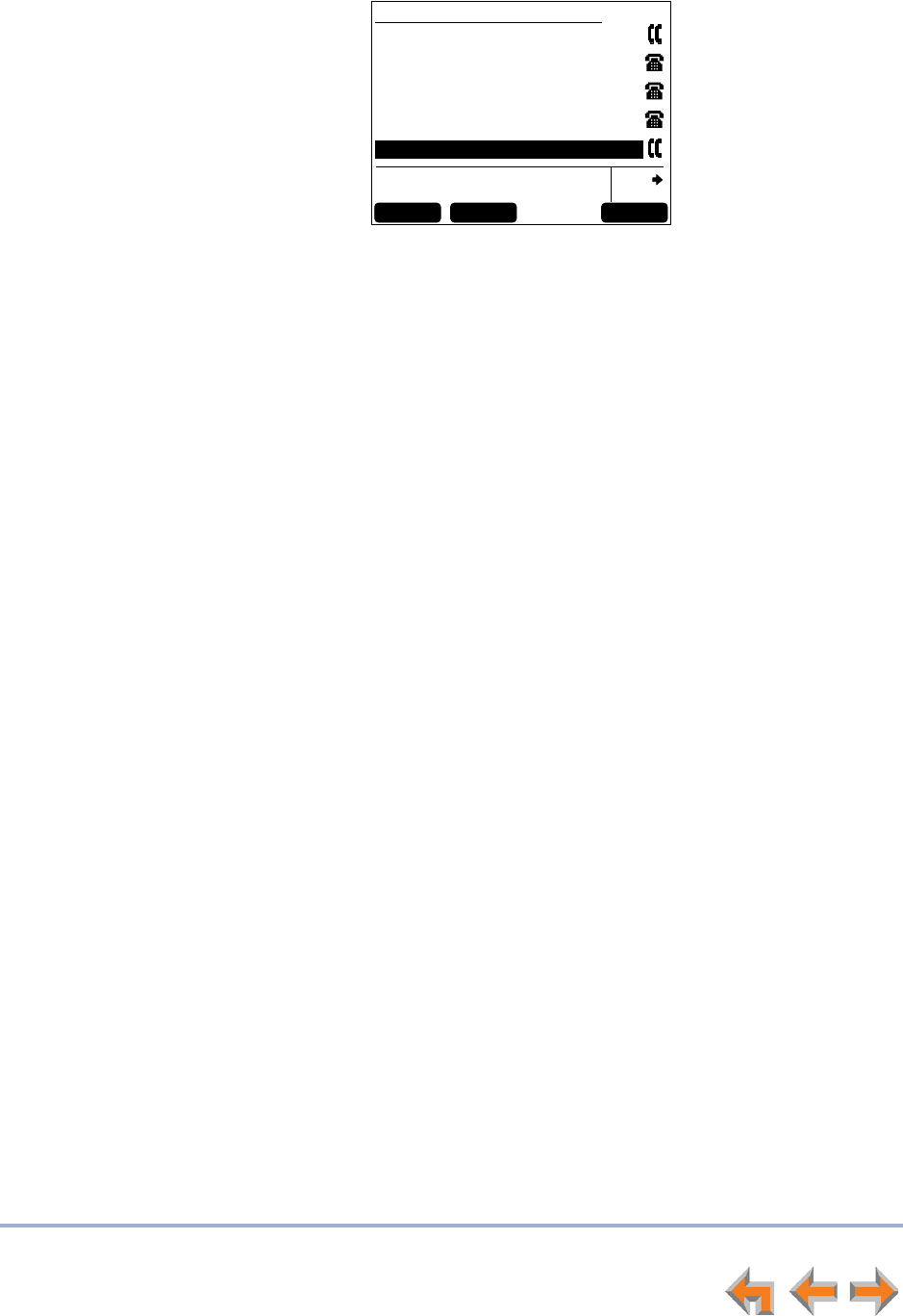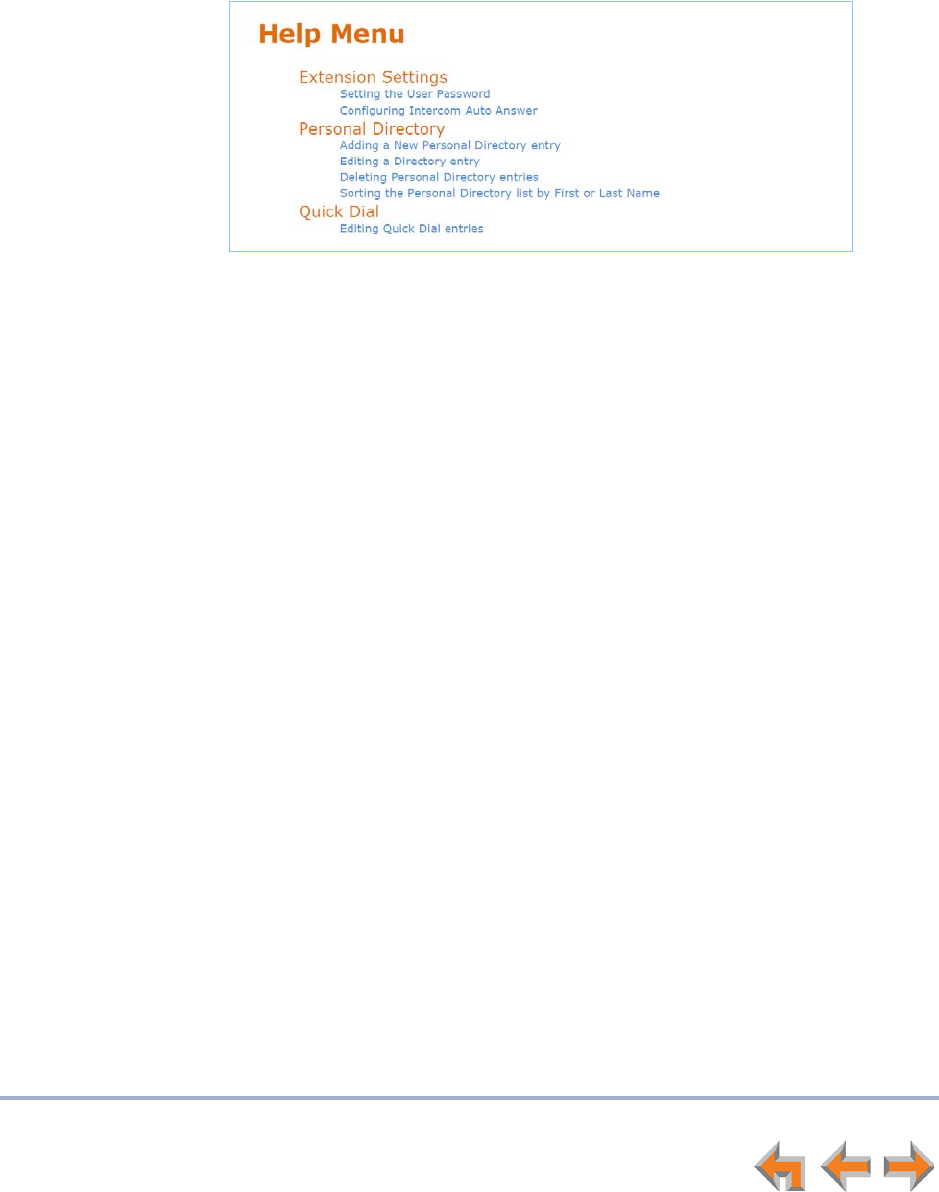VTech Telecommunications 80-9300-00 1.9GHz DECT Cordless Phone - Deskset User Manual SB35031 User Guide
VTech Telecommunications Ltd 1.9GHz DECT Cordless Phone - Deskset SB35031 User Guide
User Manual
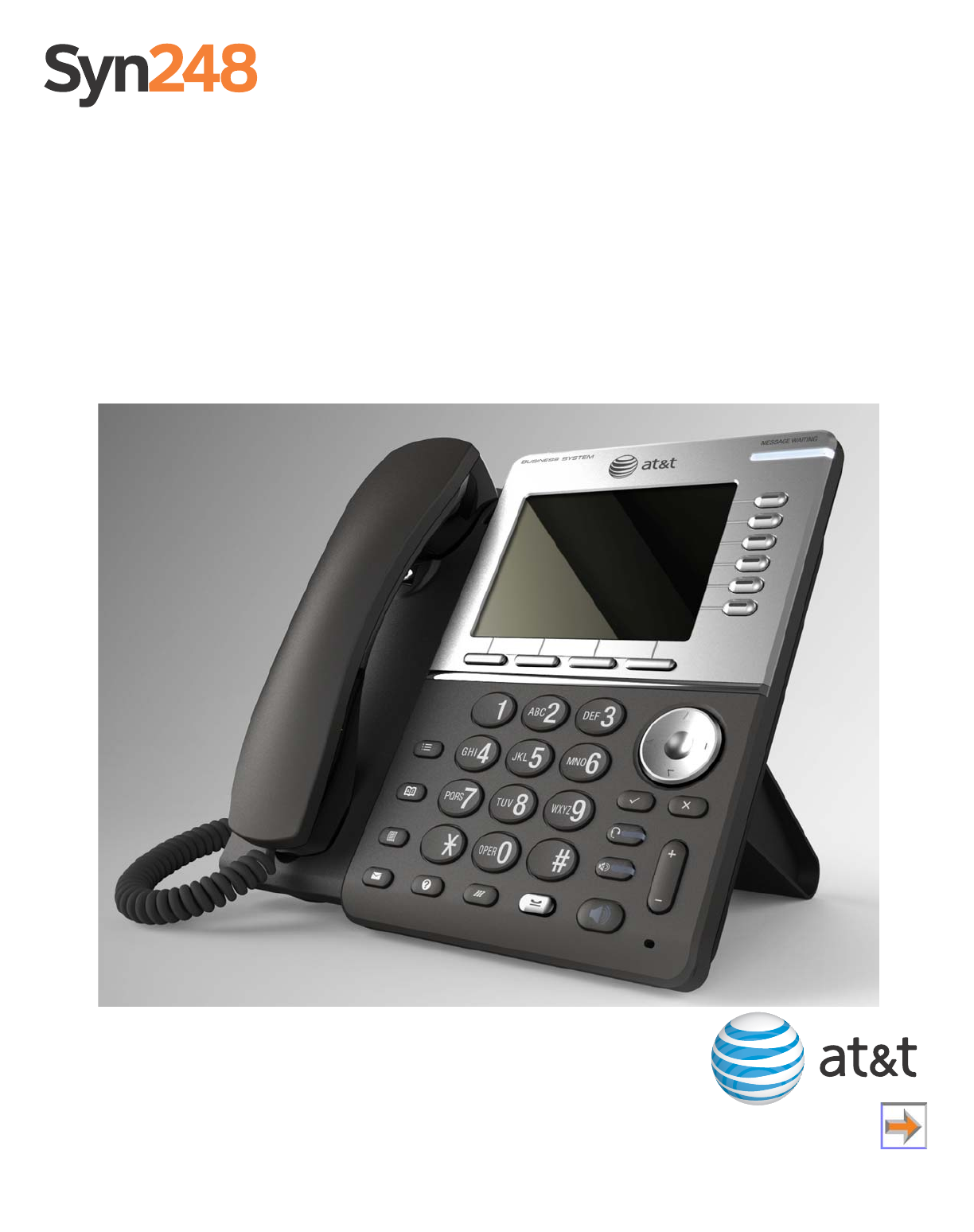
© 2013 Advanced American Telephones. All Rights Reserved. AT&T and the AT&T logo are trademarks of AT&T Intellectual Property licensed to Advanced
American Telephones, San Antonio, TX 78219. Syn248® is a registered trademark of Advanced American Telephones. Issue 1.0 07/13
AT&T SB35031 Deskset
®
User’s Guide
Draft

2
Syn248 SB35031 Deskset User’s Guide
C
ONTENTS
Preface ..............................................................................................................6
Additional Documentation .................................................................................................................................6
Topic Navigation .....................................................................................................................................................7
Text Conventions....................................................................................................................................................7
Overview...........................................................................................................8
Syn248 System Overview...................................................................................................................................9
Deskset Overview..................................................................................................................................9
Deskset Description............................................................................................................................................ 10
Deskset Hard Keys............................................................................................................................. 11
Deskset Idle Screen........................................................................................................................... 12
Setting Your Password...................................................................................................................................... 13
Deskset Soft Keys................................................................................................................................................ 14
Deskset Status Indicators................................................................................................................................ 15
Call Indicators ....................................................................................................................................................... 16
Call Status Icons................................................................................................................................. 17
Call Status LEDs.................................................................................................................................. 17
Deskset Dial-Pad Entry..................................................................................................................................... 18
Using the Speakerphone.................................................................................................................................. 19
Using Help Screens............................................................................................................................................. 19
Outgoing Calls...............................................................................................20
Active Call Screen............................................................................................................................................... 21
Predialing................................................................................................................................................................. 22
Live Dialing ............................................................................................................................................................. 23
Making a Call from a List................................................................................................................................. 24
Making an Intercom Call.................................................................................................................................. 25
Making Calls with the Optional DECT Cordless Headset ................................................................ 26
Incoming Calls ...............................................................................................27
Incoming Call Screen......................................................................................................................................... 28
Incoming Call Indication .................................................................................................................................. 29
Answering a Call.................................................................................................................................................. 30
Ignoring a Call....................................................................................................................................................... 31
Intercom Auto Answering ............................................................................................................................... 32
Draft

3
Syn248 SB35031 Deskset User’s Guide
Call Forward–No Answer................................................................................................................................. 33
About the Auto Attendant .............................................................................................................................. 33
Caller Options ...................................................................................................................................... 33
Call Management ..........................................................................................34
Call Management................................................................................................................................................. 35
Putting a Call on Hold ...................................................................................................................................... 36
Transferring a Call............................................................................................................................................... 37
Making a Conference Call............................................................................................................................... 39
Putting a Conference on Hold..................................................................................................... 40
Ending a Conference ........................................................................................................................ 40
Call Management Using a Headset ............................................................................................................ 42
Accessing Items in Lists ..............................................................................43
About the Extension List.................................................................................................................................. 44
Accessing the Extension List ........................................................................................................ 45
Accessing the Quick-Dial List........................................................................................................................ 46
Editing Quick Dial Entries............................................................................................................... 47
About the Redial List......................................................................................................................................... 48
Accessing the Redial List ............................................................................................................... 49
Deleting Redial Entries .................................................................................................................... 50
Searching the Directory or Extension Lists ............................................................................................ 51
Accessing the Held Calls List ........................................................................................................................ 52
Directory .........................................................................................................53
Using the Directory............................................................................................................................................. 54
Viewing Directory Entries ................................................................................................................................ 55
Creating a New Personal List Entry ........................................................................................................... 57
Editing a Personal List Entry.......................................................................................................................... 58
Storing Directory Entries from the Call Log or Redial List............................................................. 59
Deleting a Personal List Entry ...................................................................................................................... 60
Sorting Directory Entries.................................................................................................................................. 61
Voicemail ........................................................................................................62
Voicemail Overview ............................................................................................................................................ 63
Selecting Your Voicemail Greeting............................................................................................................. 65
Recording a Greeting ........................................................................................................................................ 66
Accessing Your Messages ............................................................................................................................... 67
Deleting Messages.............................................................................................................................................. 70
New Message Status Indications (! Icons)............................................................................................... 71
Accessing Your Voicemail Remotely.......................................................................................................... 72
Call Log ...........................................................................................................75
Using the Call Log .............................................................................................................................................. 76
Reviewing the Call Log List............................................................................................................................ 78
Listening to Voicemail From the Call Log.............................................................................. 79
Storing Call Log Entries.................................................................................................................................... 80
Deleting Call Log Entries................................................................................................................................. 81
Draft

4
Syn248 SB35031 Deskset User’s Guide
Paging..............................................................................................................82
Sending a Page..................................................................................................................................................... 83
Deskset Settings ...........................................................................................84
Deskset Menu........................................................................................................................................................ 85
Deskset Settings .................................................................................................................................................. 86
Display ..................................................................................................................................................... 87
Sounds ..................................................................................................................................................... 87
Preferred Audio................................................................................................................................... 89
User Settings.......................................................................................................................................................... 90
Intercom Auto Answer..................................................................................................................... 92
Voicemail Memory.............................................................................................................................. 93
Name Recording ................................................................................................................................. 94
Registering an Optional Cordless Headset ........................................................................... 96
Deregistering a Cordless Headset ............................................................................................. 97
Cordless Accessory Registration and Deregistration Time-Out.................................. 98
Setting and Changing Your Password ..................................................................................... 99
Admin Settings....................................................................................................................................................100
Deskset Information.........................................................................................................................................101
Auto-Attendant Settings................................................................................................................................102
Using Do Not Disturb (DND) ........................................................................................................................104
Web Interface ............................................................................................. 105
Accessing the Web User Interface (WebUI).........................................................................................106
Error Handling....................................................................................................................................107
Basic Settings......................................................................................................................................................108
Personal Directory ............................................................................................................................................109
Quick-Dial Keys ..................................................................................................................................................111
Help ..........................................................................................................................................................................112
Troubleshooting ......................................................................................... 113
Common Troubleshooting Procedures...................................................................................................114
Display Messages...............................................................................................................................................116
Calls Generally....................................................................................................................................................118
Incoming Calls.....................................................................................................................................................121
Outgoing Calls ....................................................................................................................................................123
Voicemail ...............................................................................................................................................................124
Other Deskset Features..................................................................................................................................126
WebUI......................................................................................................................................................................127
PC/Deskset Interaction ..................................................................................................................................128
Cordless Headset...............................................................................................................................................129
Appendixes.................................................................................................. 133
Appendix A: Deskset Soft Keys...................................................................................................................133
Appendix B: Technical Specifications......................................................................................................135
Appendix C: Maintenance..............................................................................................................................136
Appendix D: Important Safety Instructions...........................................................................................137
Appendix E: GPL License Information .....................................................................................................138
Draft
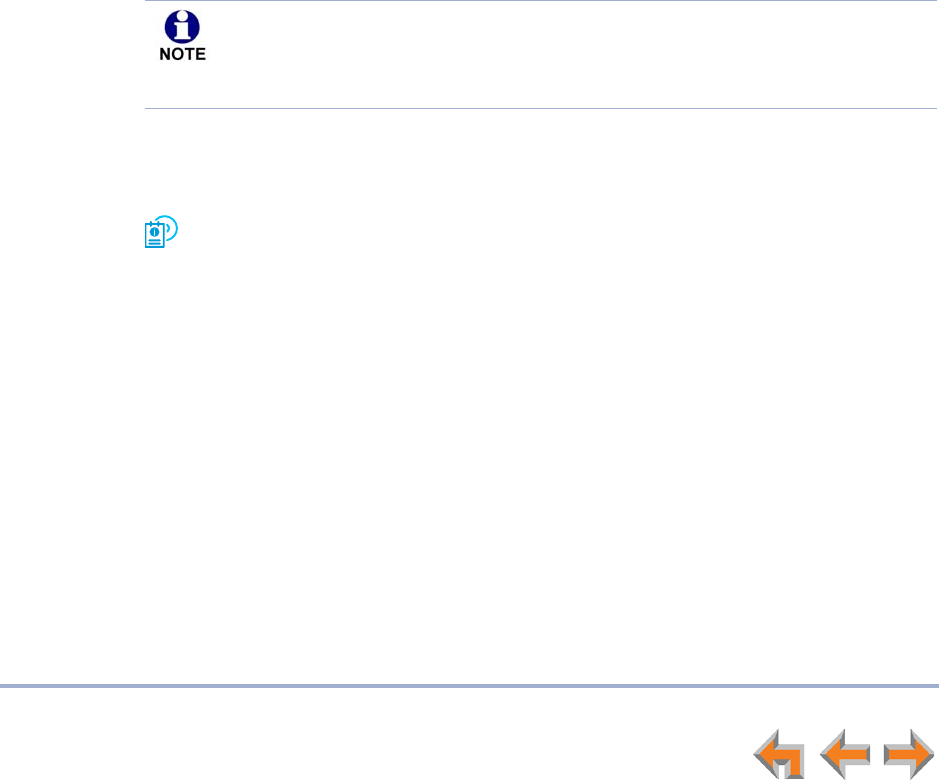
Preface 6
Syn248 SB35031 Deskset User’s Guide Back to Contents
P
REFACE
This User’s Guide provides instructions for using your Syn248 SB35031 telephone with
firmware version 1.3.0 or newer, and its optional accessories. See page 101 for
instructions on checking the firmware version on the Deskset. Although the Quick Start
Guides also include information on using the devices, this guide has information on
setting up the devices and more complete information on feature usage.
Before using this AT&T product, please read “Appendix D: Important Safety Instructions”
on page 137. Please thoroughly read this user’s guide for all the feature operations and
troubleshooting information necessary to operate your new AT&T product.
Additional Documentation
Downloadable copies of all Syn248 documents, including user’s and
administrator’s guides, installation instructions and Quick Start Guides, are
available at www.telephones.att.com/manuals.
For customer service or product information, contact the person who installed
your system. If your installer is unavailable, visit our web site at
www.telephones.att.com/smb or call 1 (888) 386-2006. In Canada,
dial 1 (888) 469-2005.
Draft
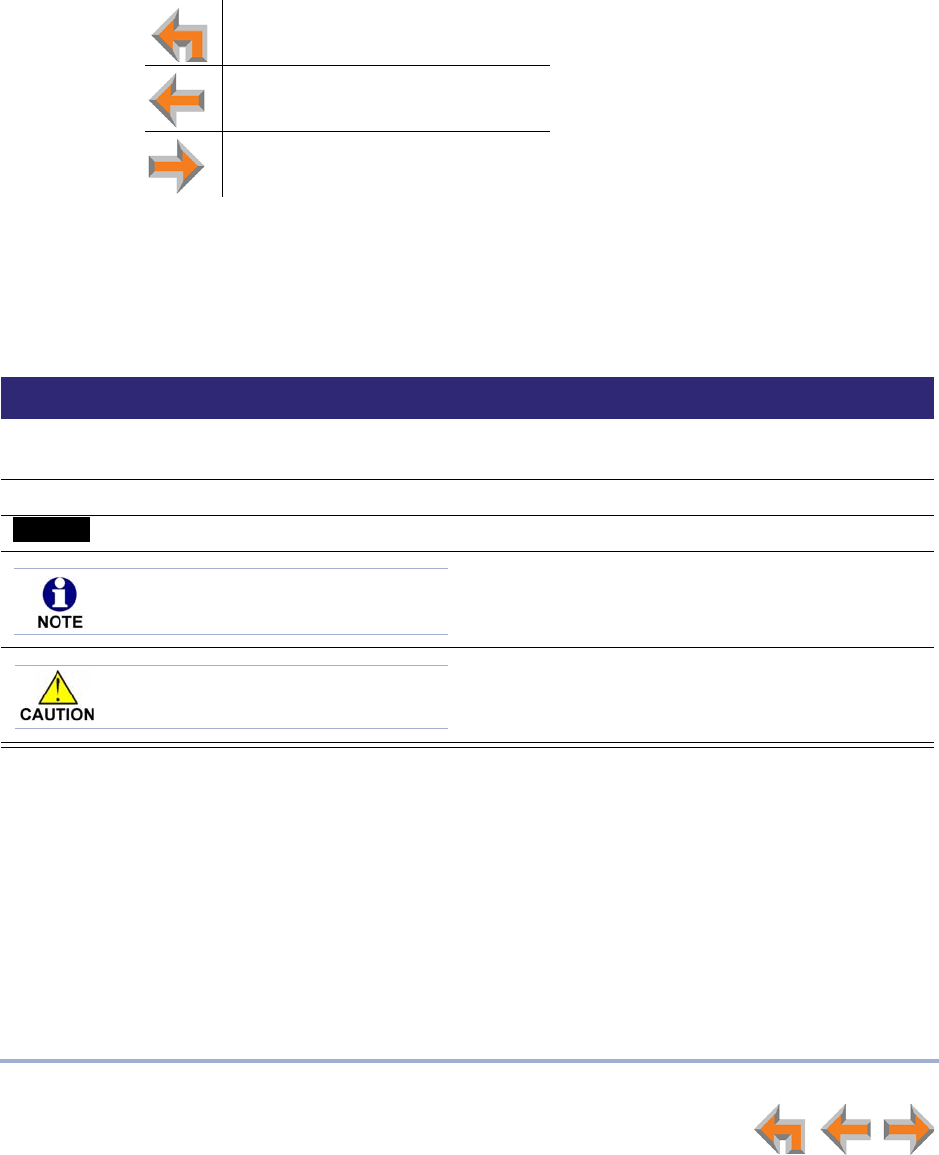
Preface 7
Syn248 SB35031 Deskset User’s Guide Back to Contents
Topic Navigation
This Syn248 SB35031 Deskset User’s Guide features easy navigation between topics and
the ability to return to your original topic.
Text in blue indicates a link to another page in the document. Bold text in blue
indicates a hyperlink to an external web site.
You can also click the arrows at the bottom of the page to move around this document.
Text Conventions
Table 1 lists text formats and describes how they are used in this guide.
Go back to the last page viewed.
Go to the previous page.
Go to the next page.
Table 1. Description of Text Conventions
Text Format Description
Screen Identifies text that appears on a device screen or
a WebUI page in a title, menu, or prompt.
HARD KEY or DIAL-PAD KEY Identifies a hard key, including the dial-pad keys.
Identifies a soft key.
Example of a Note.
Example of a Caution.
CallFwd
Notes provide important information
about a feature or procedure.
A caution means that loss of data or
unintended circumstances may result.
Draft

Overview 8
Syn248 SB35031 Deskset User’s Guide Back to Contents
CHAPTER
1
O
VERVIEW
The Syn248® Business Phone System from AT&T is for businesses that need up to 100
extensions. This system is scalable from 1 to 39 outside lines, so as your business grows,
your phone system can too. The Syn248 Business Phone System provides simplicity
without sacrifice — it's simple to install, manage, and use, without sacrificing any of the
features you need and expect from a business telephone system.
This chapter introduces the SB35031 Deskset and provides an overview of the Syn248
System and the external features of the Deskset.
“Syn248 System Overview” on page 9
“Deskset Description” on page 10
“Setting Your Password” on page 13
“Using the Speakerphone” on page 19
“Using Help Screens” on page 19.
Draft
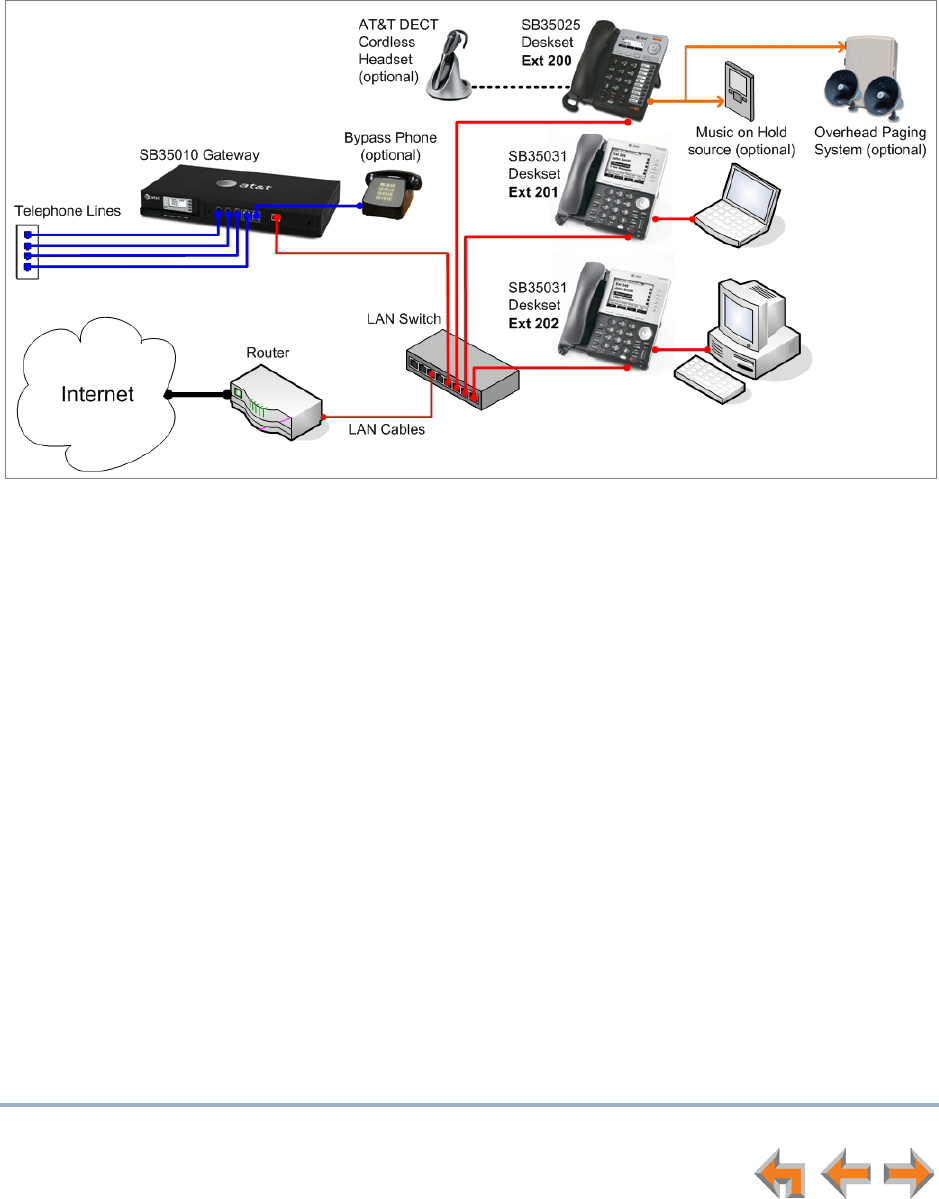
Overview 9
Syn248 SB35031 Deskset User’s Guide Back to Contents
Syn248 System Overview
Your Deskset is part of the Syn248 System. Syn248 differs from conventional telephone
systems in that calls are not coordinated by a central controller. Instead, Syn248 uses a
distributed control system over a Local Area Network (LAN). Figure 1 illustrates a sample
system.
Figure 1. Sample Syn248 System
Deskset Overview
The SB35031 Deskset has a large screen and a built-in DECT 6.0 radio to host an optional
cordless headset.
This User’s Guide describes how to register and use a compatible AT&T DECT cordless
headset with the SB35031 Deskset. See “Registering an Optional Cordless Headset” on
page 96.
blue lines = telephone
red lines = Ethernet
orange lines = audio
Draft
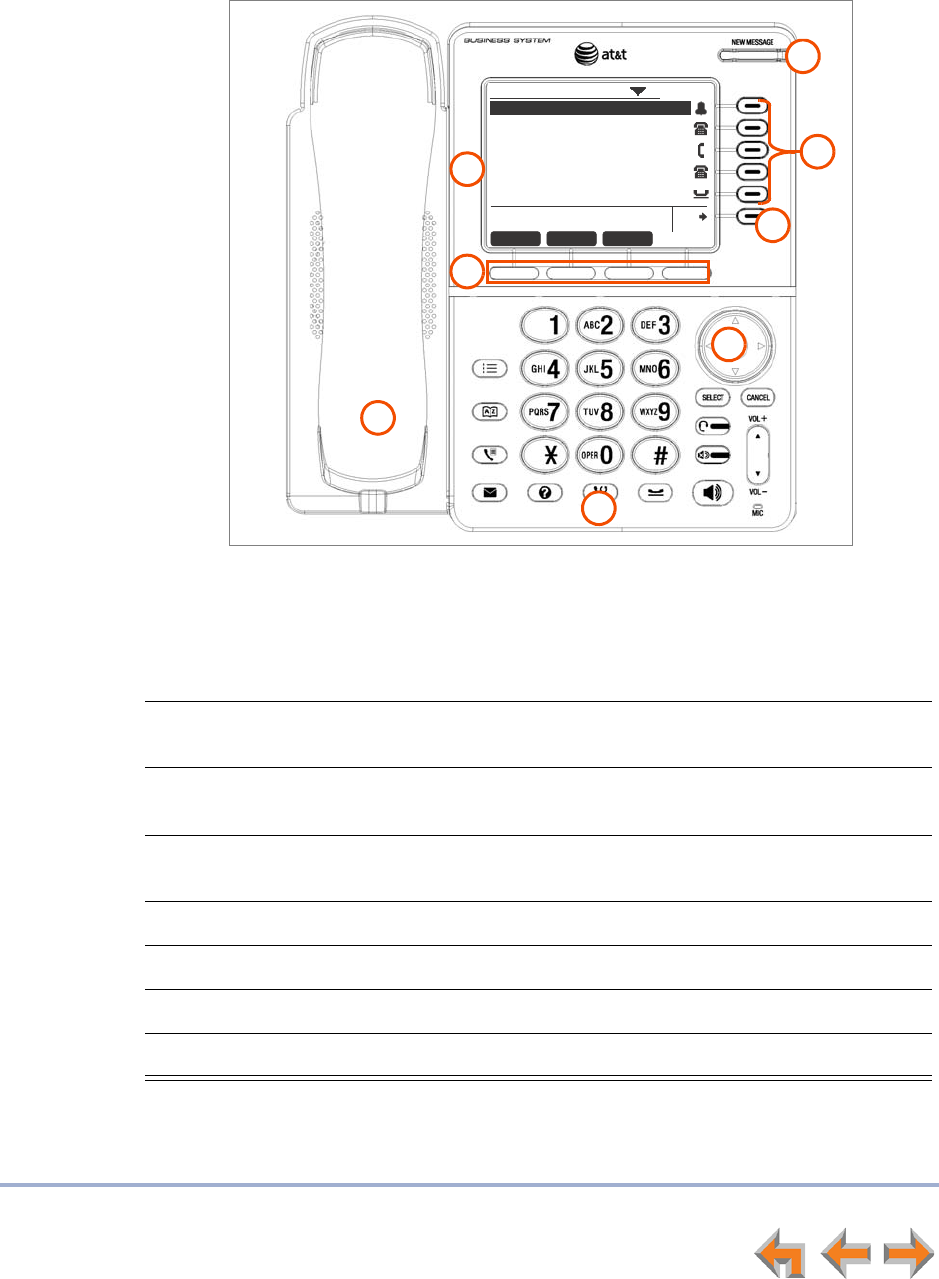
Overview 10
Syn248 SB35031 Deskset User’s Guide Back to Contents
Deskset Description
The key external features of the Deskset are shown in Figure 2 and described in Table 2.
Figure 2. Deskset External Features
Table 2 Deskset External Features
1. Liquid Crystal Display (LCD) Provides controls and information for using the
Deskset.
2. Soft Keys Four keys that produce different actions, depending
on the LCD labels.
3. Corded Handset Traditional 2-conductor wiring (FXO — Foreign
Exchange Office Ports).
4. Hard Keys Fixed-function keys. See “Deskset Hard Keys” on
page 11.
5. Navigation Key Moves the cursor up/down/left/right on the display.
6. Quick Dial Key Provides easy access to frequently dialed numbers.
7. Line Keys Five keys that access active calls and held calls.
8. New Message Indicator Illuminates when you have new messages.
Quick
Dial
FwdVMAnswer Ignore
12:30PM Thu Feb 25 2010
Mary Williams 305-555-0134 0:02
Graham Bell 9-1-800-222-3111 0:13
ABC Account... 503-555-0194 5:32
1
2
3
4
5
6
7
8
Draft
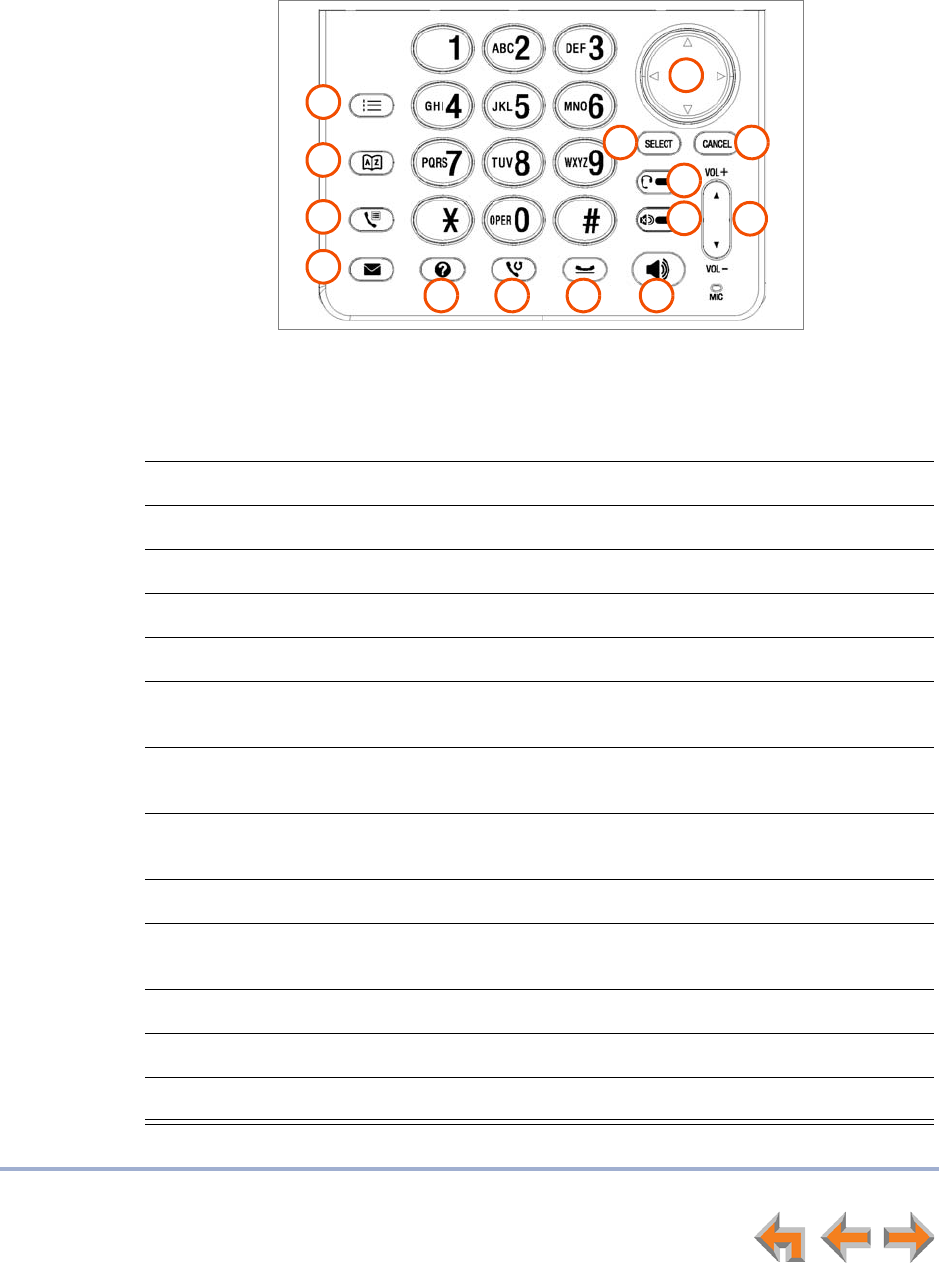
Overview 11
Syn248 SB35031 Deskset User’s Guide Back to Contents
Deskset Hard Keys
The hard keys include the standard telephone dial-pad keys and the function keys shown
in Figure 3 and defined in Table 3.
.
Figure 3. Deskset Function Keys
Table 3 Deskset Function Keys
1. MENU Accesses the Deskset menu.
2. DIRECTORY Accesses the Directory.
3. CALL LOG Accesses the incoming call log.
4. MESSAGES Accesses your voice messages.
5. HELP Displays the Help menu.
6. REDIAL Accesses the Redial list.
7. HOLD Puts current active call on hold. Allows access to other calls and
features while maintaining call connection.
8. SPEAKER During a call, switches voice to and from the speakerphone. Can be
used to answer or start a call, or to hang up.
9. MUTE Mutes the microphone. When on, the other party cannot hear you.
Does not mute the optional cordless headset.
10. VOL+/VOL– Increases or decreases the ringer and voice volume.
11. HEADSET Routes audio to a headset, if a headset is connected or registered.
Can be used to go off hook.
12. CANCEL
Cancels the most recent operation and returns to previous function.
13. SELECT
Usually selects a highlighted option. Dials highlighted phone numbers.
14. Navigation Moves the cursor up (), down (), left (), right () on the display.
1
2
3
4
5 6 7 8
910
11
1213
14
Draft
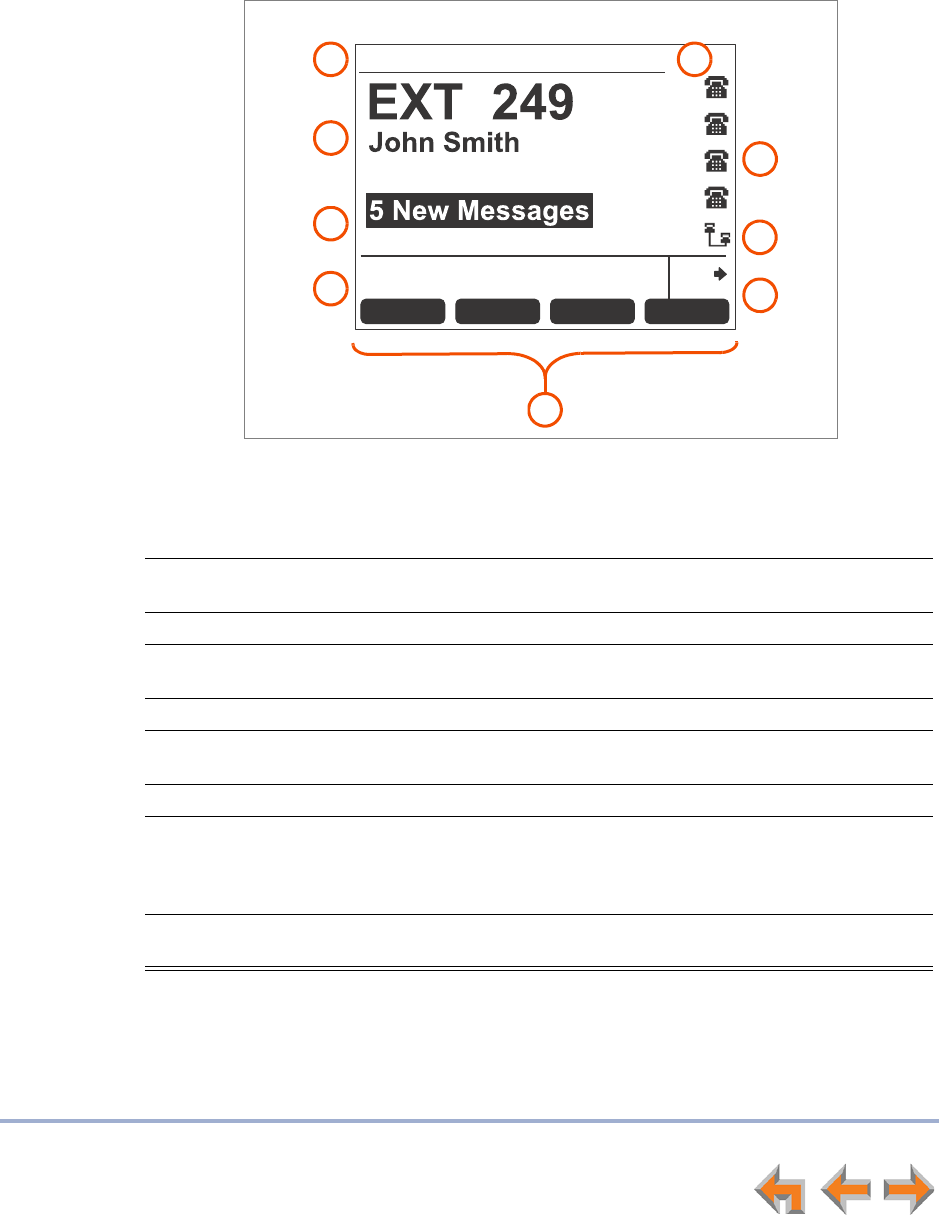
Overview 12
Syn248 SB35031 Deskset User’s Guide Back to Contents
Deskset Idle Screen
Figure 4 identifies the basic elements of the Idle screen. Table 4 describes the call
functions displayed on the Idle Screen. The Idle screen appears when the system is first
turned on and when there is no call activity. The display is backlit when you are using it,
but the backlight turns off 30 seconds after the most recent button press.
Figure 4. Idle Screen
Table 4 Idle Screen
1. Time and Date
2. Extension Number and
Name
Your extension number and name appear on the Idle
screen.
3. New Messages Press SELECT to view the list of new voice messages.
4. Help Help messages appear in this area, depending on
Deskset activity.
5. Soft Key Labels See “Deskset Soft Keys” on page 14.
6. Quick Dial When the nearby key is pressed, the line icons or line
names change to display up to six quick-dial numbers.
7. Intercom Icon Indicates the Intercom line for internal calls.
8. Call Status Icons Show whether there is an active, conference, or held
call, or whether there is a line available for making a call.
Your system administrator can enter line names that
replace these Idle screen icons.
9. Status Indicators Status indicators appear in this space. See “Deskset
Status Indicators” on page 15.
Quick
Dial
ExtListDNDHoldList Page
12:30PM Thu Feb 25 2010
1
2
3
4
5
6
8
9
7
Draft

Overview 13
Syn248 SB35031 Deskset User’s Guide Back to Contents
Each phone line connected to your system corresponds to a Line key on the Deskset as
shown in Figure 2 on page 10. The Syn248 system can have up to 8 lines connected. The
system administrator can configure your Deskset with up to four lines on which you can
make and receive external calls. One key is reserved for “Intercom” calls to other Syn248
Deskset extensions.
Other Desksets in the system share these lines and display the line status. In general,
incoming calls on a line ring at all Desksets that share that line. However, your system
administrator can set your Deskset to ignore calls on a selected line. Your Deskset will
not ring for calls on the ignored line, but you can still view call activity for that line. The
Line key LED indicates whether a line is ringing, busy, or on hold.
The Line keys are used for receiving and making calls to external numbers. To call
another extension in your office, you must use an Intercom key. By default, the Intercom
key is the fifth key, but your system administrator can configure additional Intercom keys.
Setting Your Password
You can protect your Deskset by setting a password that prevents other users from
accessing your User Settings and messages. If you create a password, you will need to
enter it before accessing User Settings, messages, and the WebUI.
For more information, see “Setting and Changing Your Password” on page 99.
Draft
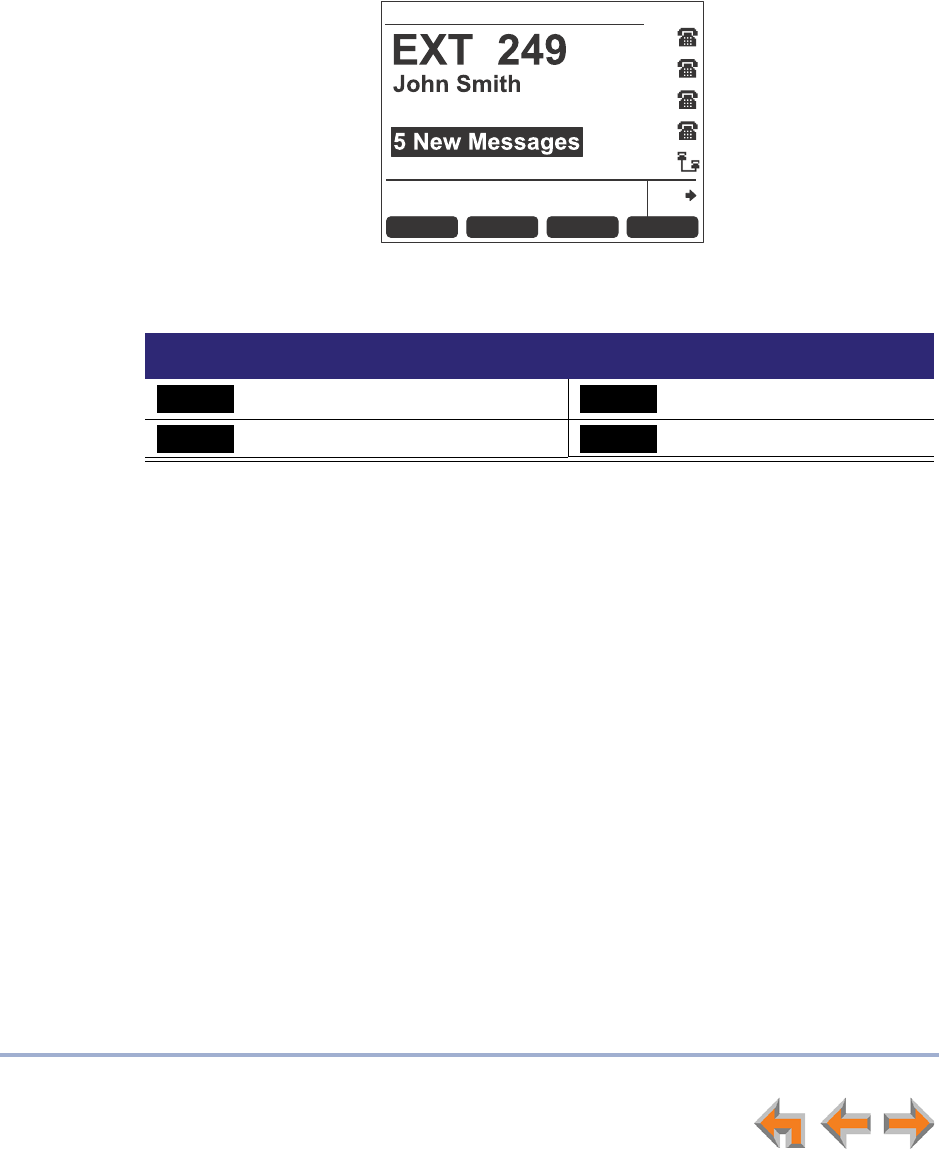
Overview 14
Syn248 SB35031 Deskset User’s Guide Back to Contents
Deskset Soft Keys
The Deskset provides soft keys as illustrated in Figure 5. The soft key labels change
according to the current task. For example, if you are holding a call, the key labels
displayed are different from those displayed if you are making a call. See “Appendix A:
Deskset Soft Keys” on page 133 for an alphabetical list of the labels that appear above
the soft keys.
Table 5 describes the Deskset Idle screen soft keys, as shown in Figure 5.
Figure 5. Deskset Idle Screen
Table 5 Idle Screen Soft Keys
Key Description Key Description
Accesses Held Calls list. Pages internal extensions.
Turns Do Not Disturb on or off. Accesses Extension list.
Quick
Dial
ExtListDNDHoldList Page
12:30PM Thu Feb 25 2010
HoldList
Page
DND
ExtList
Draft
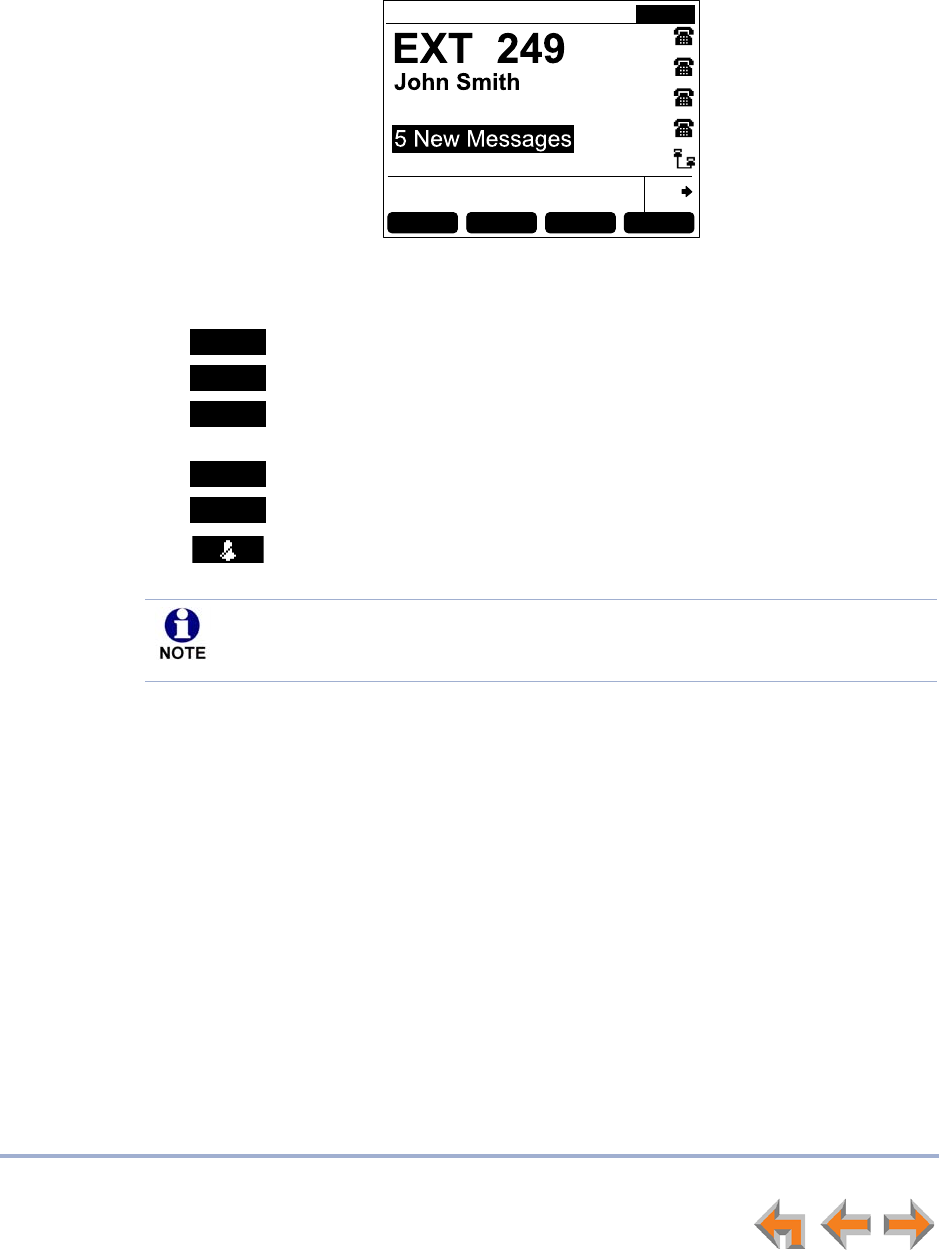
Overview 15
Syn248 SB35031 Deskset User’s Guide Back to Contents
Deskset Status Indicators
Status indicators appear in the upper right-hand corner of the Deskset display, as shown
in Figure 6.
Figure 6. Example of DND On
Status messages include:
Do Not Disturb is on.
Intercom Call Forward All is on.
Intercom Auto Answer is on. See “Intercom Auto Answering” on
page 32.
Voicemail memory is full.
Less than five minutes of voicemail recording time is available.
Ringer volume set to zero. The ringer is silent.
Quick
Dial
ExtListDNDHoldList Page
12:30PM Thu Feb 25 2010 DND ON
DND ON
INT ON
ANS ON
VM Full
< 5 Min
The silent ringer and the voicemail indicators alternate with each other and the
other status indications. When Do Not Disturb is on, there is no indication for
Auto Answer.
Draft
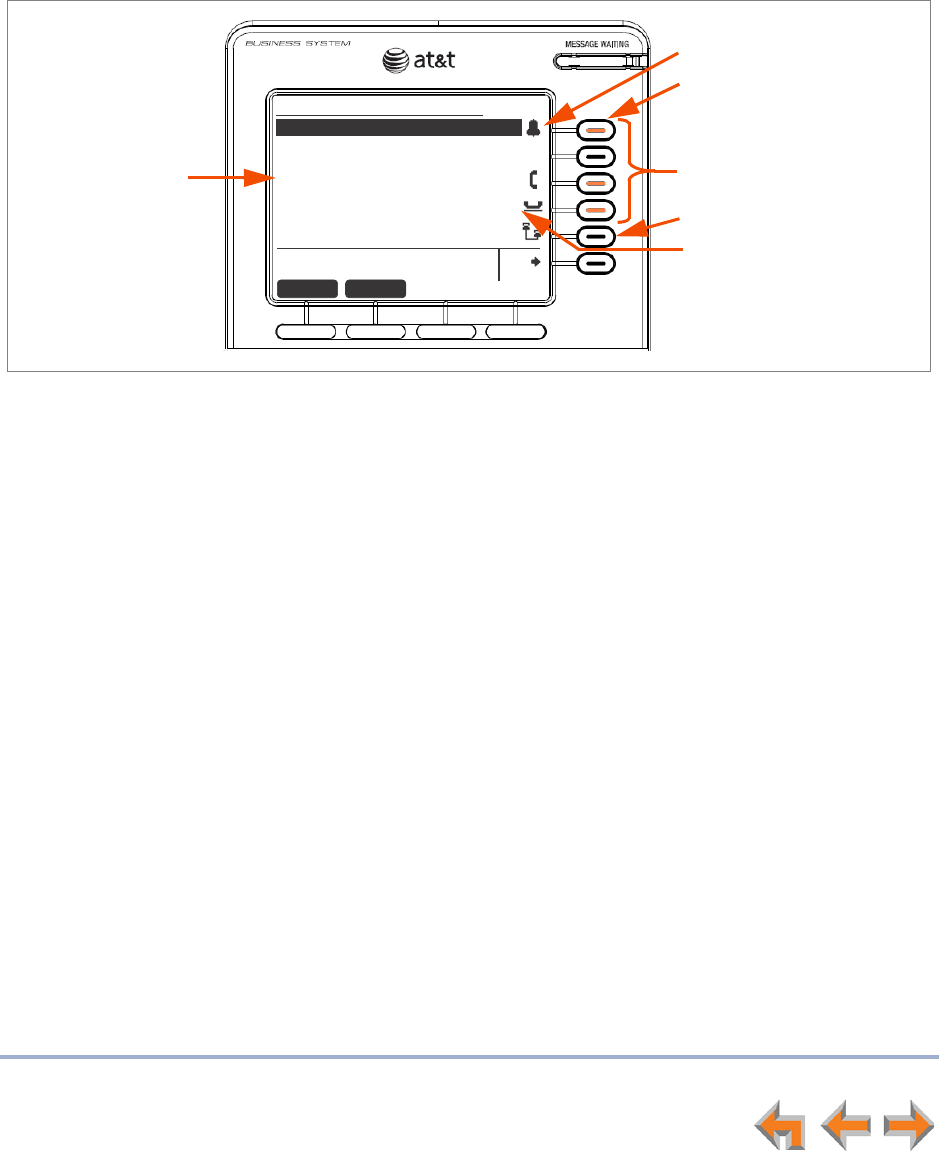
Overview 16
Syn248 SB35031 Deskset User’s Guide Back to Contents
Call Indicators
The Line keys, as shown in Figure 7, allow you to manage your calls. The Deskset presents
call status information next to the Line keys at the side of the display. When there is an
incoming call, the Line key LED flashes. Icons on the screen identify the status of each
call. When there are several lines active, press Line keys to access calls. The soft keys
change accordingly. See “Call Status Icons” on page 17 for a complete description of the
available icons.
Figure 7. Sample Active Call Screen
Quick
Dial
Answer Ignore
12:30PM Thu Feb 25 2010
Mary Williams 305-555-0134 0:02
Graham Bell 232-555-0176 0:13
Charlie John... 503-555-0194 5:32
Line 2
Call Information Line Keys
Intercom Key
Line Key LED
Call Status Icons
Timer
Displays the duration of
the current call status,
such as how long the call
has been held.
Draft
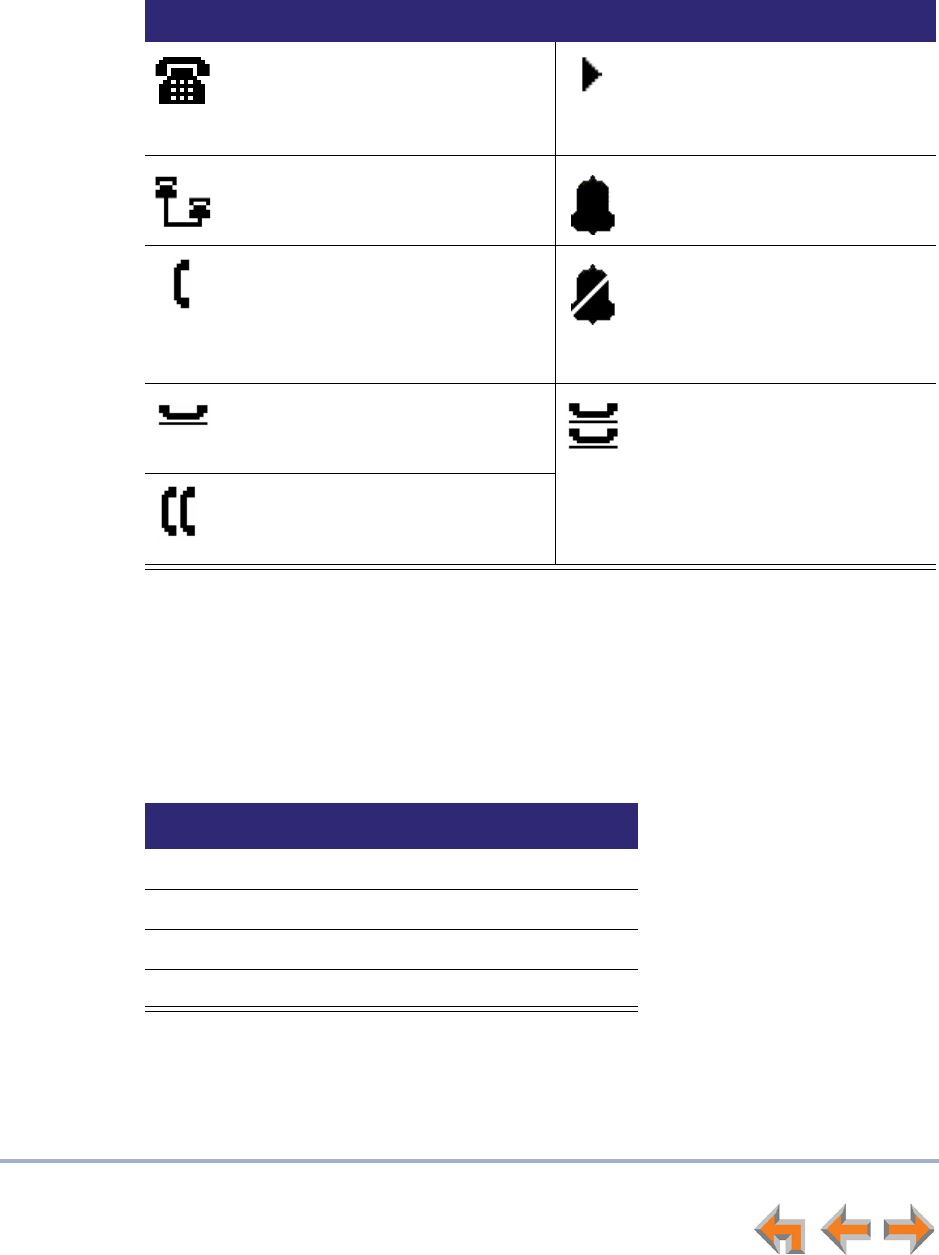
Overview 17
Syn248 SB35031 Deskset User’s Guide Back to Contents
Call Status Icons
Table 6 shows and describes the call status icons.
Call Status LEDs
The Call Status LED flash patterns indicate call status as described in Table 7. All
Desksets that share lines also display the same LED activity. For example, if someone puts
a call on line 3 on hold, the Line key for line 3 flashes slowly on all the Desksets that
share line 3.
Table 6 Deskset Call Status Icons
Icon Status Icon Status
Available
Indicates an available line (if the
system administrator has not
named your lines).
Incoming Call
Indicates an incoming call
when there are no other calls.
Intercom
Indicates an available Intercom
line for internal calls.
Ringing
Indicates an incoming call.
Off Hook
Indicates that you have lifted the
corded handset, pressed SPEAKER
or HEADSET, or you are on a
phone call.
Silenced Ring
Indicates an ignored incoming
call.
On Hold
Indicates you have put the call on
hold.
Conference On Hold
Indicates you have put a
conference call on hold.
Conference
Indicates a conference call.
Table 7 Deskset Call Status LED Activity
LED Activity Description
Off No Call
Steady On Active Call
Fast Flash Ringing Call
Slow Flash Held Call
Draft
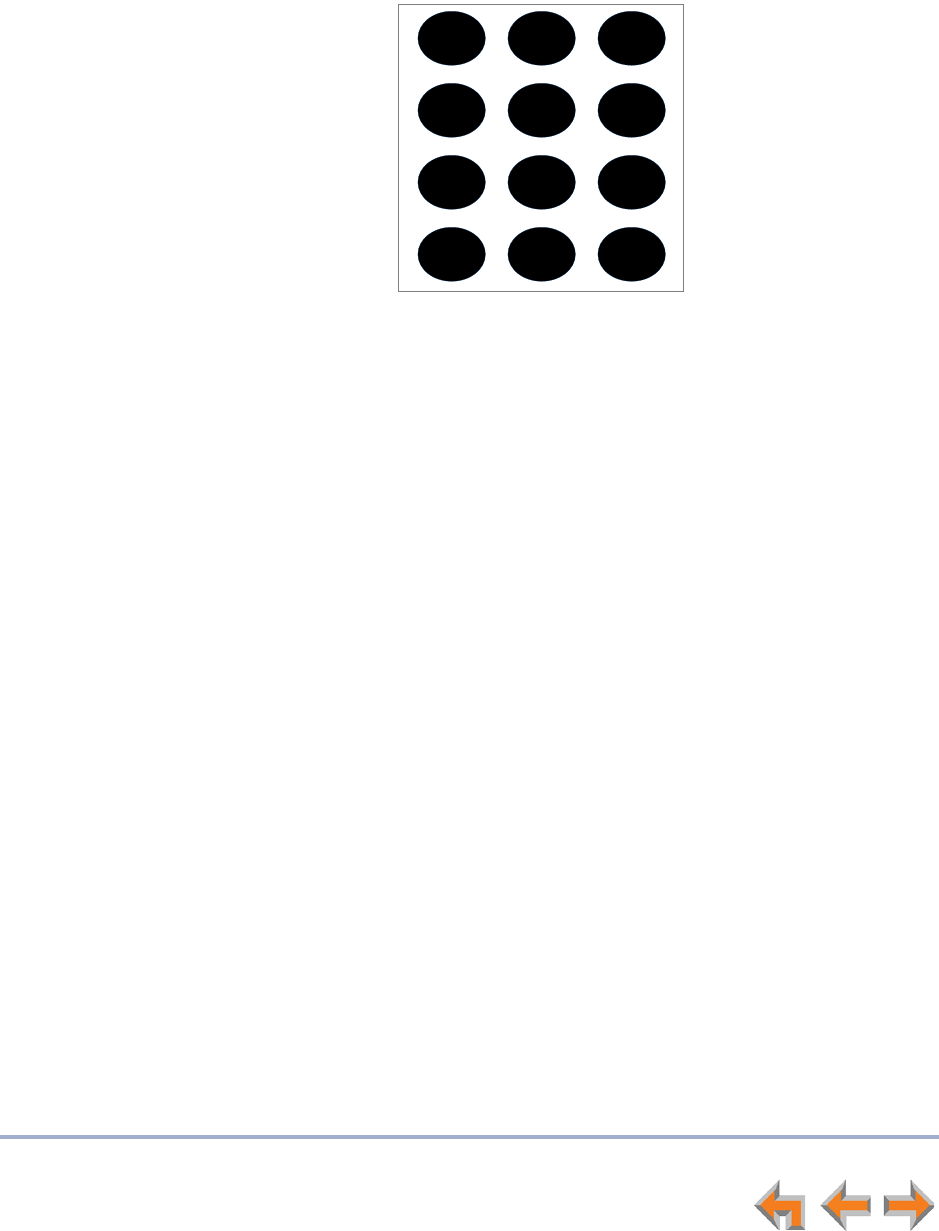
Overview 18
Syn248 SB35031 Deskset User’s Guide Back to Contents
Deskset Dial-Pad Entry
Use the dial-pad keys to enter letters and numbers into a text field. Keys 2, 3, 4, 5, 6,
and 8 have three assigned letters, while keys 7 and 9 have four assigned letters, as
shown in Figure 8.
Figure 8. Dial Pad
Pressing 1 once enters a space; pressing it twice enters a 1.
Pressing a key numbered 2 to 9 enters characters in the following order:
1. Upper-case letters.
2. Key number.
3. Lower-case letters.
For example, pressing 2 cycles through A, B, C, 2, a, b, c. Pressing 7 cycles through P, Q,
R, S, 7, p, q, r, s.
For text fields that accept only numbers, pressing a key once enters a number.
You can enter special characters by pressing the # and * keys.
Press # to cycle through the special characters # & ‘ , – . @ (in that order).
Press * to cycle through the special characters ! ( ) * + ? (in that order).
12 3
45 6
789
0
ABC DEF
GHI JKL MNO
PQRS TUV WXYZ
OPER
#
*
Draft
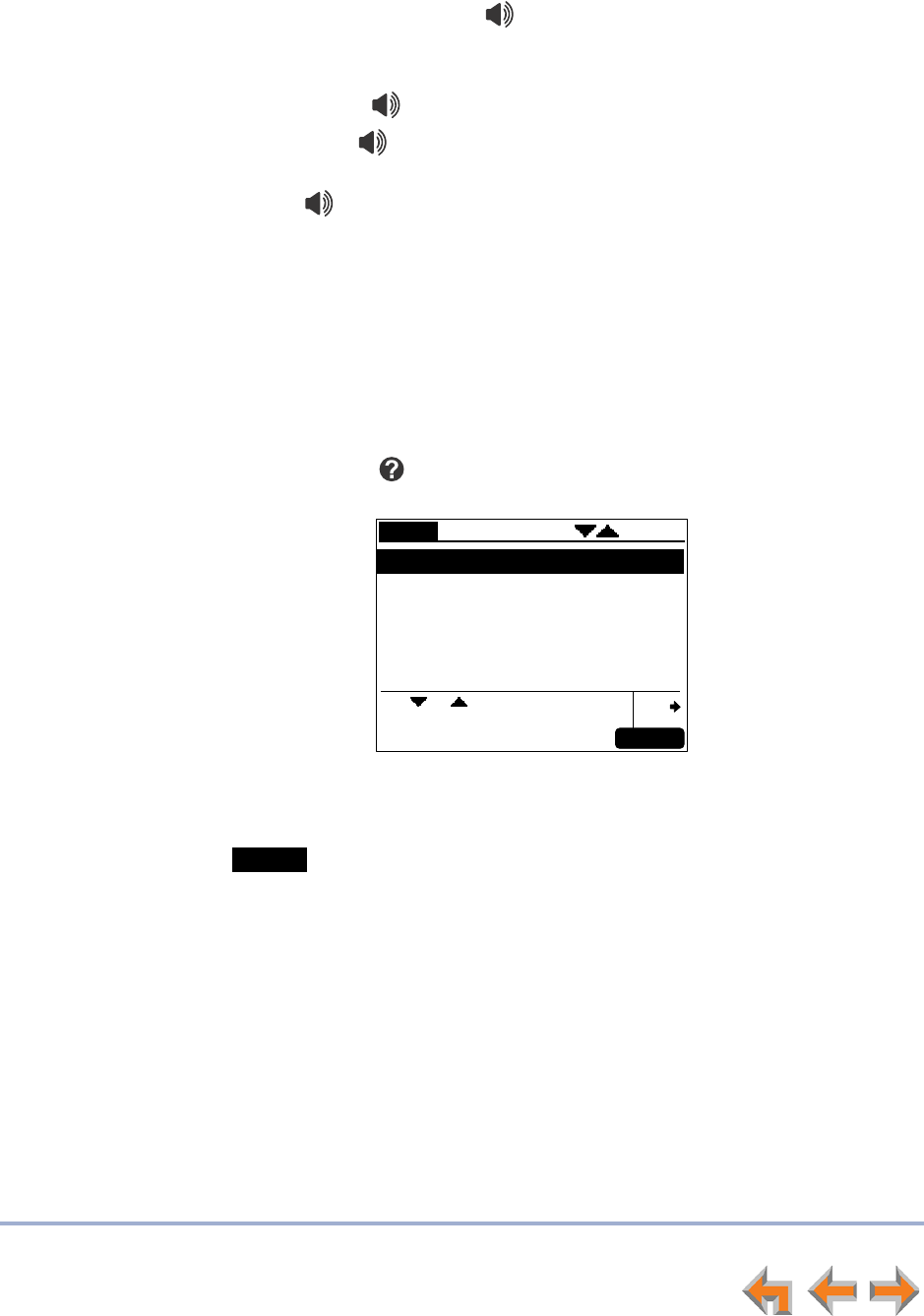
Overview 19
Syn248 SB35031 Deskset User’s Guide Back to Contents
Using the Speakerphone
When the speakerphone is active, the (SPEAKER) key is lit.
To use the speakerphone:
1. To make a call, press . The key lights up and you hear a dial tone. Begin dialing.
2. To end a call, press . The key light goes out.
During an active call, if you are using the corded handset or any corded or cordless
headset, pressing switches audio to the speakerphone.
Using Help Screens
In addition to the brief Help messages at the bottom of each screen, you can view more
Help on the Deskset screen. These are very brief descriptions of how to use some of the
features.
To use the Deskset Help:
1. On the Deskset, press (HELP). The Help menu appears.
2. Press or to highlight the desired feature.
3. Press SELECT.
4. Press to exit the Help.
HELP
1. Idle Screen Information
3. Directory
2. Voicemail
Use or to scroll then press
SELECT or press 1-9.
Quick
Dial
4. Call Log and Redial List
Exit
5. Making an external call
6. Making an internal call
7. Call Management
Exit
Draft

Outgoing Calls 20
Syn248 SB35031 Deskset User’s Guide Back to Contents
CHAPTER
2
O
UTGOING
C
ALLS
The Deskset provides several methods for making a call. You can also use an optional
cordless headset to complete a call that you dialed on the Deskset.
If you are in Idle mode or have calls on hold, you can predial a phone number and then
go off hook to call the number. You can make a call at any time by choosing an off-hook
method, then dialing a number. This is referred to as live dialing. You can also predial or
live dial using phone numbers from lists, such as the Directory, Call Log, Redial, Quick
Dial, and Messages.
You can dial the extension for the system operator by dialing 0 (zero) on an Intercom line.
“Active Call Screen” on page 21
“Predialing” on page 22
“Live Dialing” on page 23
“Making a Call from a List” on page 24
“Making an Intercom Call” on page 25
“Making Calls with the Optional DECT Cordless Headset” on page 26.
Draft
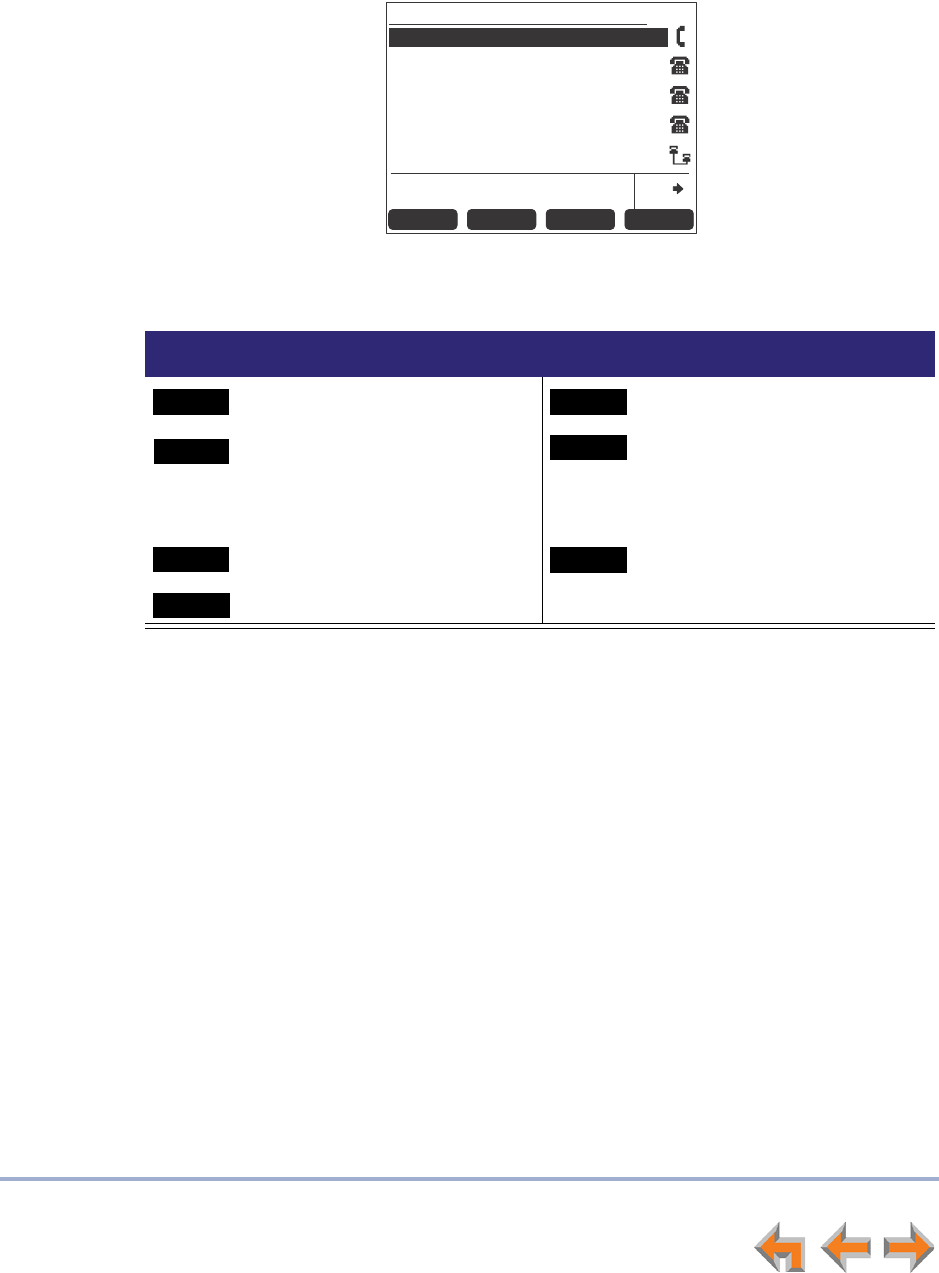
Outgoing Calls 21
Syn248 SB35031 Deskset User’s Guide Back to Contents
Active Call Screen
The active call screen, as shown in Figure 9, appears while you are on a call.
Figure 9. Active Call Screen
Table 8. Active Call Screen Description
Key Description Key Description
Begins transfer of a call. Begins a conference call.
External calls only —
Simulates a hook flash, which
signals your telephone service
provider to activate a feature.
Moves to the next set of soft
keys.
More 1/2
indicates that
you are on page one of three.
Displays the Held Calls list.
Pages all extensions.
Turns Do Not Disturb on or off.
12:30PM Thu Feb 25 2010
Graham Bell 232-555-0176 2:51
Transfer Conf
Quick
Dial
Flash More 1/2
Transfer
Conf
Flash
More
HoldList
Page
DND
Draft
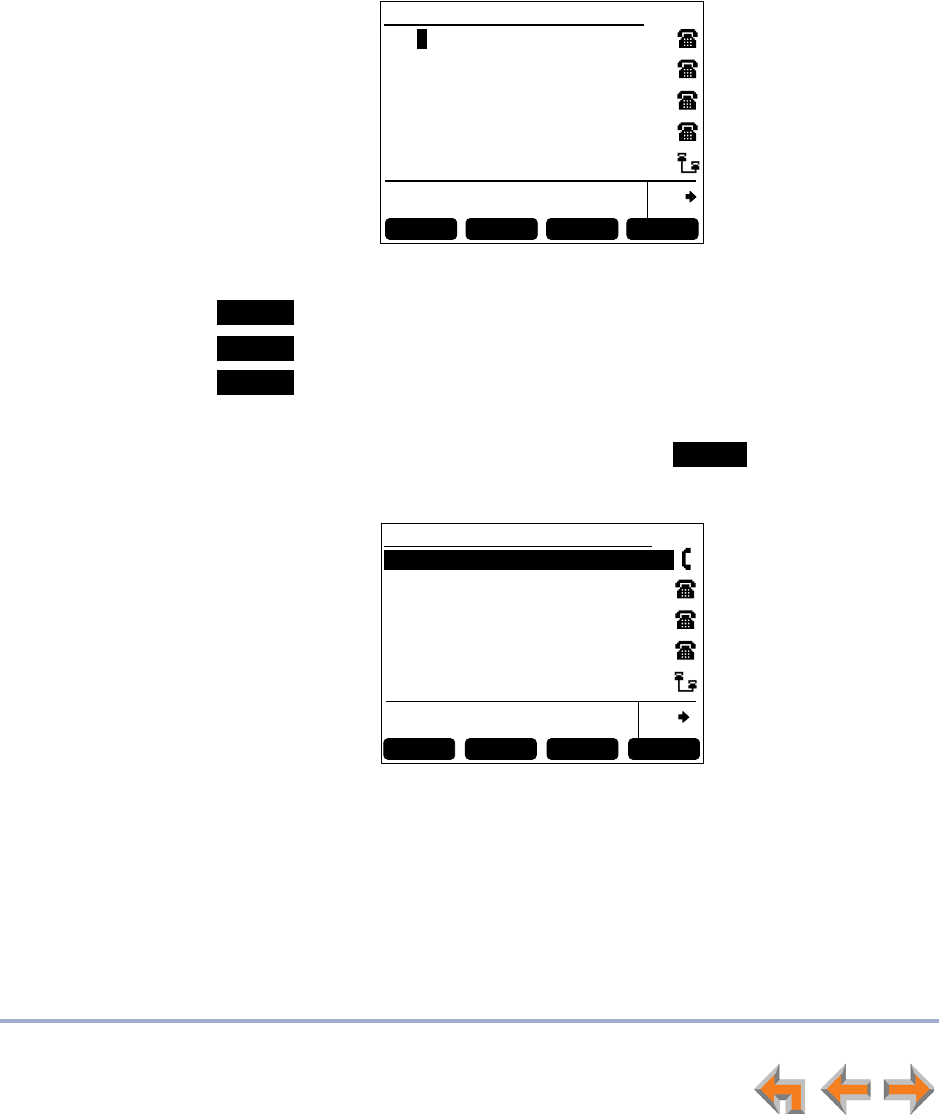
Outgoing Calls 22
Syn248 SB35031 Deskset User’s Guide Back to Contents
Predialing
Predial is only available when the Deskset is idle or when all calls are on hold. In Predial
mode, there is no dial tone. You can only predial one phone number at a time. To begin
Predial, press a dial-pad key.
To make a Predial call:
1. Enter an extension number or phone number (for example: 232-555-0176) using the
dial pad. The predial screen appears.
Before you call the number, you can press:
to store the number in your Personal list.
to delete the last digit entered.
to insert a two-second pause into the phone number.
CANCEL to cancel predial.
2. Lift the corded handset, or press SPEAKER, HEADSET, , or a Line key to go
off hook and call the number.
Quick
Dial
12:30PM Thu Feb 25 2010
To call, press a Line Appearance key or
an Intercom key (for internal no.).
PauseCallStore Backspc
232
Store
Backspc
Pause
Call
12:30PM Thu Feb 25 2010
Graham Bell 232-555-0176 2:51
Transfer Conf
Quick
Dial
Flash More 1/2
Draft
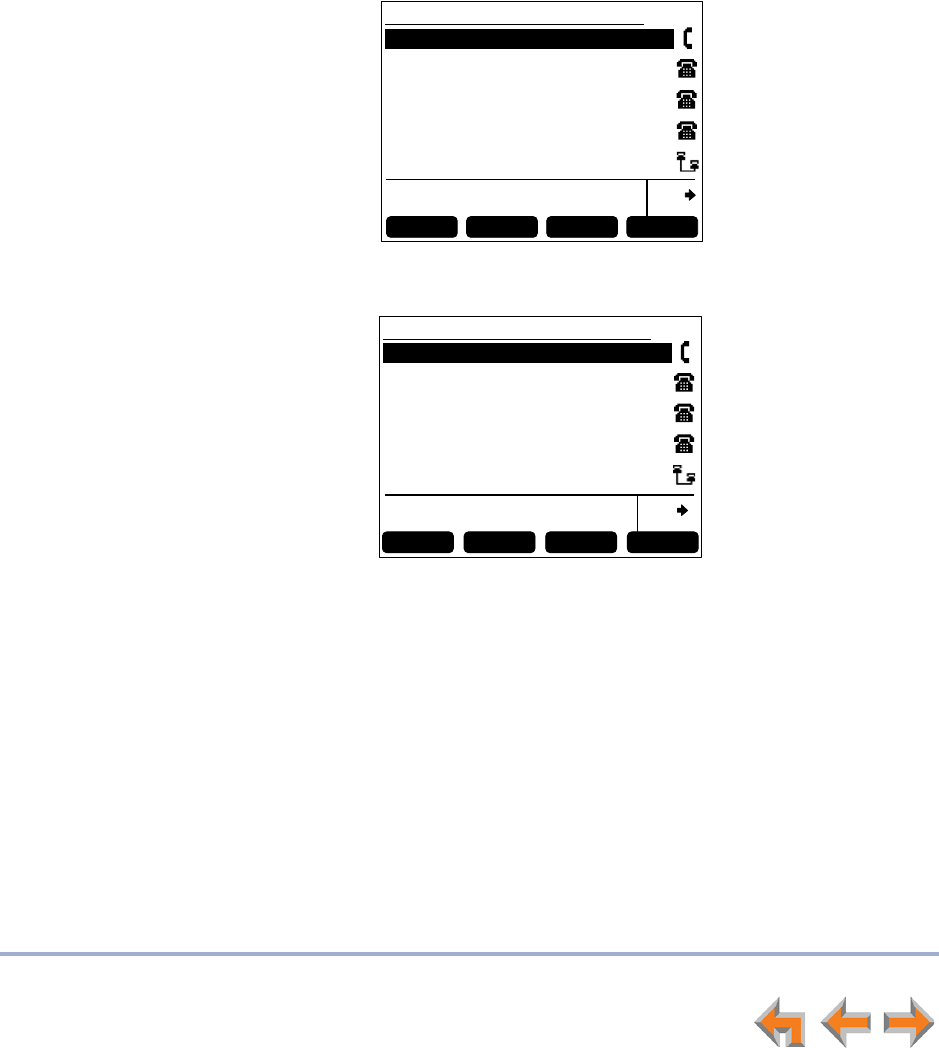
Outgoing Calls 23
Syn248 SB35031 Deskset User’s Guide Back to Contents
Live Dialing
You can make a call by going off hook, then dialing a phone number.
To dial a live number:
1. Do one of the following to go off hook (to hear the dial tone) from Idle mode:
Lift the corded handset.
Press SPEAKER or HEADSET.
Press an available Line key.
2. Enter the extension number or phone number you want to dial, as shown below.
The active call screen appears.
Quick
Dial
12:30PM Thu Feb 25 2010
FlashTransfer Conf
232 0:02
More 1/2
12:30PM Thu Feb 25 2010
Graham Bell 232-555-0176 2:51
Transfer Conf
Quick
Dial
Flash More 1/2
Draft
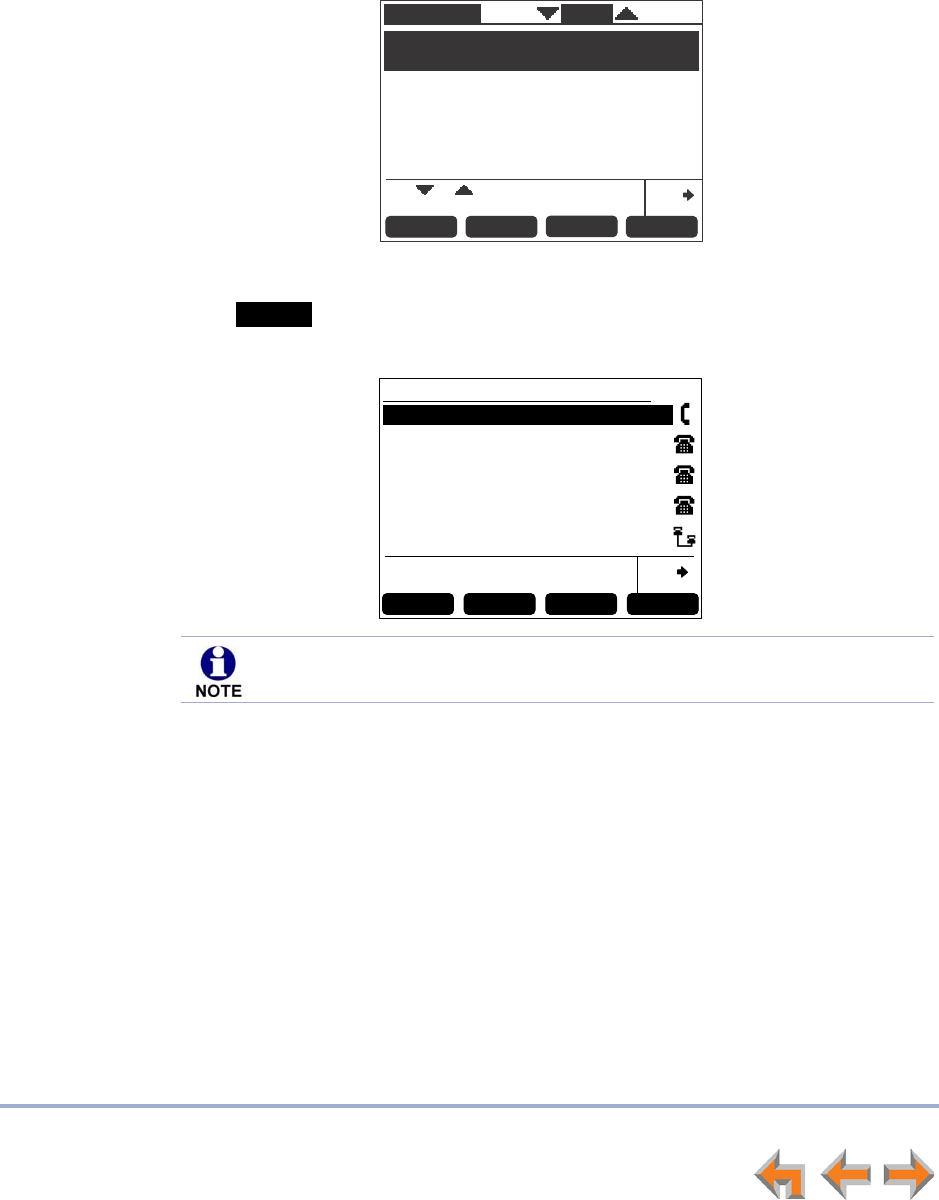
Outgoing Calls 24
Syn248 SB35031 Deskset User’s Guide Back to Contents
Making a Call from a List
To make a call from a list:
1. Access the desired list entry. For example, press DIRECTORY. The Directory screen
appears. See “Accessing Items in Lists” on page 43.
2. Press or until you highlight the desired entry.
3. Press or SELECT to dial the highlighted number. The Deskset dials the
number and the active call screen appears.
Directory
Graham Bell Personal
232-555-0176
Heather Phillips 732-555-7318
Ian Stevens 604-555-0184
John Lee 503-555-0194
John Smith 249
Karl Anders 204
Call
13/48
LastNme
Quick
Dial
New More 1/3
Use or to scroll or use dial pad
for quick search.
Call
12:30PM Thu Feb 25 2010
Graham Bell 232-555-0176 2:51
Transfer Conf
Quick
Dial
Flash More 1/2
Phone numbers are dialed as they appear in the lists.
Draft
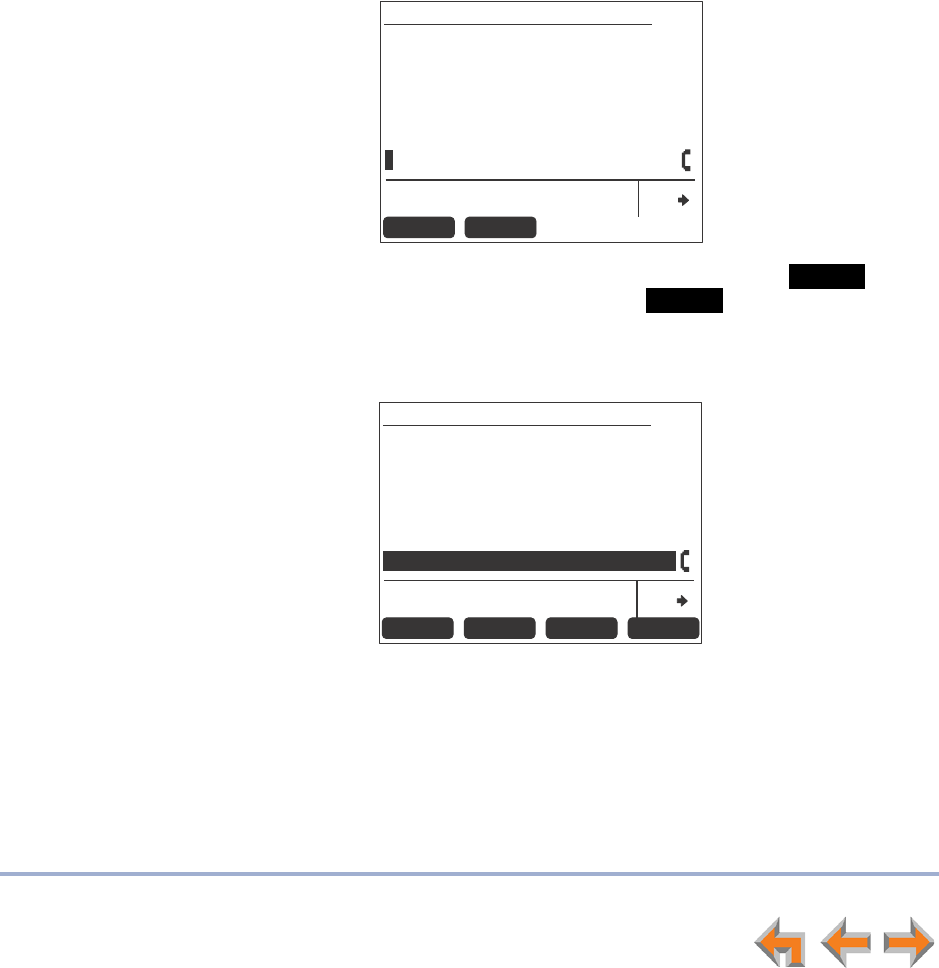
Outgoing Calls 25
Syn248 SB35031 Deskset User’s Guide Back to Contents
Making an Intercom Call
To make an internal (extension-to-extension) call, you must press the INTERCOM key as
shown in Figure 7 on page 16. By default, key 5 is the Intercom key, but your system
administrator can configure additional Intercom keys to give you more Intercom lines.
By default, your Deskset uses an outside line any time you go off hook by lifting the
handset, pressing SPEAKER, or by some other method. However, your system
administrator can configure your Deskset to use the Intercom line any time you go off
hook.
To make an intercom call:
1. With the Deskset in Idle mode, go off hook by lifting the handset, pressing SPEAKER,
or by some other method.
2. If necessary, press the INTERCOM key, then dial the extension number.
Instead of dialing after pressing the INTERCOM key, you can press ,
highlight the desired extension number, then press or SELECT to dial the
number.
3. When your Intercom call is answered, the active call screen appears.
12:30PM Thu Feb 25 2010
ExtList Page
Quick
Dial
Line 2
Line 3
Line 4
Line 1
ExtList
Call
12:30PM Thu Feb 25 2010
Graham Bell 219 0:20
HoldList Conf
Quick
Dial
Line 2
Line 3
Line 4
Line 1
DND Page
Draft

Outgoing Calls 26
Syn248 SB35031 Deskset User’s Guide Back to Contents
Making Calls with the Optional DECT Cordless Headset
If you have an optional AT&T DECT Cordless Headset registered to your Deskset, then
you can make calls with the headset. Use the Deskset dial pad to dial the number.
To make a call with the Cordless Headset:
1. Remove the headset from its charger and press the headset ON/OFF button. The
headset is active when you hear a dial tone.
2. Dial the extension or phone number on the Deskset.
3. Press the headset ON/OFF button to end the call.
OR
1. Predial the extension or phone number on the Deskset.
2. Press the headset ON/OFF button to initiate dialing and transfer the audio to the
headset.
3. Press the headset ON/OFF button to end the call.
Draft

Incoming Calls 27
Syn248 SB35031 Deskset User’s Guide Back to Contents
CHAPTER
3
I
NCOMING
C
ALLS
When a call comes in, the Deskset rings and the incoming call information appears as
shown in Figure 10 on page 28. The screen displays the caller’s name and number (if
available). If there is more than one incoming call, they are displayed on the screen. You
can answer or ignore each call.
You can also answer calls with the optional DECT Cordless Headset. When you hear the
ring, remove the headset from its charger (if necessary) and press ON/OFF on the
headset.
The following sections describe handling incoming calls:
“Incoming Call Screen” on page 28
“Incoming Call Indication” on page 29
“Answering a Call” on page 30
“Ignoring a Call” on page 31
“Intercom Auto Answering” on page 32
“About the Auto Attendant” on page 33.
Draft
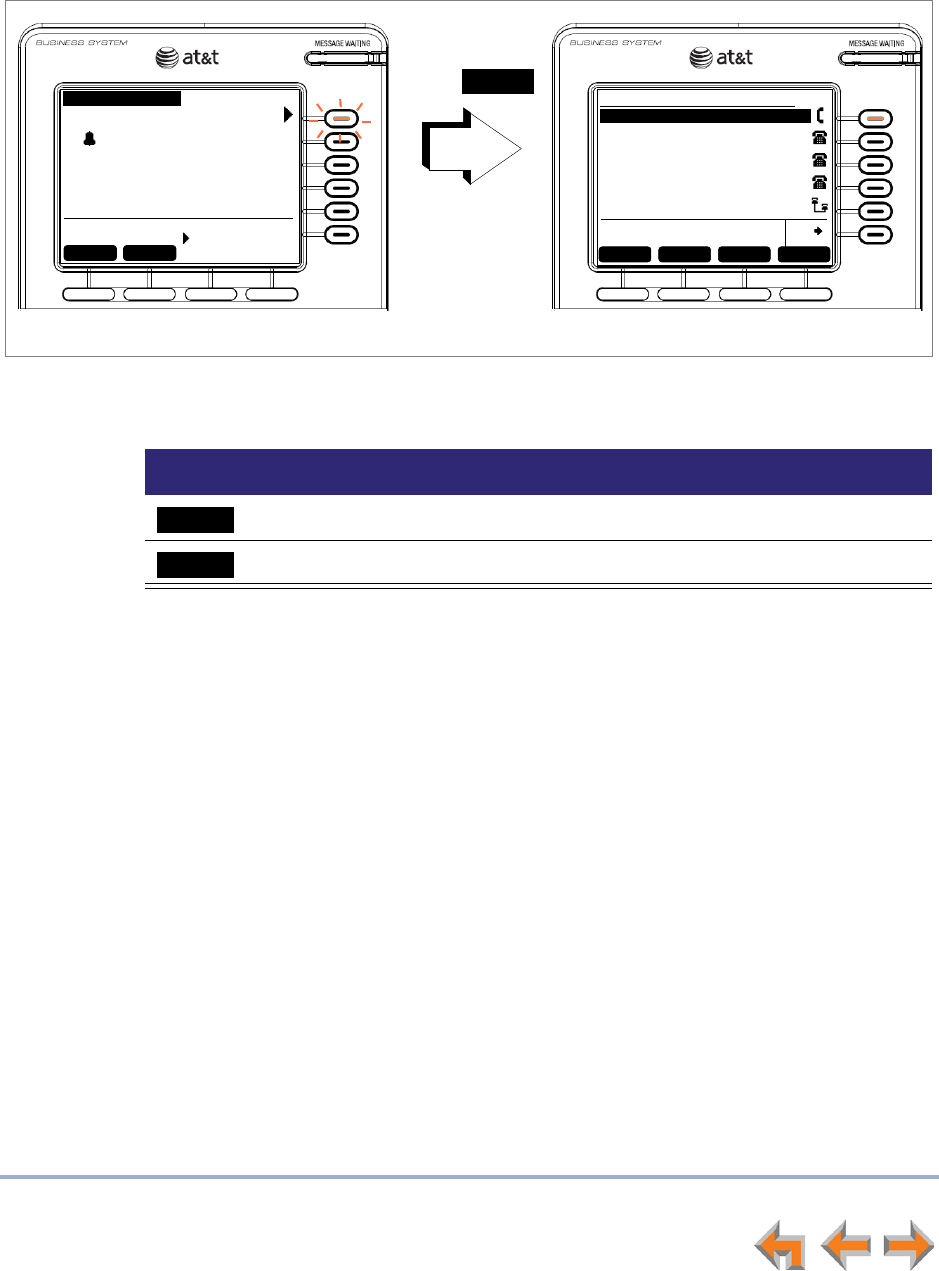
Incoming Calls 28
Syn248 SB35031 Deskset User’s Guide Back to Contents
Incoming Call Screen
The incoming call and active call screens are shown in Figure 10.
.
Figure 10. Incoming Call and Active Call
.
INCOMING CALL
Graham Bell
232-555-0176
Answer Ignore
Lift receiver, or press Answer, SPEAKER,
HEADSET, or key next to
Incoming Call Active Call
Press
Answer
12:30PM Thu Feb 25 2010
Graham Bell 232-555-0176 2:51
Transfer Conf
Quick
Dial
Flash More 1/2
Table 9. Incoming Call Screen Soft Keys
Key Description
Answers incoming call.
Silences ringer during incoming call.
Answer
Ignore
Draft
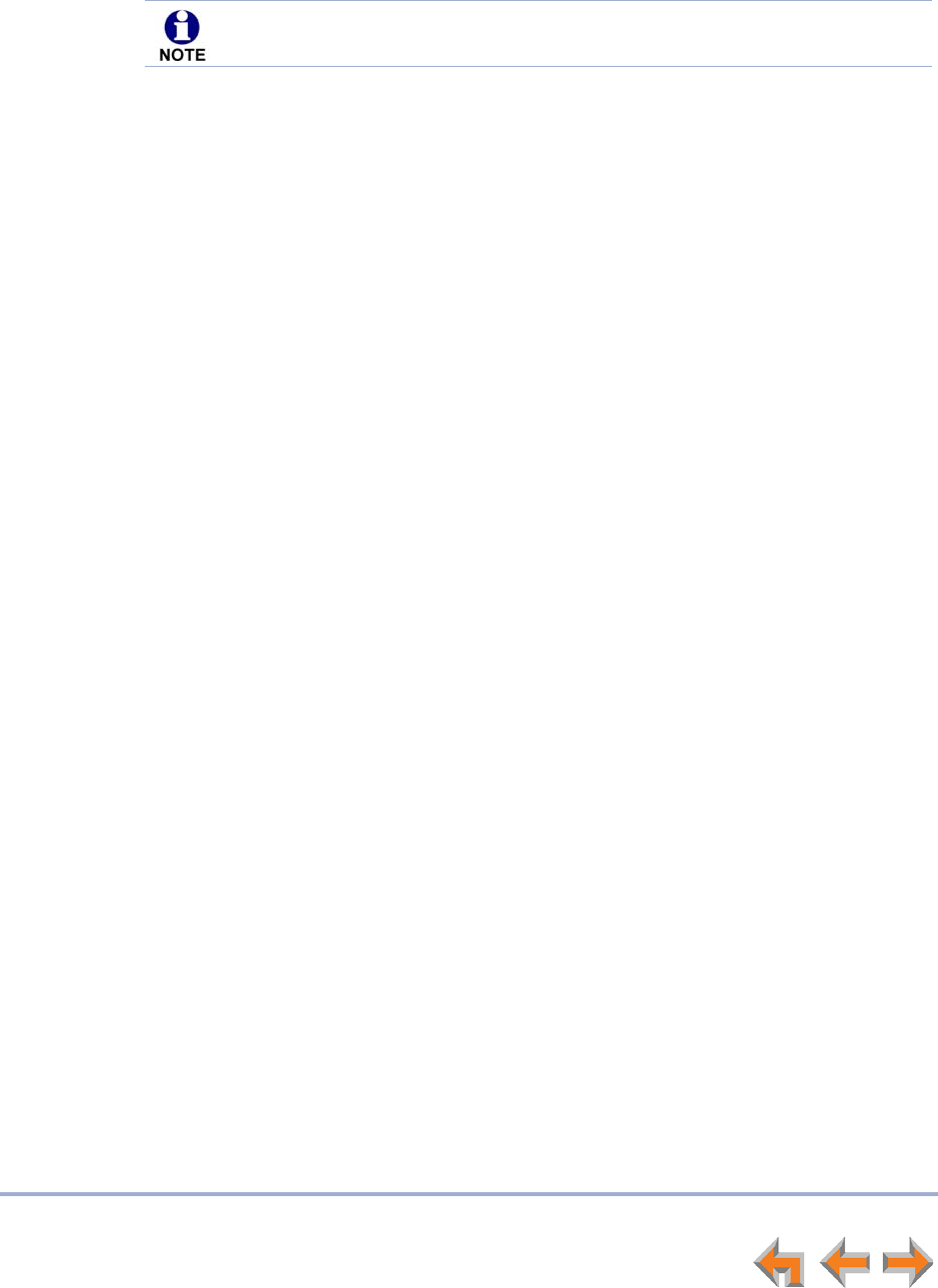
Incoming Calls 29
Syn248 SB35031 Deskset User’s Guide Back to Contents
Incoming Call Indication
When there is an incoming call, the Deskset rings. See “Sounds” on page 87.
If someone at another Deskset answers an outside call, your Deskset returns to Idle
mode.
If your company has caller ID, the incoming call screen displays caller information. If the
caller ID information is absent because it is unavailable, UNKNOWN NAME and
UNKNOWN NUMBER display. If the caller chooses not to send the information,
PRIVATE NAME and PRIVATE NUMBER display.
Do Not Disturb automatically silences the ringer. See “Using Do Not Disturb
(DND)” on page 104.
Draft
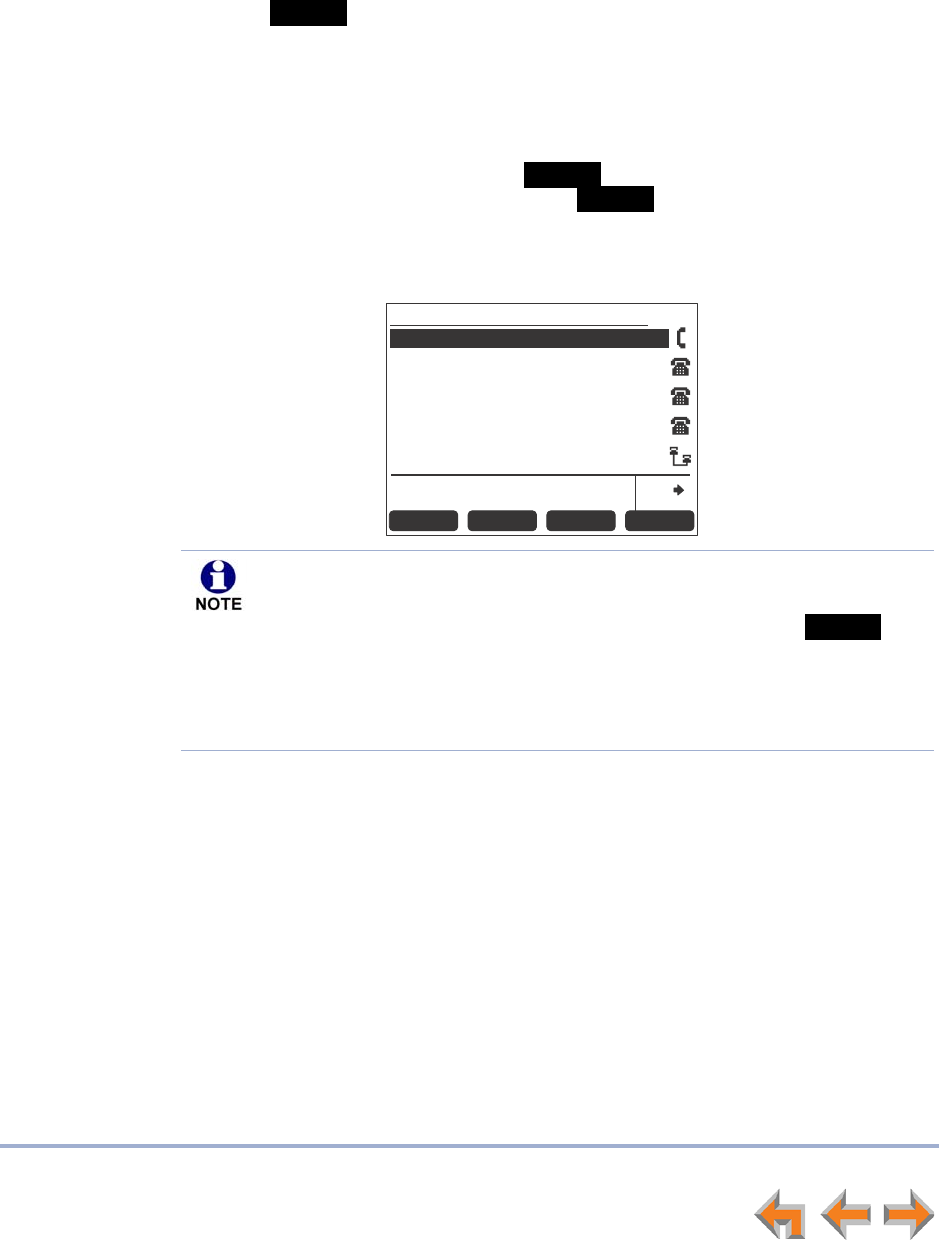
Incoming Calls 30
Syn248 SB35031 Deskset User’s Guide Back to Contents
Answering a Call
To answer a call:
Lift the corded handset.
Press to answer using the Preferred Audio Mode. See “Preferred Audio”
on page 89.
Press SPEAKER to use the speakerphone.
Press HEADSET to use a cordless or corded headset. See “Call Management
Using a Headset” on page 42.
For multiple incoming calls, press or press the corresponding Line key
to answer each call. You can also press to return the highlight to your
active call.
The active call screen appears.
Answer
Answer
Ignore
12:30PM Thu Feb 25 2010
Graham Bell 232-555-0176 2:51
Transfer Conf
Quick
Dial
Flash More 1/2
If someone at another Deskset answers the call, your Deskset returns to Idle
mode.
If you are listening to voicemail when a call comes in, press to
redirect the call and allow message playback to continue.
If Intercom Auto Answer is enabled, an Intercom call is automatically
answered after the set time delay. See “Intercom Auto Answering” on
page 32.
Ignore
Draft
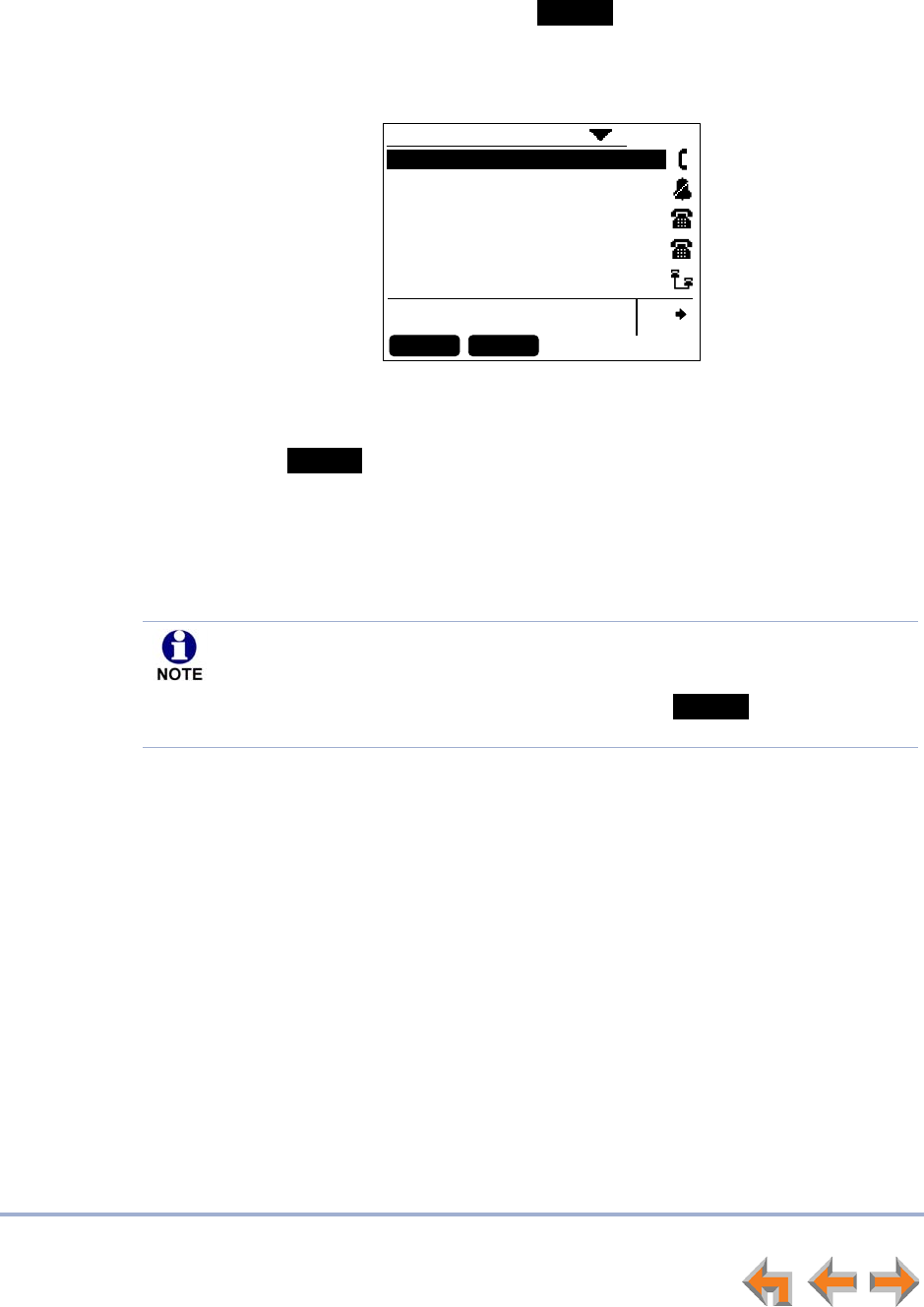
Incoming Calls 31
Syn248 SB35031 Deskset User’s Guide Back to Contents
Ignoring a Call
You can ignore an incoming call by pressing to silence the ringer. The silenced
ringer icon appears, as shown in Figure 11. If you are on an active or held call, after the
ignored call has been forwarded, the highlight moves back to whatever call you were on
before the incoming call.
Figure 11. Ignored Call
Once a call is ignored:
The key is no longer available on the incoming call screen.
The Line key LED continues to flash.
You can press the flashing Line key to answer the incoming call.
Going off hook does not answer the call, but starts a new call on the next
available Line.
Ignore
12:30PM Thu Feb 25 2010
Angela Martin 732-555-7318 0:05
Graham Bell 232-555-0176 3:34
Quick
Dial
Transfer Conf
Ignore
Your system administrator can set your Deskset to ignore all incoming calls on
selected lines. If your Deskset has one or more lines configured this way, your
Deskset automatically ignores incoming calls on those lines. Your Deskset does
not ring, and you can answer the call by pressing the key or the flashing
Line key.
Answer
Draft
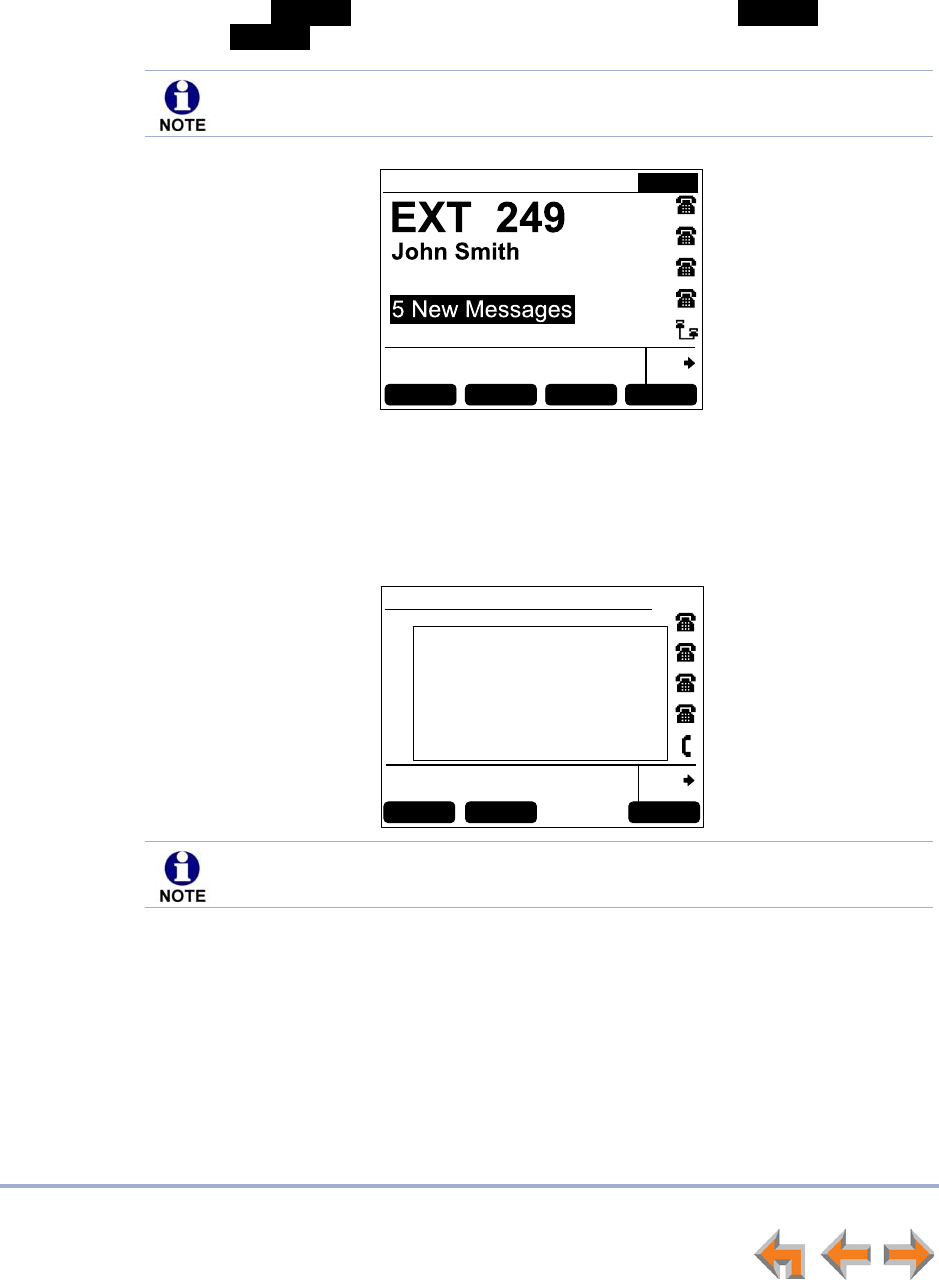
Incoming Calls 32
Syn248 SB35031 Deskset User’s Guide Back to Contents
Intercom Auto Answering
You can set your Deskset to answer Intercom calls automatically, without your having to
touch the phone to answer. See “Intercom Auto Answer” on page 92. When you enable
Auto Answer, appears at the top of the Deskset screen. does not
appear if is active, because Auto Answer is disabled when Do Not Disturb is on.
To respond to an Auto Answered call:
In Idle mode, all incoming calls ring for the amount of time specified in the Auto Answer
Delay. See “Intercom Auto Answer” on page 92. After the last ring, a two-second
notification screen appears, and you hear a warning tone. Talk after the tone.
If you do not want the Deskset to automatically answer the call, you can press IGNORE
to send the call to the Intercom Call Forward–No Answer target (see “Call Forward–No
Answer” on page 33).
If there are multiple incoming Intercom calls, Auto Answer applies to the first call.
ANS ON
ANS ON
DND ON
Intercom Auto Answering applies only to direct Deskset-to-Deskset calls. Auto
Answering does not apply to forwarded calls that use your Intercom line(s).
Quick
Dial
ExtListDNDHoldList Page
12:30PM Thu Feb 25 2010 ANS ON
12:30PM Thu Feb 25 2010
John Smith 232-555-0176 0:01
Transfer Conf
Quick
Dial
More 1/2
Call Answered.
Speak after the tone.
If the Auto Answer Delay is set to zero, you hear no ring. Instead, the Call
Answered screen appears and you hear the warning tone.
Draft

Incoming Calls 33
Syn248 SB35031 Deskset User’s Guide Back to Contents
Call Forward–No Answer
Call Forward–No Answer is a setting that redirects incoming calls. The Syn248 system
has two types of Call Forward–No Answer settings.
Phone Line Call Forward–No Answer can only be set by the system administrator.
This setting determines the destination for unanswered calls on each line. After a call is
forwarded, the call cannot be answered at the Deskset. Calls can be forwarded to:
an extension
an extension’s voicemail (without ringing the Deskset)
an external phone number
Auto Attendant (default destination). See “About the Auto Attendant” on
page 33.
Intercom Call Forward–No Answer is a setting unique to each Deskset. The system
administrator also sets this setting. This setting determines the delay of, and the
destination for, unanswered calls coming through your Intercom line. These calls can
include Intercom calls or outside calls forwarded to you by the Phone Line Call
Forward–No Answer setting. The default destination is your voicemail. It can also be set
for another extension, an outside phone number, or OFF.
About the Auto Attendant
The Syn248 system features an Auto Attendant that can answer calls during periods
when your office is closed or when calls go otherwise unanswered. The Auto Attendant
has an interactive voice menu that can guide callers to the desired extension or
extension’s voicemail.
If your Deskset is set as the Operator extension, you can set the Auto Attendant to one
of three menus: a default menu, a Day menu and a Night menu. The default menu
instructs callers to “Enter the extension number or enter 0 for the operator.” You can
customize both the Day and Night menus with your own greeting message and
instructions to callers.
Caller Options
Until callers get through to a live person, they can press 0 at any time to redirect their
call to the system operator, if the system administrator has enabled this feature.
When a caller is redirected to voicemail, the caller has the option to press 5 to skip the
greeting and press 0 to reach the operator.
The Auto Attendant may be set up so that callers can access the Auto Attendant
directory. This allows callers to use any touch-tone phone's dial pad to spell your name,
followed by pressing the pound (#) sign, to reach your extension.
Draft

Call Management 34
Syn248 SB35031 Deskset User’s Guide Back to Contents
CHAPTER
4
C
ALL
M
ANAGEMENT
This chapter describes the call management features of the Deskset. The Deskset enables
you to put calls on hold, transfer calls, and create conference calls.
“Call Management” on page 35
“Putting a Call on Hold” on page 36
“Transferring a Call” on page 37
“Making a Conference Call” on page 39
“Call Management Using a Headset” on page 42.
Draft
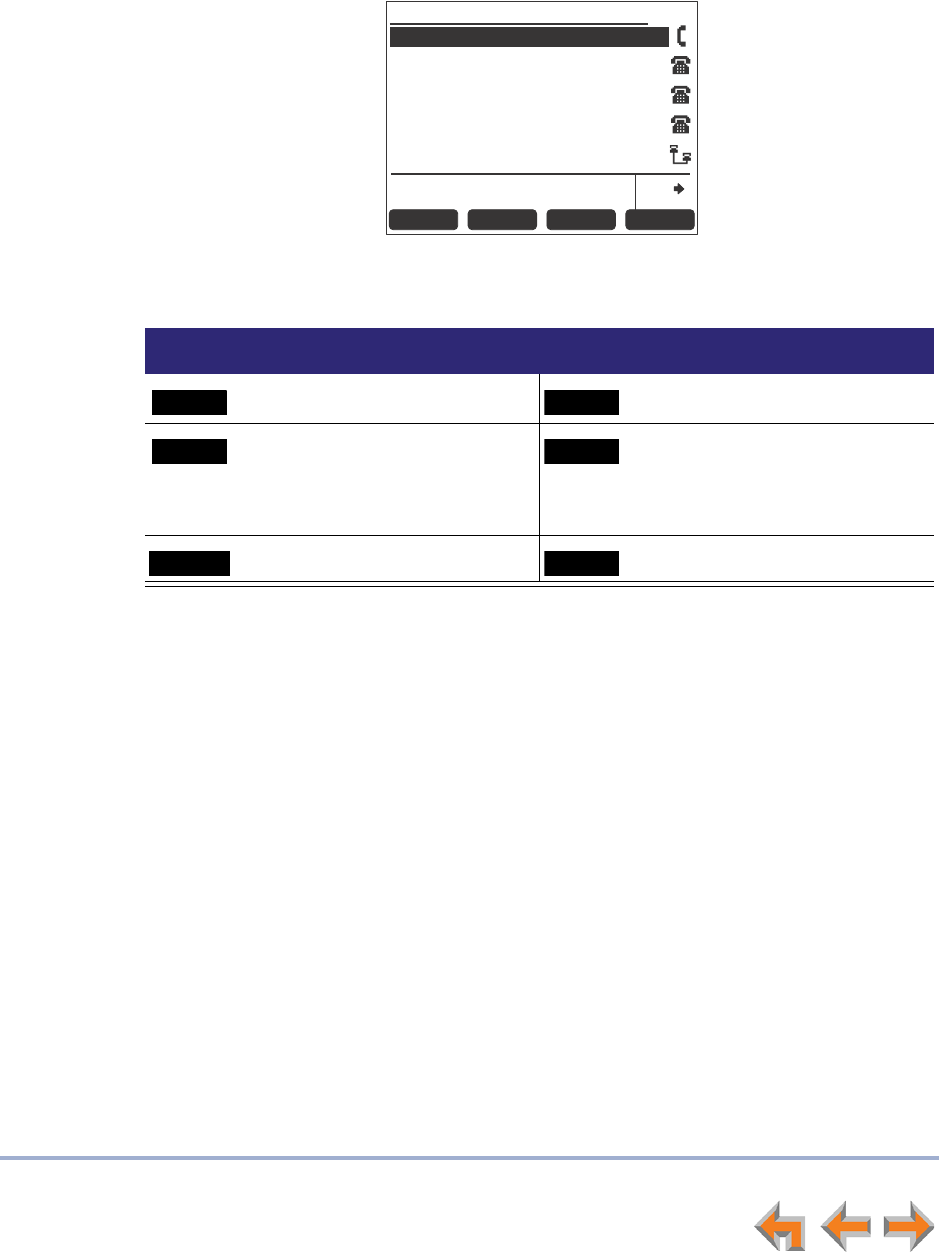
Call Management 35
Syn248 SB35031 Deskset User’s Guide Back to Contents
Call Management
The Deskset call management functions begin with the Active Call screen shown in
Figure 12.
.
Figure 12. Active Call Screen
Table 10. Active Call Screen Description
Key Description Key Description
Begins transfer of a call. Begins a conference call.
External calls only —
Simulates a hook flash, which
signals your telephone service
provider to activate a feature.
Moves to the next set of soft
keys. More 1/2 indicates that
you are on page one of three.
Access the Held Calls list. Pages all extensions.
12:30PM Thu Feb 25 2010
Graham Bell 232-555-0176 2:51
Transfer Conf
Quick
Dial
Flash More 1/2
Transfer
Conf
Flash
More
HoldList
Page
Draft
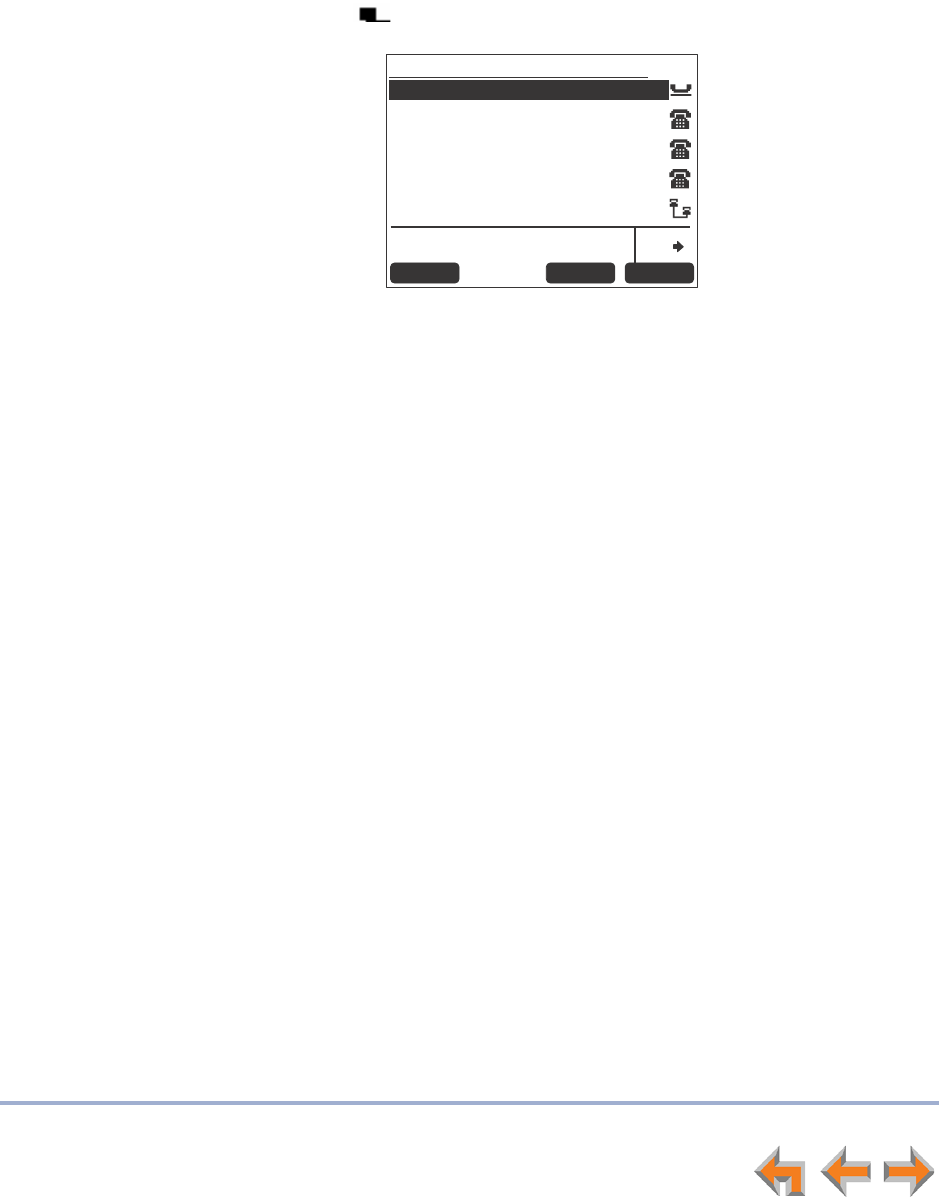
Call Management 36
Syn248 SB35031 Deskset User’s Guide Back to Contents
Putting a Call on Hold
All Desksets that share assigned lines can view held calls and take calls off hold.
To hold calls and manage held calls:
1. When you are on an active call, press HOLD.
The Held Call icon appears and the Line key LED flashes slowly.
On other Desksets that are assigned that line, the Line key LED flashes slowly.
Someone at any other Deskset assigned that line can press the flashing Line key
to take the call off hold, making it an active call on their Deskset.
All Desksets, including those that are not assigned that line, can view and take
your call off hold from the Held Calls list. See “Accessing the Held Calls List” on
page 52.
When you put an Intercom call on hold, only you can take the call off hold.
When a call is on hold, you can use the Deskset Menu to access other functions.
After the call has been on hold for a delay period set by your system
administrator (the default setting is three minutes), the Deskset rings to remind
you that the call is still on hold.
2. To take the call off hold, press SELECT or press the Line key for that call.
12:30PM Thu Feb 25 2010
Graham Bell 232-555-0176 2:51
HoldList
Quick
Dial
DND Page
Draft
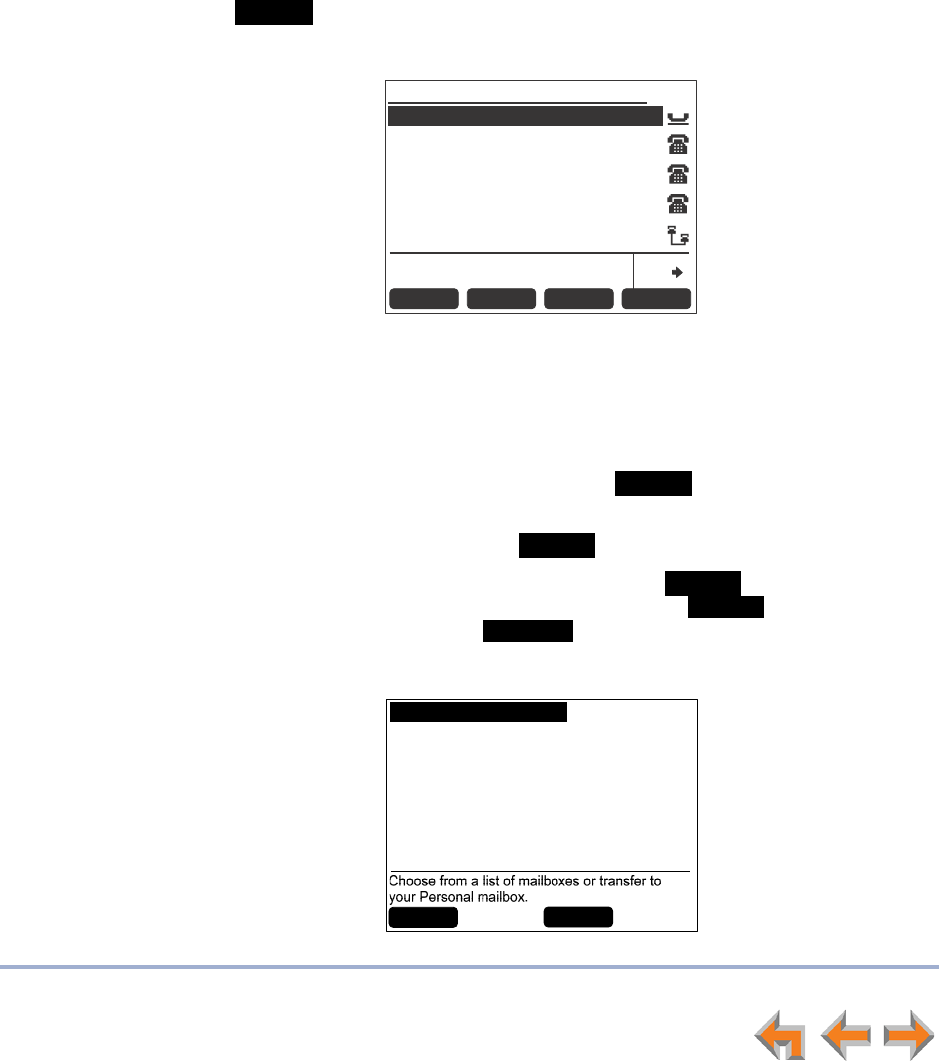
Call Management 37
Syn248 SB35031 Deskset User’s Guide Back to Contents
Transferring a Call
You can transfer an active call to:
an internal extension
an external number, if this function has been enabled by your system
administrator
another extension‘s voicemail, Group Mailbox, or your Personal mailbox
an Auto Attendant.
To transfer a call:
1. Press from the Active Call screen. The call is automatically put on hold and
the Transfer Setup screen appears.
2. Select a transfer target. You can:
press the Intercom key and dial an extension number.
press an available Line key and dial an external number. Depending on your
system configuration, transferring calls to an outside line may be disabled.
call a number from a list. For example, press and select an extension to
call.
take a held call off hold or press to retrieve a held call
transfer the call directly to voicemail by pressing . The Transfer to
Voicemail screen appears, on which you can press to select an
extension‘s mailbox, or press to transfer the call to your Personal
mailbox.
Transfer
12:30PM Thu Feb 25 2010
232-555-0176 Awaiting Transfer
Make a call, retrieve a call, or choose
transfer destination from a list.
Quick
Dial
HoldListExtList Vmail AutoAtt
ExtList
HoldList
Vmail
VMList
Personal
Select a transfer
destination.
VMList
Transfer to Voicemail
Personal
Draft
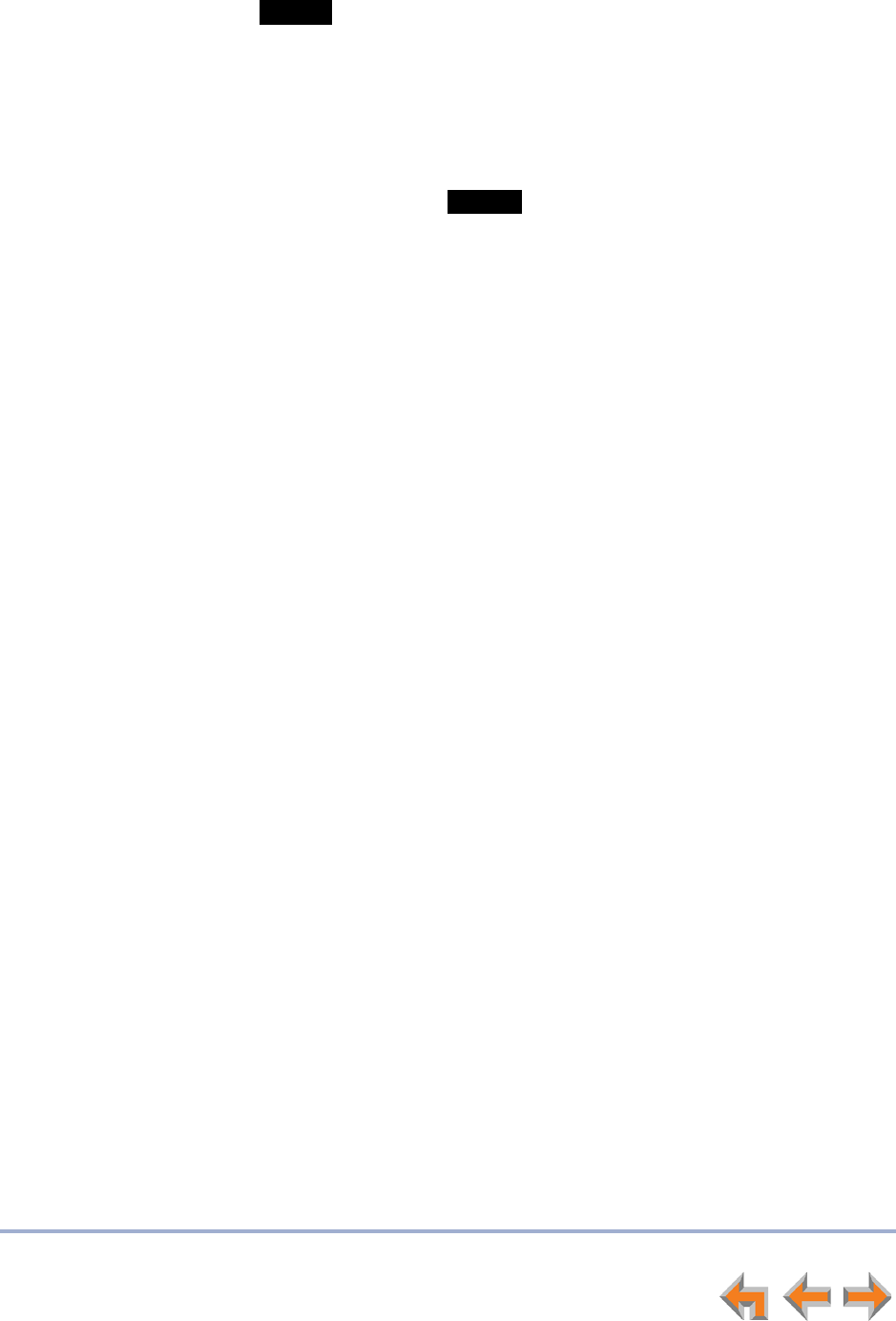
Call Management 38
Syn248 SB35031 Deskset User’s Guide Back to Contents
Press to select an Auto Attendant to which to transfer the call
3. When the new call is established, you are ready to transfer the first call. You can:
speak to the person to whom you are transferring the call and announce the
transfer.
cancel the Transfer Setup screen on the first call by pressing CANCEL. The call
remains on hold.
4. To complete the transfer, press . A Call Transferred screen appears for
two seconds. When the transfer is complete, the screen returns to Idle mode.
AutoAtt
Xfer?
Draft
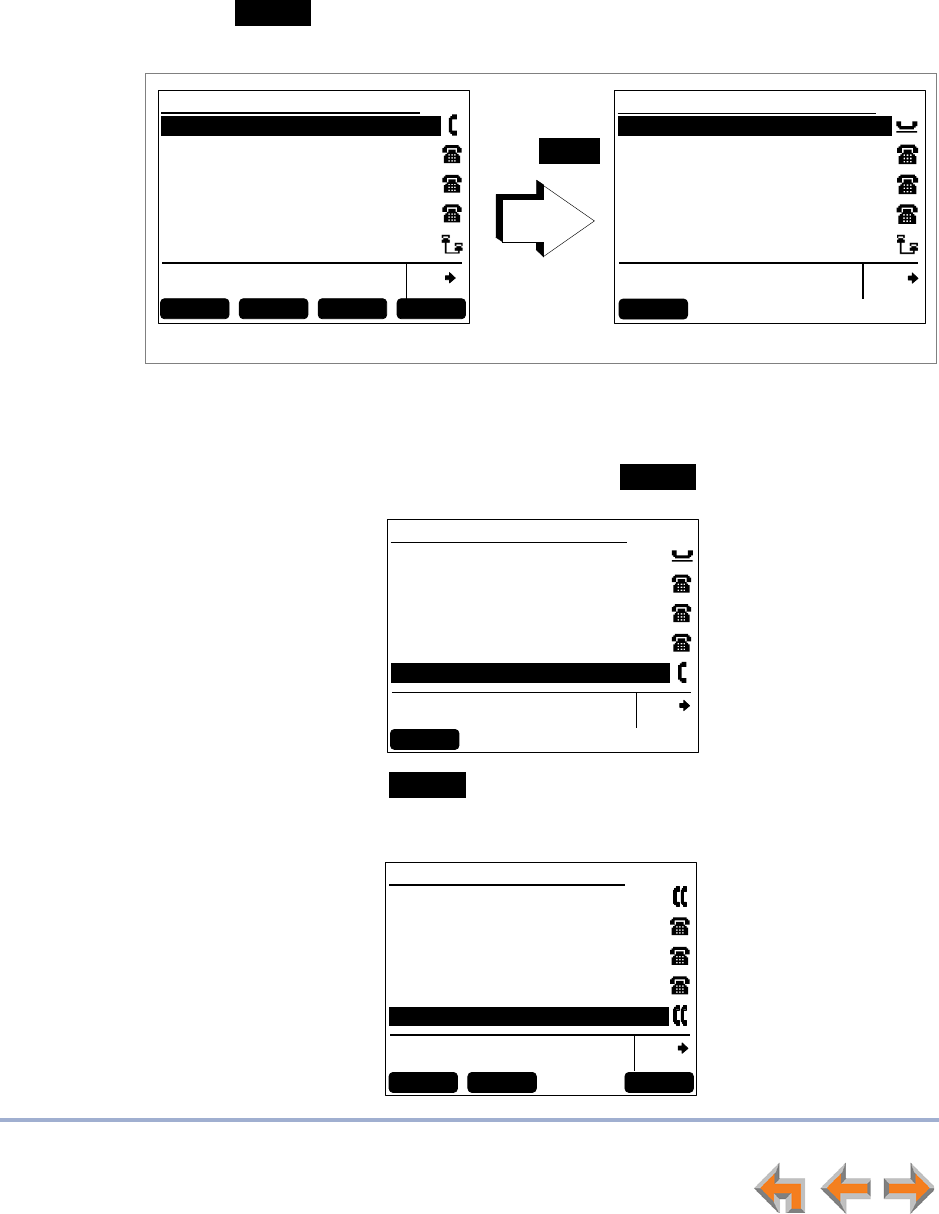
Call Management 39
Syn248 SB35031 Deskset User’s Guide Back to Contents
Making a Conference Call
You can set up a conference call with yourself and two telephone numbers (either
internal, external, or with both).
To make a conference call:
1. Press from an active call screen. The call is put on hold and the conference
setup screen appears.
2. Establish a second call. You can dial the second call normally, or you can select a
held call and take it off hold, or you can start the second call from a list. See
“Accessing Items in Lists” on page 43.
When the second call has been established, the soft key appears.
3. To join the calls, press .
Your extension is now in conference with the other two phone numbers.
Conf
12:30PM Thu Feb 25 2010
Graham Bell 232-555-0176 2:51
Transfer Conf
Quick
Dial
Flash More 1/2
12:30PM Thu Feb 25 2010
232-555-0176 Waiting to Join
Call 2nd number or retrieve held call.
Quick
Dial
ExtList
Active Call Waiting to Join Conference
Press
Conf
Join?
12:30PM Thu Feb 25 2010
232-555-0176 Waiting to Join
Quick
Dial
John Smith 200 0:32
Press Join? to start conference with
this call or press CANCEL.
Join?
Join?
12:30PM Thu Feb 25 2010
232-555-0176 Conference Call
Quick
Dial
200 Conference Call
EndConf Drop Page
Draft
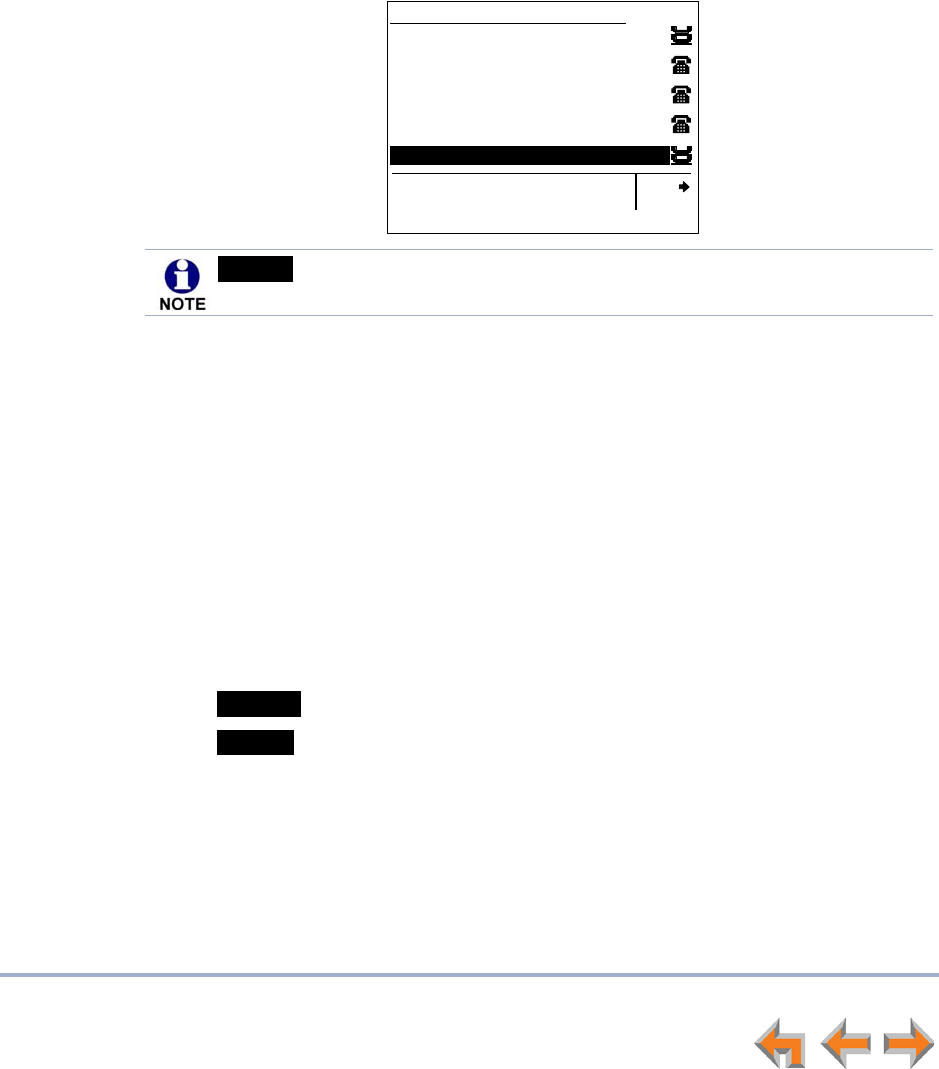
Call Management 40
Syn248 SB35031 Deskset User’s Guide Back to Contents
If you hang up while on the conference, the conference ends. If you make or answer
another call, the conference continues without you. You can rejoin by pressing a
corresponding Line key.
Putting a Conference on Hold
To put a conference on hold:
1. Press HOLD.
The other callers can continue communicating with each other. The held conference
icon indicates a held conference.
A conference is automatically put on hold when you:
Press an available Line key to start a new call.
Answer an incoming call.
To take a conference call off hold:
1. Press a Line key for one of the calls on the conference.
Ending a Conference
To end a conference:
From the conference screen, press:
to end the conference. Both calls hang up.
to end the highlighted call. The other call remains active.
12:30PM Thu Feb 25 2010
232-555-0176 Conference Call
Quick
Dial
200 Conference Call
To retrieve held conference, press key
next to either conference call.
is unavailable during an active call if you have another conference on
hold.
Conf
EndConf
Drop
Draft
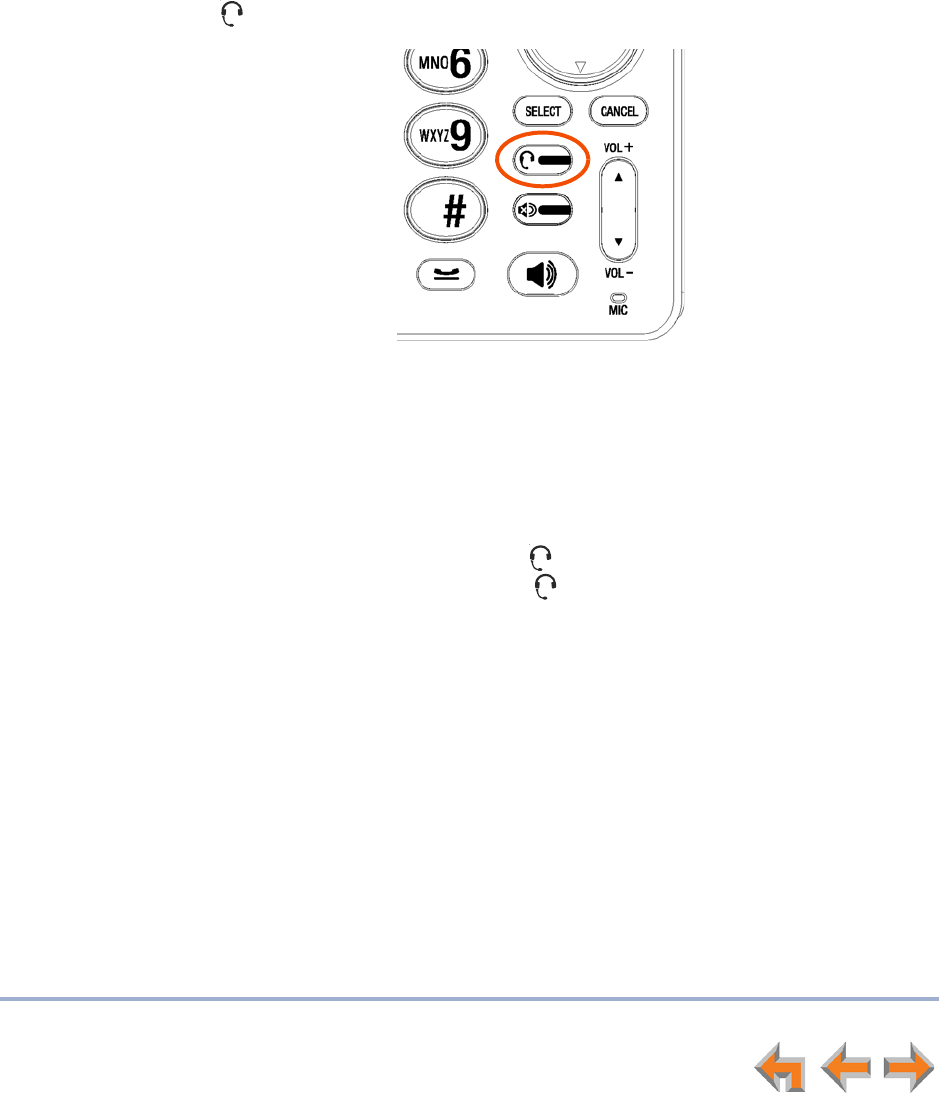
Call Management 42
Syn248 SB35031 Deskset User’s Guide Back to Contents
Call Management Using a Headset
You can use a corded or cordless headset with the Deskset. A corded headset can be
plugged into the Headset jack on the back of the Deskset. The cordless headset must
provide its own wireless radio in a base unit that is plugged into the Headset jack. If the
headset is a compatible AT&T DECT cordless headset, it can be registered to the Deskset
and no other connections to the Deskset are required. See “Registering an Optional
Cordless Headset” on page 96.
To use a headset:
From Idle mode or during a call using the corded handset or speakerphone, press
(HEADSET).
If you have a headset connected to the jack on the back of the Deskset, then
that headset becomes active.
If you have a AT&T DECT cordless headset registered to the Deskset, then the
cordless headset becomes active.
To send audio from the headset to the Deskset speakerphone, press SPEAKER.
To send audio from the headset to the corded handset, lift the handset. If the
handset is already off hook, press to send audio to the handset. While the
handset is off hook, you can press again to return audio to the headset.
Draft

Accessing Items in Lists 43
Syn248 SB35031 Deskset User’s Guide Back to Contents
CHAPTER
5
A
CCESSING
I
TEMS
IN
L
ISTS
The Deskset has lists of phone numbers that are used for making calls and for call
management. Some of the lists, like Voicemail, are explained elsewhere in this guide. In
this chapter, you learn how to access an individual item in a list. All instructions start
from the Idle screen.
The Deskset may provide access to the following lists:
Directory List — See Chapter 6, “Directory” on page 53
Voicemail List — See Chapter 7, “Voicemail” on page 62
Call Log — See Chapter 8, “Call Log” on page 75
Extension List — See “Accessing the Extension List” on page 45
Quick Dial — See “Accessing the Quick-Dial List” on page 46
Redial List — See “Accessing the Redial List” on page 49
Held Calls List — See “Accessing the Held Calls List” on page 52.
Draft
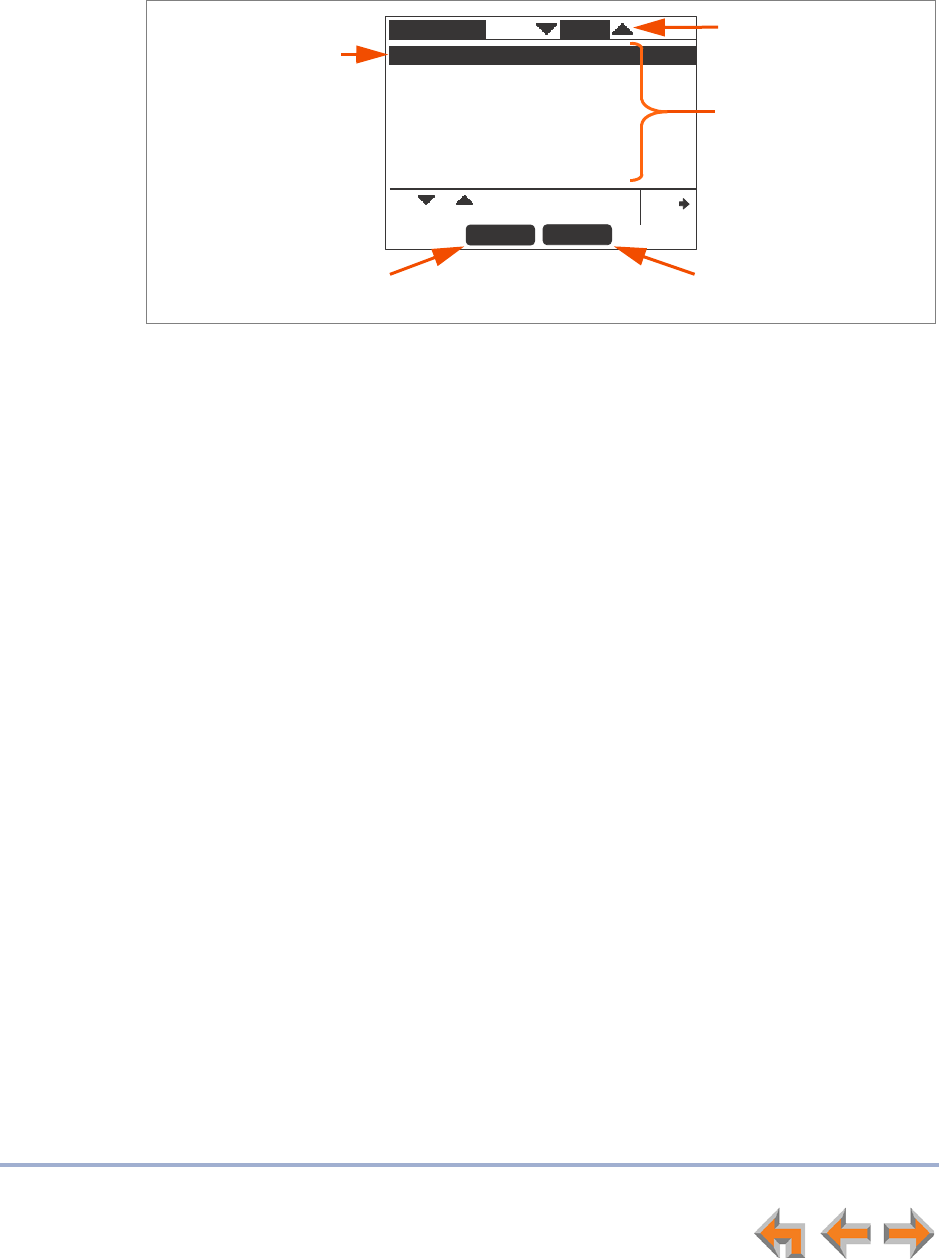
Accessing Items in Lists 44
Syn248 SB35031 Deskset User’s Guide Back to Contents
About the Extension List
You can access the Extension list illustrated in Figure 13 from Idle, Live Dialing, Transfer,
and Conference Setup modes.
Figure 13. Extension List Functions
Extensions
Amy Lee 203
Douglas Lewis 205
Edgar Williams 211
Gary Keys 202
John Smith 225
Karl Anders 204
Nick Gibson 212
Use or to scroll or use dial pad
for quick search.
Call
1/16
LastNme
Quick
Dial
Press to sort list by last
name or first name Press to dial the
selected entry
Extension number
Highlighted extension
number position/total
number of extensions
First and last name
(if available)
Draft
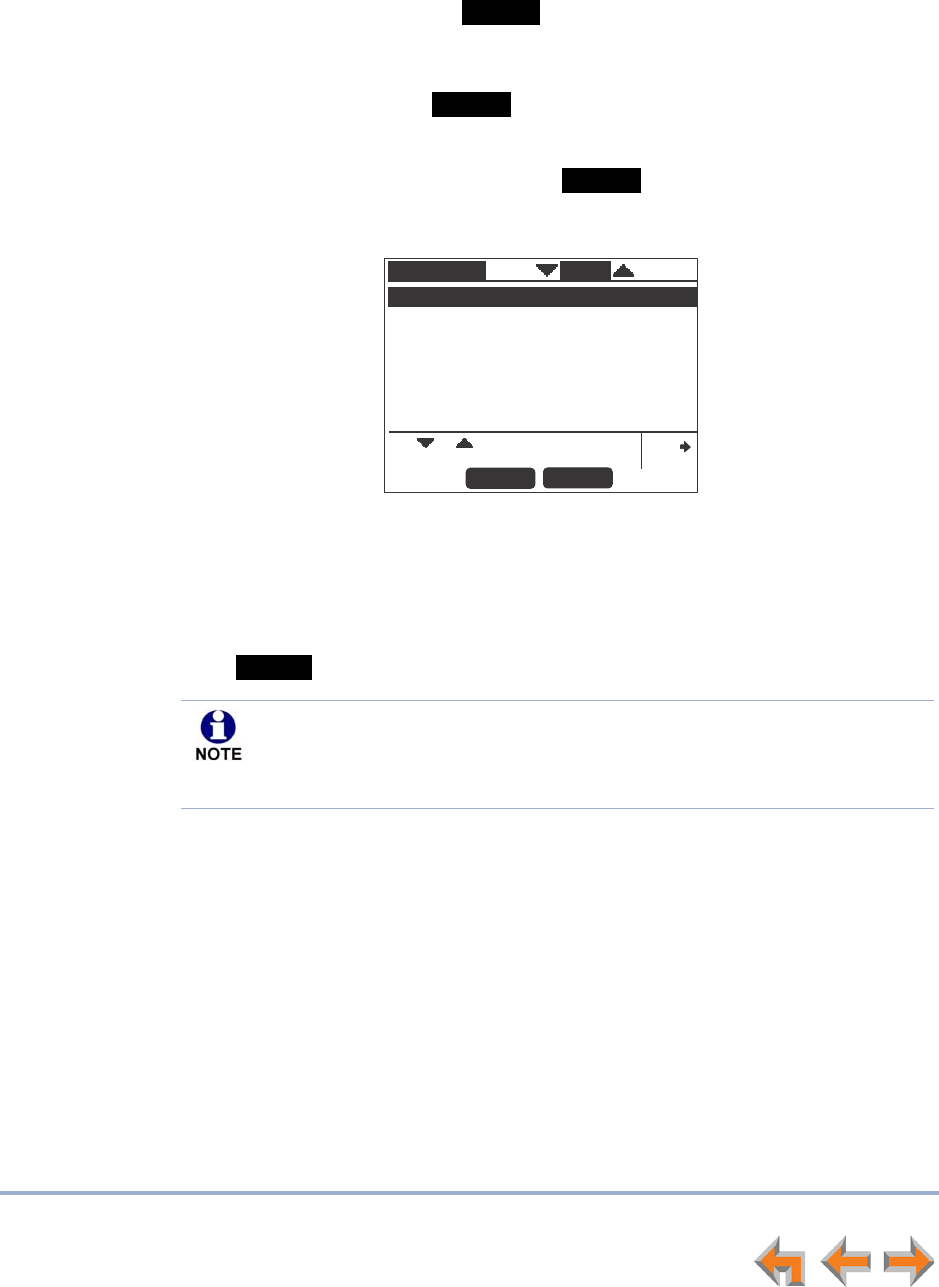
Accessing Items in Lists 45
Syn248 SB35031 Deskset User’s Guide Back to Contents
Accessing the Extension List
You can access the Extension list as part of the Directory when the phone is idle. See
“Using the Directory” on page 54. When you go off-hook on an Intercom line, you can
access the Extension list using the soft key that appears.
To access the Extension list:
1. From the Idle screen, press .
OR
When off hook on an Intercom line, press .
The Extensions list appears.
2. Press or until you highlight the desired entry.
OR
Use the dial pad to jump to the first name that begins with the first letter of the key
that you press.
3. Press to call the highlighted extension.
ExtList
ExtList
ExtList
Extensions
Amy Lee 203
Douglas Lewis 205
Edgar Williams 211
Gary Keys 202
John Smith 225
Karl Anders 204
Nick Gibson 212
Use or to scroll or use dial pad
for quick search.
Call
1/16
LastNme
Quick
Dial
Call
You can also access the Extension list from the following:
Transfer — See “Transferring a Call” on page 37.
Conference Setup — See “Making a Conference Call” on page 39.
Draft
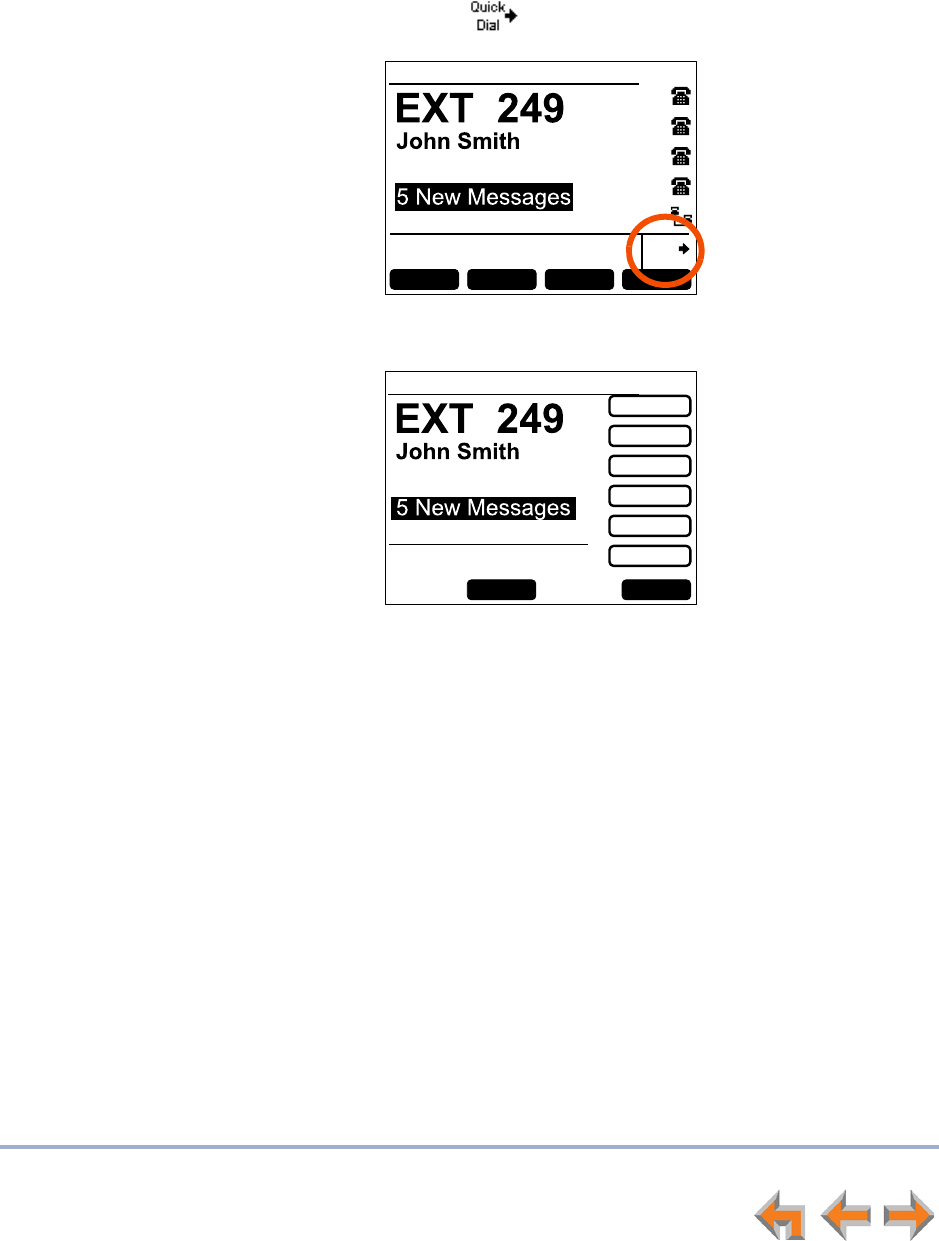
Accessing Items in Lists 46
Syn248 SB35031 Deskset User’s Guide Back to Contents
Accessing the Quick-Dial List
The quick-dial list provides up to six entries for frequently called numbers.
To access and dial quick-dial numbers:
1. Press the button to the right of .
Quick-dial labels appear.
2. Press a quick-dial button to the right of a label to dial that number.
Quick
Dial
ExtListDNDHoldList Page
12:30PM Thu Feb 25 2010
Press key next to name to call
the quick dial number.
BackEdit List
12:30PM Thu Feb 25 2010
Kate
Enrico
Doug
<Empty>
Titan
<Empty>
Draft
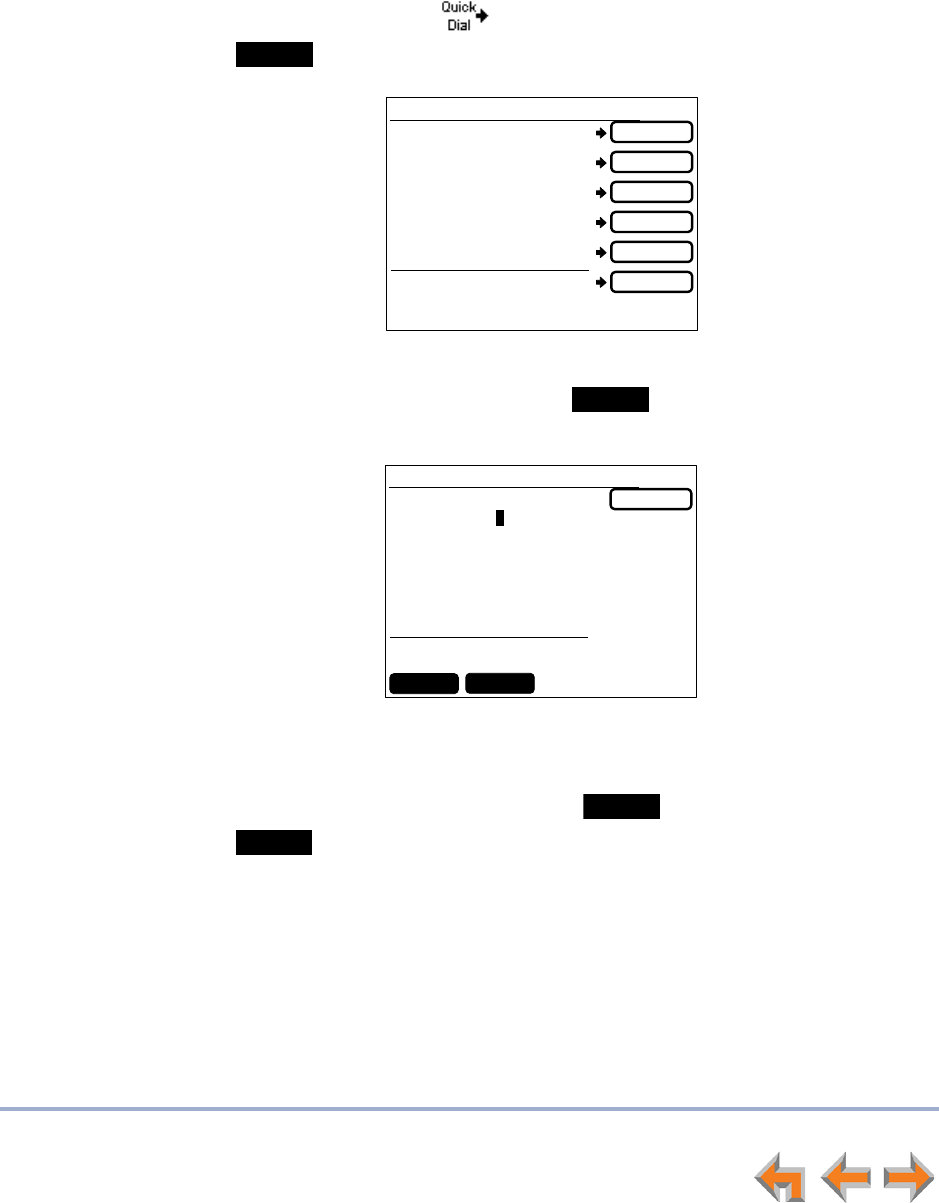
Accessing Items in Lists 47
Syn248 SB35031 Deskset User’s Guide Back to Contents
Editing Quick Dial Entries
After you access a quick-dial entry, you can add and edit quick-dial entries using the
Deskset or the WebUI. To edit entries using the WebUI, see “Quick-Dial Keys” on
page 111.
To edit quick dial from the Deskset:
1. Press the key to the right of to display the quick-dial list.
2. Press to add or edit a quick-dial entry. The quick-dial edit screen appears.
3. Press the key to the right of the entry you want to edit.
4. Enter the desired name and number. Press to erase the highlighted
character if there is one, or else the character before the cursor.
a. Enter the name.
b. Press and enter the number.
To include a pause in the number, press .
5. Press to store the number. The quick-dial list appears.
Edit List
Press key next to quick dial
entry to edit or add.
12:30PM Thu Feb 25 2010
Kate
Enrico
Doug
<Empty>
Titan
<Empty>
Pick a Quick Dial to
Add or Edit
Backspc
Fill out Name and Number fields
using dialing keys.
12:30PM Thu Feb 25 2010
Kate
Name: Kate
Number: 5550143
Backspc
Save
Pause
Save
Draft
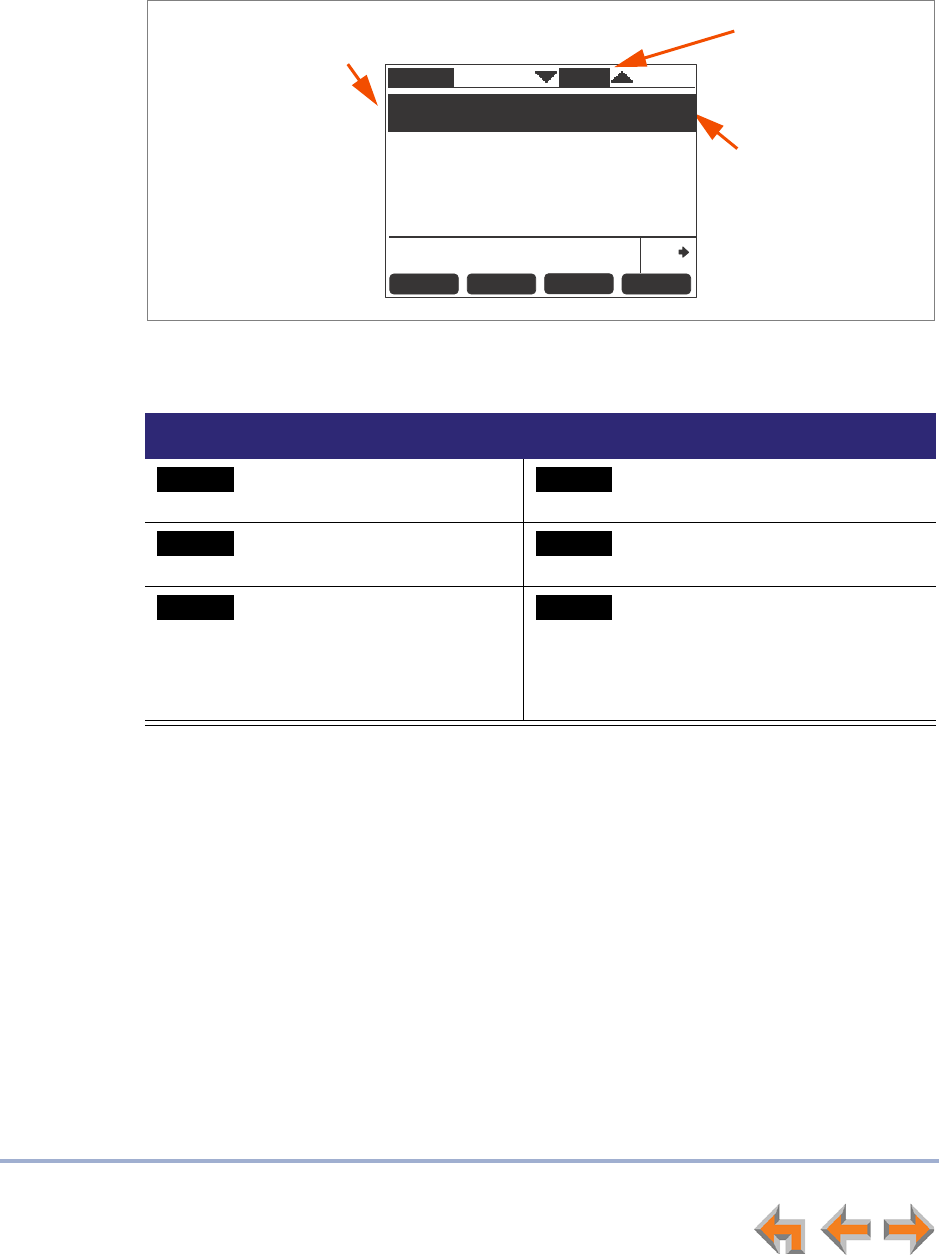
Accessing Items in Lists 48
Syn248 SB35031 Deskset User’s Guide Back to Contents
About the Redial List
The last 20 phone numbers that you dialed are recorded in the Redial list, as shown in
Figure 14.
Figure 14. Redial List
Table 11. Redial List Function
Key Description Key Description
Stores number in Personal
list.
Deletes an entry.
Shows more details for a
particular entry.
Deletes all entries.
Dials the selected entry. Moves to the next set of soft
keys. If this key appears, there
are more than four soft keys
available. More 1/2 indicates
that you are on page one of two.
Redial
Mary Williams 8:55a
9-1-888-722-7702 May 23
Wanda Peters 8:23a
Unknown Caller May 22
9-1-533-555-0124 May 22
Charlie Johnson May 20
9-1-788-555-0139 May 20
To call, press SELECT or Call.
1/12
Quick
Dial
Call
DeleteStore More 1/2
Name and number
displayed
(if available)
Current Redial
entry number and
the total number
of stored entries
Time and date
of highlighted
call entry
Store
Delete
Details
DelAll
Call
More
Draft
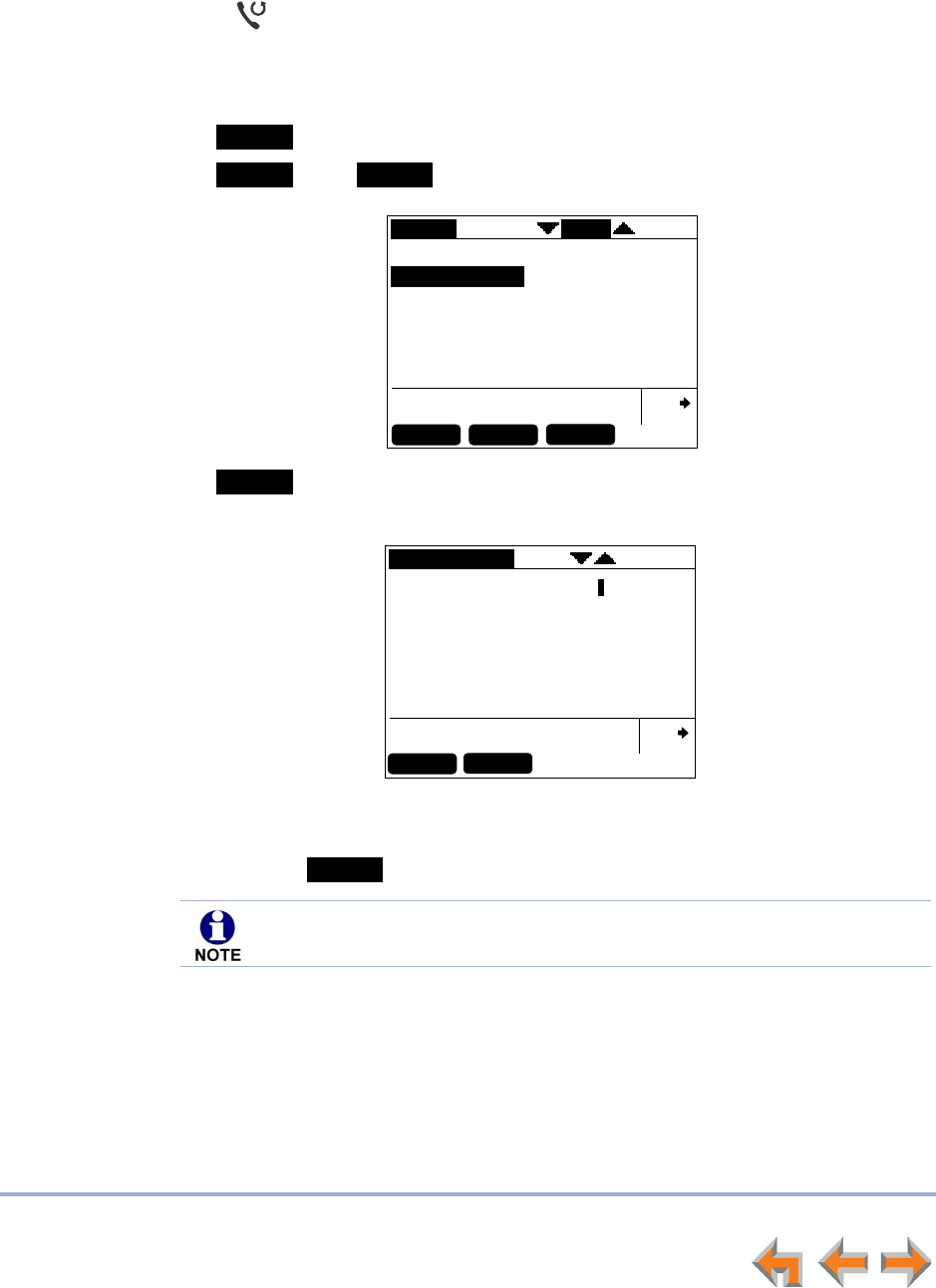
Accessing Items in Lists 49
Syn248 SB35031 Deskset User’s Guide Back to Contents
Accessing the Redial List
To access a Redial entry:
1. Press (REDIAL) to display the Redial list, as shown in Figure 14.
2. Press or until you highlight the desired entry.
3. Press:
to redial the number.
, then to display details about the highlighted entry.
to store the caller’s number. The Personal Entry screen appears with
the First Name and number filled in.
If necessary, edit the name and number. Press to move the cursor to the
Last Name and Phone # entries.
Press to save the entry.
4. Press CANCEL to exit the Redial list.
Call
More 1/2
Details
Redial
Mary Williams
888-555-7702
To call, press SELECT or Call
1/12
Quick
Dial
Call
DeleteStore
8:55AM
Sun, May 23, 2010
Store
Personal Entry
First Name: Mary Williams
Last Name:
Phone #: 8885557702
Use dial pad to enter letters.
Quick
Dial
Backspc
Save
Save
The system does not check for duplicate entries.
Draft
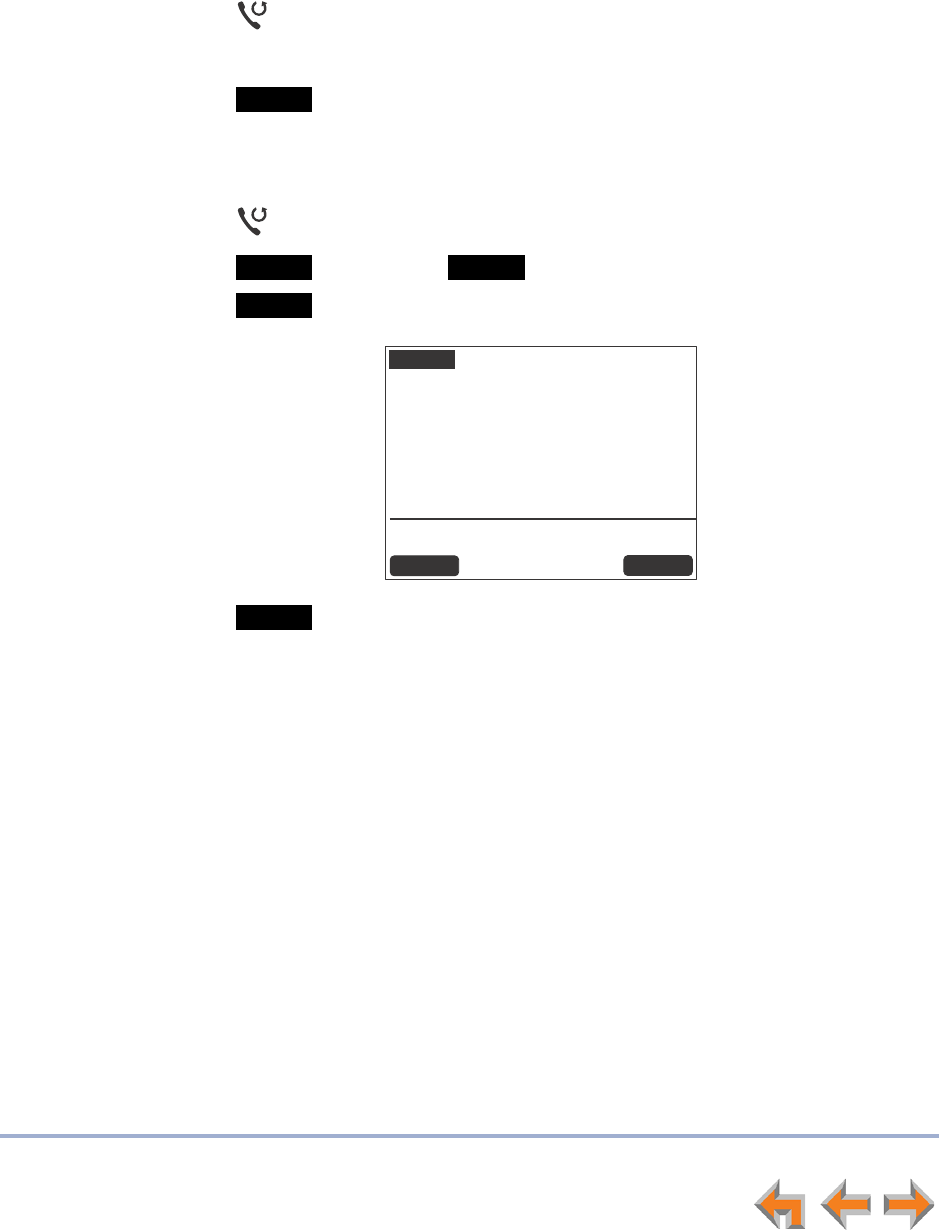
Accessing Items in Lists 50
Syn248 SB35031 Deskset User’s Guide Back to Contents
Deleting Redial Entries
You can delete a single Redial entry from the Redial list or all Redial entries. Ensure the
entry you wish to delete is highlighted.
To delete a single entry:
1. Press (REDIAL) to access the Redial list.
2. Press or until you highlight the desired entry.
3. Press .
4. Press CANCEL to exit the Redial list.
To delete all Redial entries:
1. Press (REDIAL) to access the Redial list.
2. Press to display the soft key.
3. Press . A confirmation screen appears.
4. Press to confirm deletion.
5. Press CANCEL to exit the Redial list.
Delete
More 1/2
DelAll
DelAll
Redial
Are you sure you want to
delete all Redial entries ?
Press Yes to delete all entries. Press No to
cancel.
No
Yes
Yes
Draft
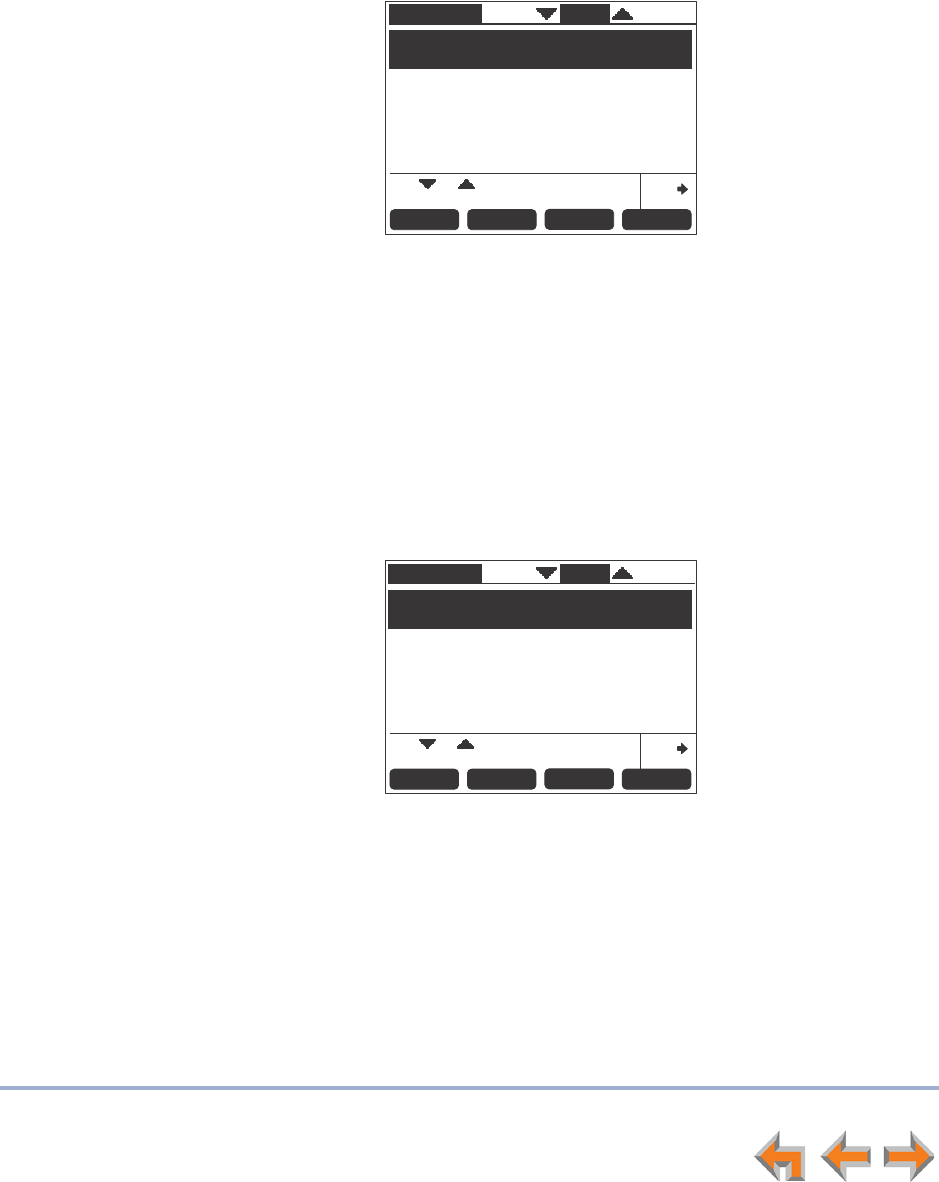
Accessing Items in Lists 51
Syn248 SB35031 Deskset User’s Guide Back to Contents
Searching the Directory or Extension Lists
Use the dial pad to view the first entry that starts with any letter.
To search for a list entry on the Deskset:
1. Select a list to search, such as the Directory.
2. Press the dial-pad keys to cause the Deskset to search for an exact match or the
closest match. For example:
If you press 4 once, the Deskset searches for names beginning with G.
If you press 4 twice, the Deskset searches for names beginning with H.
See “Deskset Dial-Pad Entry” on page 18 for information on entering other
individual letters. This searching function uses only the uppercase letters.
When an exact match is found, the entry is highlighted. If you enter a letter and the
Deskset cannot find an exact match, the entry with the next closest alphabetical
match is highlighted.
Directory
ABC Accountants Personal
503-555-0194
Amy Lee 203
Angela Martin 732-555-7318
Charlie Johnson 888-883-2445
David Carter 443-555-0625
Davis Caterer 317-555-0129
Call
1/48
LastNme
Quick
Dial
New More 1/3
Use or to scroll or use dial pad
for quick search.
Directory
Graham Bell Personal
232-555-0176
Heather Phillips 732-555-7318
Ian Stevens 604-555-0184
John Lee 503-555-0194
John Smith 249
Karl Anders 204
Call
13/48
LastNme
Quick
Dial
New More 1/3
Use or to scroll or use dial pad
for quick search.
Draft
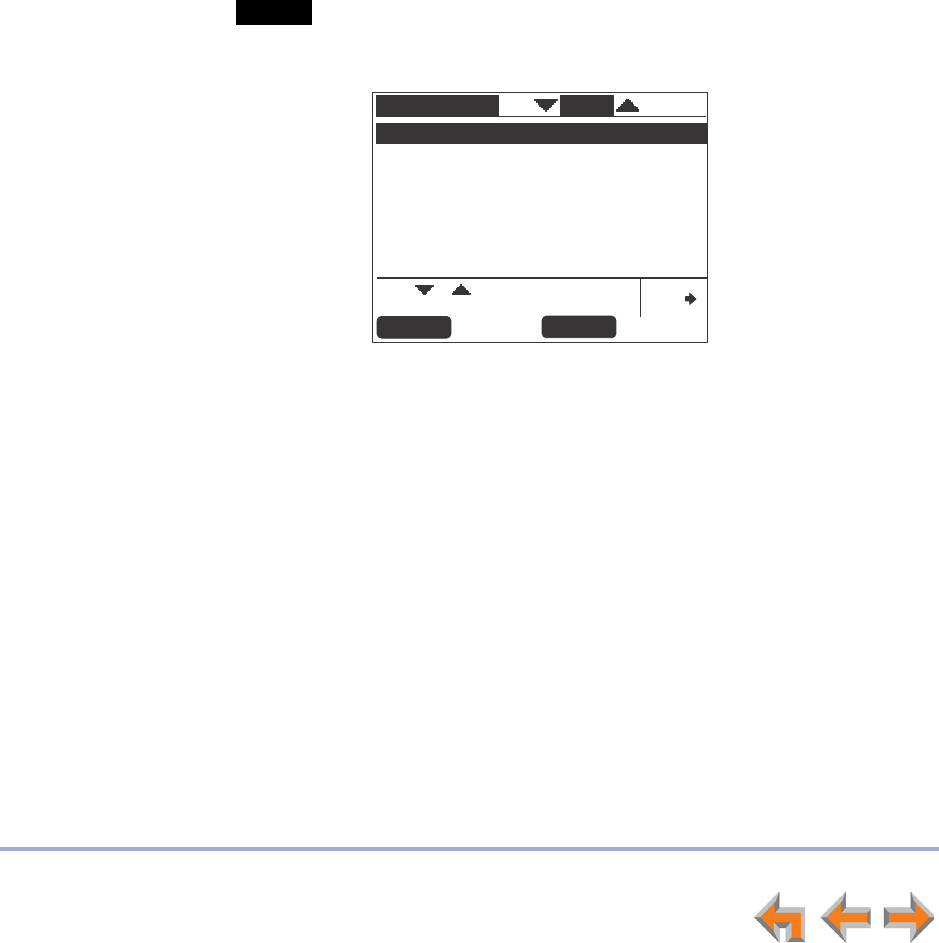
Accessing Items in Lists 52
Syn248 SB35031 Deskset User’s Guide Back to Contents
Accessing the Held Calls List
When you or any other Deskset user puts an external call on hold, the call is displayed
in the Held Calls list. From the Held Calls list, you can view and retrieve any held call in
the system.
Your Deskset Line key LEDs also show which lines have held calls on them, but only for
the lines assigned to that Deskset. All Desksets in the system may not have the same
lines assigned to them. For example, your department may have lines 1 to 4 assigned to
your Desksets. Another department in your company may have lines 5 to 8 assigned to
their Desksets. Using the Held Calls list at your Deskset, you can access calls being held
on lines 1 to 8.
You can view and retrieve any held call in the system from the Held Calls list. If the held
call is on a line that is not assigned to your Deskset, retrieving the call will route it to the
Intercom line on your Deskset.
To view and retrieve calls from the Held Calls list:
1. Press .
The Calls on Hold screen appears.
2. Press or to highlight the desired call.
3. Press SELECT to retrieve the call.
If the held call used a line that was not assigned to your Deskset, the call becomes
active on your Intercom line. Any previous active call on your Deskset goes on hold.
HoldList
Calls on Hold
Graham Bell Line 3 3:32
Line 1 2:10
Amy Lee Line 8 1:46
1-800-123-1234 Line 2 0:12
Press or to scroll, then press
Retrieve to un-hold call.
Quick
Dial
Page
1/4
Retrieve
Draft
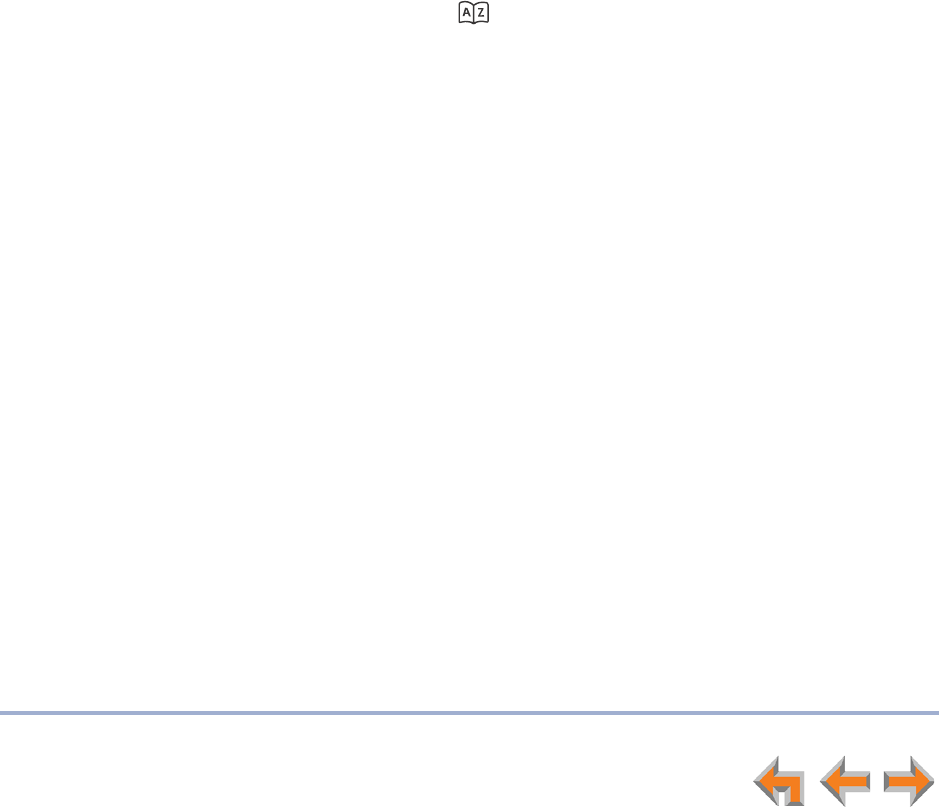
Directory 53
Syn248 SB35031 Deskset User’s Guide Back to Contents
CHAPTER
6
D
IRECTORY
The Syn248 system provides three Directory lists. By default, the system displays entries
from all three lists when you press (DIRECTORY). See “Viewing Directory Entries” on
page 55 to learn how you can limit this display to one of the three lists.
Personal — You can add, edit, and delete up to 50 entries in this Personal
directory from the Deskset or the WebUI (referred to as “Extension Directory” on
the WebUI). These entries are available only at your extension.
System — This public directory is created and maintained by the system
administrator. You can view and sort this directory, but you cannot modify it.
Extension — This is a list of all extensions in the system. It contains the Display
Names that the administrator entered and the extension number of each
Deskset. You can view and sort this directory, but you cannot modify it.
“Using the Directory” on page 54
“Viewing Directory Entries” on page 55
“Creating a New Personal List Entry” on page 57
“Editing a Personal List Entry” on page 58
“Storing Directory Entries from the Call Log or Redial List” on page 59
“Sorting Directory Entries” on page 61.
Draft
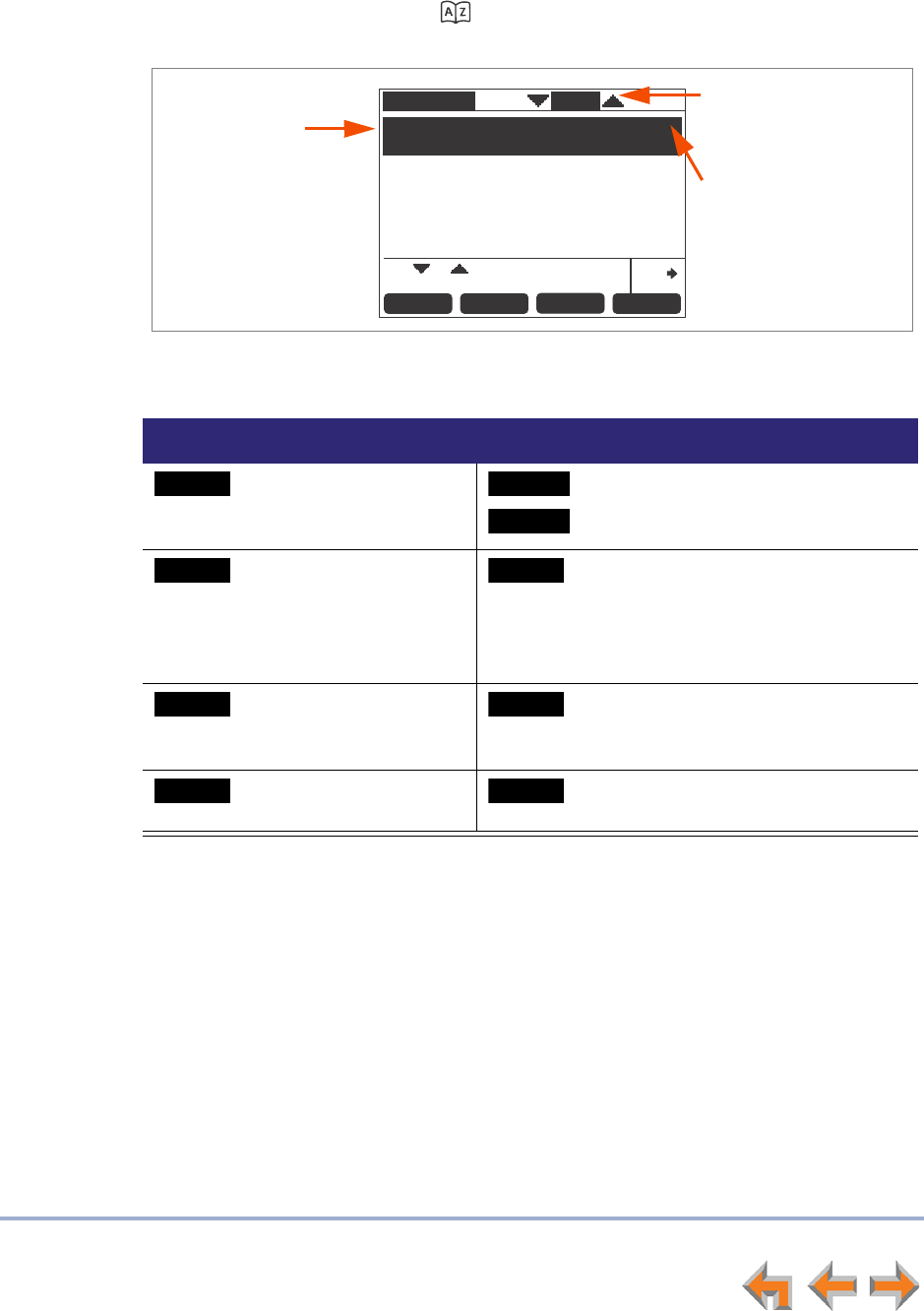
Directory 54
Syn248 SB35031 Deskset User’s Guide Back to Contents
Using the Directory
Access the Directory by pressing (DIRECTORY) to display the screen shown in
Figure 15.
Figure 15. Directory Screen Description
Table 12. Directory Screen Description
Key Description Key Description
Creates a new entry in
the Personal list.
Switches between first and last
name sort in Directory and
Extension list.
Dials the selected entry.
Moves to the next set of soft keys. If
this key appears, there are more than
eight soft keys available.
More 1/3
indicates that you are on page one
of three.
Allows you to change
previously entered
information.
Deletes the highlighted entry.
Opens the Directory List
Options menu.
Displays entry details.
Directory
ABC Accountants Personal
503-555-0194
Amy Lee 203
Angela Martin 732-555-7318
Charlie Johnson 888-883-2445
David Carter 443-555-0625
Davis Caterer 317-555-0129
Call
1/48
LastNme
Quick
Dial
New More 1/3
Use or to scroll or use dial pad
for quick search.
Full name and
number displayed
in highlight bar
Position in list/
number of items
in list
Entry classification
(Personal, System,
or Extension)
New
FirstNme
LastNme
Call
More
Edit
Delete
List
Details
Draft
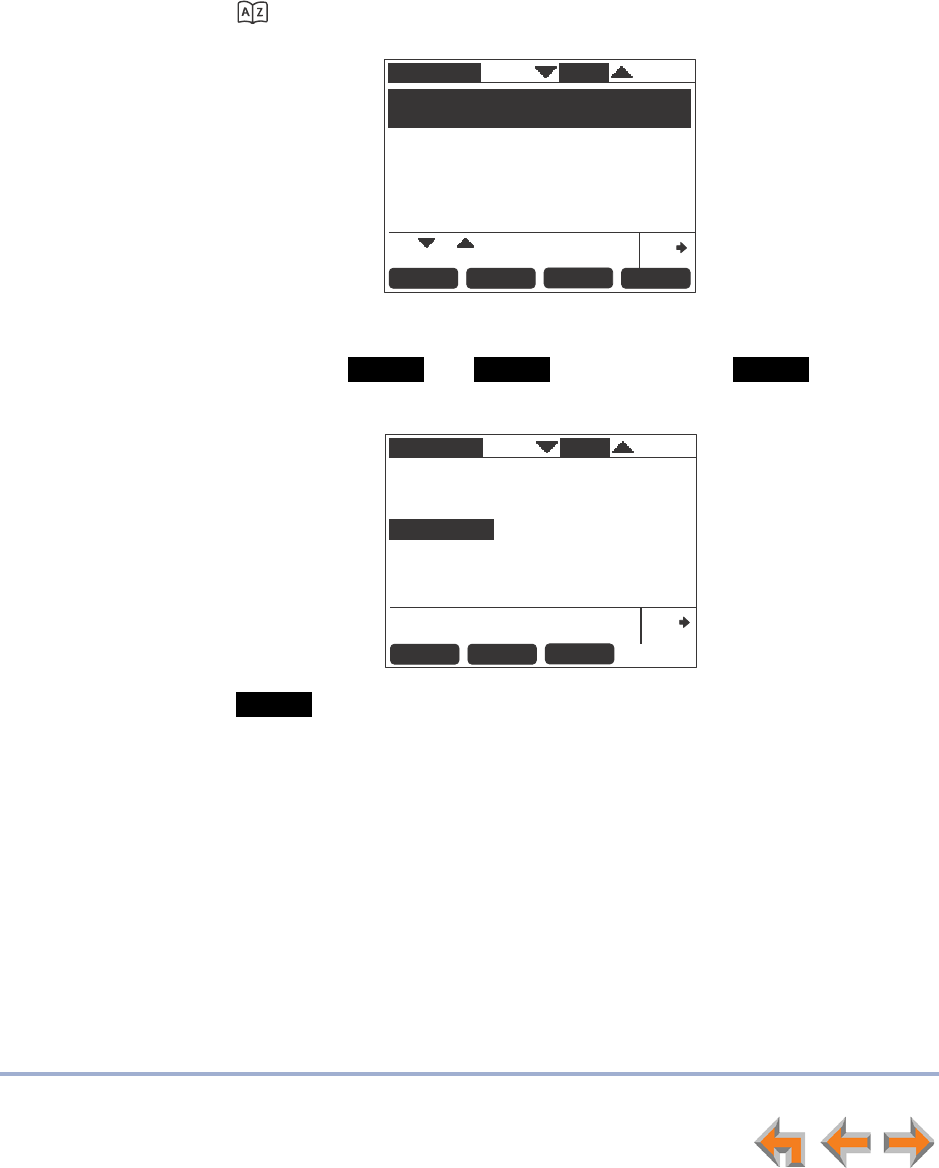
Directory 55
Syn248 SB35031 Deskset User’s Guide Back to Contents
Viewing Directory Entries
You can view all Directory entries in one list, or you can view only the Personal list,
System list, or Extension list. Within a list, you can press a dial-pad key to see the first
name that starts with the first letter on that key. If there is no match, the set displays the
next entry in the alphabetical list.
To view and call Directory entries:
1. Press (DIRECTORY). The Directory list appears.
2. Press or to highlight the desired entry.
3. If necessary, press until appears, then press to see names
and numbers that are too long to be displayed on the Directory list.
4. Press to dial the displayed phone number.
Directory
ABC Accountants Personal
503-555-0194
Amy Lee 203
Angela Martin 732-555-7318
Charlie Johnson 888-883-2445
David Carter 443-555-0625
Davis Caterer 317-555-0129
Call
1/48
LastNme
Quick
Dial
New More 1/3
Use or to scroll or use dial pad
for quick search.
More
Details
Details
Directory
ABC Accountants
503-555-0194
[Personal]
To call, press SELECT or Call.
1/48
Quick
Dial
Call
DeleteEdit
Call
Draft
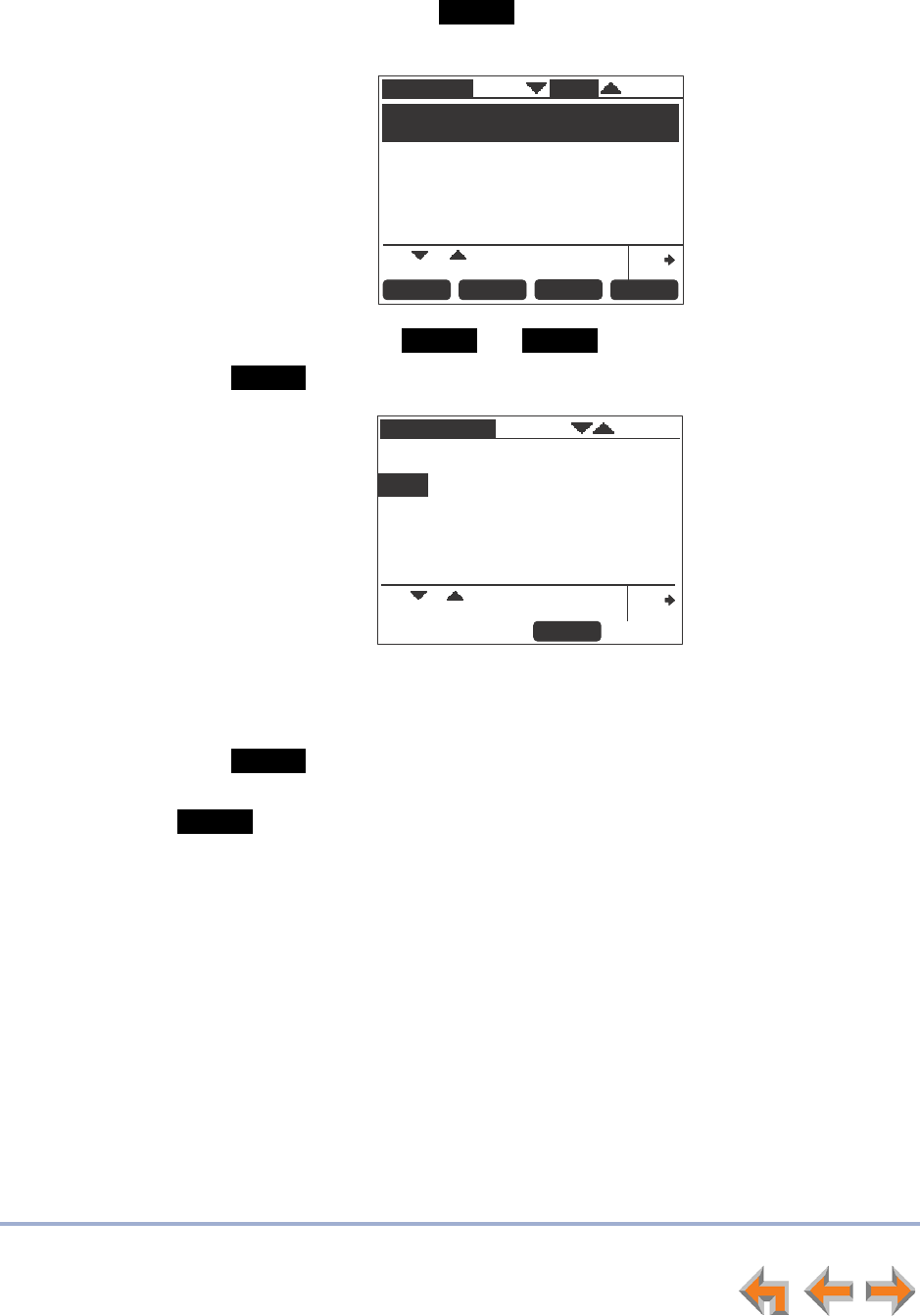
Directory 56
Syn248 SB35031 Deskset User’s Guide Back to Contents
To change Directory settings:
1. From the Directory list, press to display the second set of Directory soft
keys.
If the Directory is empty, and do not appear.
2. Press . The Directory List appears.
3. Press or to highlight the desired list, and press SELECT.
The selected list appears.
4. Press to display the Directory List screen again.
5. To change the default list, press or to highlight the desired list, then press
.
6. Press CANCEL to return to the Directory.
More 1/3
Directory
ABC Accountants Personal
503-555-0194
Amy Lee 203
Angela Martin 732-555-7318
Charlie Johnson 888-883-2445
David Carter 443-555-0625
Davis Caterer 317-555-0129
List
1/48
Delete
Quick
Dial
Edit More 2/3
Use or to scroll or use dial pad
for quick search.
Edit
Delete
List
Directory List
1. All
3. System list
2. Personal list
Use or to scroll then press
SELECT or press 1-4.
Quick
Dial
4. Extension list
List:
[Set]
Set?
List
Set?
Draft
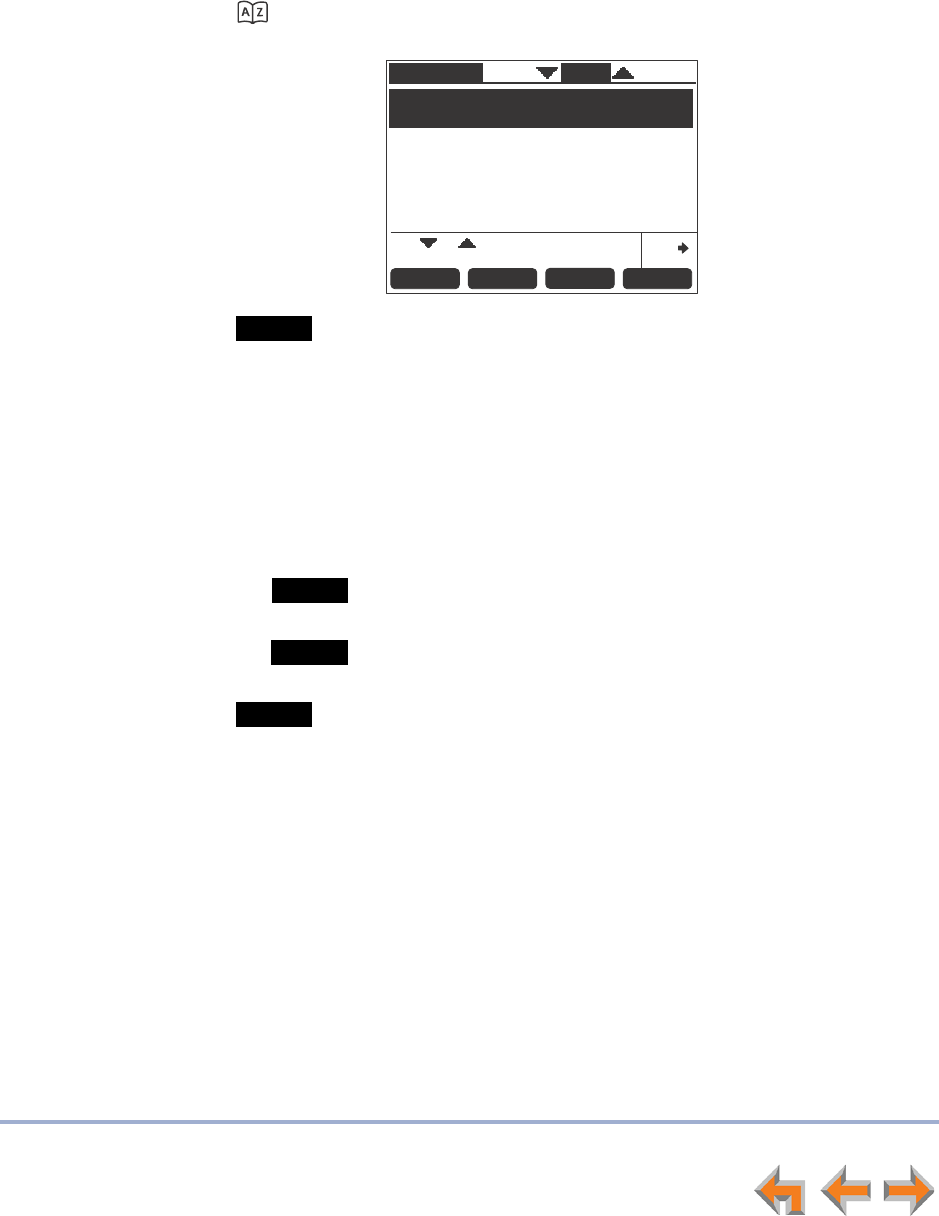
Directory 57
Syn248 SB35031 Deskset User’s Guide Back to Contents
Creating a New Personal List Entry
You can add up to 50 personal entries to the Directory. These personal entries are only
visible at your extension.
To create a new Personal list entry:
1. Press (DIRECTORY) to display the Directory.
2. Press to display the Personal Entry screen with the cursor positioned in
the First Name field.
3. Edit the First Name, Last Name, and Phone # fields using the dial pad. See
“Deskset Dial-Pad Entry” on page 18. The name text fields are limited to 20
characters each and the number field is limited to 32 digits.
4. When editing the entry, you have the following options:
Press or to move the cursor.
Press or to move to the previous or next field.
Press to erase the highlighted character if there is one, or else the
character before the cursor.
Press to insert a two-second pause into the phone number. The pause
appears as a P in the field and is counted as a digit.
5. Press . The Directory appears.
Directory
ABC Accountants Personal
503-555-0194
Amy Lee 203
Angela Martin 732-555-7318
Charlie Johnson 888-883-2445
David Carter 443-555-0625
Davis Caterer 317-555-0129
Call
1/48
LastNme
Quick
Dial
New More 1/3
Use or to scroll or use dial pad
for quick search.
New
Backspc
Pause
Save
Draft
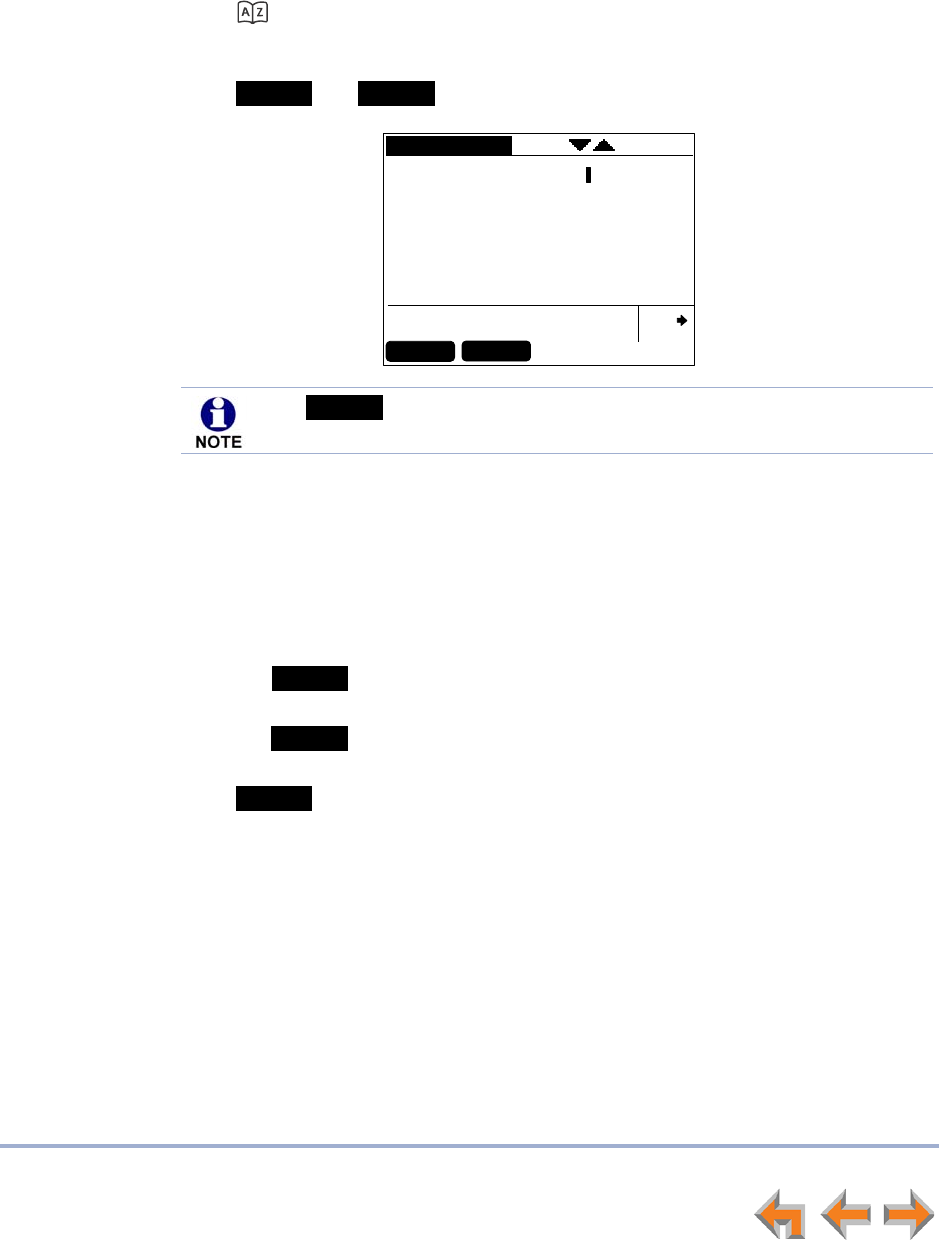
Directory 58
Syn248 SB35031 Deskset User’s Guide Back to Contents
Editing a Personal List Entry
You can edit any Personal list entry while viewing the Directory.
To edit a Personal list entry:
1. Press (DIRECTORY) to display the Directory.
2. Press or to highlight a Personal entry.
3. Press and . The Personal Entry edit screen appears.
4. Edit the First Name, Last Name, and Phone # fields using the dial pad. See
“Deskset Dial-Pad Entry” on page 18. The name text fields are limited to 20
characters each and the number field is limited to 32 digits.
5. When editing the entry, you have the following options:
Press or to move the cursor.
Press or to move to the previous or next field.
Press to erase the highlighted character if there is one, or else the
character before the cursor.
Press to insert a two-second pause into the phone number. The pause
appears as a P in the field and is counted as a digit.
6. Press . The Directory appears.
More 1/3
Edit
Personal Entry
Use dial pad to enter letters. Quick
Dial
Backspc
Save
First Name: Graham Bell
Last Name:
Phone #: 2325550176
The key is not available when a System or Extension entry is
highlighted in the Directory list.
Edit
Backspc
Pause
Save
Draft
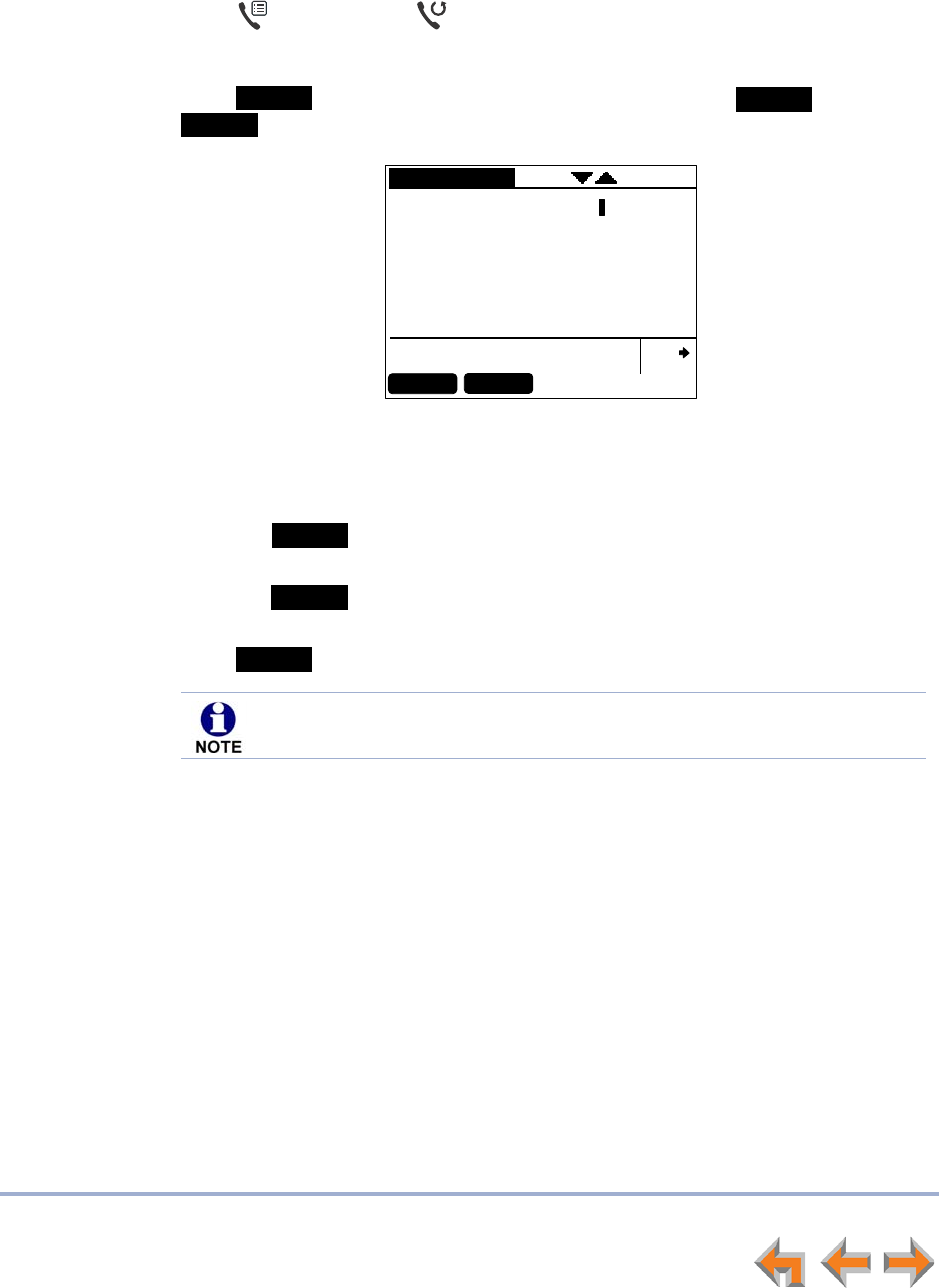
Directory 59
Syn248 SB35031 Deskset User’s Guide Back to Contents
Storing Directory Entries from the Call Log or Redial List
To store a Call Log or Redial entry into your Personal list:
1. Press (CALL LOG) or (REDIAL) to access either list.
2. Press or until you highlight the desired entry.
3. Press to store the entry in your Personal list. (Press to display
on the Call Log screen.) The Personal Entry screen appears.
The Deskset automatically fills in the name and number, if available.
If necessary, edit the name and number. Press to move the cursor to the Last
Name: and Phone #: entries.
Press to erase the highlighted character if there is one, or else the
character before the cursor.
Press to insert a two-second pause into the phone number. The pause
appears as a P in the field and is counted as a digit.
4. Press to save the entry.
Store
More 1/3
Store
Personal Entry
First Name: Mary Williams
Last Name:
Phone #: 8885557702
Use dial pad to enter letters.
Quick
Dial
Backspc
Save
Backspc
Pause
Save
The system does not check for duplicate entries.
Draft
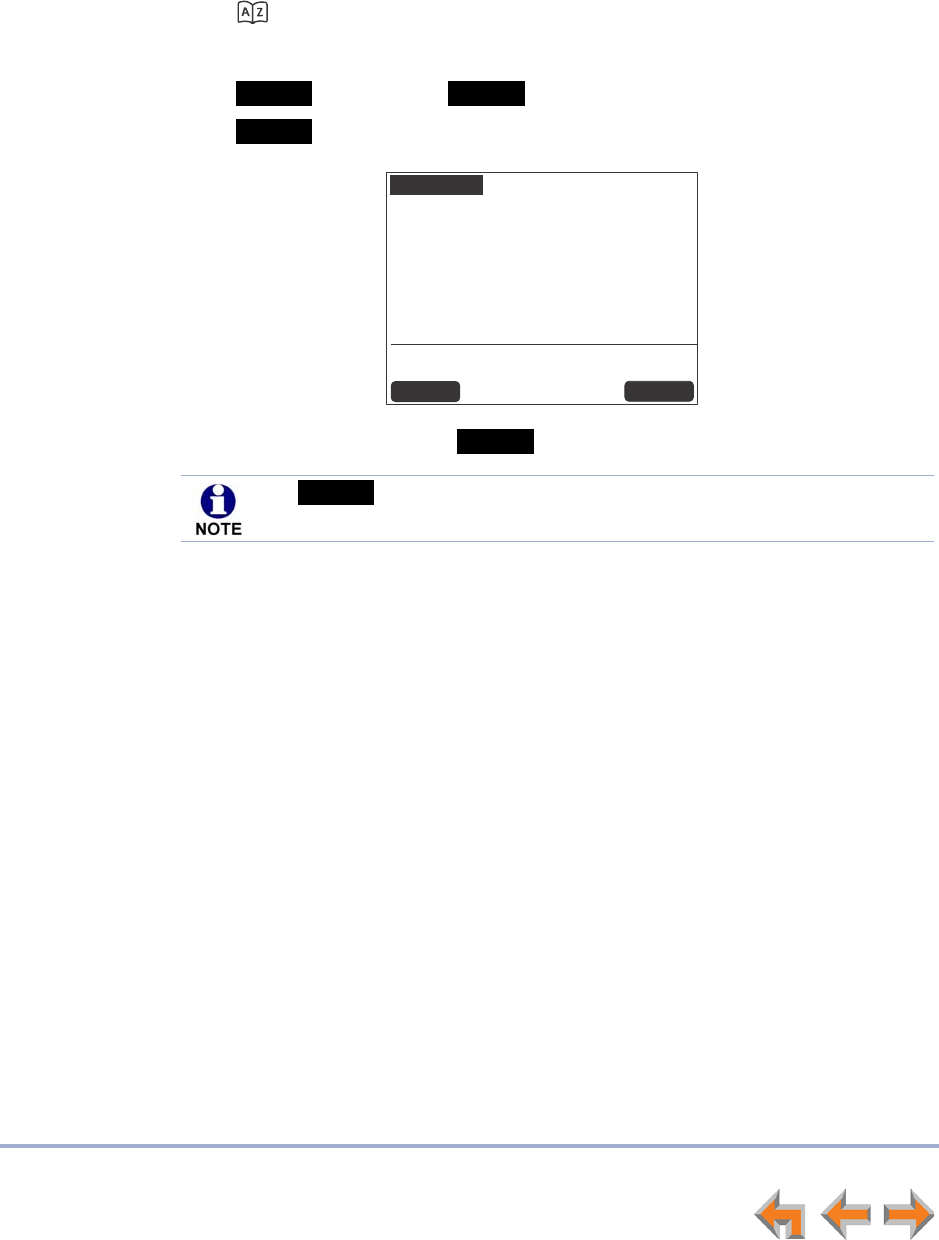
Directory 60
Syn248 SB35031 Deskset User’s Guide Back to Contents
Deleting a Personal List Entry
You can delete any one of your personal list entries while viewing the Directory.
To delete a Personal list entry:
1. Press (DIRECTORY) to display the Directory.
2. Press or to highlight the entry to be deleted.
3. Press to display the soft key.
4. Press . The confirmation screen appears.
5. To confirm the deletion, press .
More 1/3
Delete
Delete
Directory
Are you sure you want to
delete this entry ?
Press Yes to delete or No to cancel.
No
Yes
Yes
The key is not available when a System or Extension entry is
highlighted in the Directory.
Delete
Draft
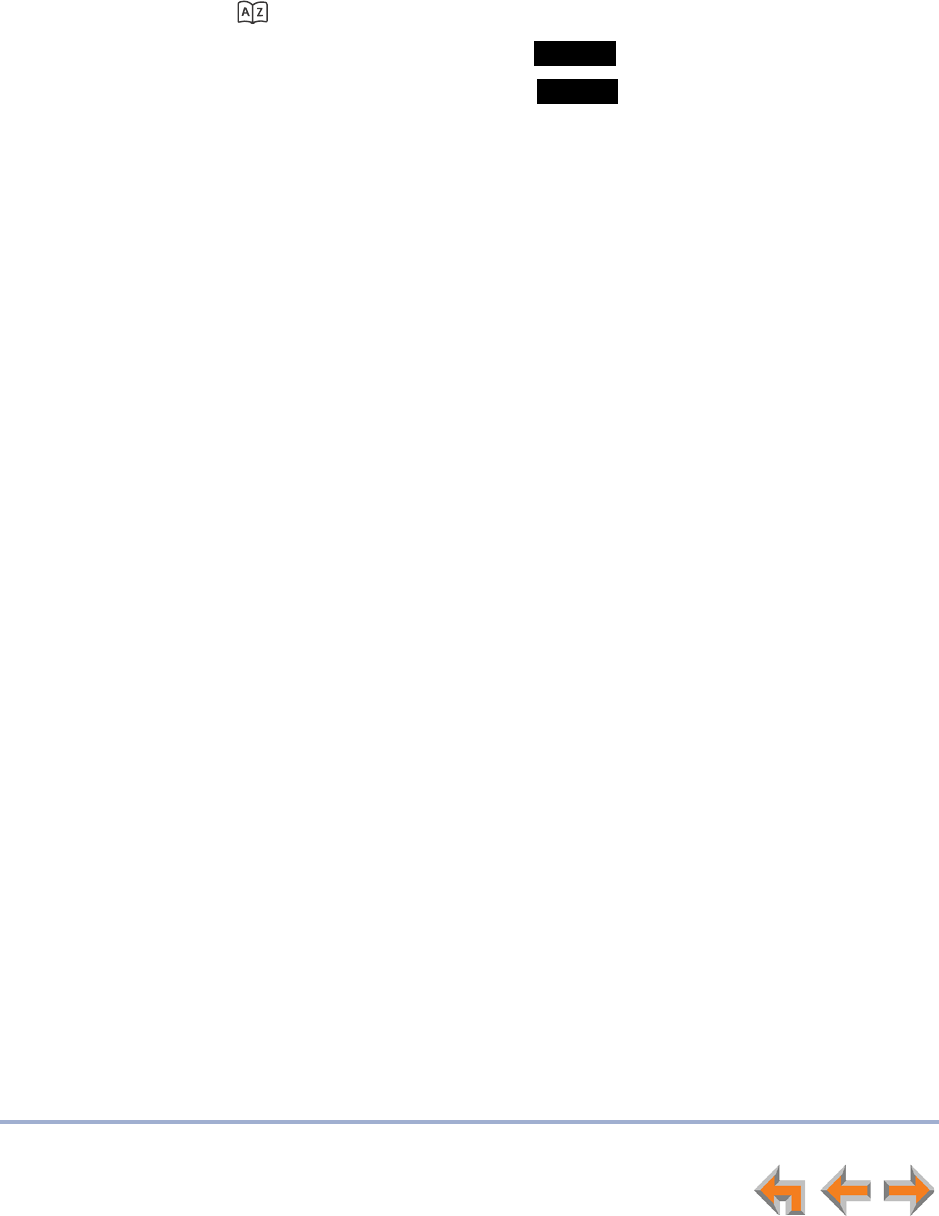
Directory 61
Syn248 SB35031 Deskset User’s Guide Back to Contents
Sorting Directory Entries
The Directory entries are sorted by first or last names. When you use the dial pad to
search, the system searches for the names in the sort order.
To sort Directory entries:
1. Press (DIRECTORY) to display the Directory.
2. To sort the entries by last name, press .
To sort the entries by first name, press .
LastNme
FirstNme
Draft

Voicemail 62
Syn248 SB35031 Deskset User’s Guide Back to Contents
CHAPTER
7
V
OICEMAIL
Your Deskset records and saves incoming voice messages. The NEW MESSAGE LED,
shown in Figure 16 on page 63, lights up when there is at least one new message.
Each message can be up to 2 minutes long. Your Deskset mailbox has 30 minutes of
recording time and can hold up to 100 messages.
The following sections describe how to listen to and manage voicemail on your Deskset:
“Voicemail Overview” on page 63
“Accessing Your Messages” on page 67
“Accessing Your Voicemail Remotely” on page 72.
Draft
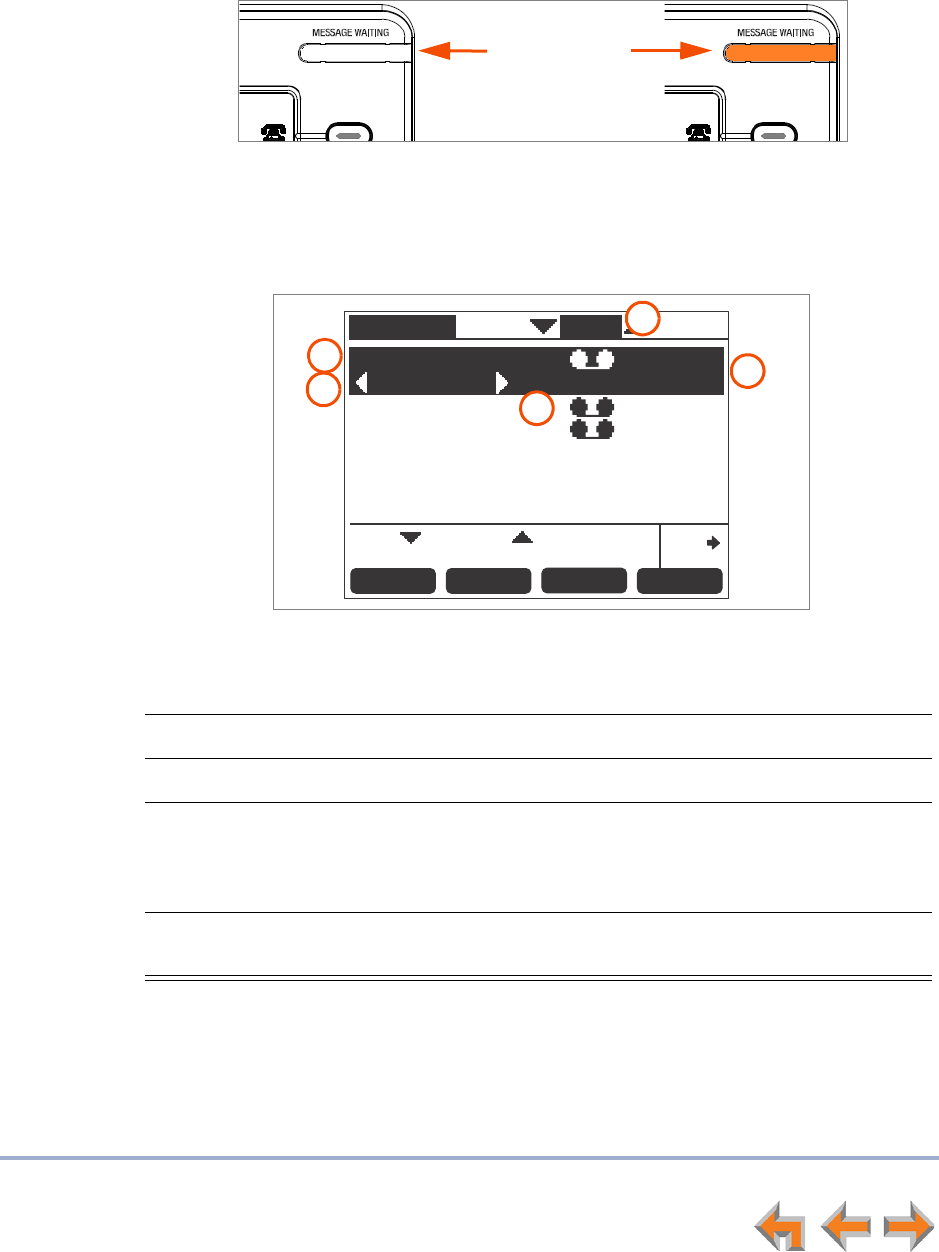
Voicemail 63
Syn248 SB35031 Deskset User’s Guide Back to Contents
Voicemail Overview
When there is at least one new message, the NEW MESSAGE LED lights up, as shown in
Figure 16.
Figure 16. Message Waiting LED
To access your messages, see “Accessing Your Messages” on page 67. Messages appear
in a list as shown in Figure 17. Pressing or highlights messages in the list. Pressing
or displays options for dialing the number.
Figure 17. Messages List
1. Name and number displayed
2. Arrows Indicate dialing options available.
3. Exclamation mark (!) Indicates a new message.
4. Time and date when
message was recorded
Both are shown for highlighted messages. Only the
time appears for unhighlighted messages received
on the day they are viewed, and only the date
appears for unhighlighted older messages.
5. Message Counter Highlighted message number and total number of
messages.
MESSAGE
WAITING LED
Messages
Graham Bell ! 10:17a
232-555-0176 Feb 25
Private ! 8:05a
Mary Williams ! Feb 14
Press for next or for previous
message.
Call
1/3
DelMsg
Quick
Dial
Play More 1/3
1
23
4
5
Draft
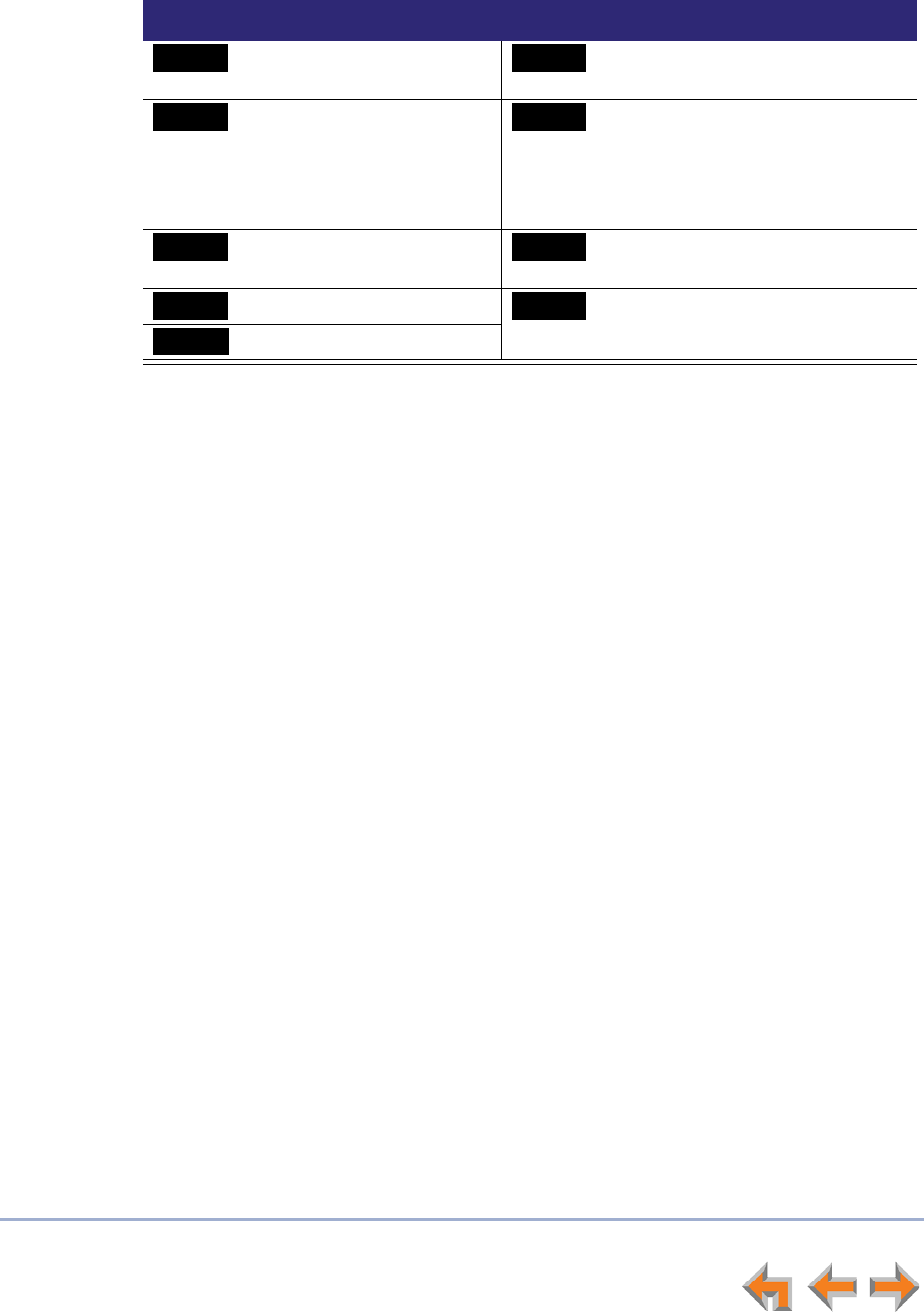
Voicemail 64
Syn248 SB35031 Deskset User’s Guide Back to Contents
Table 13. Messages List Soft Key Description
Key Description Key Description
Plays message. Deletes highlighted voicemail
message from Message list.
Dials the selected entry. Moves to the next set of soft keys.
If this key appears, there are more
than eight soft keys available.
More 1/3 indicates that you are
on page one of three.
Initiates Message Forward
function.
Deletes all messages.
Plays all messages. Marks an old message as new.
Marks all messages as old.
Play
DelMsg
Call
More
FwdMsg
DelAll
PlayAll
MrkNew
ClerNew
Draft
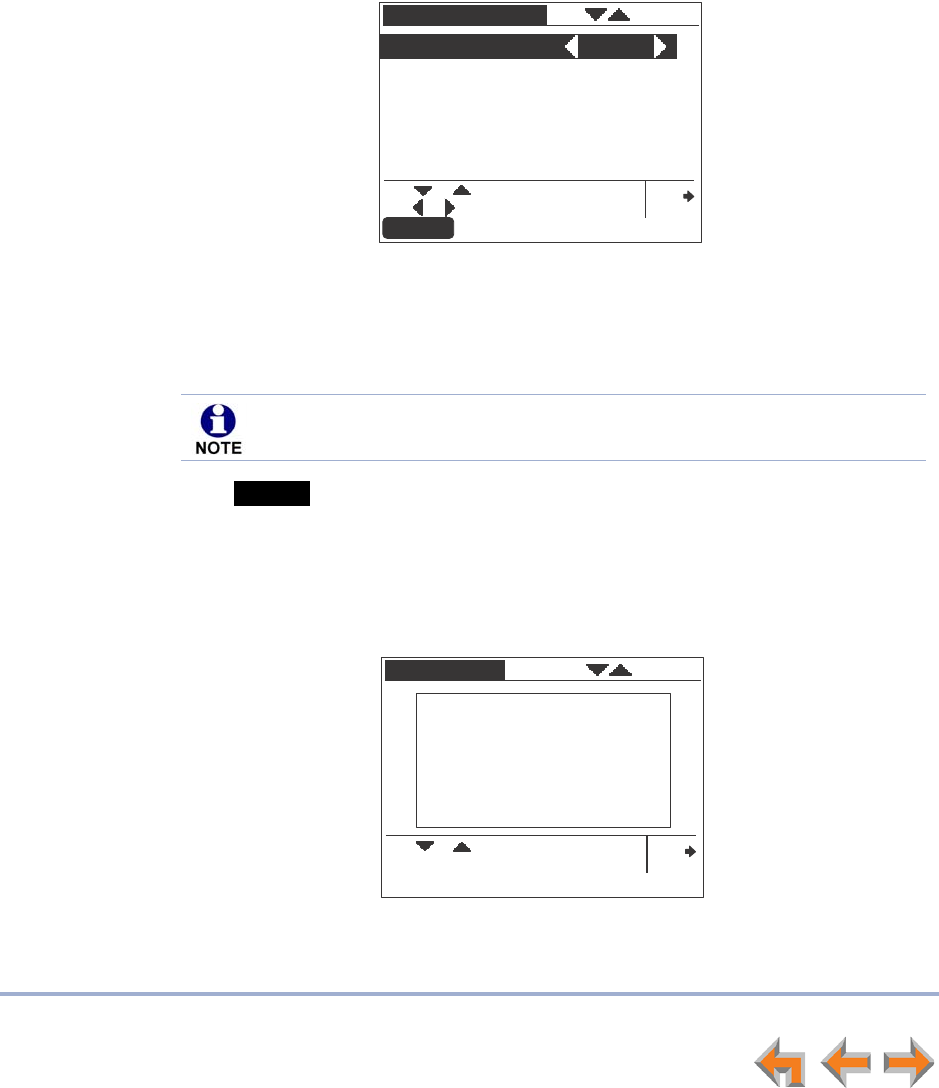
Voicemail 65
Syn248 SB35031 Deskset User’s Guide Back to Contents
Selecting Your Voicemail Greeting
You can have three different greetings for your voicemail. You can then choose the one
that is currently appropriate. You can record a Primary Greeting to use most of the
time and an Alternate Greeting for when you are out of the office. The Pre-Set
Greeting, “Please leave a message after the tone,” is used when no other greeting is
recorded.
To select the current greeting:
1. Press MENU, then 2, and then 1 to display the Message Greetings menu.
Press or to select the Pre-Set, Primary, or Alternate greeting to be
played to external callers.
To record a new Primary or Alternate greeting, see “Recording a Greeting” on
page 66.
2. Press to save the greeting. The system checks to see if the selected greeting
has been recorded.
If the greeting has been recorded, the User Settings menu appears.
If a greeting has not been recorded, the Greeting Not Recorded screen
appears and the Pre-Set Greeting is used. The User Settings menu appears.
Message Greetings
1. Current Greeting Primary
2. Play/Rec Primary Greeting
Use or to move highlight.
Use or to cycle through options.
Quick
Dial
Save
3. Play/Rec Alternate Greeting
4. Play Pre-Set Greeting
You cannot delete or record over the Pre-Set greeting.
Save
User Settings
(Prédéfini)
3. Auto Answer
2. Call Forward All
Use or to scroll then press
SELECT or press 1-8.
Quick
Dial
4. Voicemail Memory
5. Name Recording
1. Greetings
Greeting Not Recorded
Pre-Set greeting will be used
instead.
Draft
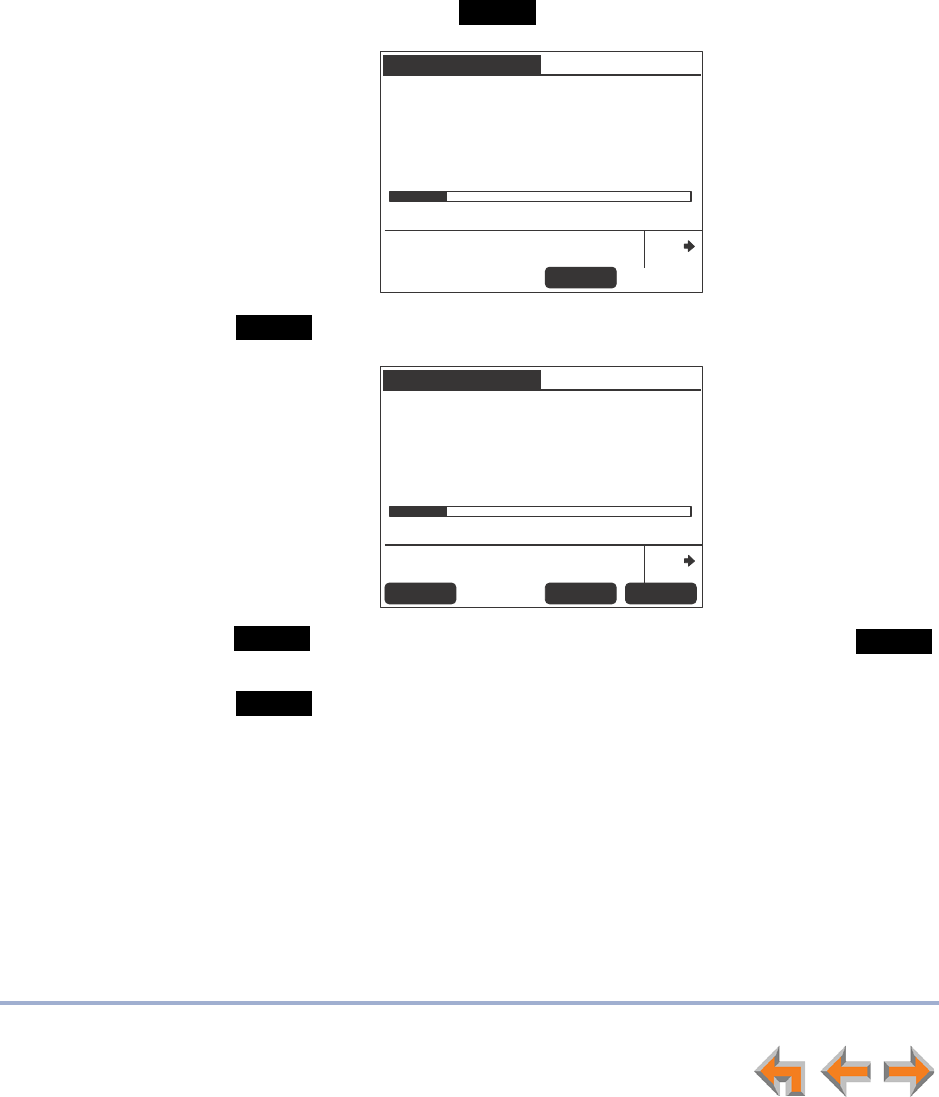
Voicemail 66
Syn248 SB35031 Deskset User’s Guide Back to Contents
Recording a Greeting
You can record a greeting up to 60 seconds long. The procedure for recording a Primary
or Alternate Greeting is the same.
To record either a Primary or Alternate greeting:
1. Press MENU, then 2, and then 1 to display the Message Greetings menu.
2. Press either 2 (Primary) or 3 (Alternate) to select the greeting.
If you wish to record the greeting on the corded handset, lift the handset.
3. To record your greeting, press . The recording screen appears.
4. Press when you are finished. The message review screen appears.
5. Press to review the message. The recording is saved until you press
again.
6. Press to return to the Message Greetings menu.
Record
Play/Rec Greeting
Record for up to one minute. Press
Stop when done.
Stop
Quick
Dial
Primary Greeting
RECORDING
Duration: 10s Max allowed: 60s
Stop
Play/Rec Greeting
Quick
Dial
Primary Greeting
RecordPlay Exit
Duration: 10s Max allowed: 60s
Delete
Play
Record
Exit
Draft
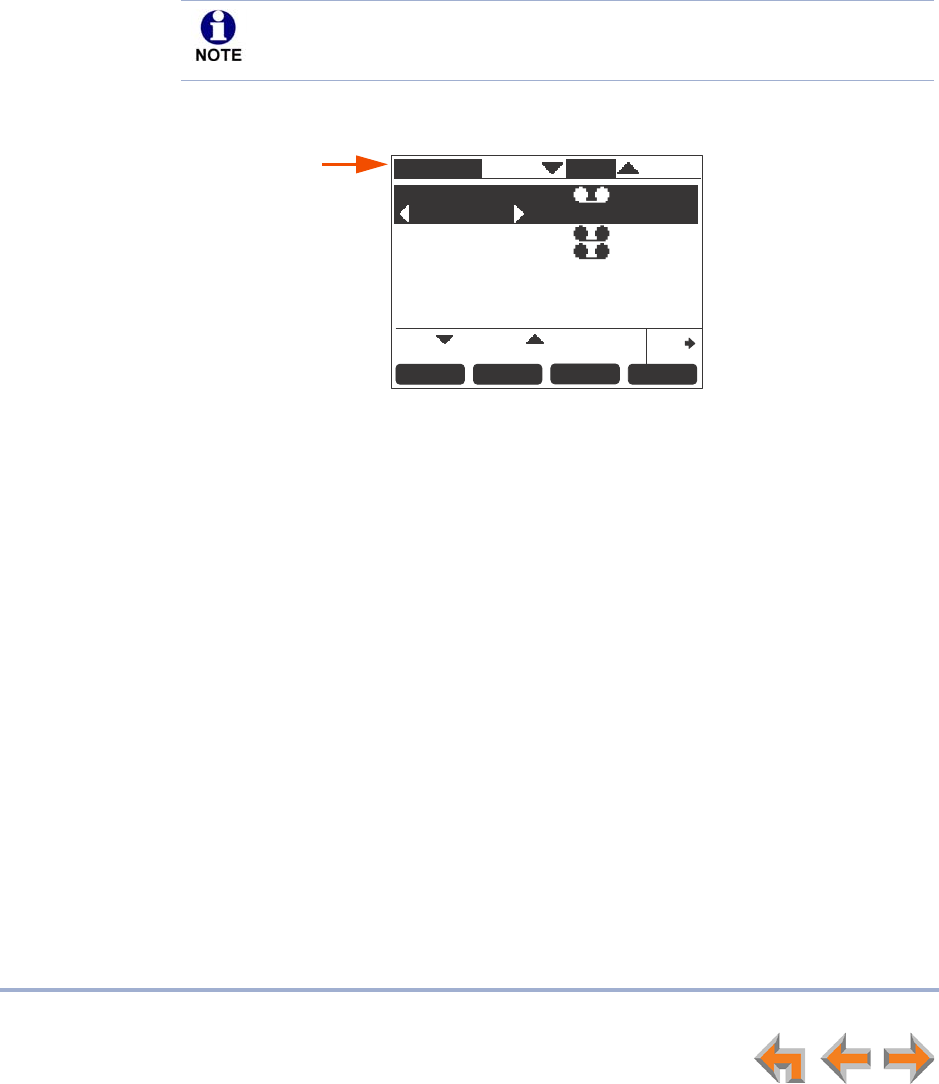
Voicemail 67
Syn248 SB35031 Deskset User’s Guide Back to Contents
Accessing Your Messages
You can access just your new messages by pressing SELECT on the Idle screen. A list of
your new messages appears. You can also access all messages (old and new) by pressing
MESSAGES. A list of all messages appears.
You can play either a single message or all of your voicemail messages.
To access your voicemail:
1. From the Idle screen, press MESSAGES. If necessary, use the dial pad to enter your
user password and press SELECT.
The Messages list appears.
2. Press or until you highlight the desired Messages entry.
3. Press CANCEL to exit the Voicemail list.
Once you have entered your password, you do not have to enter it again
while you are reviewing messages. However, if you exit the Messages
screen, you will need to enter your password to access the Message list.
Messages
Graham Bell ! 10:17a
232-555-0176 Feb 25
Private ! 8:05a
Mary Williams ! Feb 14
Press for next or for previous
message.
Call
1/3
DelMsg
Quick
Dial
Play More 1/3
“New Messages”
appears when you
press SELECT from
the Idle screen.
Draft
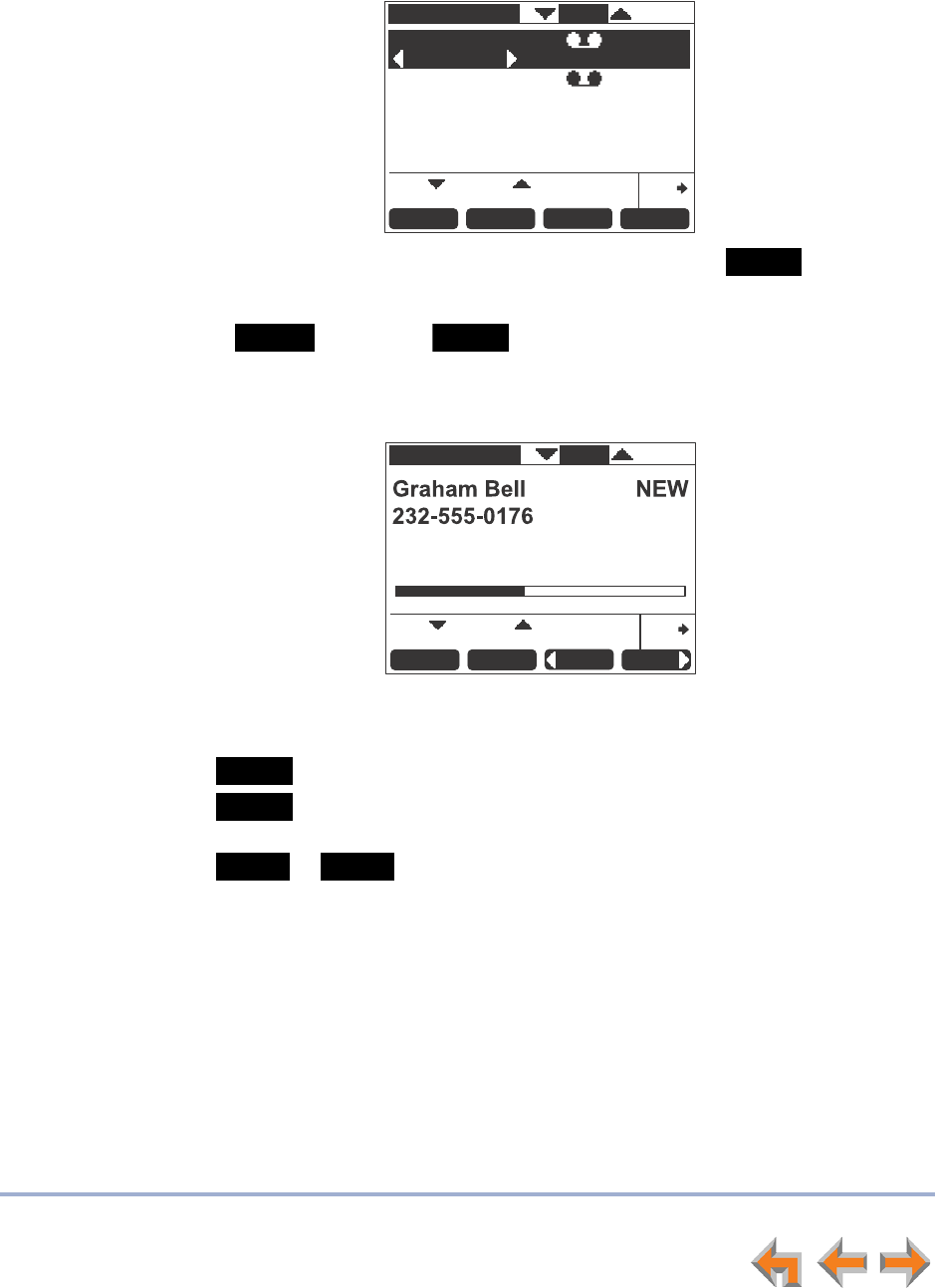
Voicemail 68
Syn248 SB35031 Deskset User’s Guide Back to Contents
To play new messages:
1. On the Idle screen, press SELECT. The New Messages list appears.
2. Press or to highlight the desired message, then press .
OR
Press , then press . All messages begin to play, starting with the
oldest. There is a short beep between messages.
NEW appears on messages that are being played for the first time.
During message playback, you can pick up the handset to listen to messages
privately, or press:
to pause message playback.
to delete the message. If there are more messages, the next message
is highlighted.
or to skip back or forward by 8 seconds.
or to skip to the previous or next message.
CANCEL to cancel playback and leave the highlight on the last played message.
New Messages
Graham Bell ! 10:17a
232-555-0176 Feb 25
Private ! 8:05a
Press for next or for previous
message.
Call
1/2
DelMsg
Quick
Dial
Play More 1/3
Play
More 1/3
PlayAll
New Messages
Press for next or for previous
message.
Jump
1/2
Delete
Quick
Dial
Pause Jump
10:17a
Duration: 0:24 Time Remaining: 0:14
Pause
Delete
Jump
Jump
Draft
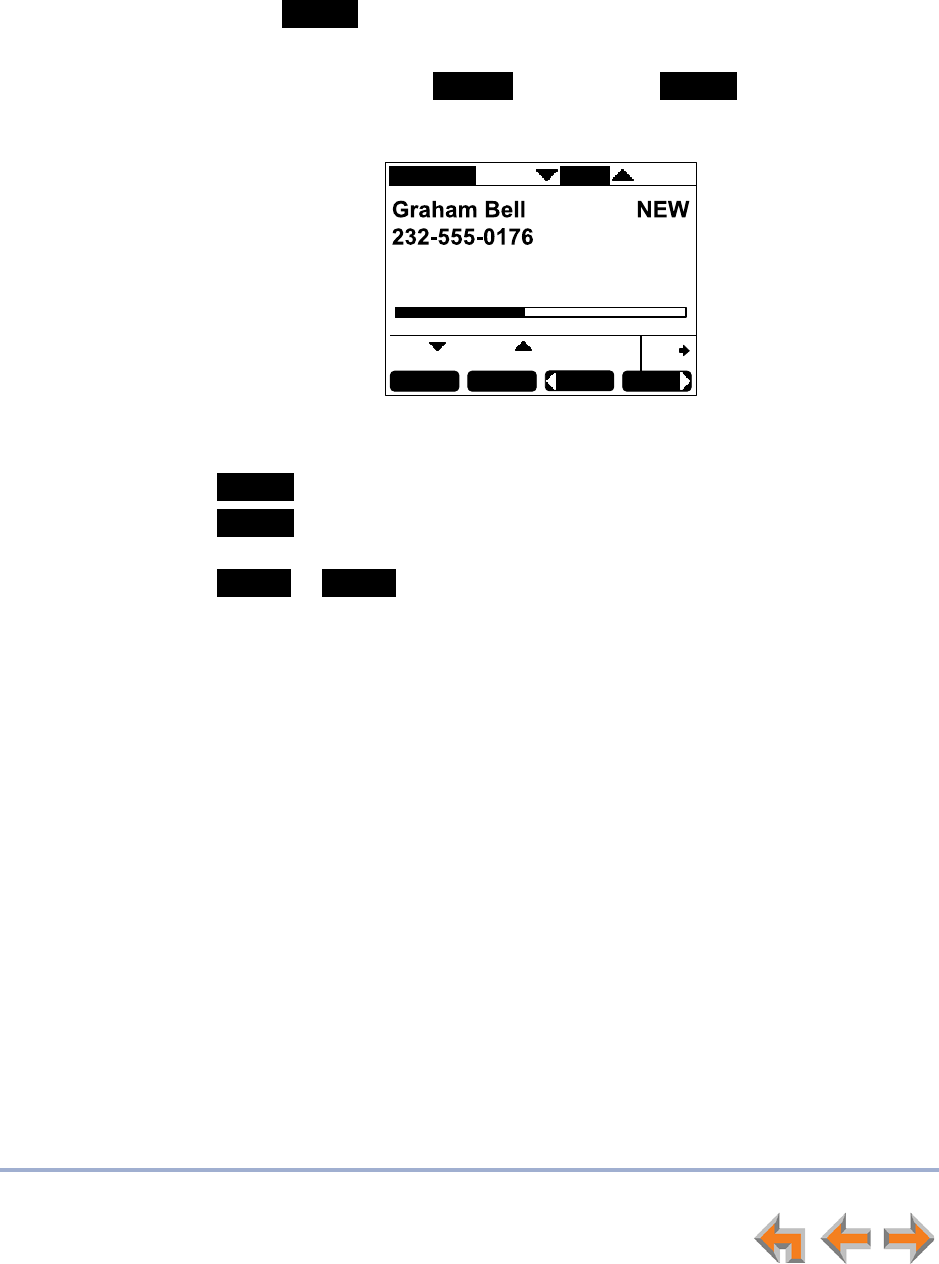
Voicemail 69
Syn248 SB35031 Deskset User’s Guide Back to Contents
To play old and new messages:
1. Press MESSAGES to view the entire Messages list. The list is sorted with the newest
messages at the top of the list.
2. To play a specific message only, press or to highlight the desired message,
then press .
OR
To play all messages, press and then press .
The Message Playback screen appears.
During message playback, you can pick up the handset to listen to messages
privately, or press:
to pause message playback.
to delete the message. If there are more messages, the next message
is selected.
or to skip back or forward by 8 seconds.
or to skip to the previous or next message.
CANCEL to cancel playback and leave the highlight on the last played message.
Play
More 1/3
PlayAll
Messages
Press for next or for previous
message.
Jump
2/2
Delete
Quick
Dial
Pause Jump
10:17a
Duration: 0:24 Time Remaining: 0:14
Pause
Delete
Jump
Jump
Draft
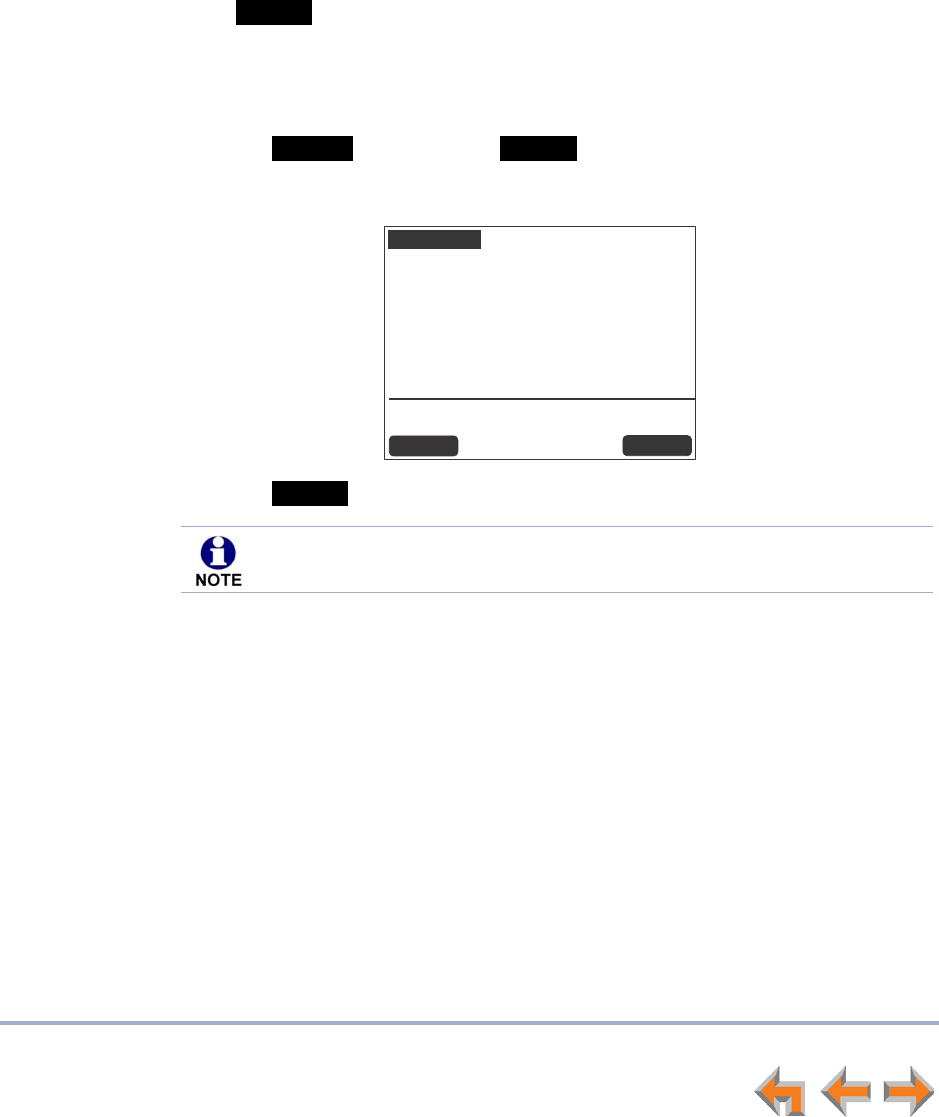
Voicemail 70
Syn248 SB35031 Deskset User’s Guide Back to Contents
Deleting Messages
You can delete a single message or all messages from the Messages list. You can also
delete a single message during message playback as described in “Accessing Your
Messages” on page 67.
To delete a single message or all messages:
1. Open the Messages list, as described in “Accessing Your Messages” on page 67.
2. Press or to highlight the desired message.
3. Press to delete the message.
The system removes the message from the list and highlights the next message.
OR
To delete all messages:
a. Press and then press .
The confirmation screen appears.
b. Press to confirm.
DelMsg
More 1/3
DelAll
Messages
Are you sure you want to
delete all messages ?
Press Yes to delete all messages. Press No to
cancel.
No
Yes
Yes
All messages are deleted, whether they are new (unheard) or not.
Draft
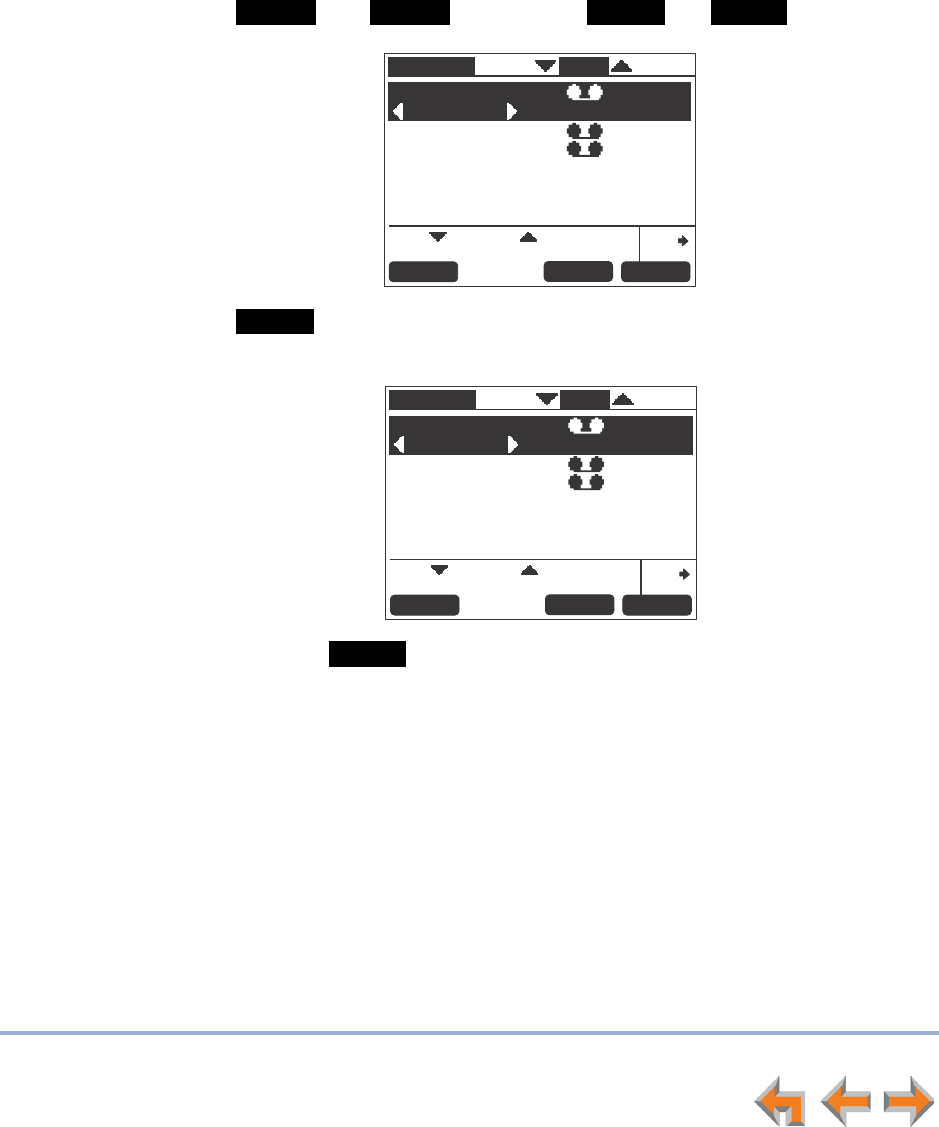
Voicemail 71
Syn248 SB35031 Deskset User’s Guide Back to Contents
New Message Status Indications (! Icons)
You can add a new message indication (! icon) or delete all new indications from the
Messages list. Messages appear with an exclamation point to indicate that the message
has not been played.
To clear and restore new message indications:
1. Open the Messages list, as described in “Accessing Your Messages” on page 67. The
Messages list appears.
2. Press then to display the and soft keys.
3. Press to clear all new message indications. The NEW MESSAGE LED turns
off.
4. If desired, press to restore the ! icon for a selected message, marking the
message as new again. The MESSAGE WAITING LED lights up again.
More 1/3
More 2/3
ClerNew
MrkNew
Messages
Graham Bell ! 10:17a
232-555-0176 Feb 25
Private ! 8:05a
Mary Williams ! Feb 14
Press for next or for previous
message.
ClerNew
1/3
Quick
Dial
MrkNew More 3/3
ClerNew
Messages
Graham Bell 10:17a
232-555-0176 Feb 25
Private 8:05a
Mary Williams Feb 14
Press for next or for previous
message.
ClerNew
1/3
Quick
Dial
MrkNew More 3/3
MrkNew
Draft
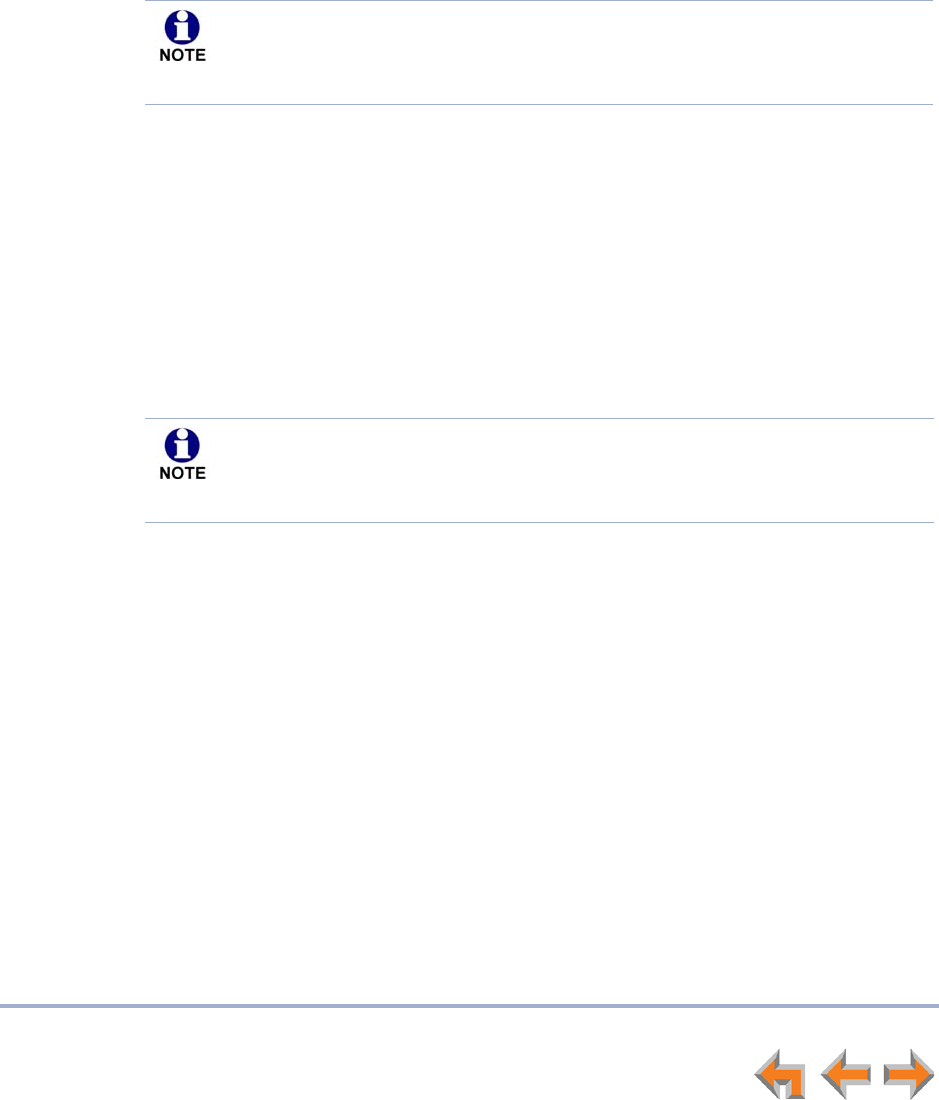
Voicemail 72
Syn248 SB35031 Deskset User’s Guide Back to Contents
Accessing Your Voicemail Remotely
Remote access allows you to listen to your messages or change the recorded greeting
when you are away from your Deskset. Follow the voice prompts and press the
appropriate dial-pad keys to navigate through the system. The voice prompts in a menu
list are repeated three times with a 5-second pause between. After three times with no
action, the voice says “Goodbye” and the remote call is disconnected.
Listening to the time/date stamp information of a message does not count as listening
to the message. If you access the voicemail through remote access and skip to another
message while the time or date is playing, the message is still considered new.
To access voicemail remotely:
1. Dial your company phone number.
2. After the call is answered, enter your extension number.
3. Immediately press the star twice (* *). You will hear, “Enter your access code,
followed by the pound sign.”
4. Enter your user password (if you have created one), then enter pound (#) to listen to
your messages.
Even if you have not created a password, you must still enter the pound (#).
To use this feature, your system must be set up for remote voicemail access. The
Phone Line Call Forward–No Answer setting and Intercom Call Forward–No
Answer setting must allow you to reach your extension’s voicemail. For more
information, consult your system administrator.
If your mailbox is full, your voicemail greeting does not play. Instead you hear
“Voicemail is full” before being disconnected. To access your voicemail when
your mailbox is full, quickly press the star key twice (* *) just as the “Voicemail
is full” announcement begins.
Draft
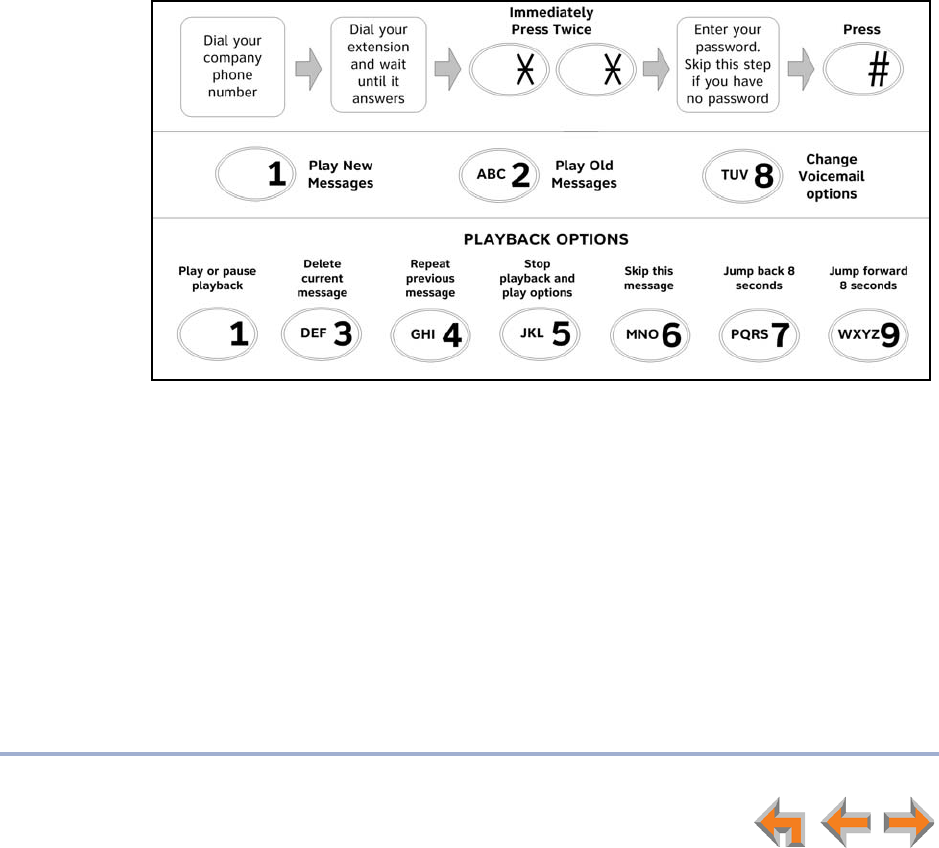
Voicemail 73
Syn248 SB35031 Deskset User’s Guide Back to Contents
To access voicemail remotely – listen to messages:
Once you have accessed the system, the main menu plays. From this menu you can listen
to old or new messages as illustrated in Figure 18. You have the following options:
To listen to new messages, press 1.
To listen to old messages, press 2.
To change voicemail options, press 8.
Once you press 1 or 2, and the messages start playing, you have the following options:
To stop message playback and replay options, press 5.
To delete the current message, press 3.
To repeat the previous message, press 4.
To skip this message, press 6.
To jump back 8 seconds, press 7.
To jump forward 8 seconds, press 9.
To return to the previous menu, press star
*
.
Figure 18. Remote Voicemail Access
Draft
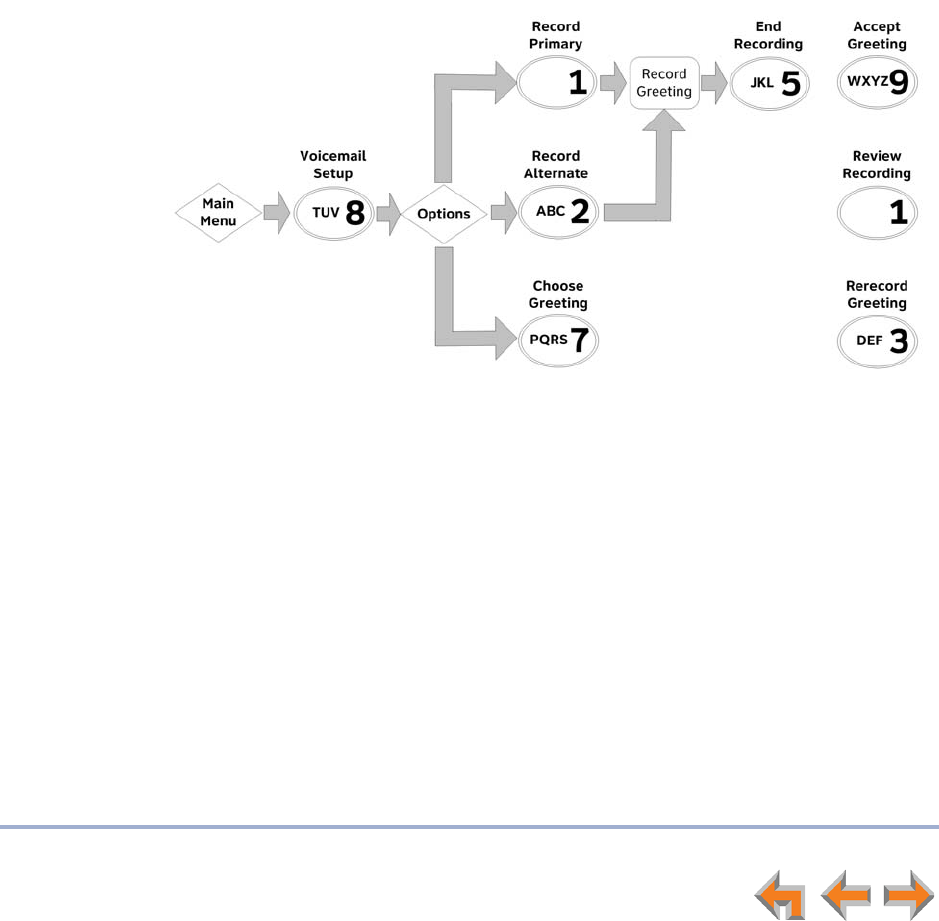
Voicemail 74
Syn248 SB35031 Deskset User’s Guide Back to Contents
To access voicemail remotely – voicemail greeting setup:
1. To set up the voicemail greeting, access the system and press 8. As illustrated in the
flow diagram in Figure 19, you have the following options:
To record a primary greeting, press 1.
To record an alternate greeting, press 2.
To choose the primary or alternate greeting, press 7.
2. Begin recording after the tone.
3. To end the recording, press 5.
4. Select one of the following options:
To review the recording, press 1.
To record over the greeting, press 3.
To accept the greeting, press 9.
Figure 19. Remote Voicemail Greeting Setup
Draft
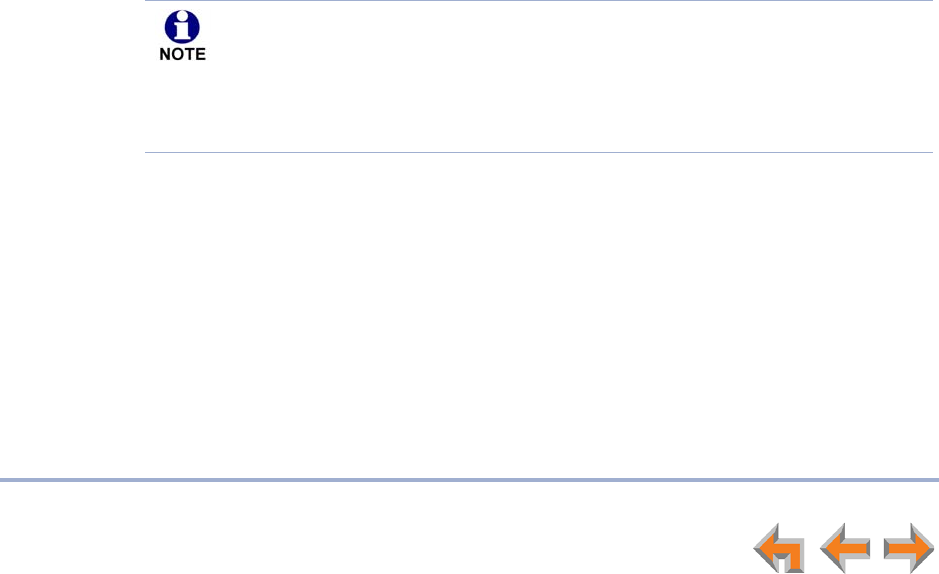
Call Log 75
Syn248 SB35031 Deskset User’s Guide Back to Contents
CHAPTER
8
C
ALL
L
OG
The Call Log provides available name and number information for the last 50 calls
received. The newest entries replace the oldest.
“Using the Call Log” on page 76
“Reviewing the Call Log List” on page 78
“Storing Call Log Entries” on page 80
“Deleting Call Log Entries” on page 81.
You can view the Call Log shown in Figure 20 on page 76 by pressing CALL LOG.
This system has a caller ID feature that works with the caller identification
service offered through your telephone service provider. There is a fee for this
service, and it might not be available in all areas. This telephone can provide
information only if both you and the caller are in areas offering caller
identification service, and if both telephone service providers use compatible
equipment.
Draft
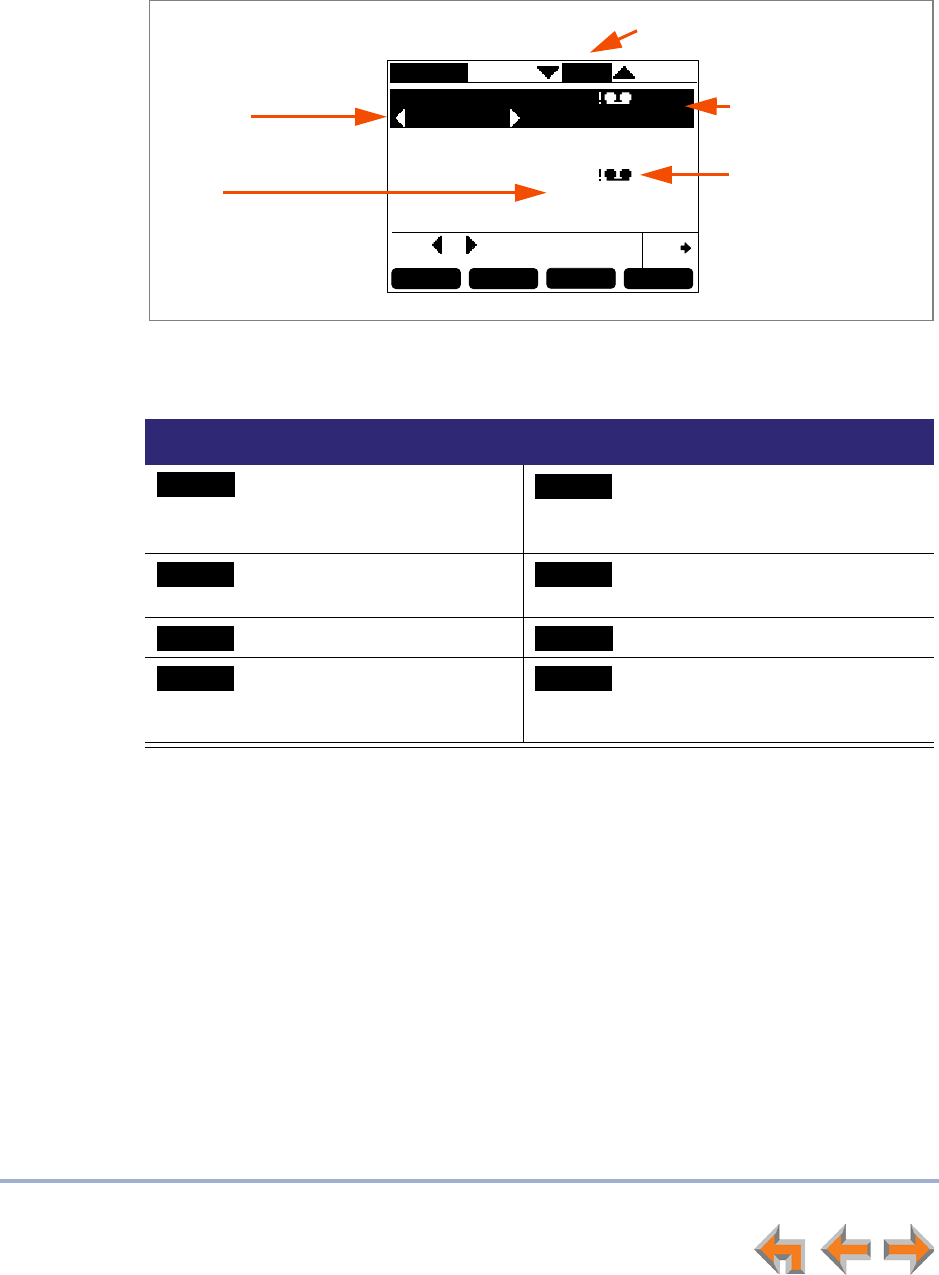
Call Log 76
Syn248 SB35031 Deskset User’s Guide Back to Contents
Using the Call Log
The Call Log soft keys, as shown in Figure 20 and described in Table 14, are available
whenever the Call Log has at least one entry.
Figure 20. Call Log Functions
Entries not highlighted display the time for calls received on the current day.
Calls before the current day display the date.
If the caller ID information is absent because it is unavailable, UNKNOWN NAME
and UNKNOWN NUMBER appear. If the caller chooses not to send the
information, PRIVATE NAME and PRIVATE NUMBER appear.
Table 14. Call Log Soft keys
Key Description Key Description
Plays message. Only present
when there is a message
recorded.
Deletes the highlighted entry.
Dials the highlighted entry. Stores number in your Personal
list.
Deletes all entries. Marks all new calls as old.
Shows you more details. Moves to the next set of soft
keys. More 1/3 indicates that
you are on page one of three.
Call Log
Graham Bell 9:55a
305-555-0176 Feb 25
Mary Williams NEW 9:55a
Unknown Caller NEW 12:31p
503-555-0194 NEW 4:23p
555-0134 NEW Jan 27
443-555-0625 Jan 22
Call
1/7
Delete
Quick
Dial
PlayMsg More 1/3
Press or for dialing options
Arrows
Indicate dialing
options available
NEW
Indicates call was not
answered and has
not been reviewed
Message
Indicates the caller
left a message.
Exclamation mark (!)
indicates message is
new.
Time and date
of highlighted
call entry
Current entry number/
total number of entries
PlayMsg
Delete
Call
Store
DelAll
ClerNew
Details
More
Draft
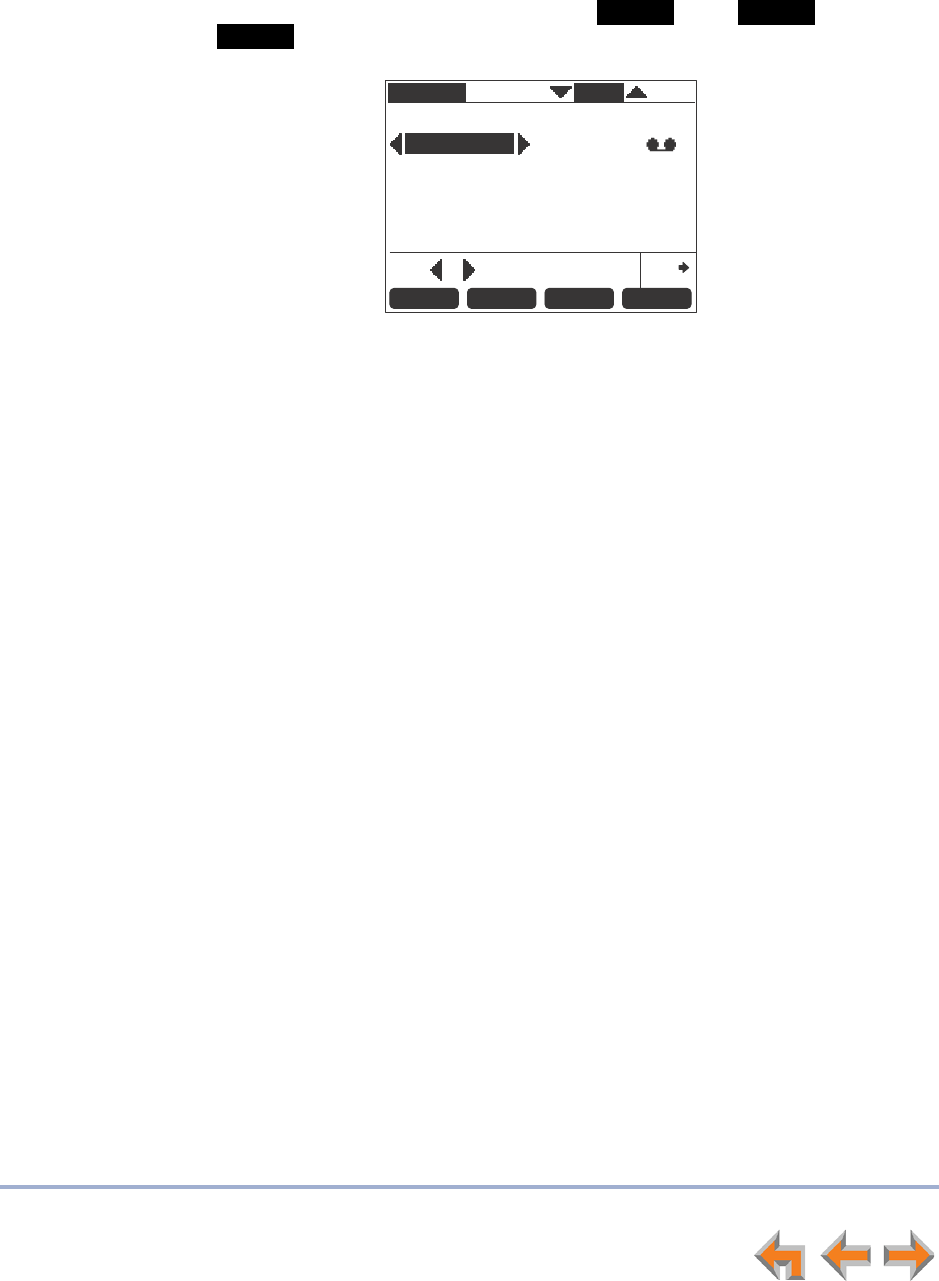
Call Log 77
Syn248 SB35031 Deskset User’s Guide Back to Contents
To access the Call Log list:
1. From the Idle screen, press CALL LOG. The Call Log list appears with the most recent
entry at the top.
To view details for a Call Log entry, press , then , then
. The Call Log details screen appears.
Call Log entries may not be in the proper format for dialing. In some areas, you
need to remove the area code or add or remove a 1. Press or to view the
dialing options.
2. Press CANCEL to exit the Call Log.
More 1/3
More 2/3
Details
Call Log
3:23PM
Wed, Feb. 24, 2010
Msg Length - 1:34
Press or for dialing options.
1/48
Quick
Dial
CallDeletePlayMsg
Graham Bell
More 1/2
232-555-0176
NEW
Draft
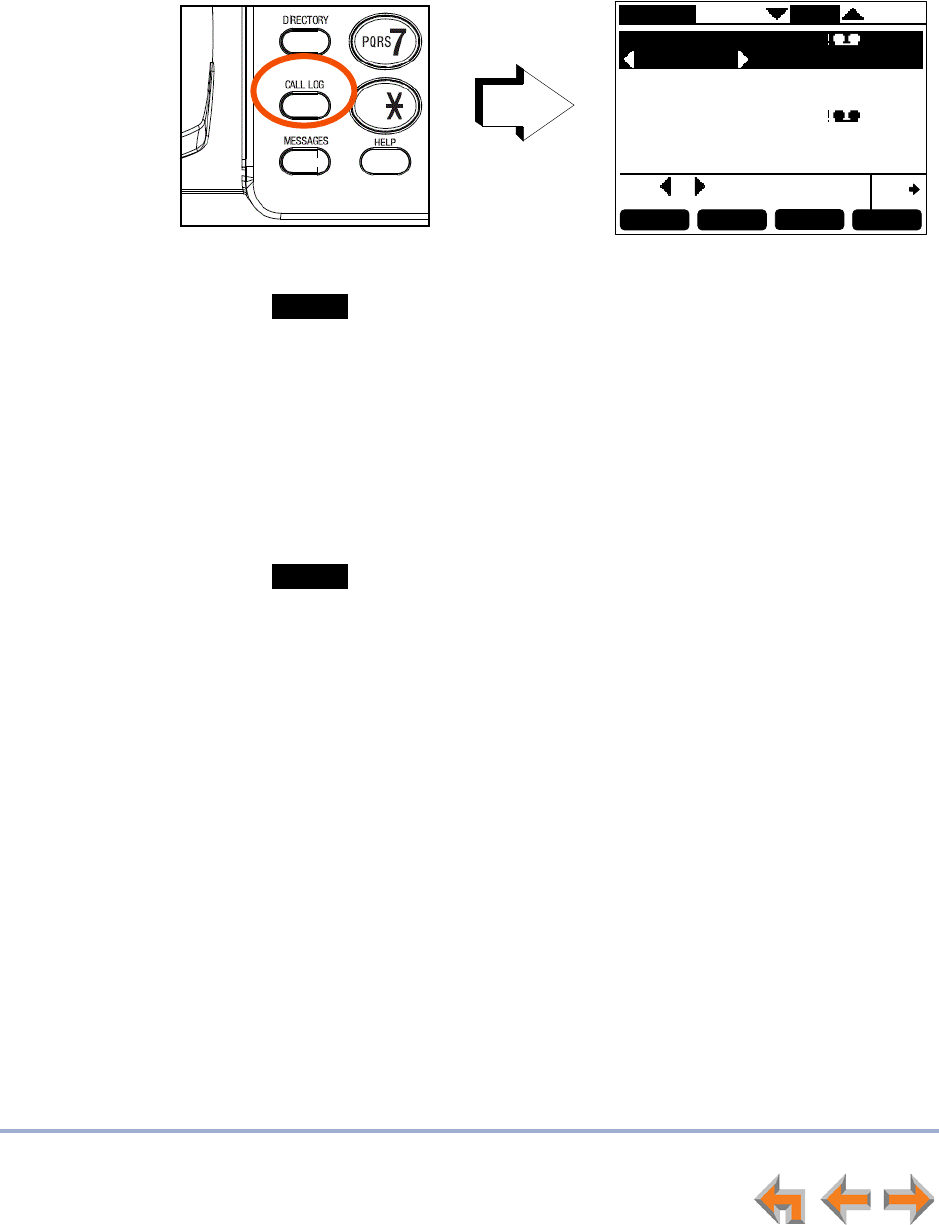
Call Log 78
Syn248 SB35031 Deskset User’s Guide Back to Contents
Reviewing the Call Log List
To review the Call Log list:
1. Press CALL LOG to display the Call Log.
2. Press or to highlight the desired Call Log entry.
Press to dial the highlighted number in the Call Log.
Call Log entries may not be in the proper format for dialing. In some areas, you
need to remove the area code or add or remove a 1. Press or to view the
dialing options. The following dialing options are available:
nnn-nnnn (7 digits)
1-nnn-nnnn (8 digits)
nnn-nnn-nnnn (10 digits)
1-nnn-nnn-nnnn (11 digits).
Press to delete the selected entry.
To view details for any entry, see “To access the Call Log list:” on page 77.
3. Press CANCEL to exit the Call Log.
Call Log
Graham Bell 9:55a
305-555-0176 Feb 25
Mary Williams NEW 9:55a
Unknown Caller NEW 12:31p
503-555-0194 NEW 4:23p
555-0134 NEW Jan 27
443-555-0625 Jan 22
Call
1/7
Delete
Quick
Dial
PlayMsg More 1/3
Press or for dialing options
Call
Delete
Draft
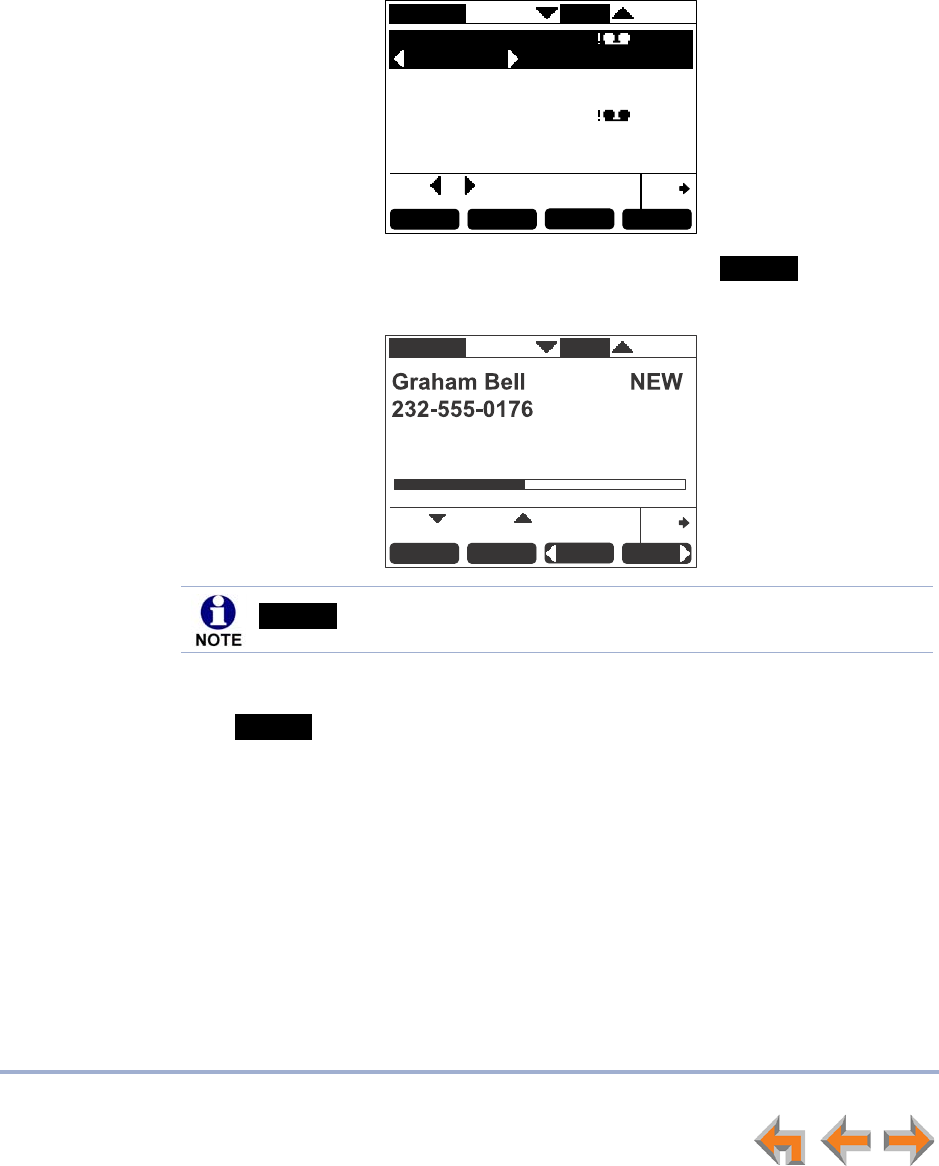
Call Log 79
Syn248 SB35031 Deskset User’s Guide Back to Contents
Listening to Voicemail From the Call Log
If the caller left a voice message, you can play the message from the Call Log list or from
Call Log Details.
To play a voice message from the Call Log:
1. Press CALL LOG to display the Call Log.
2. Press or to highlight the desired message, then press . The message
review screen appears.
If necessary, use the dial pad to enter your user password and press SELECT.
3. Press while the message is playing to delete the voice message. There is a
slight delay until the message indicators change.
4. When the message playback completes, the Call Log appears.
5. Press CANCEL to exit the Call Log.
Call Log
Graham Bell 9:55a
305-555-0176 Feb 25
Mary Williams NEW 9:55a
Unknown Caller NEW 12:31p
503-555-0194 NEW 4:23p
555-0134 NEW Jan 27
443-555-0625 Jan 22
Call
1/7
Delete
Quick
Dial
PlayMsg More 1/3
Press or for dialing options
PlayMsg
Call Log
Press for next or for previous
message.
Jump
1/7
Delete
Quick
Dial
Pause Jump
9:55a
Duration: 0:24 Time Remaining: 0:14
only appears if the call has an associated voicemail.
PlayMsg
Delete
Draft
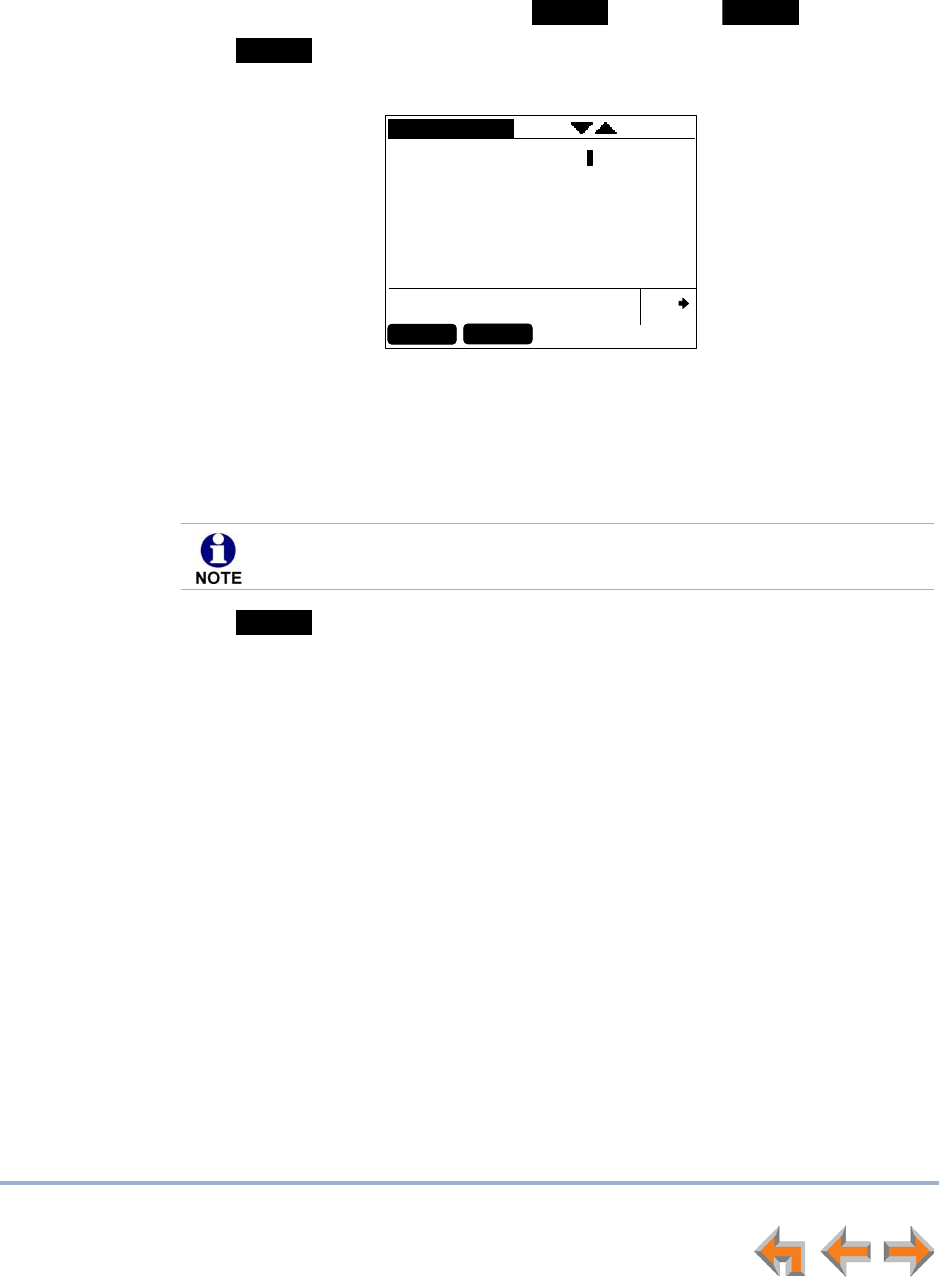
Call Log 80
Syn248 SB35031 Deskset User’s Guide Back to Contents
Storing Call Log Entries
To store a Call Log entry into your Personal list:
1. From the desired Call Log entry, press to view the soft key.
2. Press to store the entry in your Personal list. The Personal Entry screen
appears.
The caller information fills in the First Name and Number fields.
3. To enter the last name, press and use the dial pad to enter letters. See “Deskset
Dial-Pad Entry” on page 18.
4. Press and edit the number if necessary.
5. Press to store the entry and return to the Call Log.
6. Press CANCEL to exit the Call Log.
More 1/3
Store
Store
Personal Entry
Use dial pad to enter letters. Quick
Dial
Backspc
Save
First Name: Graham Bell
Last Name:
Phone #: 2325550176
The system does not check for duplicate entries.
Save
Draft
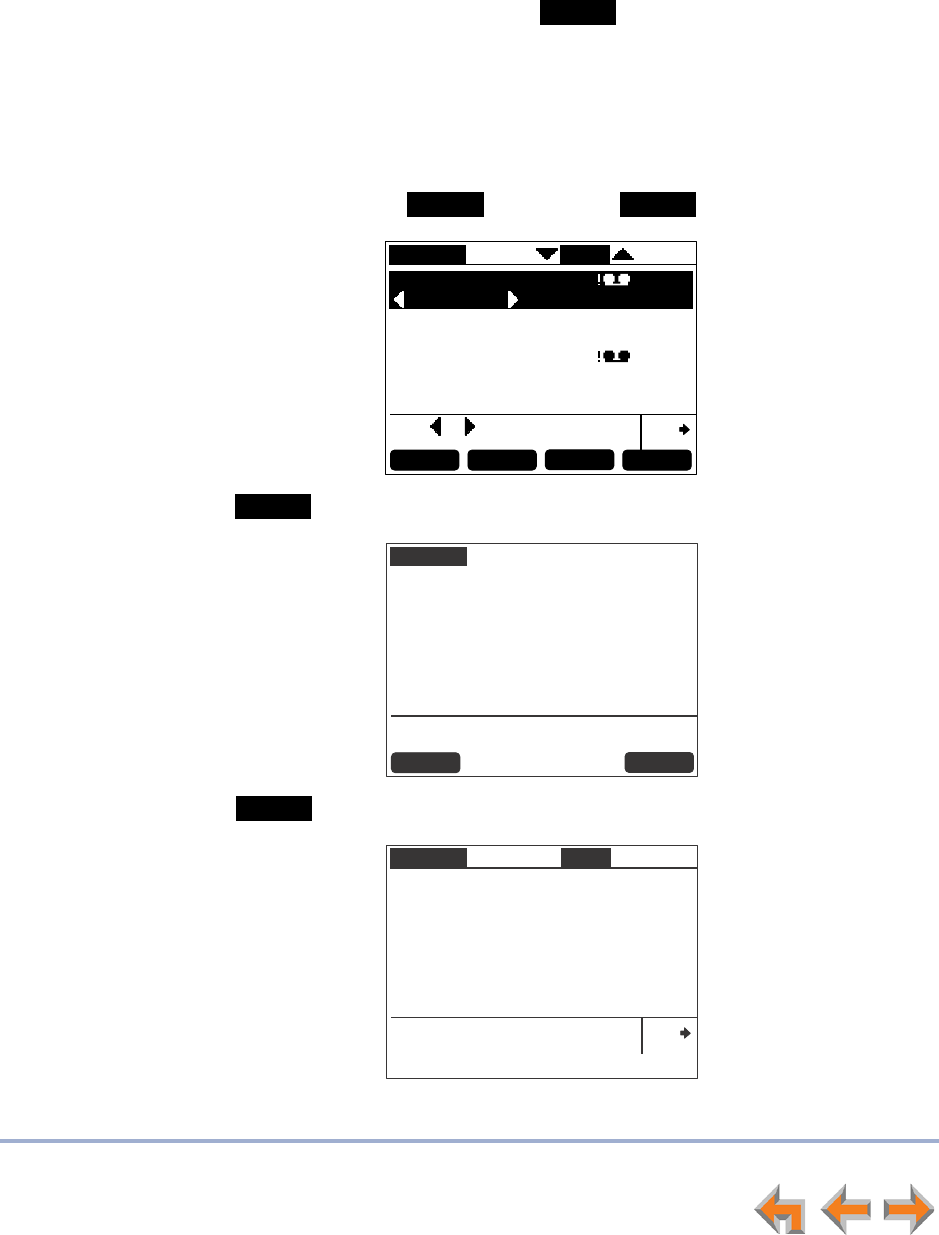
Call Log 81
Syn248 SB35031 Deskset User’s Guide Back to Contents
Deleting Call Log Entries
You can delete a single Call Log entry, or all Call Log entries.
To delete a single Call Log entry:
1. From a highlighted Call Log entry, press . The entry is removed from the list
and the next entry is highlighted.
2. Press CANCEL to exit the Call Log.
You can delete all entries only when viewing the Call Log list from Idle mode.
To delete all Call Log entries:
1. From the Call Log, press to display the soft key.
2. Press to delete all entries in the Call Log. The confirmation screen appears.
3. Press to confirm the deletion. The empty Call Log appears.
4. Press CANCEL to exit the Call Log.
Delete
More 1/3
DelAll
Call Log
Graham Bell 9:55a
305-555-0176 Feb 25
Mary Williams NEW 9:55a
Unknown Caller NEW 12:31p
503-555-0194 NEW 4:23p
555-0134 NEW Jan 27
443-555-0625 Jan 22
Call
1/7
Delete
Quick
Dial
PlayMsg More 1/3
Press or for dialing options
DelAll
Call Log
Are you sure you want to
delete all Call Log entries ?
Press Yes to delete all entries. Press No to
cancel.
No
Yes
Yes
Call Log 0/0
Quick
Dial
The Call Log is empty. Press CANCEL to
exit.
Draft

Paging 82
Syn248 SB35031 Deskset User’s Guide Back to Contents
CHAPTER
9
P
AGING
Paging allows you to broadcast what you say to more than one extension. If your system
administrator has set up paging zones, you can page all extensions or a zone.
If your Syn248 system includes an optional overhead paging (OHP) system, you may be
able to page through loudspeakers. The OHP system is included when you select All
Extensions on the Paging Zones menu. The OHP system may also be included in a
custom Paging Zone.
Draft
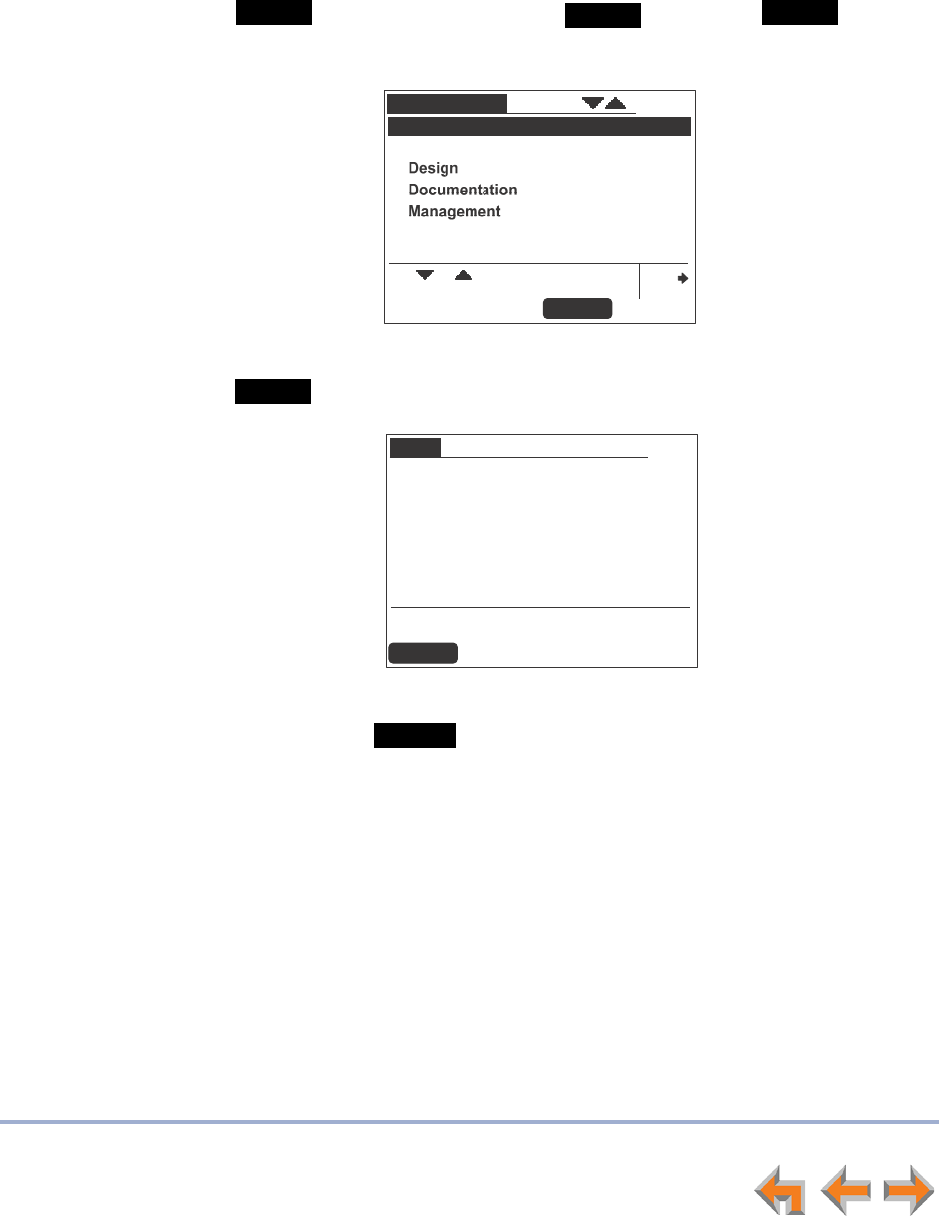
Paging 83
Syn248 SB35031 Deskset User’s Guide Back to Contents
Sending a Page
You can start sending a page from the Paging Zones menu. If your system administrator
has set up paging zones, you can page all extensions or a zone.
To send a page:
1. Press . If you are on a call, press to view the soft key.
The Paging Zones screen appears.
2. Highlight All Extensions or a paging zone.
3. Press . The system emits a short paging tone and displays the Page screen.
4. Speak into the speakerphone or pick up the corded handset to speak.
5. When finished, press , hang up the handset, or press SPEAKER. The Idle
screen appears.
At the extensions being paged:
Desksets involved in active calls, listening to a voicemail message, or playing or
recording a name or greeting do not receive pages.
Press the VOL+ or VOL– keys to adjust the volume. This volume setting affects
current and future incoming pages only.
Lifting the handset cancels the page.
Page
More 1/2
Page
Use or to scroll then press
SELECT or press digit.
Paging Zones
1. All Extensions
2. Accounts
Quick
Dial
Start
3.
4.
5.
Start
Paging Accounts
Press EndPage when done.
EndPage
Page
EndPage
Draft

Deskset Settings 84
Syn248 SB35031 Deskset User’s Guide Back to Contents
CHAPTER
10
D
ESKSET
S
ETTINGS
You or your system administrator can customize your Deskset using the following menus
and features:
“Deskset Menu” on page 85
“Deskset Settings” on page 86
“User Settings” on page 90
“Setting and Changing Your Password” on page 99
“Deskset Information” on page 101
“Auto-Attendant Settings” on page 102
“Using Do Not Disturb (DND)” on page 104.
Draft
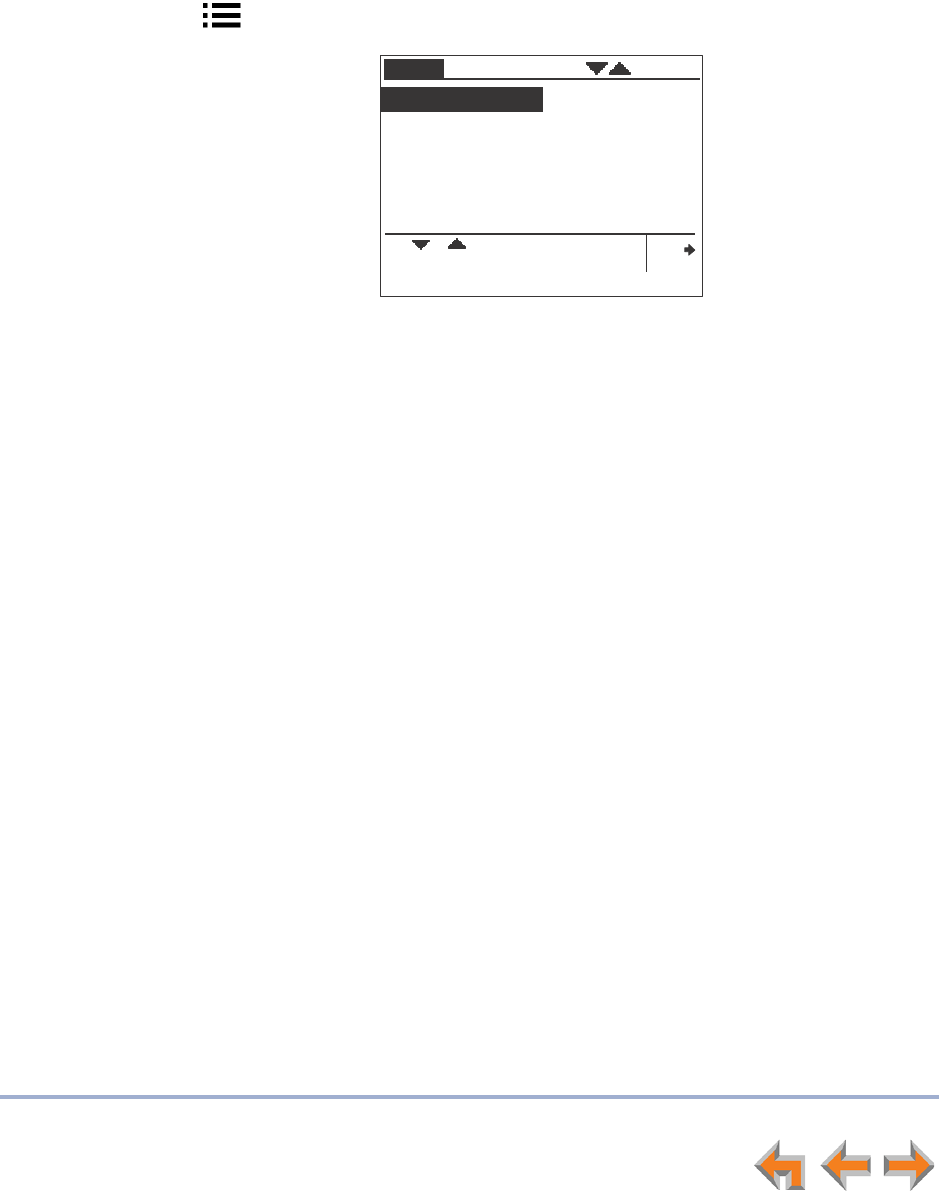
Deskset Settings 85
Syn248 SB35031 Deskset User’s Guide Back to Contents
Deskset Menu
You can use the Deskset menus to set up many Deskset features. Access the menu by
pressing MENU, and then select options by highlighting an item and pressing SELECT, or
by pressing the dial-pad key with that option number.
To access the Deskset setup menus:
Press (MENU). The Deskset Menu appears.
Press 1 on the dial pad to display the Deskset Settings menu. See “Deskset
Settings” on page 86 for further instructions.
Press 2 to display the User Settings menu. See “User Settings” on page 90 for
further instructions.
Press 3 to display the Admin Settings menu. See “Admin Settings” on page 100
for further instructions.
Press 4 to display the Deskset Information menu. See “Deskset Information”
on page 101 for further instructions.
If your system administrator has set your extension as an Auto Attendant
manager, the menu has an additional item. Press 5 to change the Auto
Attendant settings. See “Auto-Attendant Settings” on page 102 for further
instructions.
Menu
1. Deskset Settings
3. Admin Settings
2. User Settings
Use or to scroll then press
SELECT or press 1-5.
Quick
Dial
4. Deskset Information
5. Auto Attendant Settings
Draft
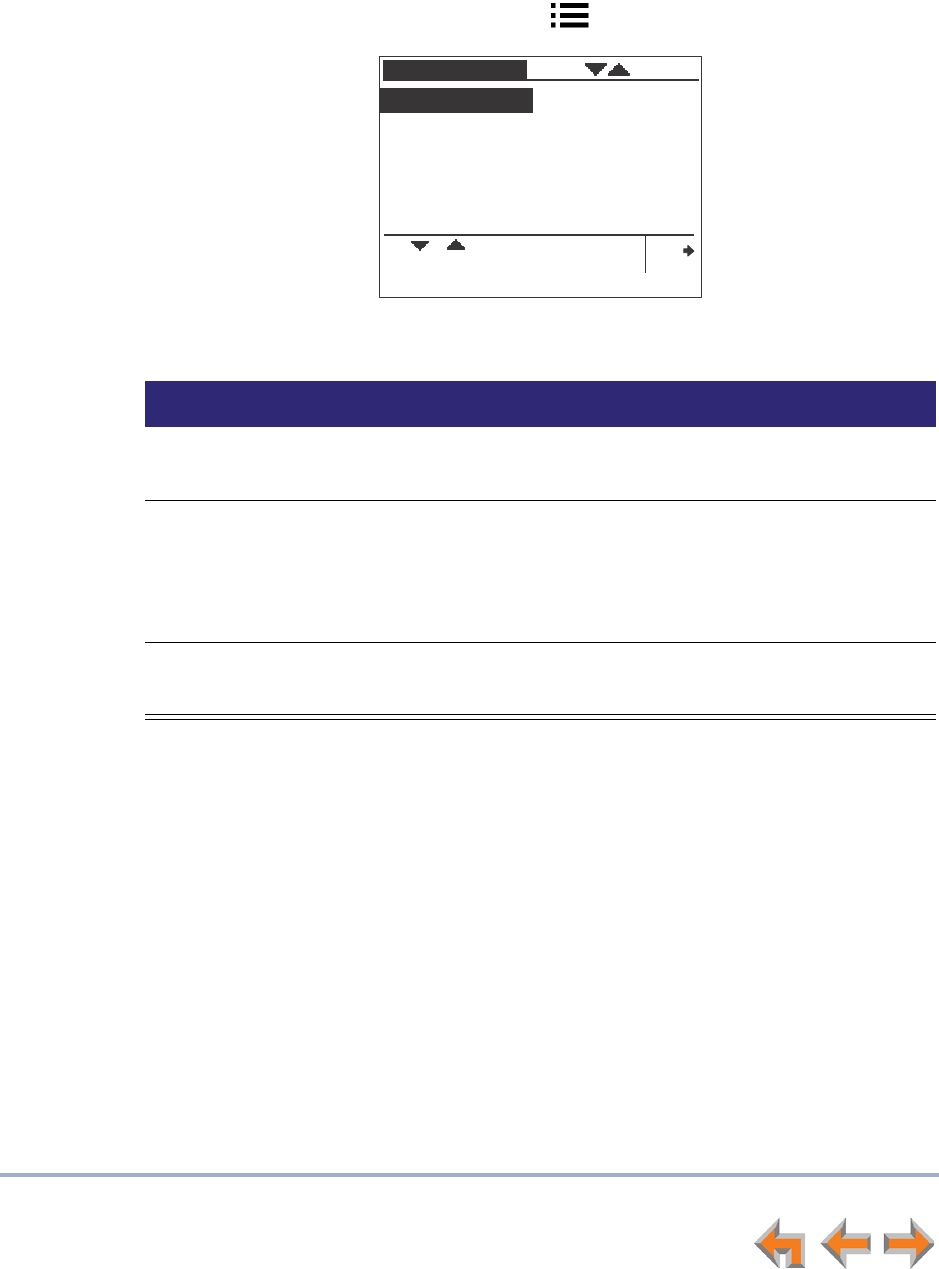
Deskset Settings 86
Syn248 SB35031 Deskset User’s Guide Back to Contents
Deskset Settings
Use the Deskset Settings menu, as shown in Figure 21, to access the three functions
and the related submenus listed in Table 15.
To display the Deskset Settings menu, press (MENU) then 1.
Figure 21. Deskset Settings Menu
Table 15. Deskset Settings Menu Structure
Function See page... Submenu
1. Display 87 1. Contrast (1–9)
2. Backlight (Lo/Hi/Off)
2. Sounds 87 1. Ring volume (0–9)
2. Ringtones (1–9)
3. Key beeps (On/Off)
4. Call Waiting Tone (On/Off)
3. Preferred Audio Mode 89 1. Speakerphone
2. Headset
Deskset Settings
1. Display
3. Preferred Audio Mode
2. Sounds
Use or to scroll then press
SELECT or press 1-3.
Quick
Dial
Draft
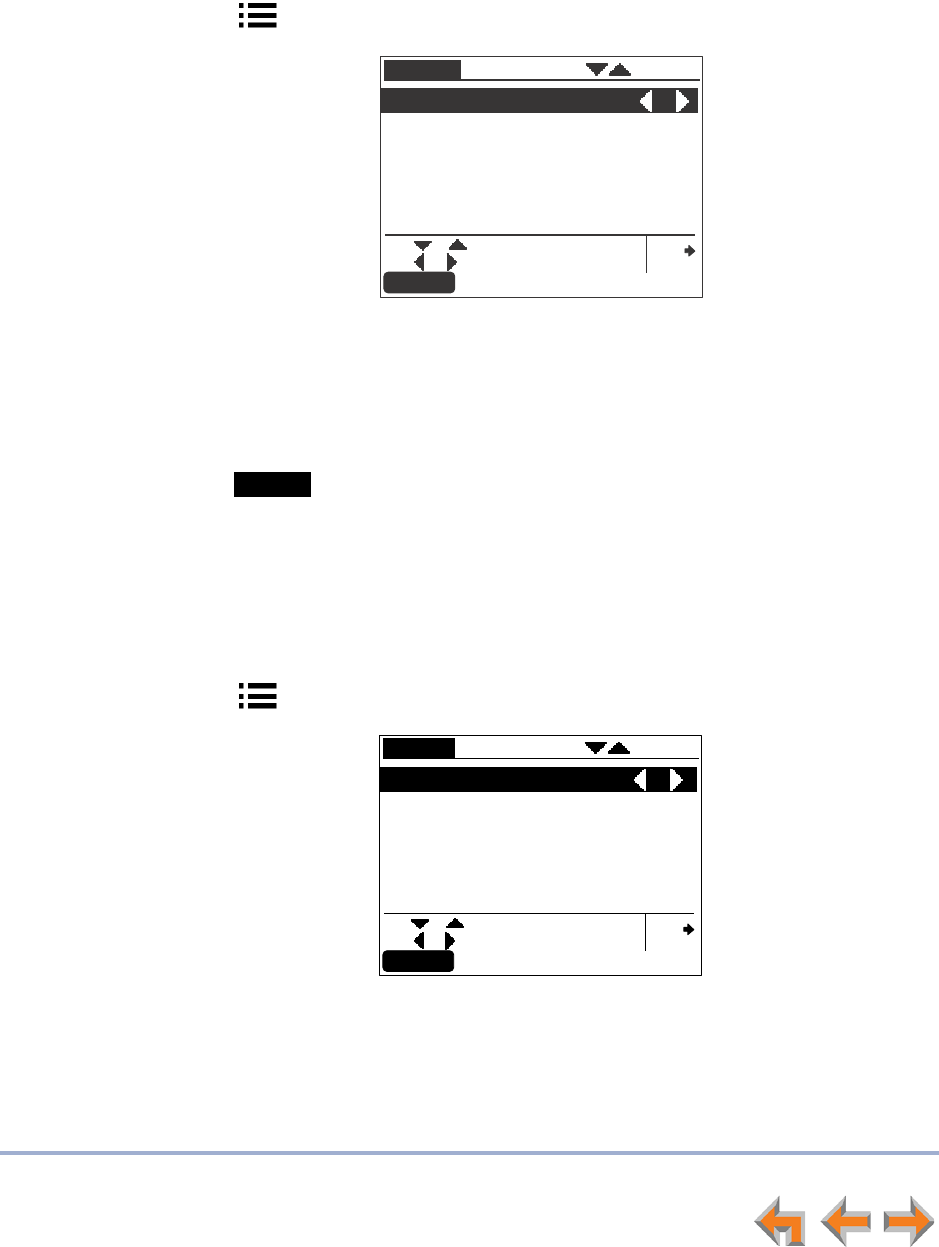
Deskset Settings 87
Syn248 SB35031 Deskset User’s Guide Back to Contents
Display
Use the Display menu to adjust your Deskset LCD contrast and backlight.
To access the Display menu:
1. Press (MENU), then 1, and then 1. The Display menu appears.
2. Press 1 to set the desired Contrast level.
Press or to adjust the level from 1 to 9. The default is 5.
3. Press 2 to set the desired Backlight level.
Press or to cycle through Hi, Lo, or Off. The default is Hi.
4. Press to accept the adjustments and return to the Deskset Settings menu.
Sounds
Use the Sounds menu to set the ring volume, delay the beginning of audible ringing,
pick one of nine ringtones, or turn key beeps on and off.
To access the Sounds menu:
1. Press (MENU), then 1, and then 2. The Sounds menu appears.
2. Press 1 on the dial pad to choose Ring Volume.
Press or to adjust the Ring Volume from 0 to 9. The default is 3. A ringer
sample plays.
To turn off the ringer, decrease the volume to zero.
Display
1. Contrast 5
2. Backlight [Hi]
Use or to move highlight.
Use or to cycle through options.
Save
Quick
Dial
Save
Sounds
1. Ring volume 1
Use or to move highlight.
Use or to cycle through options.
Save
2. Ringtones [1]
3. Key Beeps [Off]
Quick
Dial
4. Call Waiting Tone [On]
Draft

Deskset Settings 88
Syn248 SB35031 Deskset User’s Guide Back to Contents
3. Press 2 on the dial pad to choose Ringtones.
Press or to select one of nine ringtones. The default is 1. Ringtone samples
play when selected.
4. Press 3 on the dial pad to choose Key beeps.
Press or to select On or Off. The default is On.
5. Press 4 on the dial pad to choose Call Waiting Tone.
Press or to select On or Off. The default is On.
The call waiting tone alerts you to an incoming call if you are already on a call. This
setting does not control any call waiting alert(s) provided by your telephone service.
6. Press to accept the adjustments and return to the Deskset Settings menu.
Save
Draft
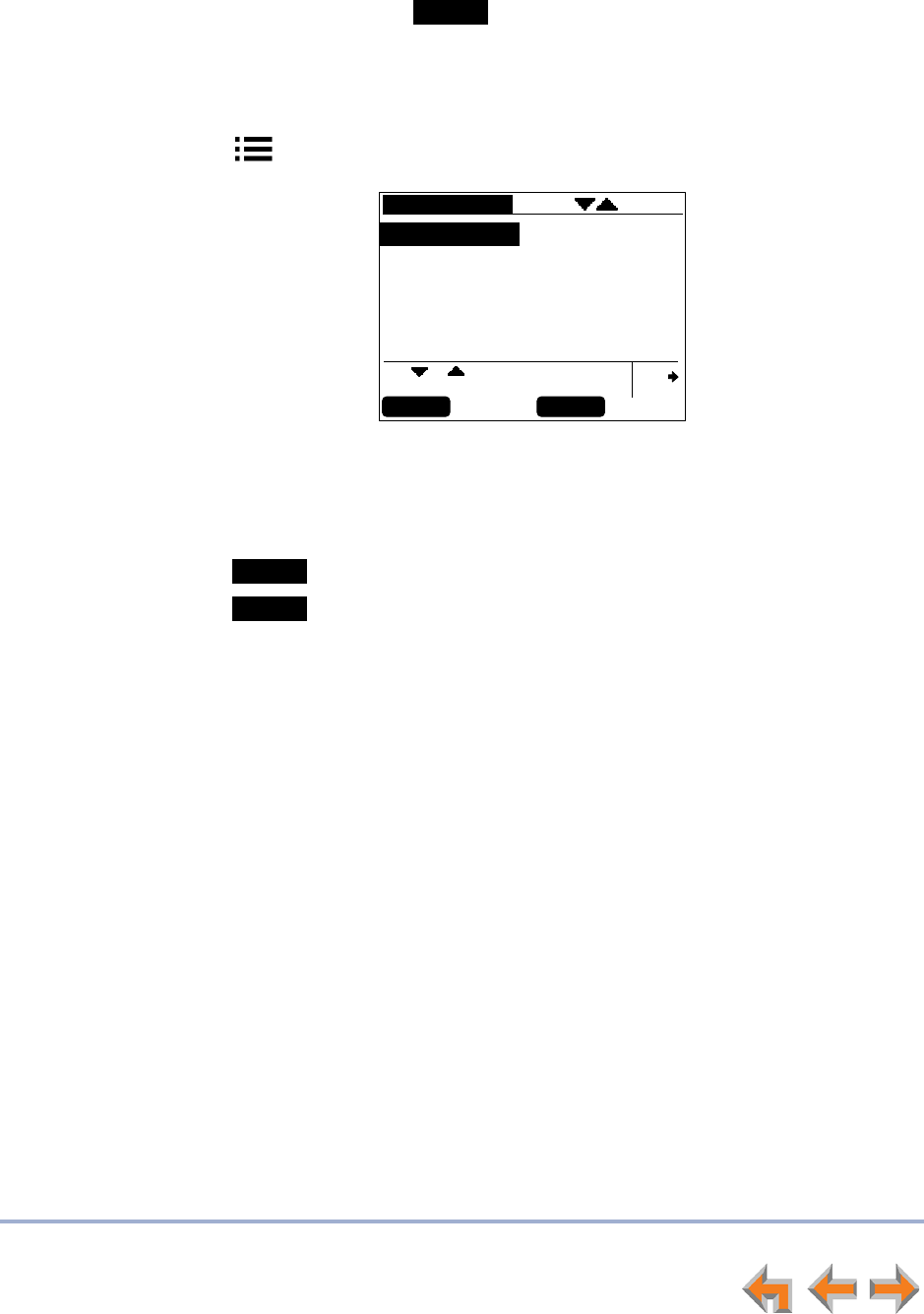
Deskset Settings 89
Syn248 SB35031 Deskset User’s Guide Back to Contents
Preferred Audio
When you press a Line key or , the call is answered in the Preferred Audio
mode. You can set the audio preferences to Headset or Speakerphone by using the
Preferred Audio menu. Lifting the corded handset takes first priority in all instances.
To access the Preferred Audio menu:
1. Press (MENU), then 1, and then 3. The Preferred Audio menu appears.
2. Select the preferred audio:
Press 1 to select the Speakerphone.
Press 2 to select the Headset.
3. Press to set your audio preference.
4. Press to accept the adjustments and return to the Deskset Settings menu.
Answer
Preferred Audio
1. Speakerphone
2. Headset
Use or to scroll or press 1-2.
Press Set? then press Save.
Quick
Dial
Save
[Set]
Choose where you hear your call
when you press a Line key.
Set?
Set?
Save
Draft
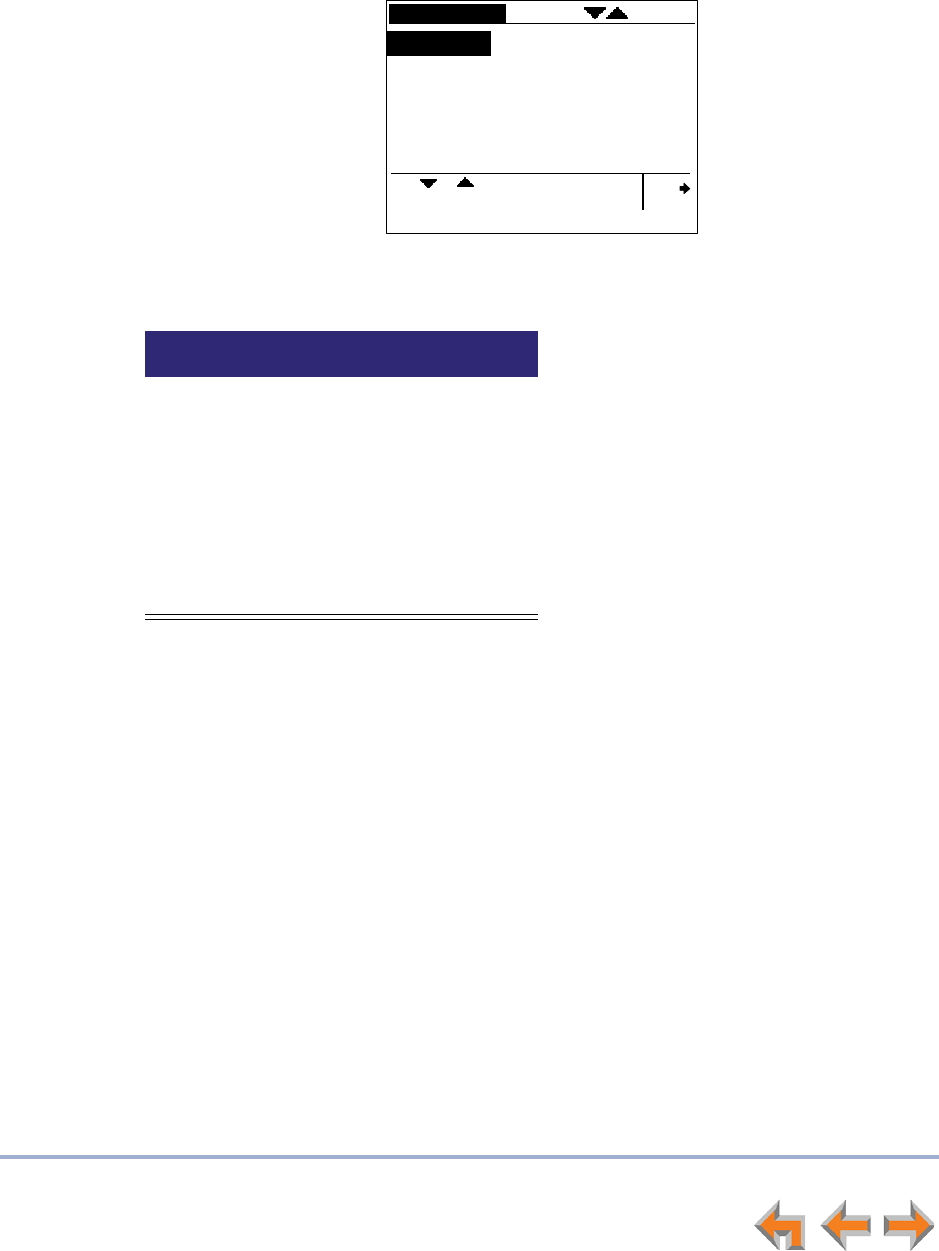
Deskset Settings 90
Syn248 SB35031 Deskset User’s Guide Back to Contents
User Settings
Use the User Settings menu to modify the settings shown in Figure 22 and listed in
Table 16.
Figure 22. User Settings Menu
Table 16. Deskset Menu – User Settings
Setting See page...
1. Greetings 65
2. Intercom Auto Answer 92
3. Voicemail Memory 93
4. Name Recording 94
5. Cordless Headset 96
6. Password 99
User Settings
(Pre-Set)
3. Voicemail Memory
Use or to scroll then press
SELECT or press 1-6.
Quick
Dial
2. Intercom Auto Answer
4. Name Recording
1. Greetings
5. Cordless Headset
Draft
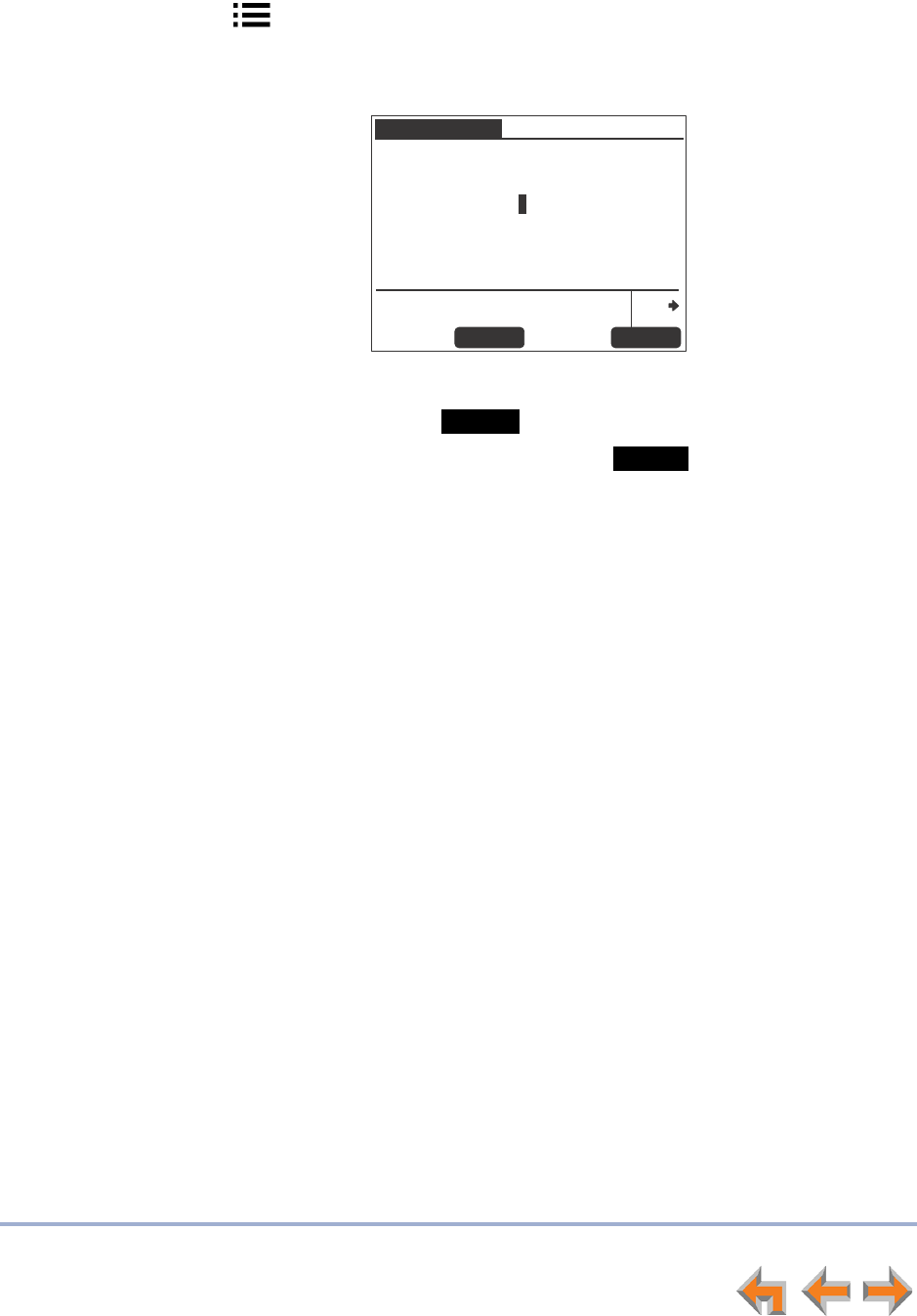
Deskset Settings 91
Syn248 SB35031 Deskset User’s Guide Back to Contents
To display the User Settings menu:
1. Press (MENU) and then 2. The User Settings menu appears.
2. If you have set a user password, the User Password screen appears before the User
Settings menu appears.
Enter your password and press SELECT.
To correct errors, use the key.
To cancel your changes on that screen, press at any time. The Deskset
will return to the previous screen.
User Password
Use dial pad to enter user password.
Press SELECT when done.
Quick
Dial
Enter user password:
Backspc Cancel
Backspc
Cancel
Draft
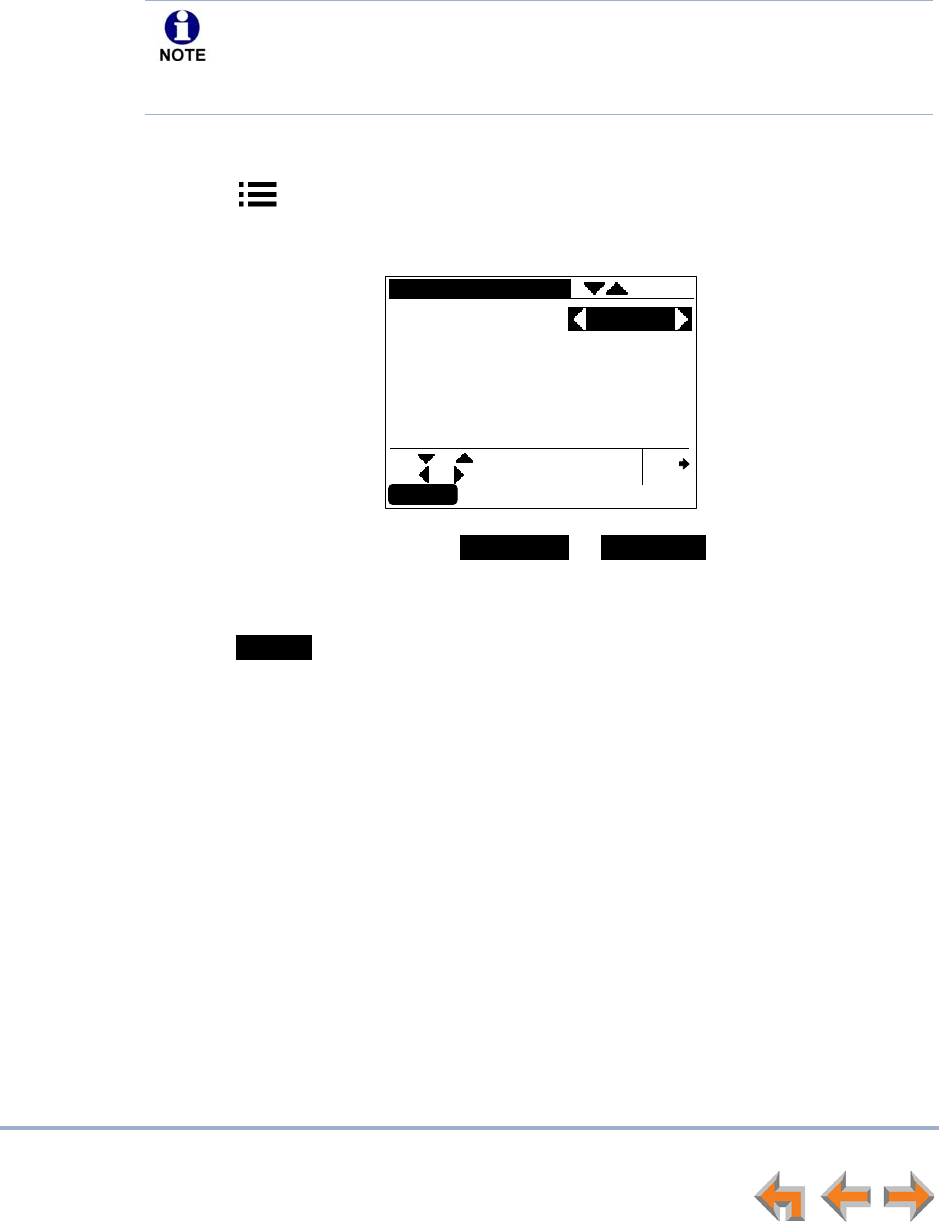
Deskset Settings 92
Syn248 SB35031 Deskset User’s Guide Back to Contents
Intercom Auto Answer
You can set the Deskset to automatically answer Intercom calls after a delay that you
specify. Without touching the Deskset, you can speak to and be heard by people who call
you. For example, employees in warehouses or shops may use this feature for quick
conversations without having to interrupt what they are doing.
To set Intercom Auto Answer:
1. Press (MENU), then 2, and then 2.
The Intercom Auto Answer screen appears.
2. Press or to select either or .
3. Press , and then or to select the delay before the Deskset automatically
answers each Intercom call.
4. Press to confirm the change. The User Settings menu appears.
DND takes priority over Auto Answer.
Intercom Auto Answer does not apply to outside calls that use an Intercom line
after they were forwarded to your Deskset by a Phone Line Call Forward–No
Answer setting.
Intercom Auto Answer
Disabled
Delay [5 sec]
Use or to move highlight.
Use or to cycle through options.
Quick
Dial
Save
Auto Answer
Disabled
Enabled
Save
Draft
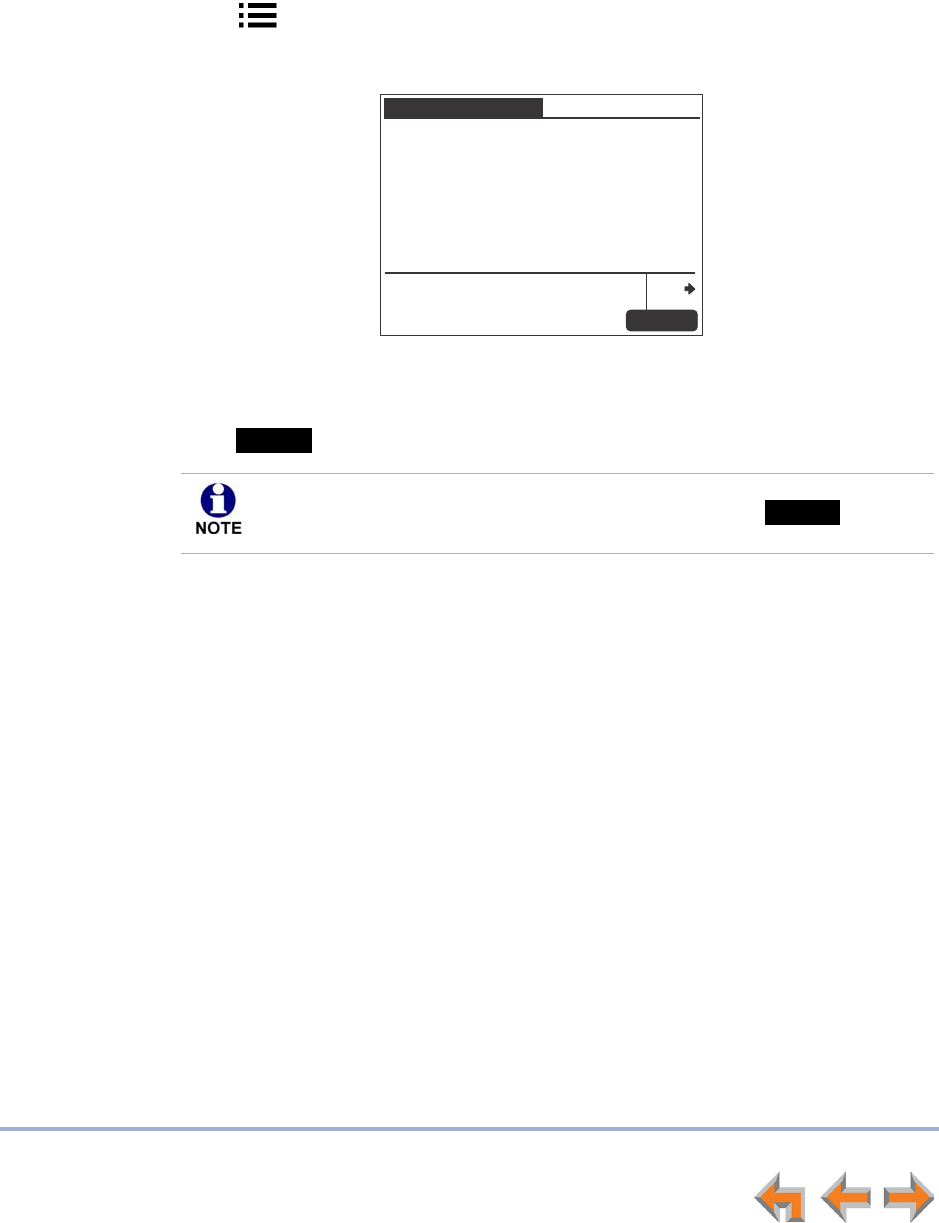
Deskset Settings 93
Syn248 SB35031 Deskset User’s Guide Back to Contents
Voicemail Memory
Your voice messages are stored on your Deskset. You can check the amount of available
memory.
To access the Voicemail Memory screen:
1. Press (MENU), then 2, and then 3.
The Voicemail Memory status screen appears.
The Voicemail Memory screen displays the remaining minutes left for recording
messages. This screen is for informational purposes only.
2. Press . The User Settings menu appears.
Voicemail Memory
Press Exit when done. Quick
Dial
Exit
There are 26 of 30 minutes
still available for messages.
For more memory, delete Voicemail
messages.
Exit
Even when this screen says ...0 of 30 minutes still available..., there may
still be enough time to record a short message and the status
indicator may not appear.
VM Full
Draft
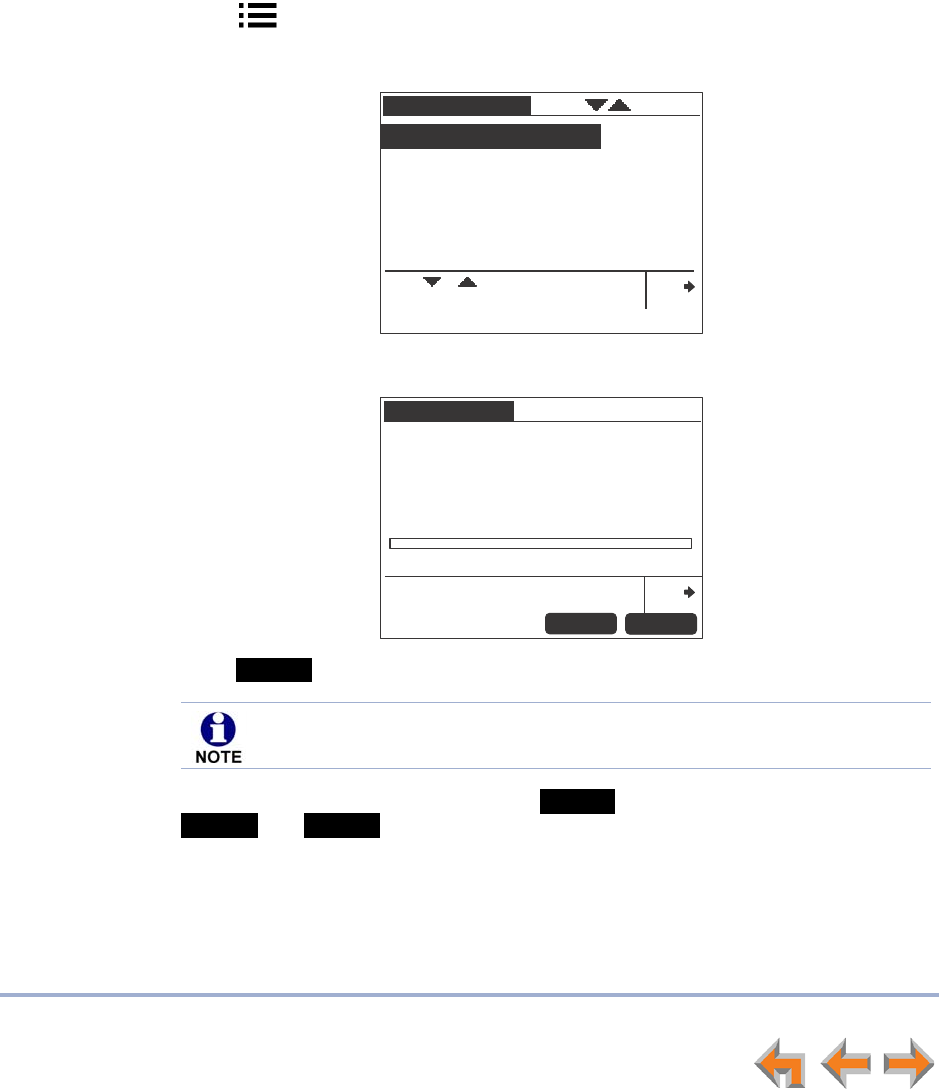
Deskset Settings 94
Syn248 SB35031 Deskset User’s Guide Back to Contents
Name Recording
Your name recording should identify yourself to callers. If callers access the Company
Directory when unanswered calls are directed to the Auto Attendant, they hear this
recording upon entering your name.
To create a useful recording for incoming callers, you should say your name slowly,
clearly, and at a reasonable volume. Your system administrator may also recommend that
you state both your name and extension number. It is important that your recording be
consistent with recordings at other extensions in the system.
To record and play a personal name:
1. Press (MENU), then 2, and then 4.
The Name Recording menu appears.
2. Press 1 to display the Play/Rec Name screen.
3. Press to record a personal name.
4. When you are finished recording, press . The screen changes to display
and .
Name Recording
2. Delete Personal Name
Press or to scroll then press
SELECT or press 1-2.
Quick
Dial
1. Play/Rec Personal Name
Play/Rec Name
Press Record to record name.
Record Exit
Quick
Dial
Personal Name
NAME NOT RECORDED
Record
You are limited to a 10-second recording. Recording stops automatically if
the limit is exceeded.
Stop
Play
Record
Draft
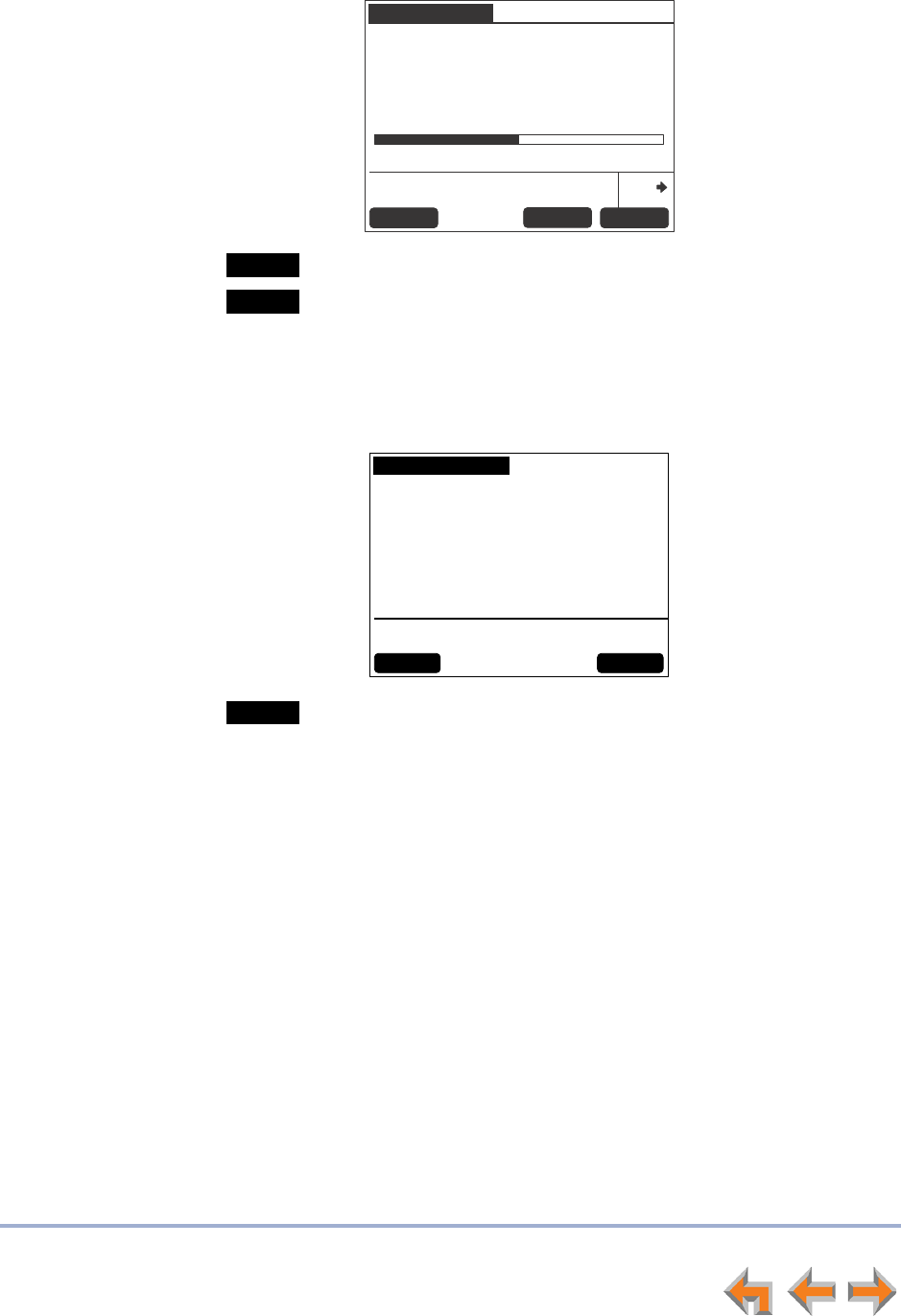
Deskset Settings 95
Syn248 SB35031 Deskset User’s Guide Back to Contents
5. Press to review the recorded name.
6. Press . The Name Recording menu appears.
To delete a personal name:
1. From the Name Recording menu, press 2 to delete the personal name. A
confirmation screen appears.
2. Press to confirm.
After you delete your recorded name, the Auto Attendant will announce your
extension number instead.
Play/Rec Name
Quick
Dial
Personal Name
Duration: 5s Max allowed: 10s
Record
Play Exit
Play
Exit
Name Recording
Are you sure you want to
delete your recorded name?
Yes No
Press Yes to delete or No to cancel.
Yes
Draft
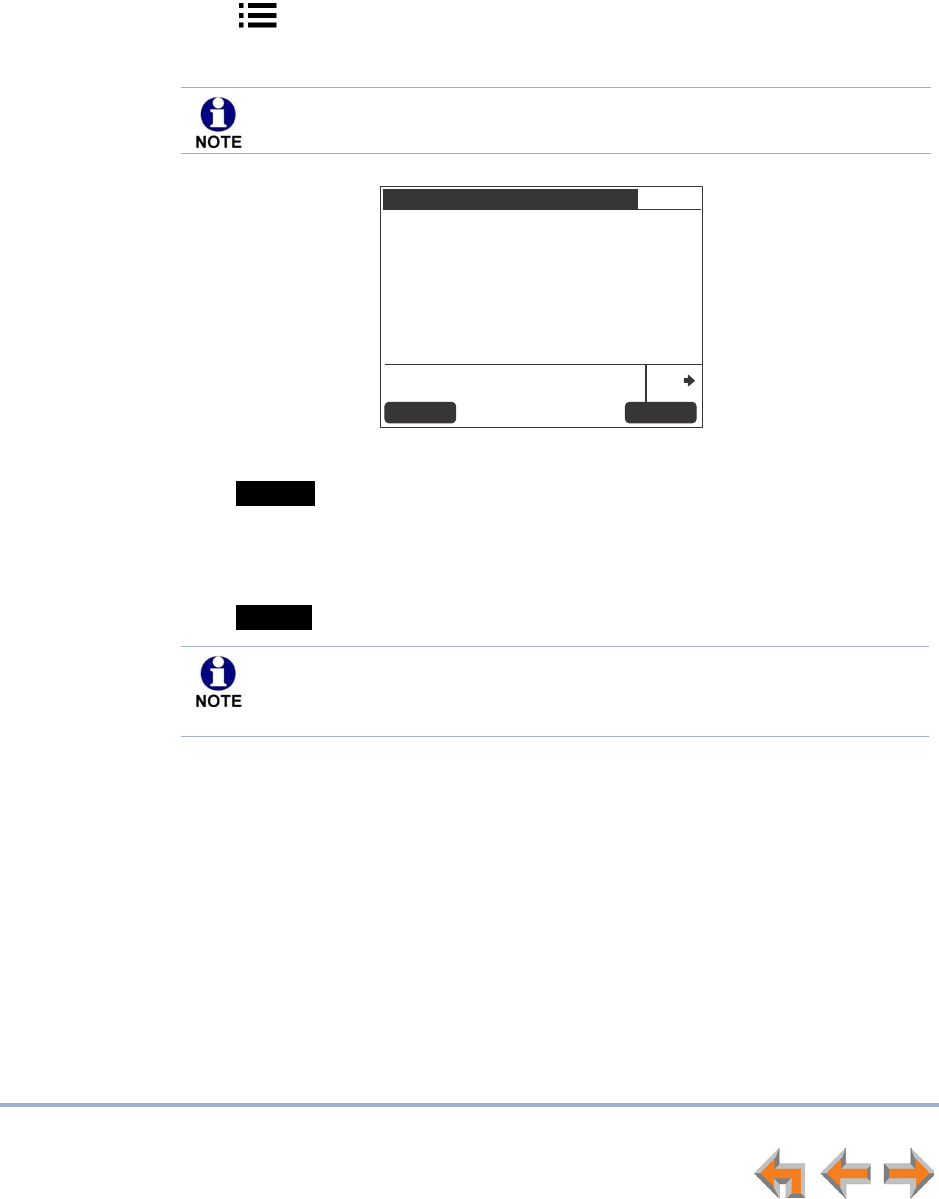
Deskset Settings 96
Syn248 SB35031 Deskset User’s Guide Back to Contents
Registering an Optional Cordless Headset
You can register only one AT&T DECT Cordless Headset to a Deskset. When a Deskset
has cordless accessories, they are all part of the same extension, and only one device
can be used at a time.
To register the Cordless Headset:
1. Press (MENU), then 2, and then 5.
The Cordless Headset Registration menu appears.
2. Remove and replace the cordless headset from its charging base.
3. Press . Registration in Progress... appears while the Deskset searches
for the headset.
4. When registration is complete, Cordless Headset is currently Registered appears
and the cordless headset ON/OFF light turns solid blue.
5. Press . The User Settings menu appears.
The headset must be in the charger, otherwise registration cannot proceed.
Cordless Headset Registration
Cordless Headset is currently
Not Registered
Register Exit
Place Cordless Headset in charger.
Press Register to begin process.
Quick
Dial
Register
Exit
Registration can be terminated by pressing CANCEL on the Deskset.
If the cordless headset is registered to another Deskset, it must be
deregistered first. See “Deregistering a Cordless Headset” on page 97.
Draft
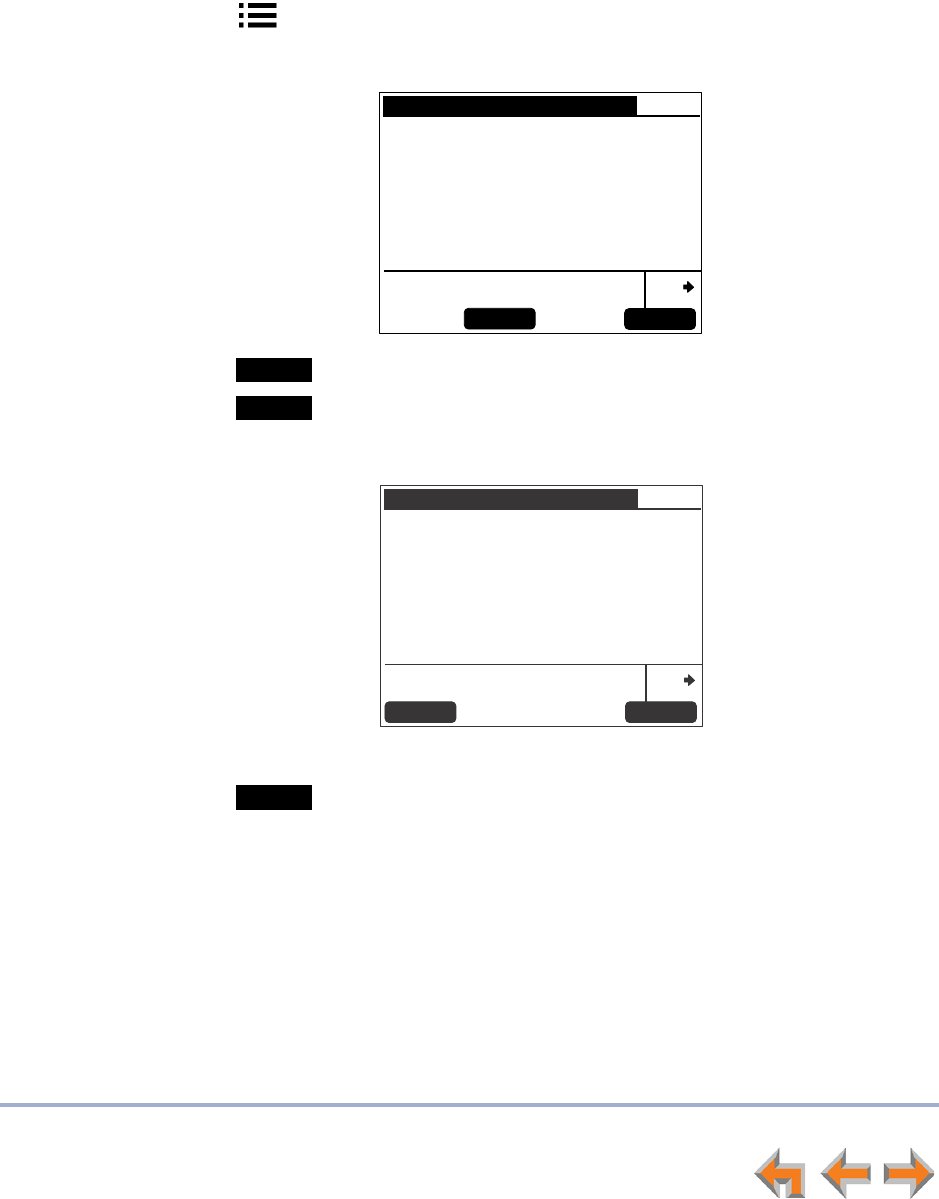
Deskset Settings 97
Syn248 SB35031 Deskset User’s Guide Back to Contents
Deregistering a Cordless Headset
You must deregister cordless accessories before you can register them to different
Desksets. If you remove a Deskset from the system, first deregister any cordless
accessories.
To deregister a cordless accessory:
1. Press (MENU), then 2, and then 5.
The Cordless Headset Registration menu appears.
2. Press . The confirmation message appears.
3. Press to confirm deregistration.
The Deskset screen then displays Cordless Headset is currently Not Registered.
The Cordless Headset ON/OFF light slowly flashes.
4. Press . The User Settings menu appears.
Cordless Headset Registration
Cordless Headset is currently
Registered
Exit
Press DeReg to deregister the Cordless
Headset.
Quick
Dial
DeReg
DeReg
Yes
Cordless Headset Registration
Cordless Headset is currently
Not Registered
Register Exit
Place Cordless Headset in charger.
Press Register to begin process.
Quick
Dial
Exit
Draft
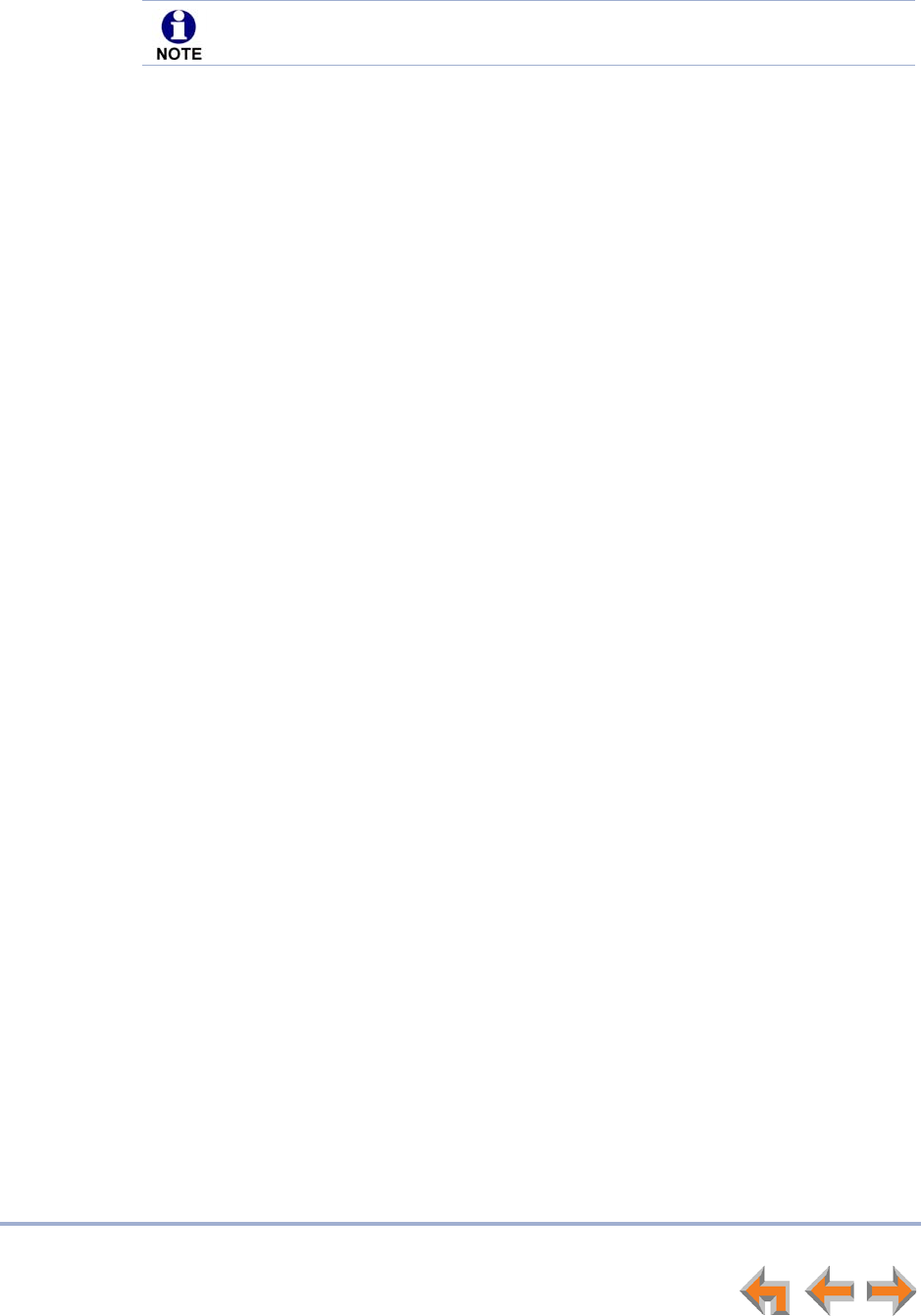
Deskset Settings 98
Syn248 SB35031 Deskset User’s Guide Back to Contents
Cordless Accessory Registration and Deregistration Time-Out
For security reasons, the registration process on both Deskset and cordless accessory
terminates after the time-out period of two minutes if registration is not successful.
If the registration process times out, the Deskset returns to the Cordless Headset
Registration menu.
If cordless headset registration fails, the ON/OFF light on the headset flashes twice
every five seconds. To reset the headset, remove the headset from the charger and try
the registration process again, beginning with Step 1, “To register the Cordless Headset:”
on page 96.
If the cordless device is registered to another Deskset or telephone, it must be
deregistered first. See “Deregistering a Cordless Headset” on page 97.
Draft
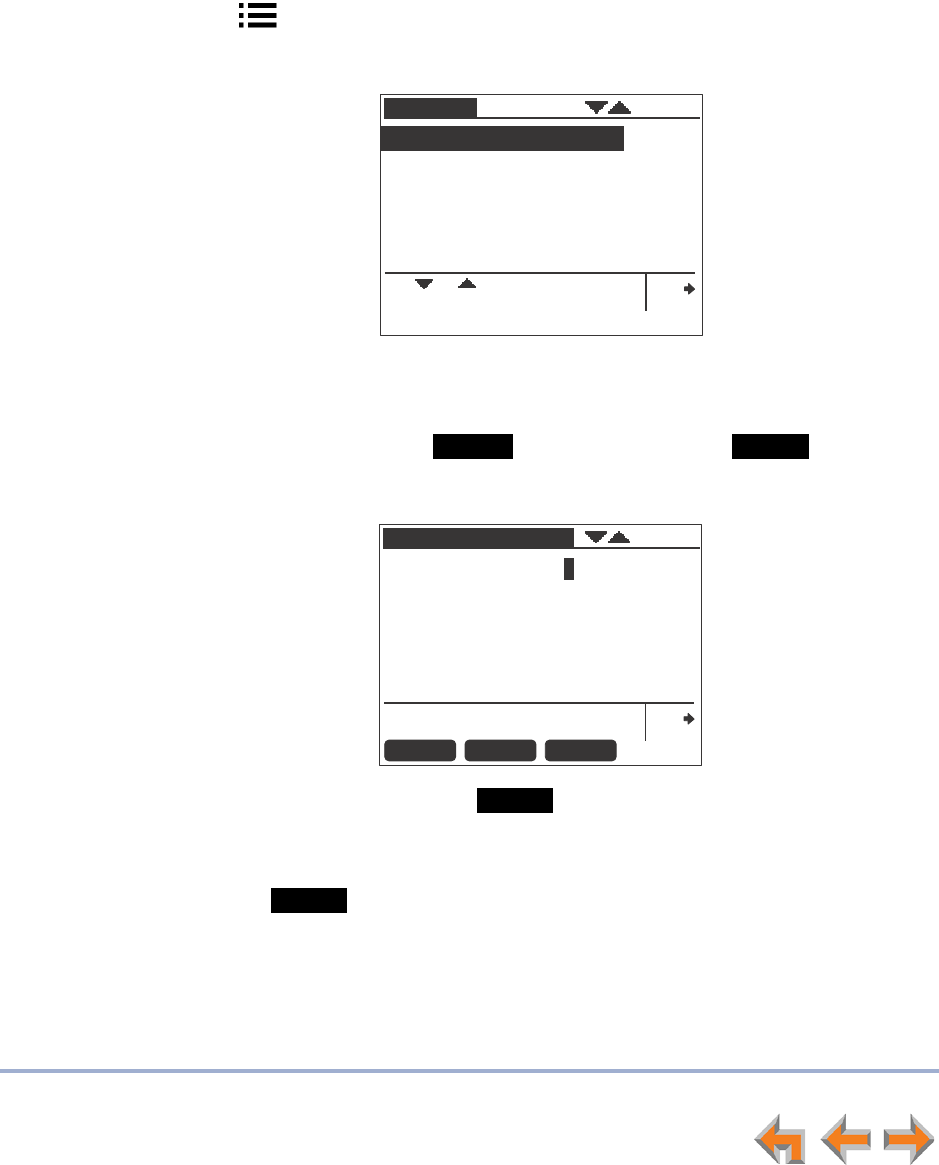
Deskset Settings 99
Syn248 SB35031 Deskset User’s Guide Back to Contents
Setting and Changing Your Password
Use the Password menu to set, change, or clear your password. This setting can also be
controlled on the WebUI.
Once the password has been cleared, password entry is no longer necessary for User
Settings, voicemail and the WebUI.
To set, change or clear your password:
1. Press (MENU), then 2, and then 6.
The Password menu appears.
2. To set or change your password, press 1.
Use the dial pad to enter a password of up to six digits.
To correct errors, press , or to start over, press .
Press and enter the new password again.
To accept the change, press . The Password Saved screen appears,
then the User Settings menu appears.
3. To clear your password, press 2.
Press to confirm that you want to clear your password. The Password
menu appears.
Password
1. Set/Change User Password
2. Clear User Password
Use or to scroll then press
SELECT or press 1-2.
Quick
Dial
Clearing the password will make
password entry unnecessary.
Backspc
Delete
Set/Change Password
Enter Password:
Confirm Password:
Use the dial pad to enter user
password twice. Press Save when done.
Quick
Dial
Enter up to 6 digits.
BackspcSave Delete
Save
Yes
Draft
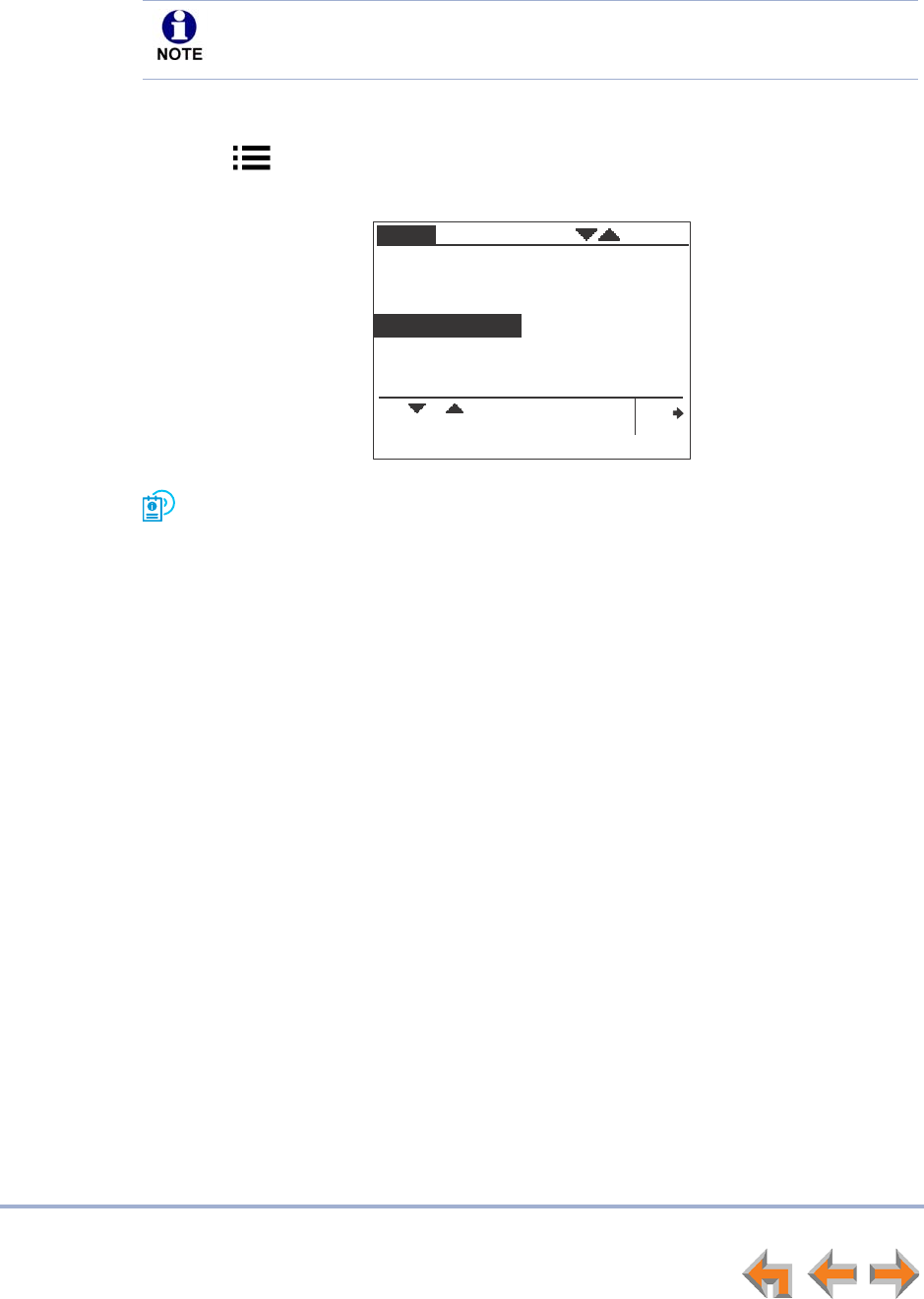
Deskset Settings 100
Syn248 SB35031 Deskset User’s Guide Back to Contents
Admin Settings
To display the Admin Settings menu:
1. Press (MENU), then 3. You then must enter the admin password before you can
view the Admin Settings menu.
For more information on these settings, see the Syn248 Installation and
Configuration Guide, available for download at
www.smbtelephones.att.com.
The Admin Settings are determined by your system administrator. Only someone
with access to the system administrator’s password can change the Admin
Settings.
Menu
1. Deskset Settings
3. Admin Settings
2. User Settings
Use or to scroll then press
SELECT or press 1-5.
Quick
Dial
4. Deskset Information
5. Auto Attendant Settings
Draft
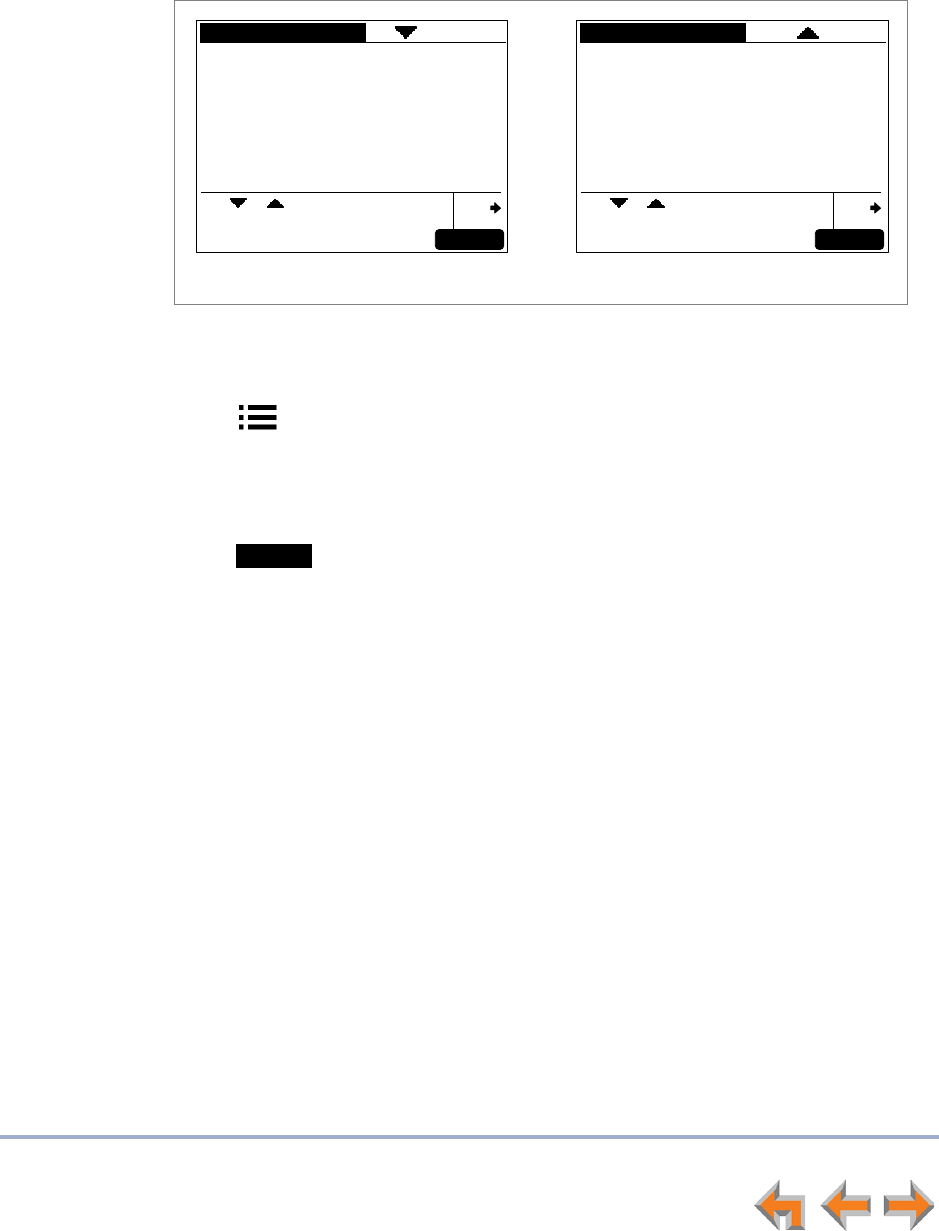
Deskset Settings 101
Syn248 SB35031 Deskset User’s Guide Back to Contents
Deskset Information
Use the Deskset Information screen, shown in Figure 23, to find the Deskset's IP
Address, which you will need to access the WebUI. The other Deskset information may
be used by your system administrator or the installer.
Figure 23. Deskset Information
To display Deskset Information:
1. Press (MENU) and then 4. The Deskset Information screen appears.
The model number, device status, IP Address, and Firmware number are listed with
other information.
2. Press to view additional information.
3. Press to return to the main menu.
Deskset Information
Quick
Dial
Model No: SB35031
Status: Synchronized*
IP Address: 192.168.0.10
MAC Address: 00:11:A0:11:EA:4D
Serial No: GG20013043
Boot Ver: 2.7.1
P Firmware Ver: 1.3.0
Exit
Use or to scroll. Press Exit when
done.
Deskset Information
Use or to scroll. Press Exit when
done.
Quick
Dial
P Firmware Ver: 1.3.0
V Firmware Ver: D023
S Series: 0.6.1
Hardware Ver: 1
Headset: Not Registered
Local Address: 169.254.6.174
Exit
Deskset Information, Page 1 Deskset Information, Page 2
Exit
Draft
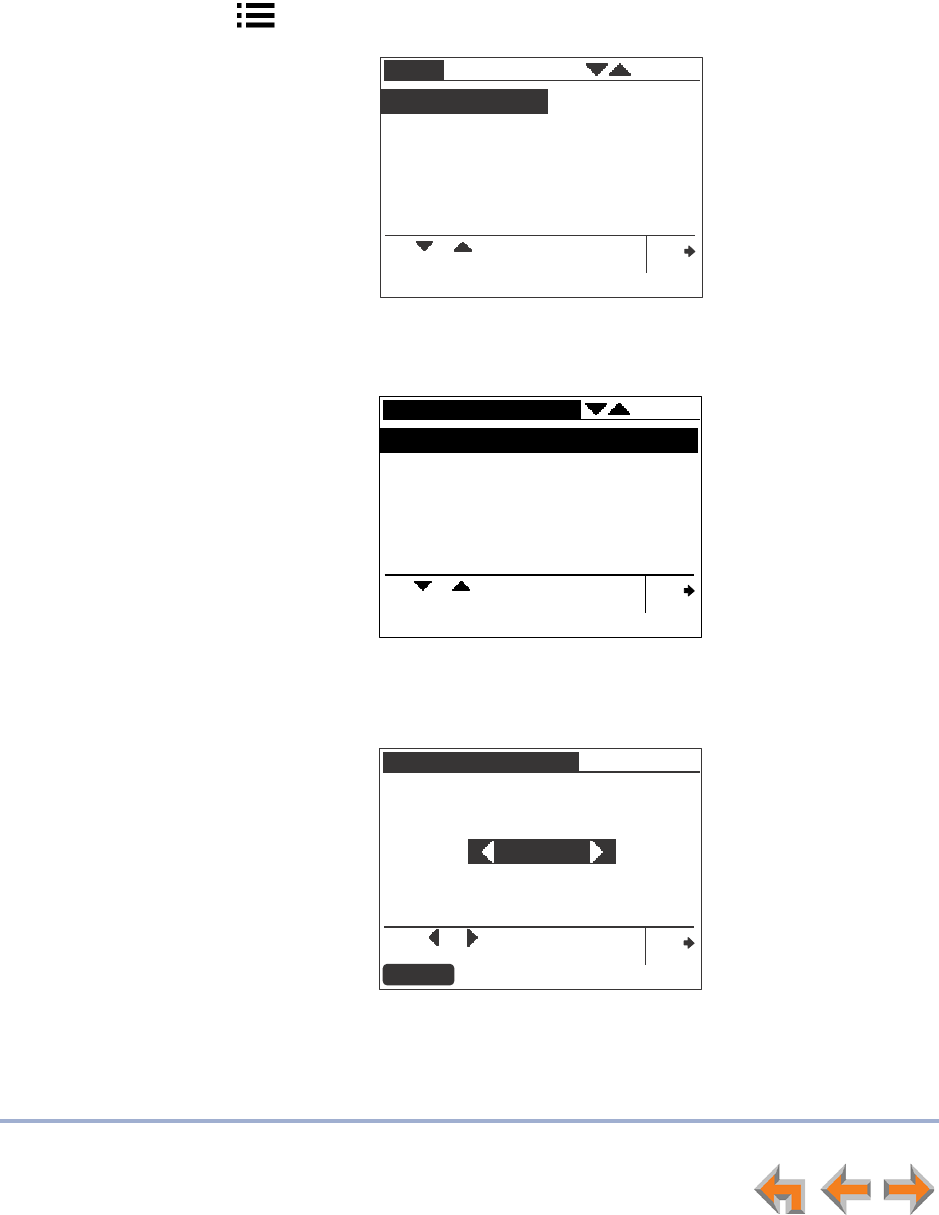
Deskset Settings 102
Syn248 SB35031 Deskset User’s Guide Back to Contents
Auto-Attendant Settings
If your system administrator has set your extension as an Auto Attendant manager, you
can use the Deskset to manage one or more Auto Attendants.
To manage the Auto Attendant Settings:
1. Press (MENU) to display the Menu with a fifth item, Auto Attendant Settings.
2. Press 5 to display the Auto-Attendant Settings. The screen displays a list of Auto
Attendants that you can enable.
3. Highlight the name of the Auto Attendant you want to enable and press SELECT.
4. Press or to select Scheduled, OFF, or Manual.
Scheduled: Turns the selected Auto Attendant on. Incoming calls are forwarded
to an Auto Attendant menu or destination according to the weekly schedule that
the system administrator has set.
Menu
1. Deskset Settings
3. Admin Settings
2. User Settings
Use or to scroll then press
SELECT or press 1-5.
Quick
Dial
4. Deskset Information
5. Auto Attendant Settings
Auto Attendant Settings
Day
Default
Night
Quick
Dial
Use or to scroll then press
SELECT to edit settings.
Auto Attendant Settings
Scheduled
Press or to cycle through
options.
Quick
Dial
Save
Sales
Draft
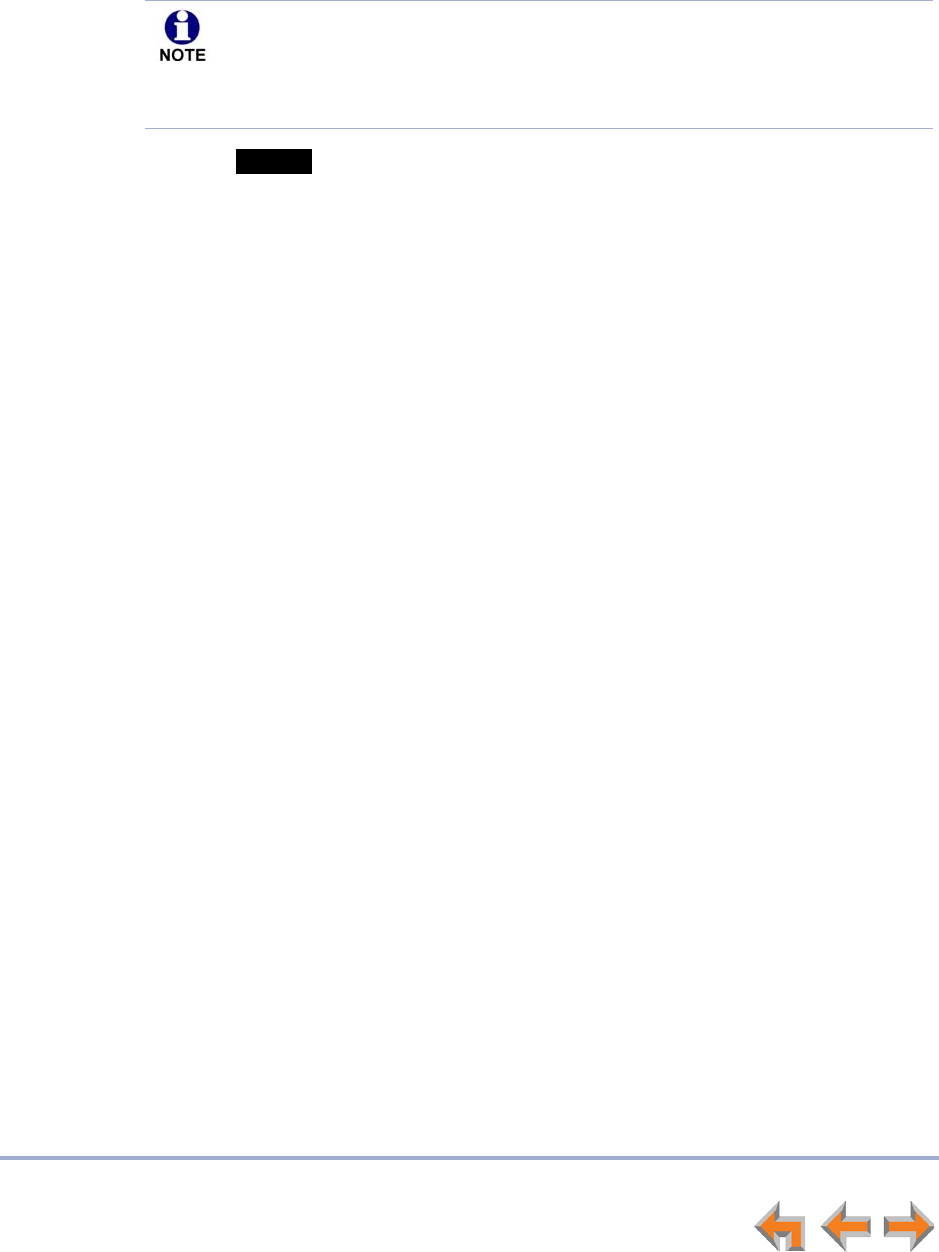
Deskset Settings 103
Syn248 SB35031 Deskset User’s Guide Back to Contents
OFF: Turns the Auto Attendant off. Incoming calls are forwarded to the
destination that the system administrator has set.
Manual: Immediately forwards incoming calls to the Auto Attendant menu that
the system administrator has set. No weekly schedule applies.
5. Press to save the setting. The list of Auto Attendants appears.
For these settings to come into effect, the system administrator must set the
Call Forward–No Answer destination as the Auto Attendant. When the Auto
Attendant is set to Scheduled or Manual, extensions may ring for incoming
calls, but if the calls are not answered, they will be directed to the Auto
Attendant.
Save
Draft
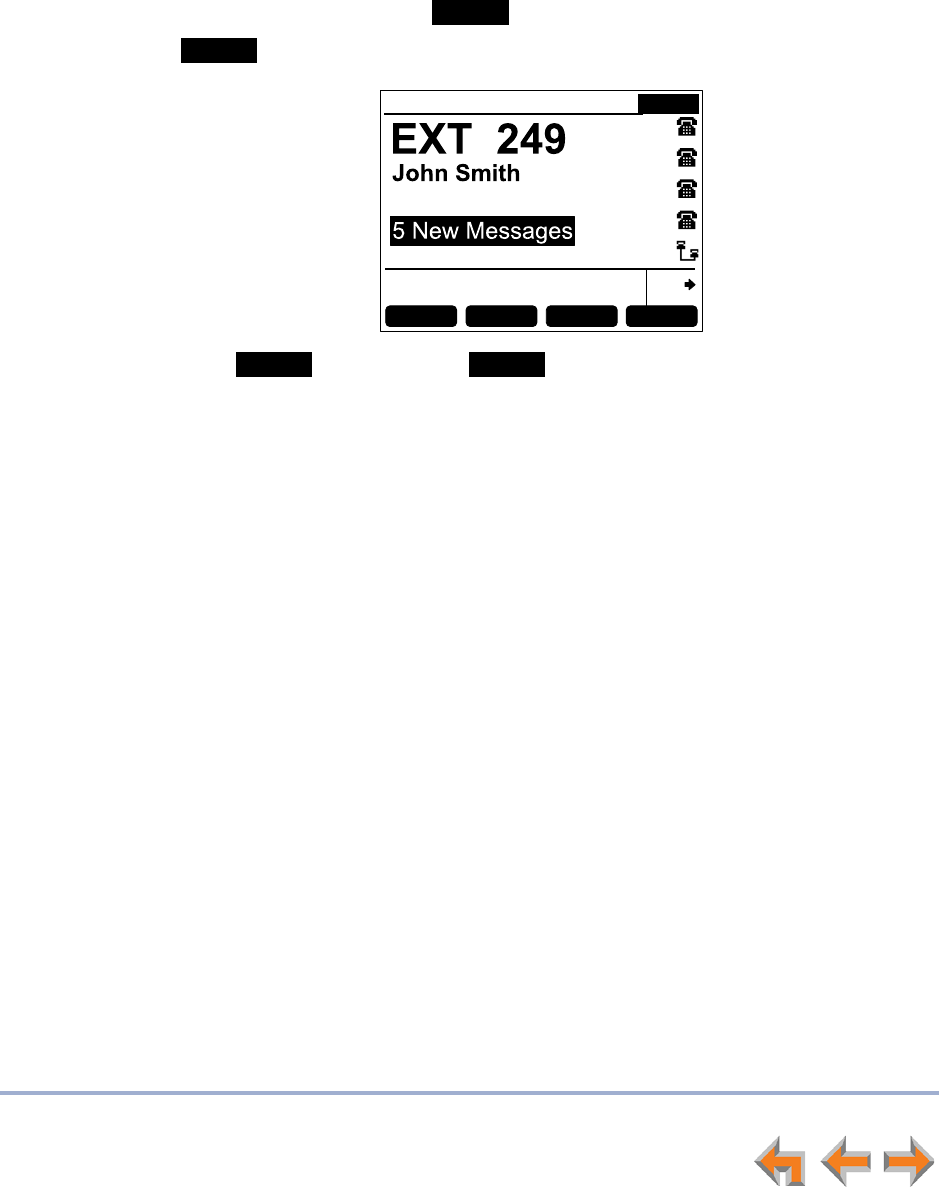
Deskset Settings 104
Syn248 SB35031 Deskset User’s Guide Back to Contents
Using Do Not Disturb (DND)
Do Not Disturb (DND) silences incoming ringing and paging. However, when DND is on,
you can still answer incoming calls. The incoming call screen appears and the Line key
LED flashes.
To enable or disable Do Not Disturb:
1. From the Idle screen, press .
appears in the top right of the Idle screen.
2. Press to turn DND off. disappears from the screen.
DND
DND ON
Quick
Dial
ExtListDNDHoldList Page
12:30PM Thu Feb 25 2010 DND ON
DND
DND ON
Draft

Web Interface 105
Syn248 SB35031 Deskset User’s Guide Back to Contents
CHAPTER
11
W
EB
I
NTERFACE
Use an Internet browser to access the Web User Interface (WebUI) that resides on your
Deskset. See “Accessing the Web User Interface (WebUI)” on page 106. After you log in
to the WebUI, you can configure the following features:
“Basic Settings” on page 108
“Personal Directory” on page 109
“Quick-Dial Keys” on page 111.
You can also view the Deskset Help from the WebUI. See “Help” on page 112.
Draft
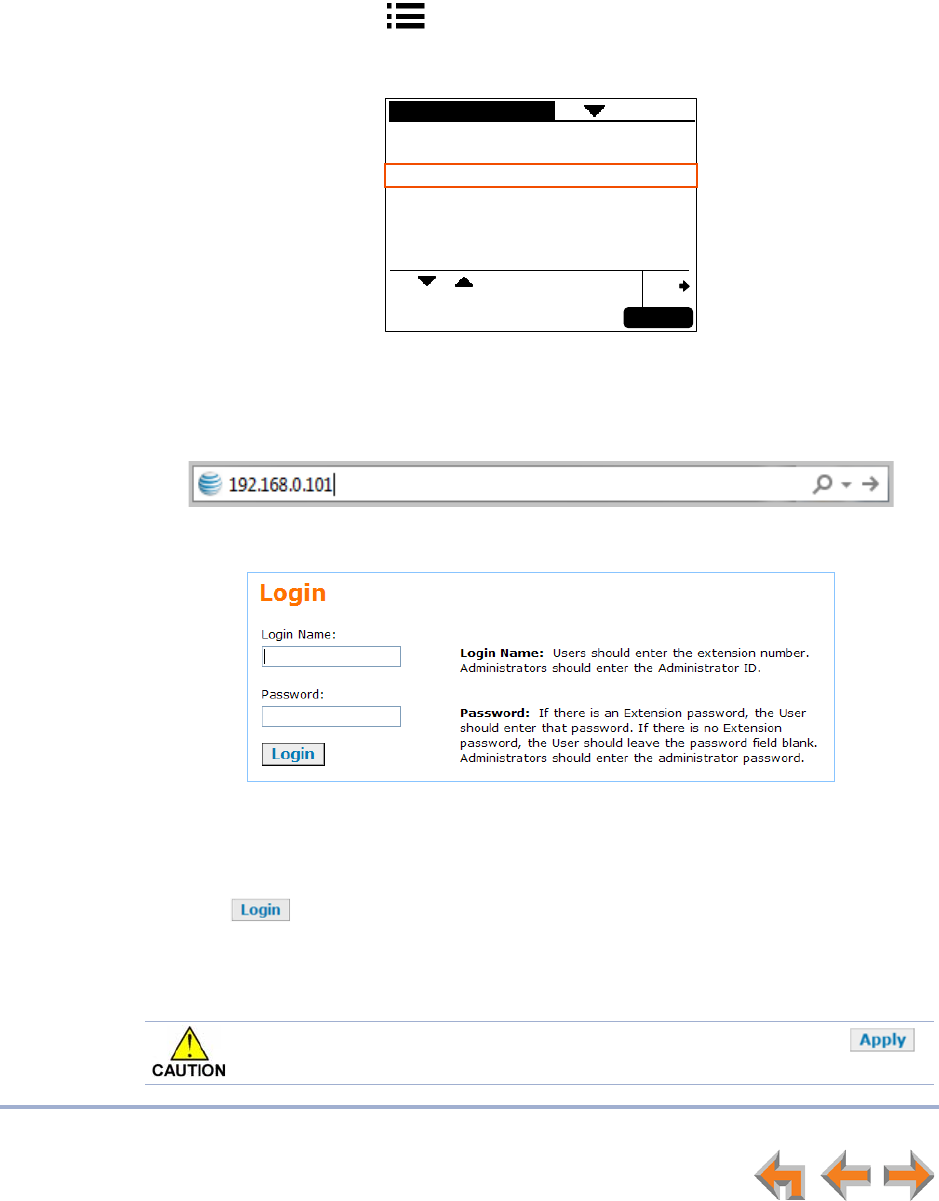
Web Interface 106
Syn248 SB35031 Deskset User’s Guide Back to Contents
Accessing the Web User Interface (WebUI)
To access the WebUI:
1. Ensure that your computer is connected to the same network as the Syn248 system.
In most cases, your computer will already be connected to the network through the
PC port on the back of a Deskset.
2. On the Deskset, press (MENU) then 4 to display Deskset Information.
3. On the Deskset Information screen, find the IP Address.
4. On your computer, open an Internet browser.
5. Type the Deskset IP address in the browser address bar, and press ENTER on your
computer keyboard.
6. A Login page appears.
7. Under Login Name, log in as a user by typing your extension number.
8. Enter your password if you have created one (see “Setting and Changing Your
Password” on page 99). Otherwise, leave the password blank.
9. Click .
You can create or change your user password once you are logged in.
The Basic Settings page shown in Figure 25 on page 108 appears.
Deskset Information
Quick
Dial
Model No: SB35031
Status: Synchronized*
IP Address: 192.168.0.10
MAC Address: 00:11:A0:11:EA:4D
Serial No: GG20013043
Boot Ver: 2.7.1
P Firmware Ver: 1.3.0
Exit
Use or to scroll. Press Exit when
done.
Changing a setting does not instantly apply the new value. Clicking
saves and applies all changes on that page.
Draft
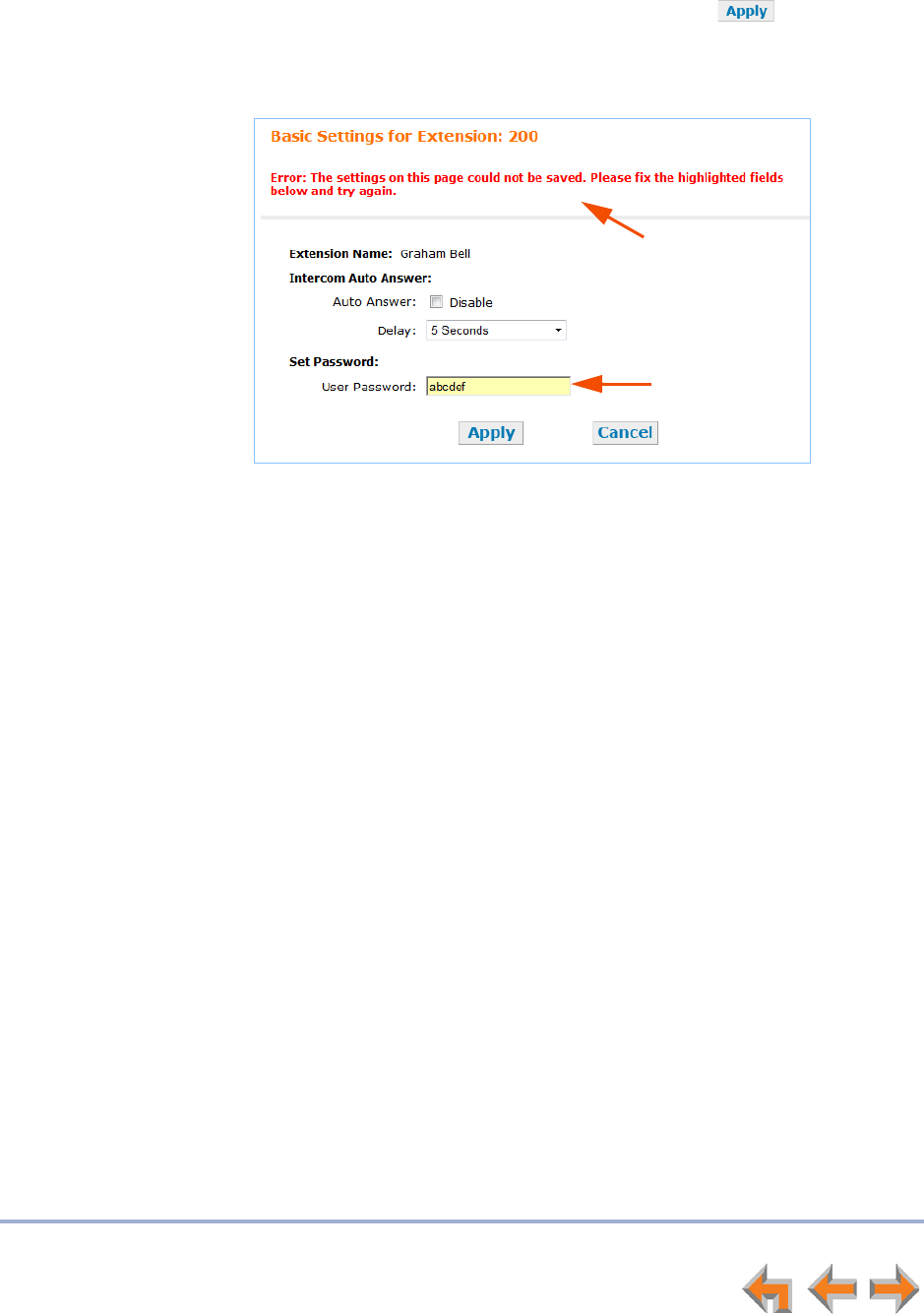
Web Interface 107
Syn248 SB35031 Deskset User’s Guide Back to Contents
Error Handling
If you type an invalid value into one of the WebUI fields and click , the page is not
saved. The WebUI displays an error message at the top of the page. The field with the
incorrect value is highlighted in yellow, as shown in Figure 24. You can view a more
detailed error description by resting your mouse pointer on the highlighted field.
.
Figure 24. WebUI Error Indication
Error Message
Invalid Entry
Draft
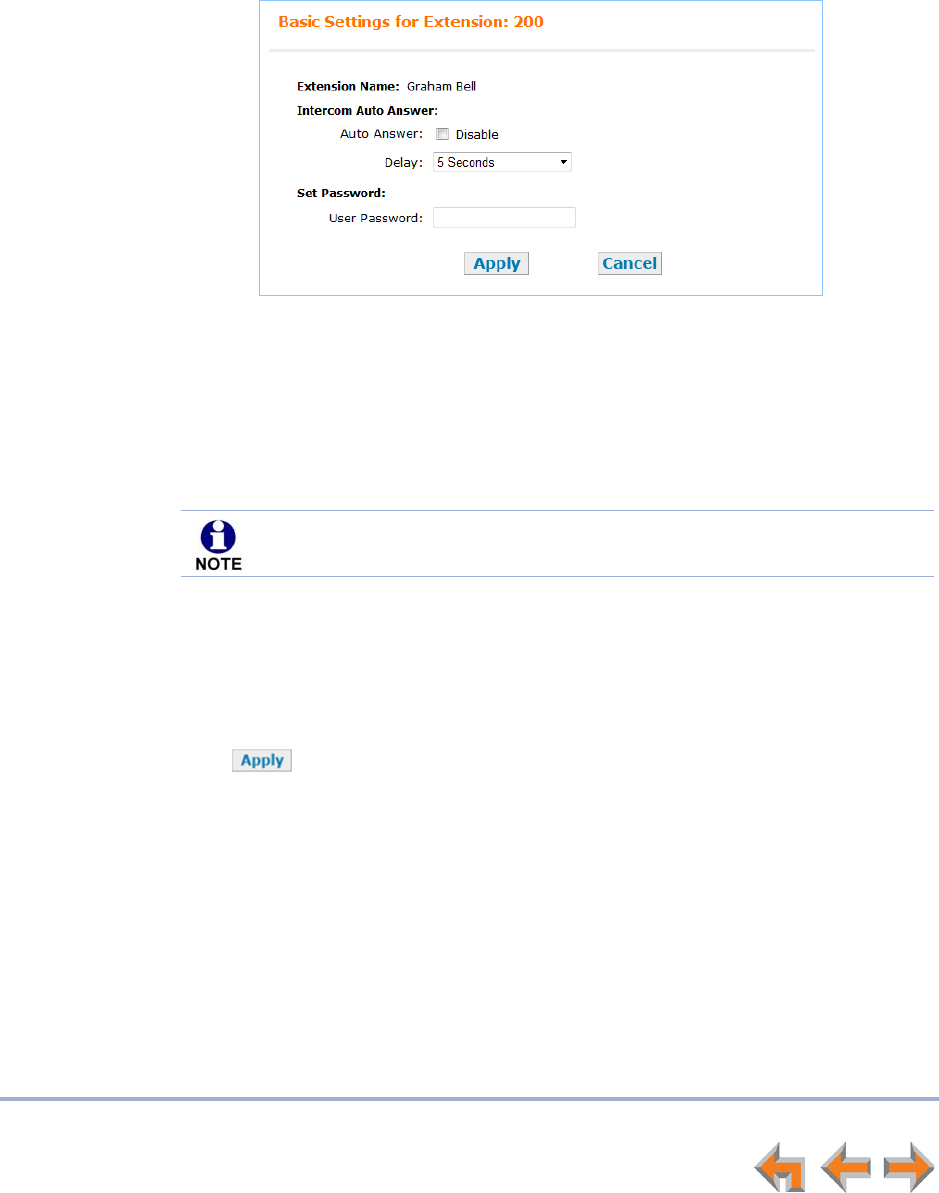
Web Interface 108
Syn248 SB35031 Deskset User’s Guide Back to Contents
Basic Settings
The remaining procedures in this chapter assume that you are already logged in to the
WebUI. See “Accessing the Web User Interface (WebUI)” on page 106.
After logging in, the Basic Settings page appears as shown in Figure 25. Your
Extension Name, which the system administrator enters, is displayed on internal calls.
Figure 25. Extension Basic Settings
To modify the Basic Settings:
1. If Intercom Auto Answer is enabled on your Deskset (see “Intercom Auto Answer”
on page 92), you can:
a. Disable Intercom Auto Answer.
b. Set the Intercom Auto Answer Delay from 0 to 45 seconds. Your Deskset
automatically answers Intercom calls after the delay time you select.
2. Under User Password, create or change your Deskset password. The password must
consist of numbers only and can be up to six digits long. This password is also used
for accessing Voicemail and settings on the Deskset and on the WebUI.
3. Click to save your changes.
If Intercom Auto Answer is disabled from the Deskset, this setting does not
appear.
Draft
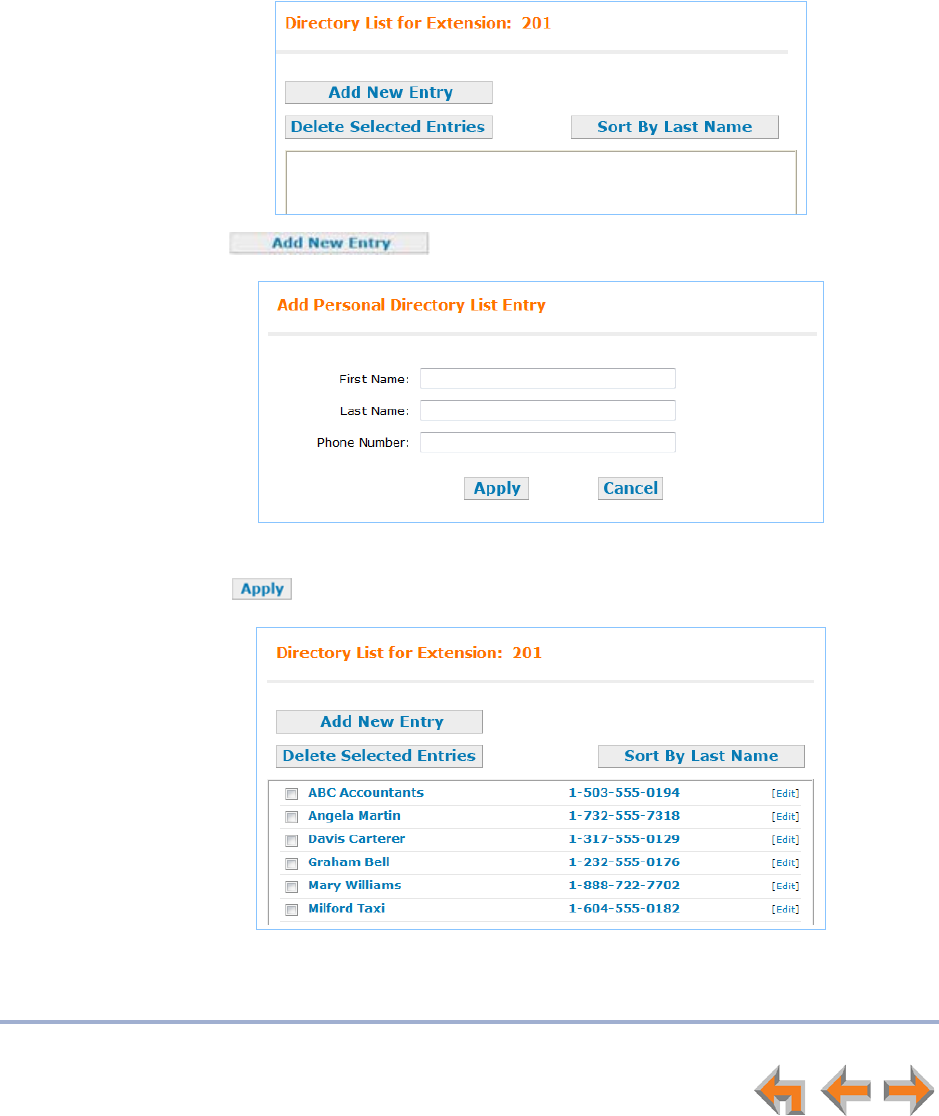
Web Interface 109
Syn248 SB35031 Deskset User’s Guide Back to Contents
Personal Directory
To allow easy dialing, you can create a Personal Directory that is only available from
your extension. You can also view and edit Personal Directory entries using the Deskset.
See “Directory” on page 53.
To add an entry to the Personal Directory:
1. In the navigation menu at left, click Personal Directory. The Directory List page
appears.
2. Click . The Add Personal Directory List Entry page appears.
3. Complete the form with the required information.
4. Click to save. The Directory List appears with the entries added.
Draft
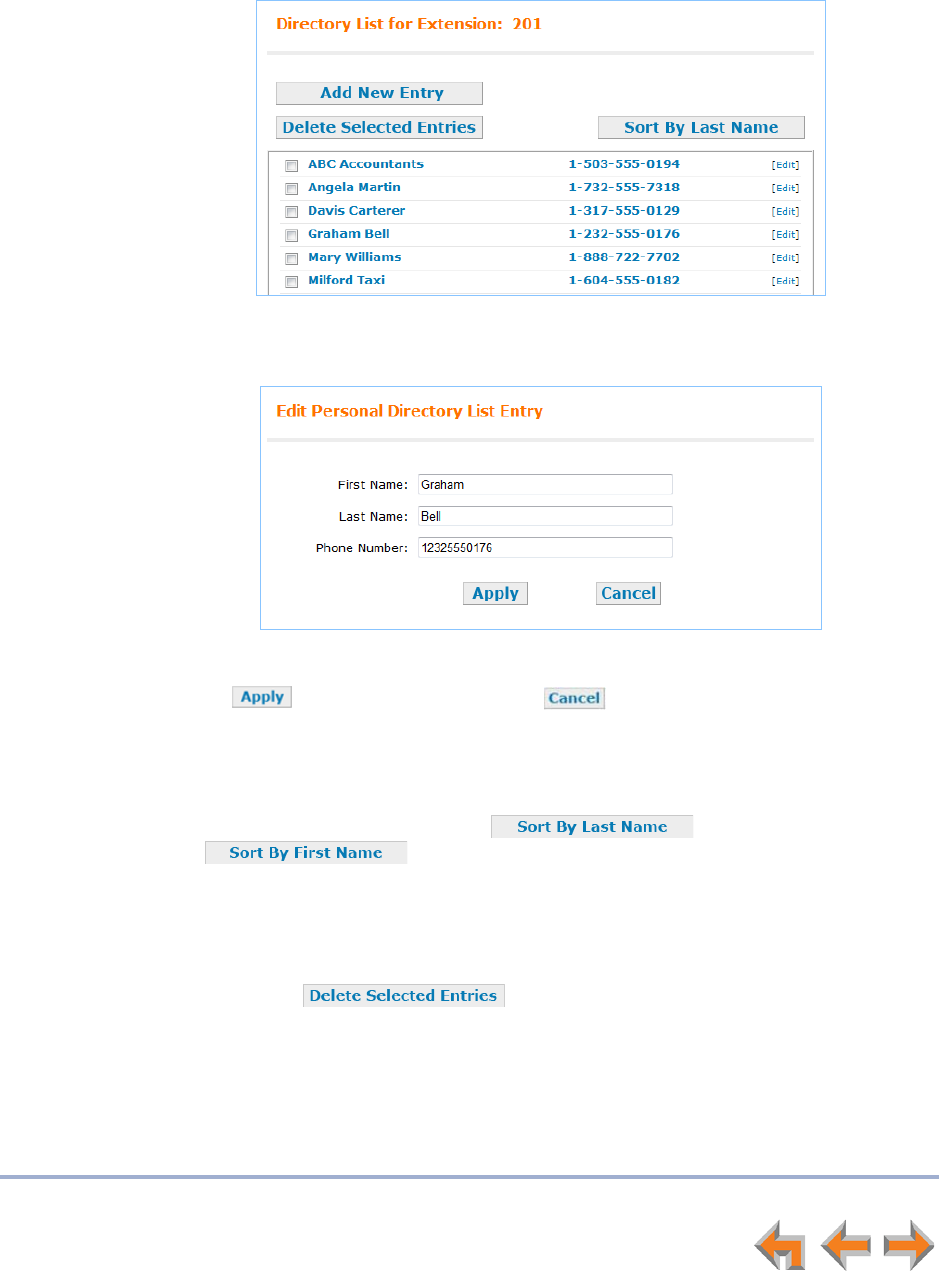
Web Interface 110
Syn248 SB35031 Deskset User’s Guide Back to Contents
To edit Personal Directory entries:
1. In the navigation menu at left, click Personal Directory. The Directory List page
appears.
2. Click [Edit] next to the entry to be edited. The Edit Personal Directory List Entry
page appears.
3. Complete the form with the desired information.
4. Click to accept your changes or to reject the changes.
To sort and delete Personal Directory entries:
1. In the navigation menu at left, click Personal Directory to display the Directory List.
2. To sort entries by last name, click . The button then changes
to . This action only works during the current session. The sort
order reverts to listing the names by first name when you log in the next time.
3. To delete Directory entries:
a. Click the check boxes for the entries you want to delete.
b. Click . All of the selected entries are removed.
Draft
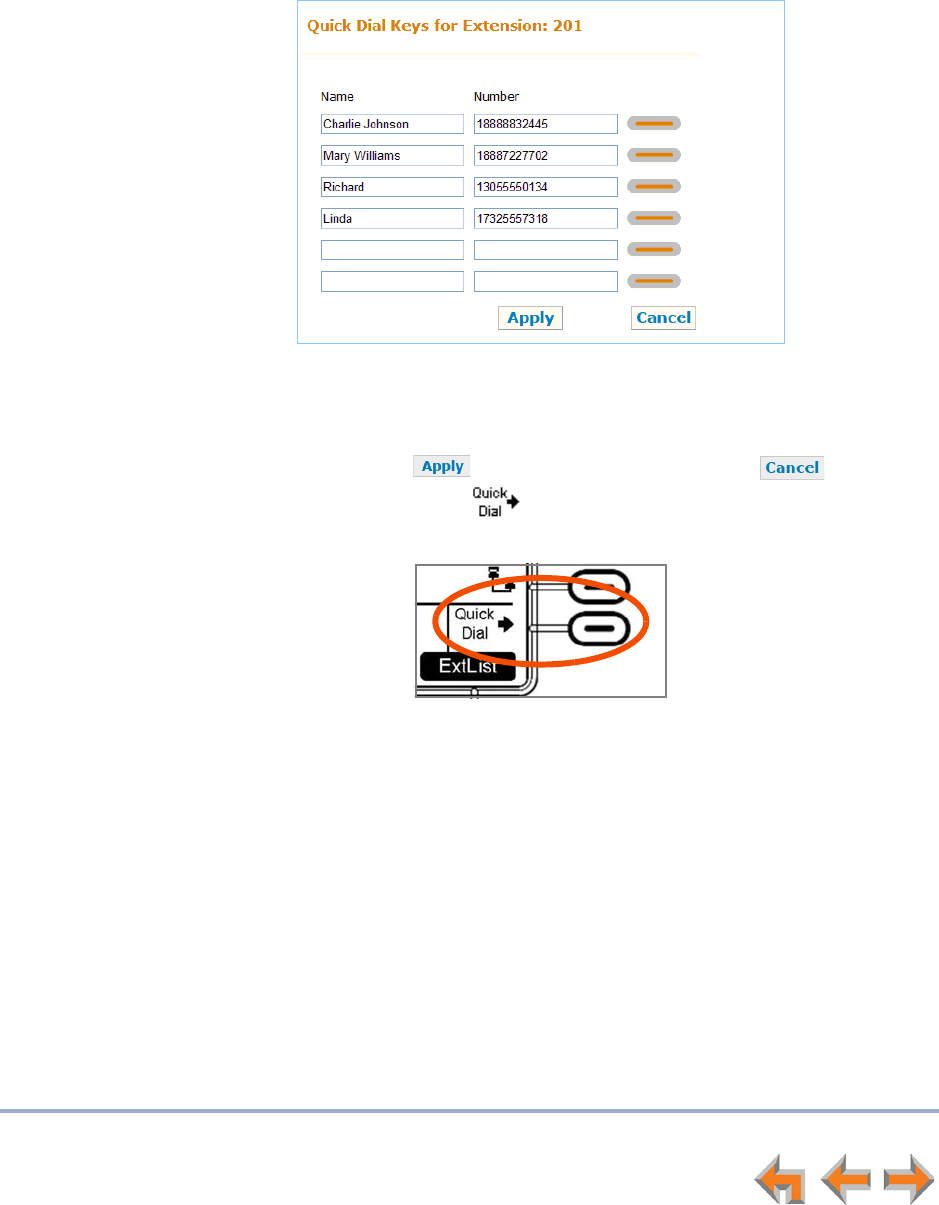
Web Interface 111
Syn248 SB35031 Deskset User’s Guide Back to Contents
Quick-Dial Keys
To add or edit quick-dial entries:
1. In the navigation menu at left, click Quick Dial Keys. The Quick Dial Keys page
appears.
2. Enter names and telephone numbers or extensions in the Name and Number
columns.
To edit or delete an entry, type over the entry.
3. To save the entries, click , or to reject the changes, click .
4. Press the key to the right of the label on the Deskset to verify that the entries
have been added or edited.
Draft
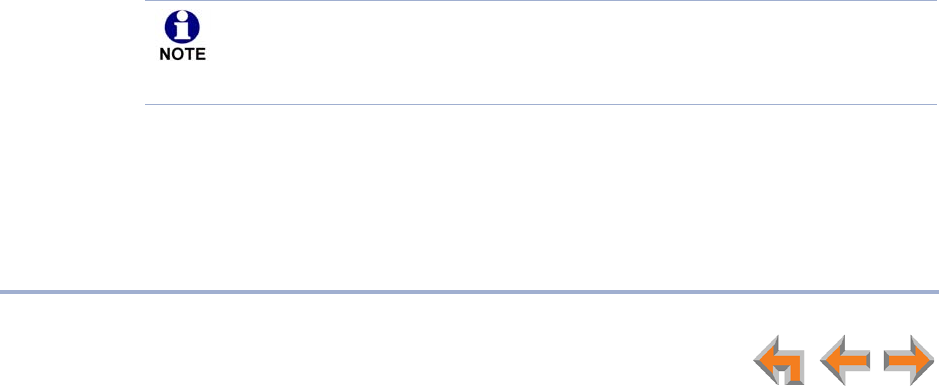
Troubleshooting 113
Syn248 SB35031 Deskset User’s Guide Back to Contents
CHAPTER
12
T
ROUBLESHOOTING
If you have difficulty operating your Deskset and accessories, try the following
suggestions in this section:
“Common Troubleshooting Procedures” on page 114
“Display Messages” on page 116
“Calls Generally” on page 118
“Incoming Calls” on page 121
“Outgoing Calls” on page 123
“Voicemail” on page 124
“Other Deskset Features” on page 126
“WebUI” on page 127
“PC/Deskset Interaction” on page 128
“Cordless Headset” on page 129.
For customer service or product information, contact the person who installed
your system. If your installer is unavailable, visit our web site at
www.telephones.att.com/smb or call 1 (888) 386-2006. In Canada,
dial 1 (888) 469-2005.
Draft
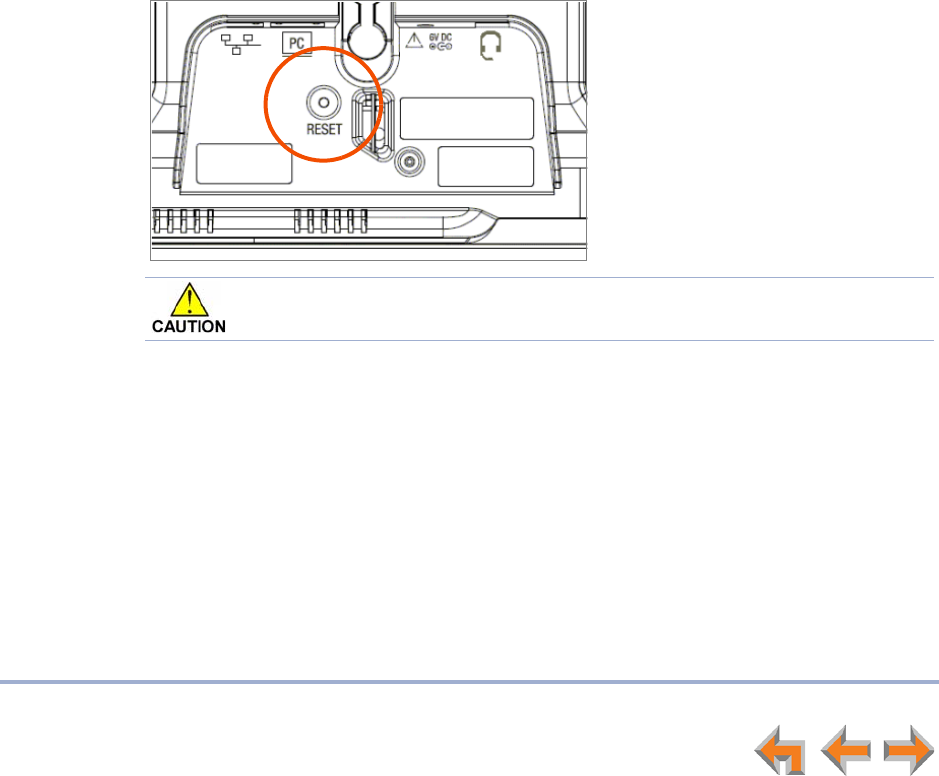
Troubleshooting 114
Syn248 SB35031 Deskset User’s Guide Back to Contents
Common Troubleshooting Procedures
Follow these procedures to resolve common issues.
Resolving General Functional Issues
To resolve a blank screen or device that does not work at all:
Ensure the AC plug is plugged into an electrical outlet not powered by a wall
switch.
Verify that the AC power outlet has power. Try plugging in some other AC device.
If nothing works, contact an electrician or use another power outlet.
Verify that the DC plug is plugged into the power jack on the device.
The system devices are not immediately active when powered up and after a
power interruption. Allow at least 30 seconds for the device to boot up.
If your Deskset uses Power over Ethernet (PoE), ask your system administrator to
confirm that the PoE switch is working correctly.
To resolve a sluggish, unresponsive, or unusually behaving device:
Reset the device by using a pen or paper clip to press the RESET button on the back of
the Deskset for less than five seconds or by removing and restoring AC power.
To restore a Deskset to factory defaults:
Use a pen or paper clip to press the RESET button on the back of the Deskset for more
than five seconds.
Pressing the RESET button for more than five seconds will erase all data and
settings.
Draft
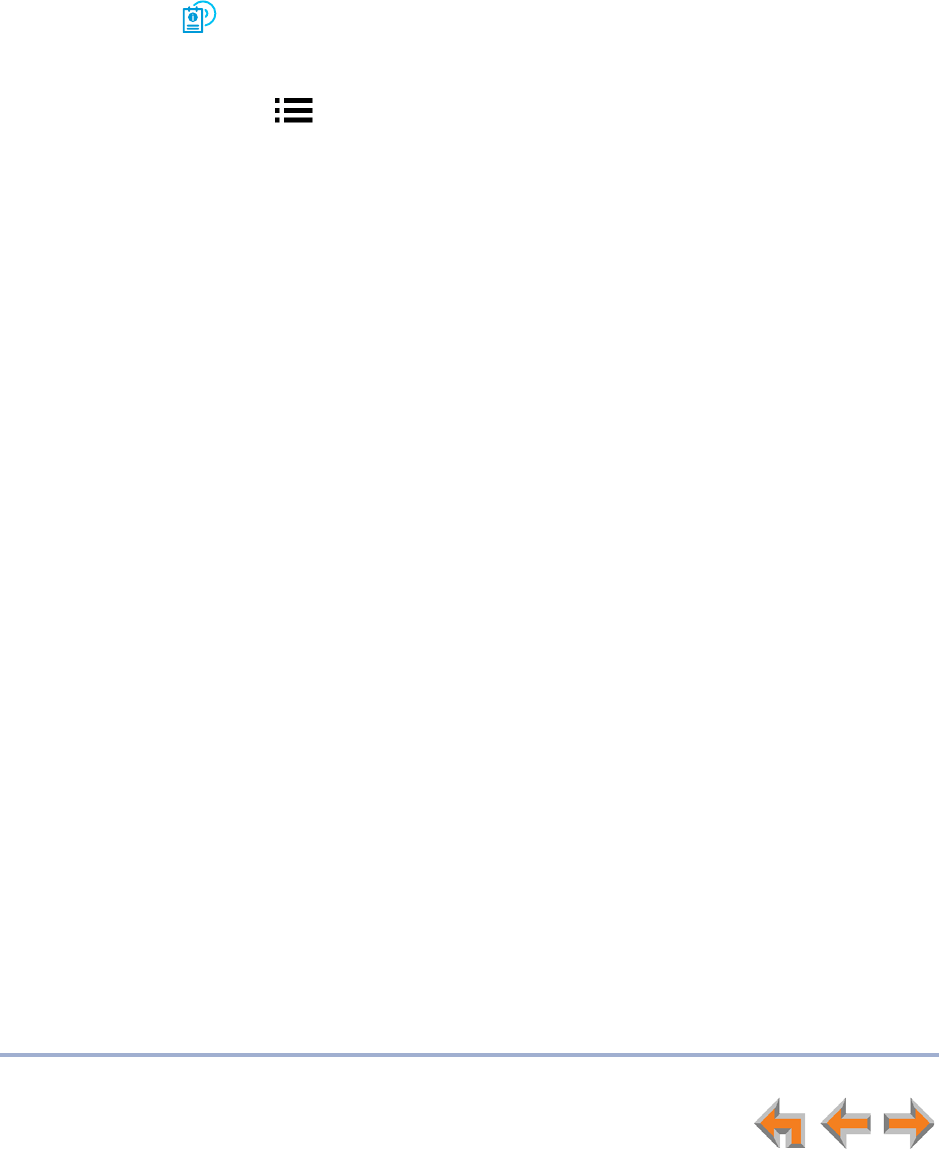
Troubleshooting 115
Syn248 SB35031 Deskset User’s Guide Back to Contents
To resolve problems with a cordless device:
For features or audio problems, make sure that the Deskset associated with the cordless
device does not share the problem. If it does, look in Deskset Troubleshooting. See “Other
Deskset Features” on page 126.
1. Verify that the device battery has power.
When removed from the charger, the Cordless Headset emits a dial tone or three
beeps when you press ON/OFF.
If there is no power, see the cordless headset’s user’s manual.
2. Verify that the Deskset Cordless Headset screen indicates that the device is
registered.
Press (MENU) –> 2 –> 6.
If the headset is not registered, register it. See “Registering an Optional Cordless
Headset” on page 96.
Draft
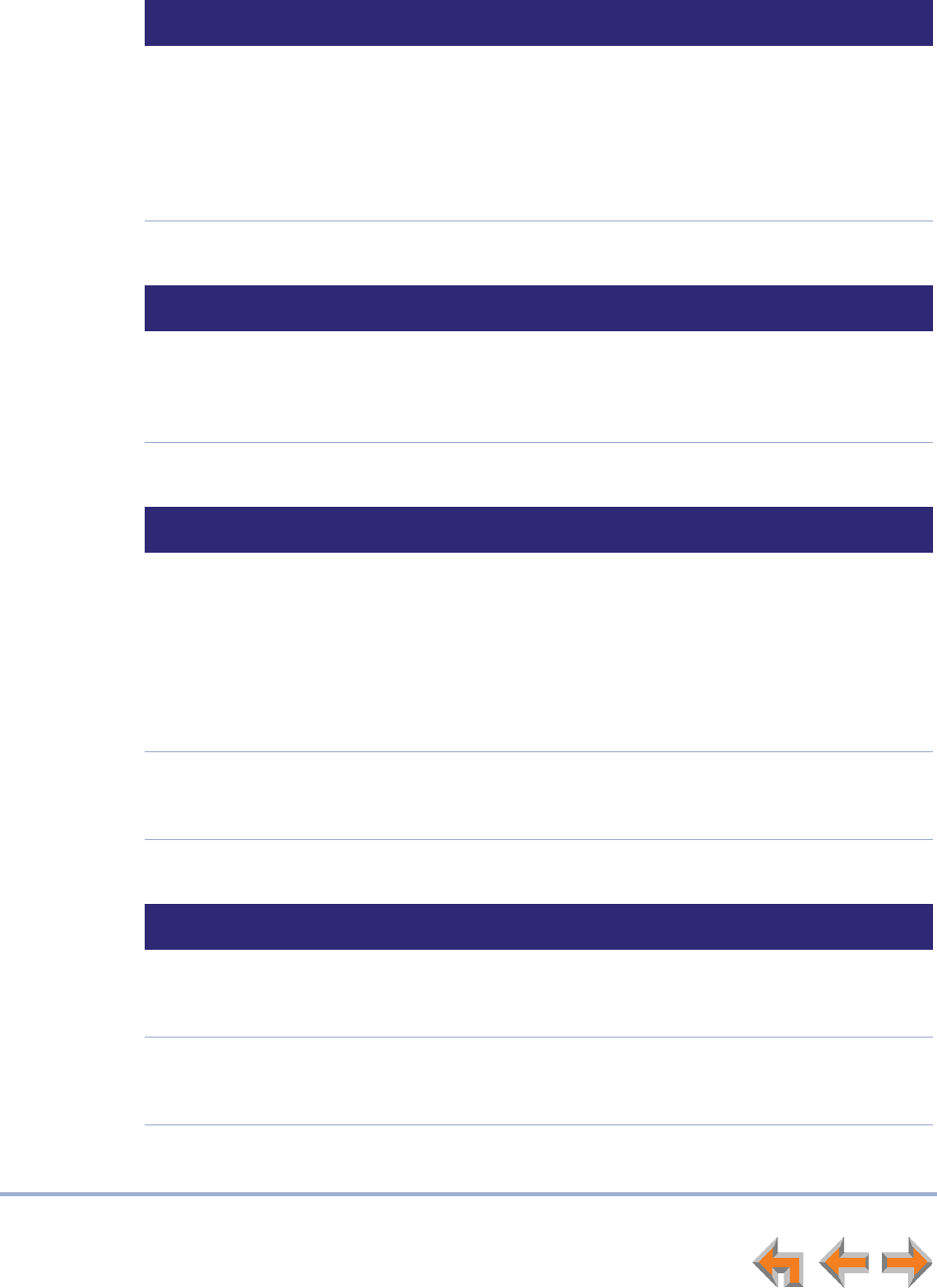
Troubleshooting 116
Syn248 SB35031 Deskset User’s Guide Back to Contents
Display Messages
The screen is blank or the Deskset menu does not work.
The screen displays Joining Site... for more than one minute.
The screen displays Network Down.
The screen displays Synch Failed.
Probable Cause Corrective Action
There may be no power or
the Deskset may need to be
reset.
See “To resolve a blank screen or device that
does not work at all:” on page 114.
Reset the Deskset to factory defaults. Disconnect
the LAN cable and insert a pen or paper clip into
the reset hole and press for more than five
seconds.
Probable Cause Corrective Action
The Gateway is failing to
synchronize with a Deskset
configured for a different
system configuration.
Always disconnect the LAN cable before restoring
factory defaults (by pressing the RESET button
more than five seconds).
Probable Cause Corrective Action
The Ethernet cable is
unplugged.
Ensure that one end of the Ethernet cable is
plugged into the port marked LAN on the device
and that the other end is plugged into your office
LAN.
Confirm that the Ethernet port light next to the
Ethernet port is green. If it is not, unplug the
cable and plug it in again.
There may be a problem with
the office network.
Check if other network devices, such as
computers, are communicating with the network.
If not, then contact your IT administrator.
Probable Cause Corrective Action
The device synch failed when
trying to connect to the
system.
Reset the device. Insert a pen or paper clip into
the reset hole and press for more than five
seconds.
The maximum number of that
type of device has been
reached.
A device must be removed from the network and
deleted from the system before another device
can be added.
Draft
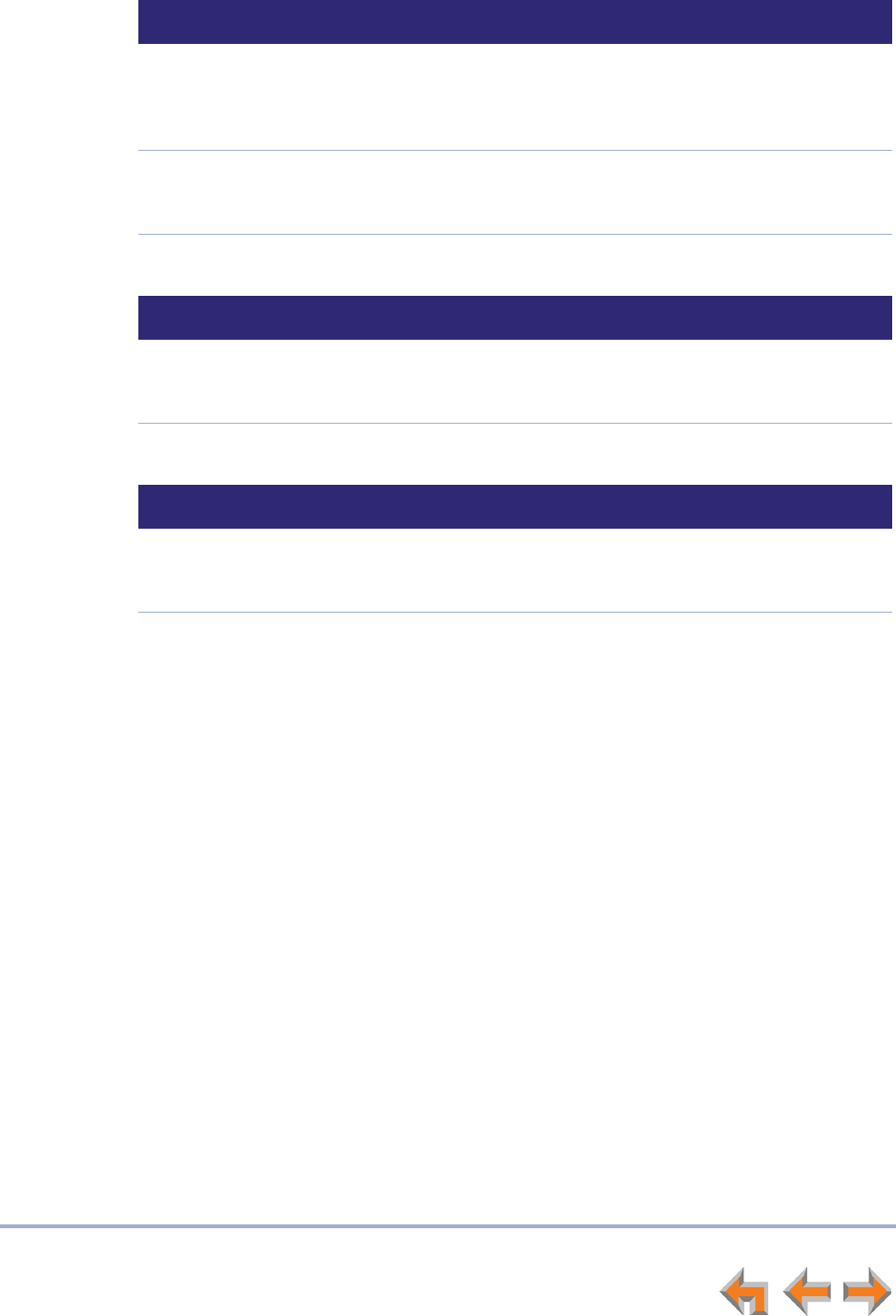
Troubleshooting 117
Syn248 SB35031 Deskset User’s Guide Back to Contents
The device screen displays Synchronizing....
Deskset cannot make or receive phone calls and the Deskset screen displays Synchronizing....
The same Deskset extension
number already exists.
Disconnect the network cable and reset the
Deskset to factory defaults. Insert a pen or paper
clip into the reset hole and press for more than
five seconds. Reconnect the Deskset.
The device software version
is different than the rest of
the system.
Ask your system administrator to update all
devices to the current software version.
Probable Cause Corrective Action
Probable Cause Corrective Action
Not enough time has
elapsed.
The device may display Synchronizing… for a
few seconds. This is normal and does not indicate
a problem.
Probable Cause Corrective Action
The Deskset may have an
incompatible software
version.
Ask your system administrator to update your
Deskset to the current software version.
Draft
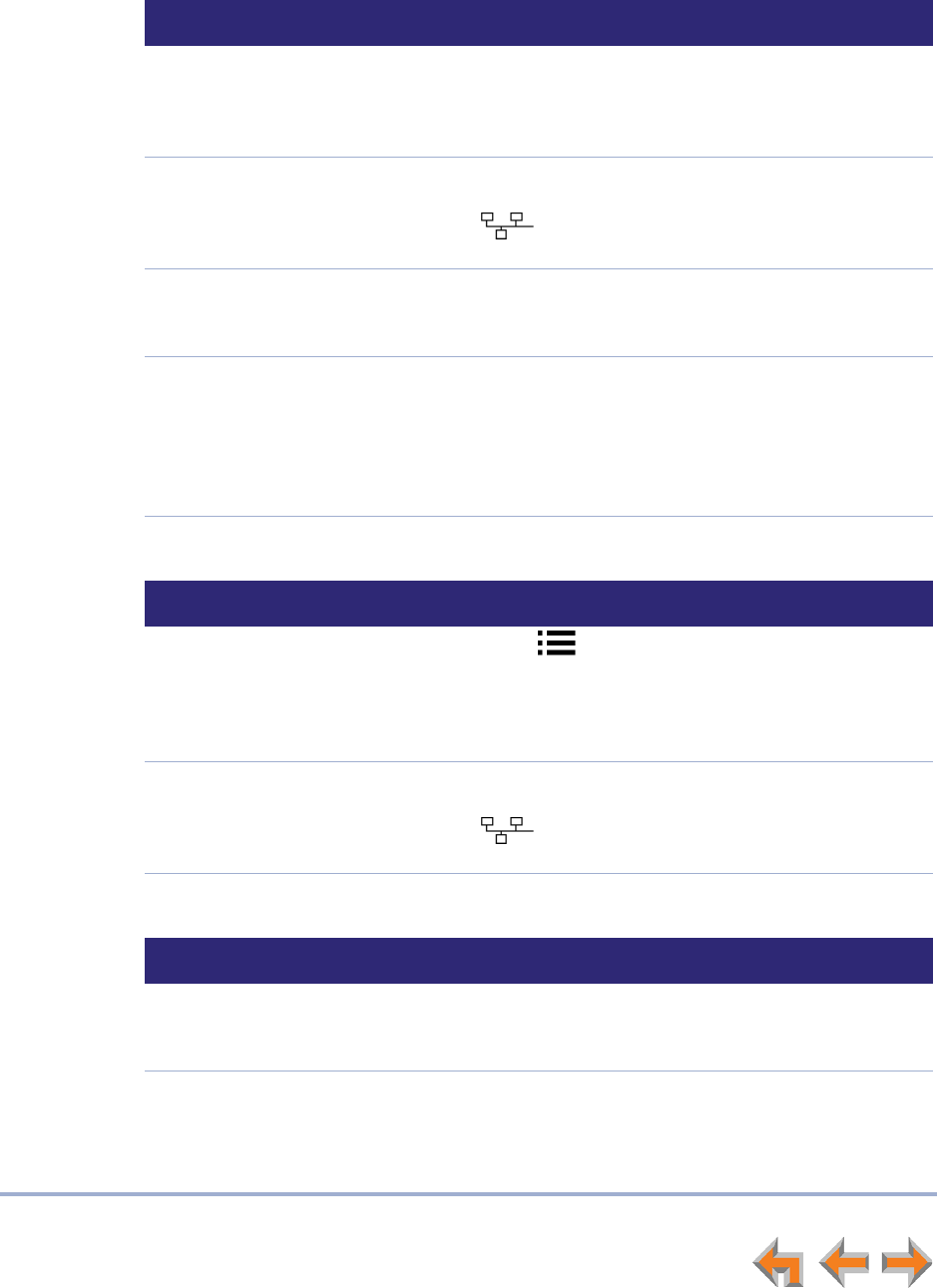
Troubleshooting 118
Syn248 SB35031 Deskset User’s Guide Back to Contents
Calls Generally
Calls are dropped.
Deskset cannot make or receive phone calls
On external calls, you hear an excessive echo at the Deskset.
Probable Cause Corrective Action
Restoring Deskset settings or
updating software while that
extension is in use will cause
all calls to be dropped.
Your system administrator should avoid updating
software or restoring Deskset settings when you
are likely to be using the phone.
The network is down. Ensure that the Ethernet cable is securely
plugged into the Deskset network port (labeled
) and that the other end is plugged into
your office LAN.
The Deskset extension was
changed during the call.
Contact your system administrator. If changes
were made to your extension while you were on
a call, that call is dropped.
Maximum Call Duration was
exceeded.
None. Outside calls that are forwarded or
transferred to an outside phone number use two
outside lines for the duration of the call. To avoid
tying up two lines, the duration of such calls is
limited by a timer that your system administrator
sets.
Probable Cause Corrective Action
Your Deskset is not
synchronized.
Press (MENU) –> 4 to verify that the
Deskset Status is Synchronized. See “Deskset
cannot make or receive phone calls and the
Deskset screen displays Synchronizing....” on
page 117.
Your Deskset is not
connected to the LAN.
Ensure that the Ethernet cable is securely
plugged into the Deskset network port (labeled
) and that the other end is plugged into
your office LAN.
Probable Cause Corrective Action
The automatic Gateway line
calibration did not run
properly.
See your system administrator. There may be
non-system equipment connected in parallel to
the telephone line.
Draft
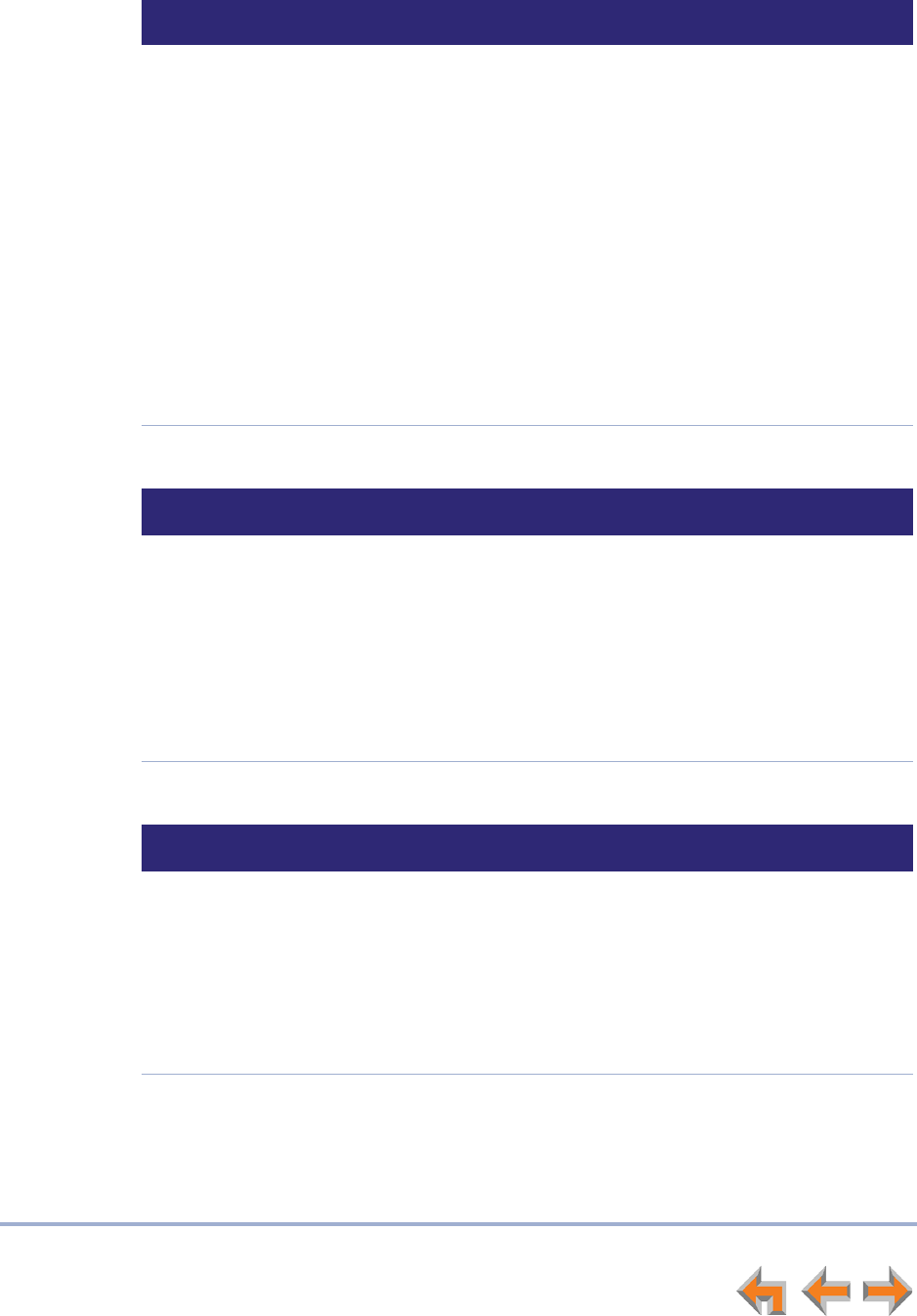
Troubleshooting 119
Syn248 SB35031 Deskset User’s Guide Back to Contents
You hear static, sudden silences, gaps in speech, or garbled speech.
A call is forwarded or transferred to an outside telephone number and the call is disconnected.
You are unable to transfer a call to an extension.
Probable Cause Corrective Action
You may be experiencing
network problems.
Your LAN administrator should ensure the
following minimum guidelines are met:
A switched network topology is
recommended (using standard 10/100
Ethernet switches that carry traffic at a
nominal rate of 100 Mbit/s).
The office network infrastructure should use
Cat.-5 wiring.
Do not connect a network server PC to the PC
port on the Deskset.
Make sure the network cable is securely plugged
in. If you tug on the cable, the plug should remain
inserted.
Probable Cause Corrective Action
“Telephone line to telephone
line” call times have been
restricted. Calls that are
forwarded or transferred to
an outside phone number
use two outside lines for the
duration of the call. To avoid
tying up two lines, these calls
are on a timer.
Ask your system administrator to reset the Timer
for Forwarded and Transferred Outside
Calls.
Probable Cause Corrective Action
The extension is unavailable. Check if the destination extension is
disconnected from the network.
Ensure that the extension exists.
All the destination extension’s lines may be busy.
If the party you have on hold hangs up, call back
and start the transfer process again.
Draft
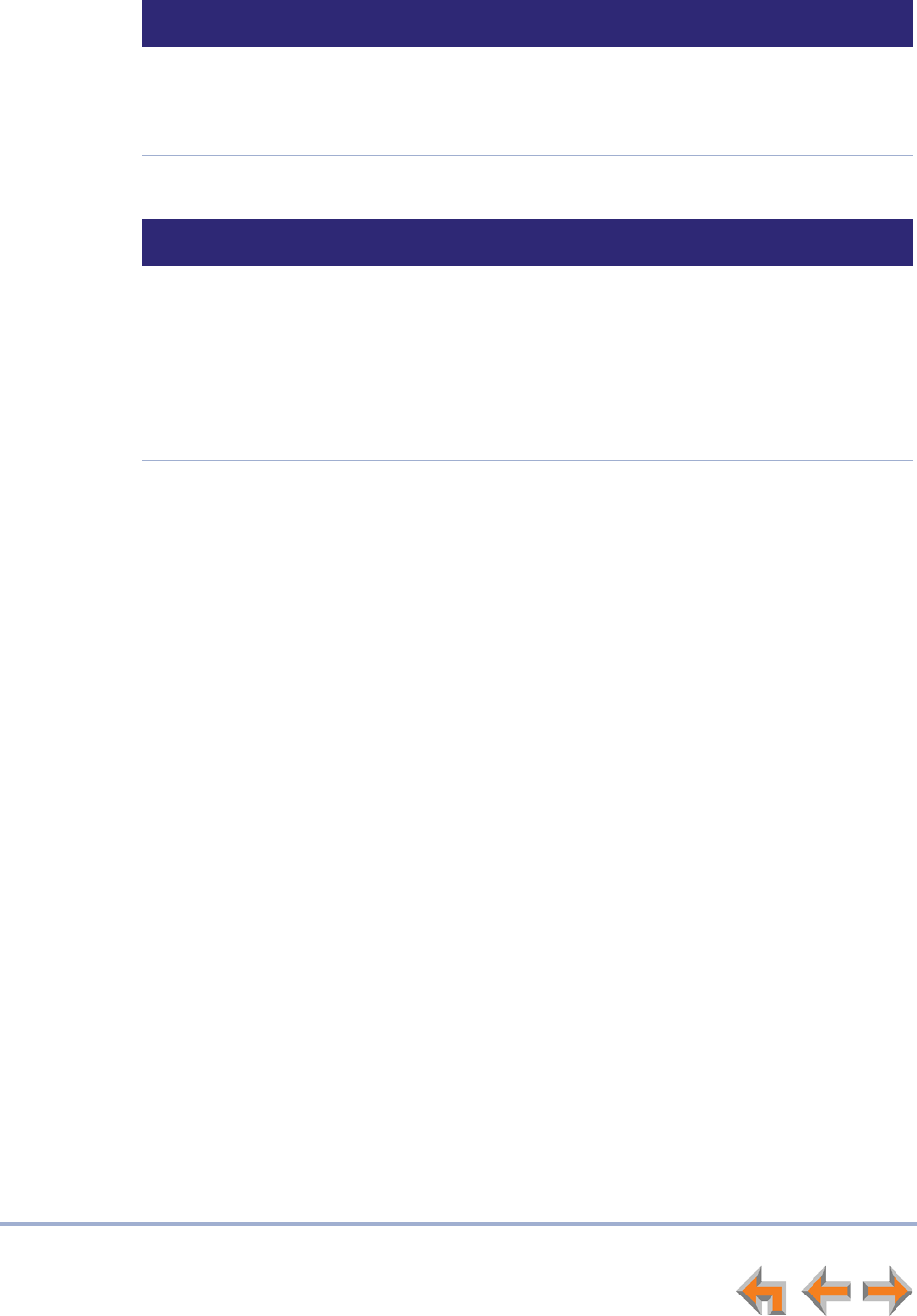
Troubleshooting 120
Syn248 SB35031 Deskset User’s Guide Back to Contents
You are unable to transfer a call to an outside phone number.
Unanswered Intercom calls are not automatically forwarded to an outside phone number.
Probable Cause Corrective Action
Transferring to an outside
phone number has been
disabled for your extension,
or no lines are available.
Check that your system administrator has
enabled transferring to an outside phone number.
All phone lines may be in use. If so, try again later.
Probable Cause Corrective Action
Forwarding to an outside
phone number has been
disabled or the Intercom Call
Forward–No Answer settings
are incorrect.
Ensure that a valid outside number is shown in
the Intercom CFNA to Phone # field (this setting
is part of the Deskset Admin Settings).
Check that forwarding to an outside phone
number has been enabled. Your system
administrator must enable Fwd/Trans to line in
the Deskset Admin Settings.
Draft
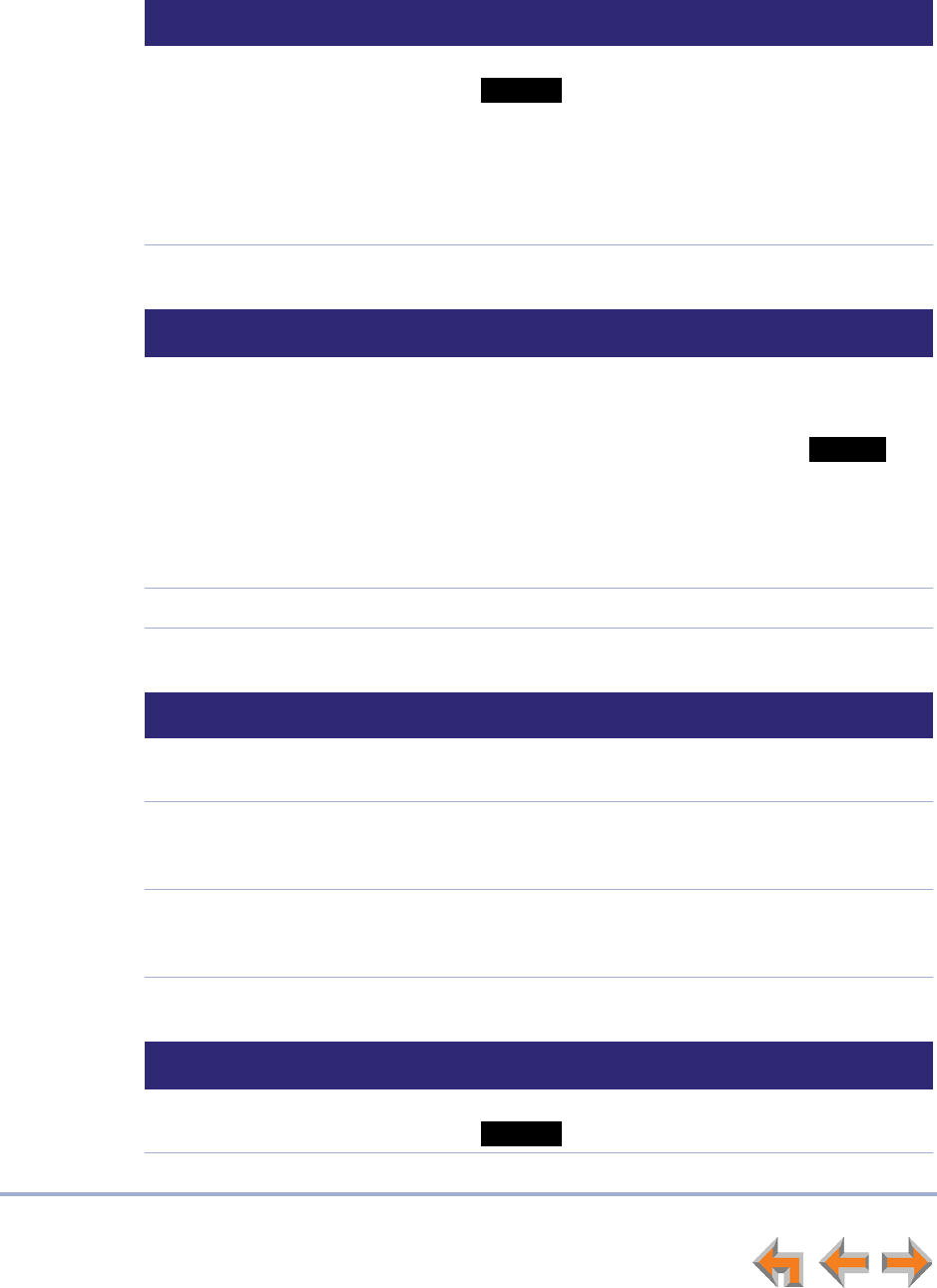
Troubleshooting 121
Syn248 SB35031 Deskset User’s Guide Back to Contents
Incoming Calls
Your Deskset does not receive incoming calls.
Deskset does not ring.
External caller cannot find your extension in the Auto Attendant Directory.
Deskset does not Auto Answer Intercom calls.
Probable Cause Corrective Action
Incoming call notifications
have been suppressed or
delayed, or incoming calls
are redirected by the
Deskset, or incoming calls
are not directed to the
Deskset.
Verify that Do Not Disturb is off. Make sure that
is not in the top right corner of the
Deskset display. Turn this feature off by using the
Deskset Idle screen soft keys.
Incoming calls on the line are being forwarded to
a CFNA destination and the Seconds before
Forwarding setting is 0 Seconds.
DND ON
Probable Cause Corrective Action
Your system administrator
has set your Deskset to
ignore incoming calls on
selected lines. If your Deskset
has one or more lines
configured this way, your
Deskset automatically
ignores incoming calls on
those lines.
None. Your Deskset will not ring for incoming
calls on those lines, but it will display an incoming
call screen. If you see the incoming call screen,
you can answer the call by pressing or
the flashing Line key.
The ringer volume is too low. Press the VOL+ key to increase ringer volume.
Answer
Probable Cause Corrective Action
You have not recorded a
Personal Name.
Record a name at the Deskset. See “Name
Recording” on page 94.
Your system administrator has
not entered your first and last
name into the Extension list.
Consult your system administrator.
The external caller may not
be waiting long enough for
the search.
Tell callers that after spelling the name, they can
press the pound (#) sign to start the search.
Probable Cause Corrective Action
The Deskset is in DND mode. Deactivate DND. On the Idle screen, press
.
DND
Draft
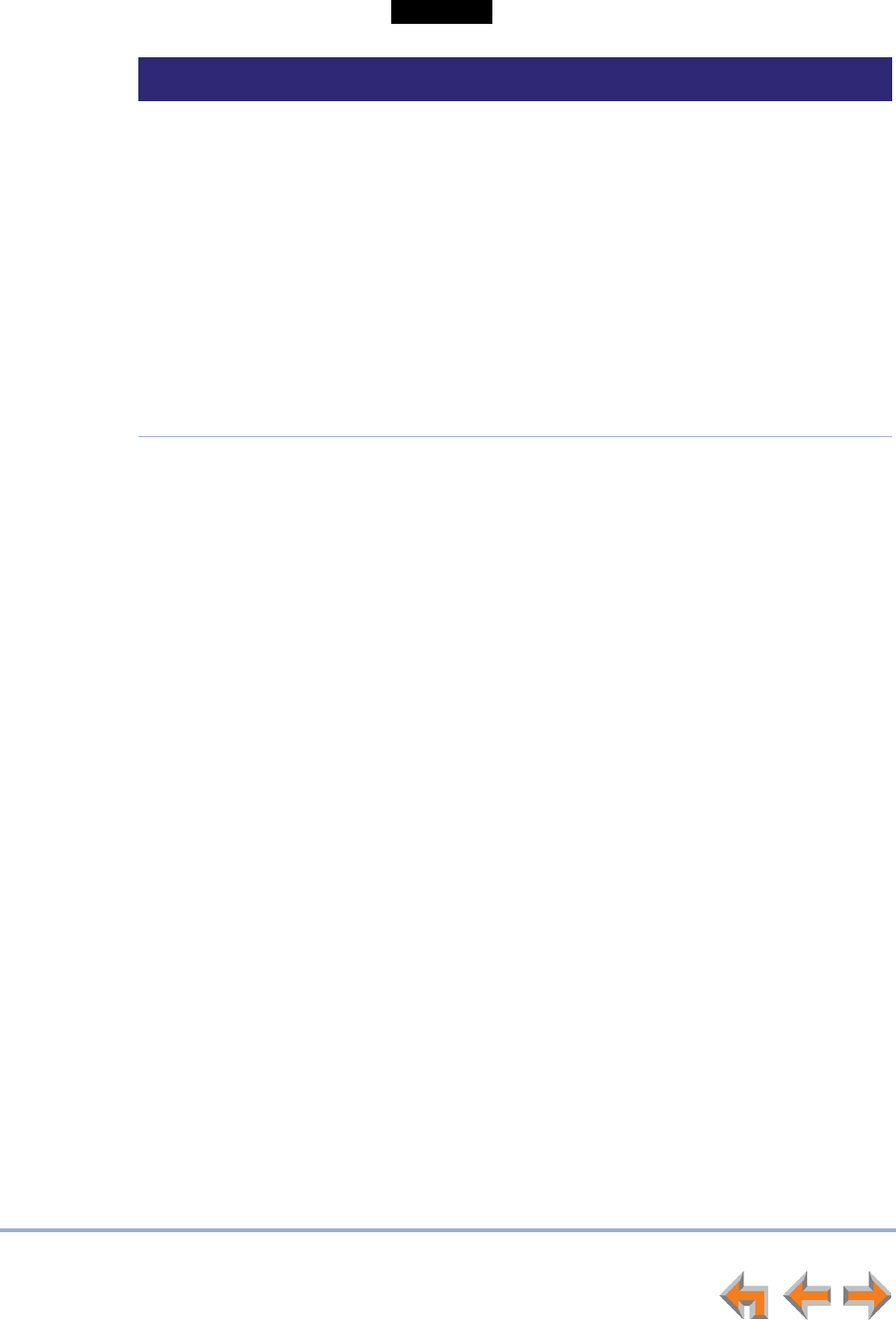
Troubleshooting 122
Syn248 SB35031 Deskset User’s Guide Back to Contents
Caller ID is not working. The display shows and a digit for the name, and the same digit
for the phone number.
Phone#
Probable Cause Corrective Action
Your organization does not
subscribe to caller ID service
or you have DSL phone lines
without filters installed.
Caller ID is a subscription service. You must
subscribe to this service from your local
telephone service provider for this feature to
work on your phone.
The caller must be calling from an area that
supports caller ID.
Both you and your caller’s telephone companies
must use caller ID compatible equipment.
If you have DSL phone lines, confirm that you
have a DSL filter plugged in between each
Deskset and DSL wall jack. The DSL filter must be
plugged into the wall jack, not the Gateway.
Draft
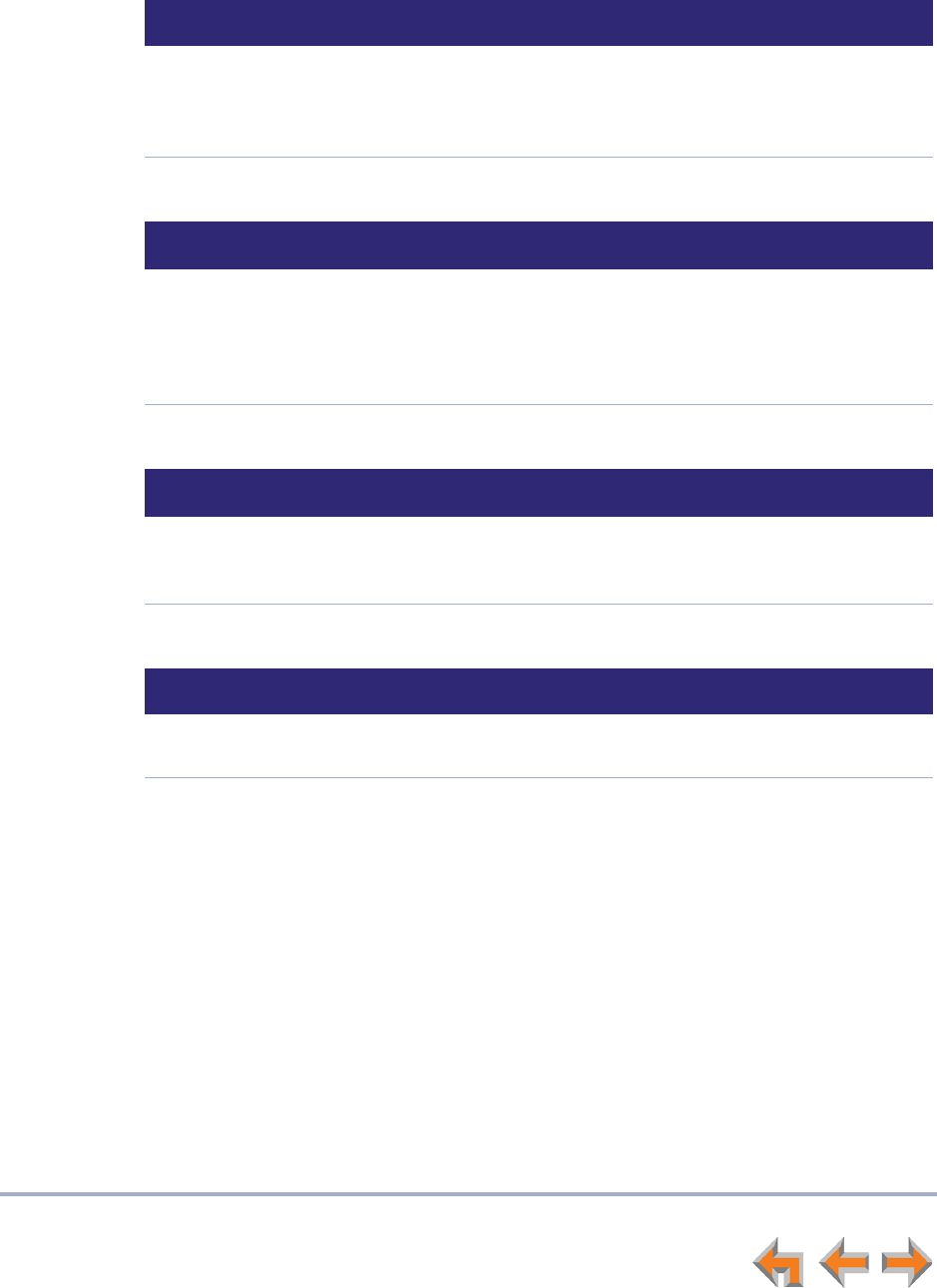
Troubleshooting 123
Syn248 SB35031 Deskset User’s Guide Back to Contents
Outgoing Calls
No dial tone.
When you dial an outside number, you reach an extension instead.
You cannot make calls to an outside number.
DDNs (Directory Dial Numbers) do not dial out properly from the Call Log.
Probable Cause Corrective Action
Handset cord is plugged into
the wrong jack.
Ensure the handset cord is plugged into the
handset jack on the side of the Deskset. Do not
connect the handset cord to the corded headset
jack on the back of the Deskset.
Probable Cause Corrective Action
You predialed a phone
number with an area code
that matches an extension
number, then you pressed
the Intercom key.
After predialing an outside phone number, press
an available Line key to dial the number.
Probable Cause Corrective Action
All outside lines may be in
use.
If you see Phone Line Unavailable on the
Deskset screen, try again later because all
outside lines may be in use.
Probable Cause Corrective Action
This system does not support
DDN.
DDNs in the Call Log are treated like all other
caller ID phone numbers.
Draft
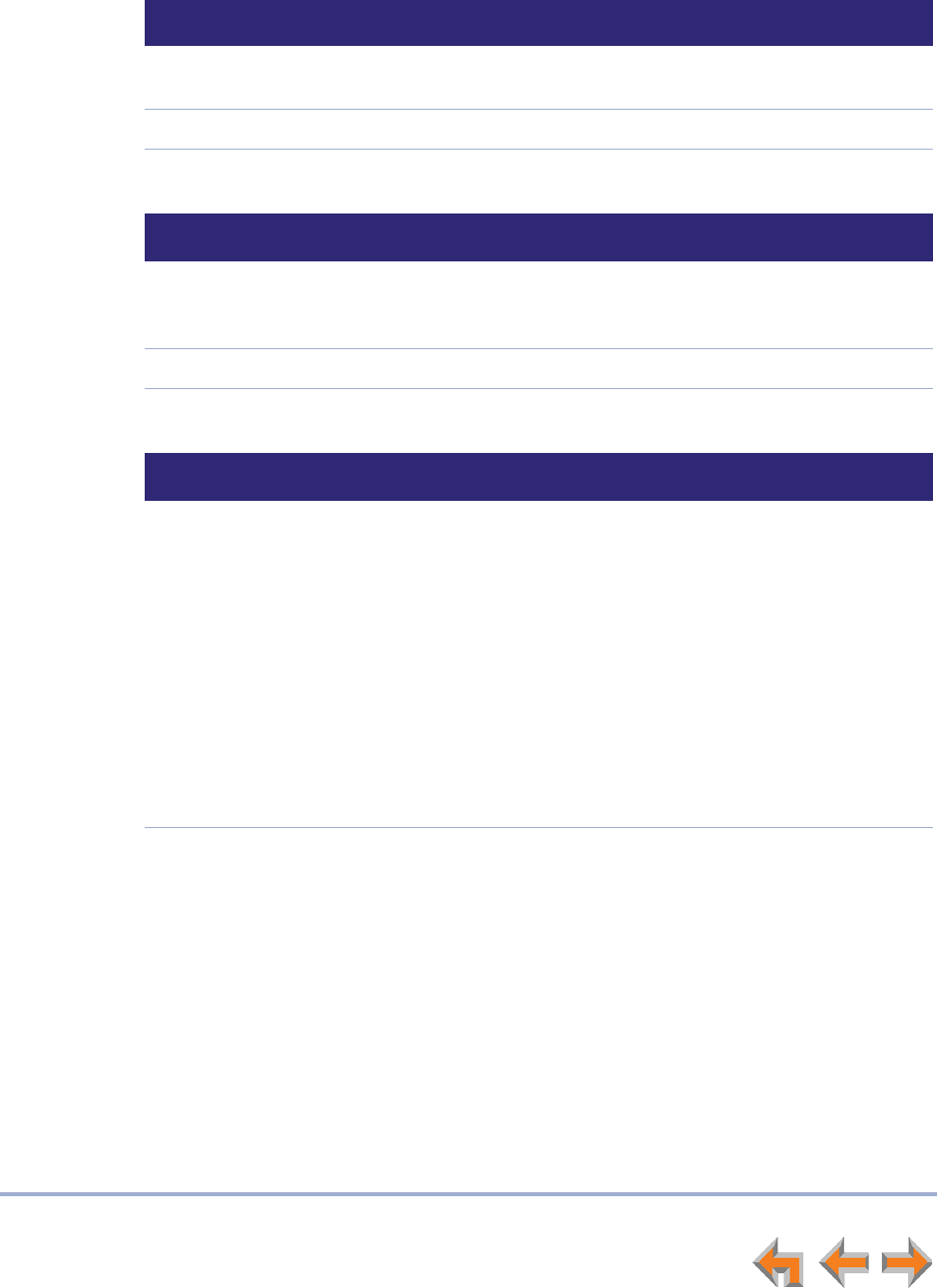
Troubleshooting 124
Syn248 SB35031 Deskset User’s Guide Back to Contents
Voicemail
Voicemail is not received at the extension you called.
Your Deskset does not receive voicemail.
Incomplete voicemail messages.
Probable Cause Corrective Action
The extension’s voicemail
memory is full.
Delete messages.
Extension is unplugged. Plug in the extension.
Probable Cause Corrective Action
Calls are not being directed
to voicemail.
Ask the system administrator to check the Phone
Line Call Forward–No Answer settings or the
Intercom Call Forward–No Answer settings.
Voicemail memory is full. Delete messages.
Probable Cause Corrective Action
Recording interrupted by
time-out or full memory.
If a caller leaves a very long message, part of it
may be lost when the Deskset disconnects the
call after two minutes.
If an outside caller pauses for longer than six
seconds, the Deskset stops recording and
disconnects the call.
If the Deskset’s memory becomes full during a
message, the Deskset stops recording and
disconnects the call.
If the caller's voice is very soft, the Deskset may
stop recording and disconnect the call.
Draft
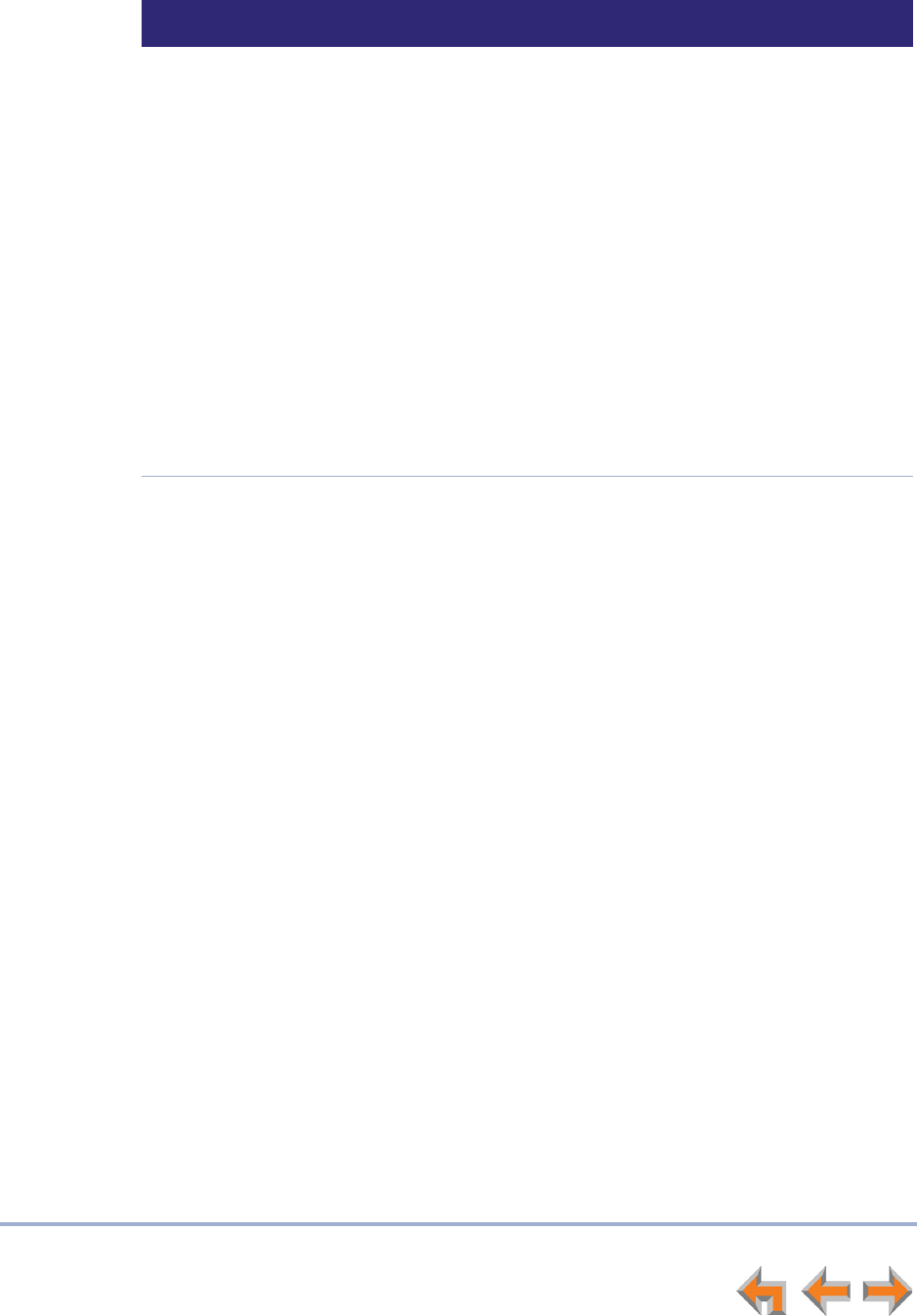
Troubleshooting 125
Syn248 SB35031 Deskset User’s Guide Back to Contents
The system does not respond to remote voicemail commands.
Probable Cause Corrective Action
The system cannot detect
Dual-Tone Multi-Frequency
(DTMF) tones, which are the
signals sent when the caller
presses dial-pad keys.
Confirm you have entered star, star (**) before
entering your remote access code (user
password). If you have no password, press star,
star (**), then pound (#).
Confirm you are calling from a touch-tone phone.
When you dial a number, you should hear tones.
If you hear clicks, the phone is not a touch-tone
telephone and cannot activate the answering
system.
The answering system might not detect the star,
star (**) while your announcement is playing. Try
waiting until the announcement is over before
entering the code.
There may be interference on the phone line you
are using. Press the dial-pad keys firmly.
Draft
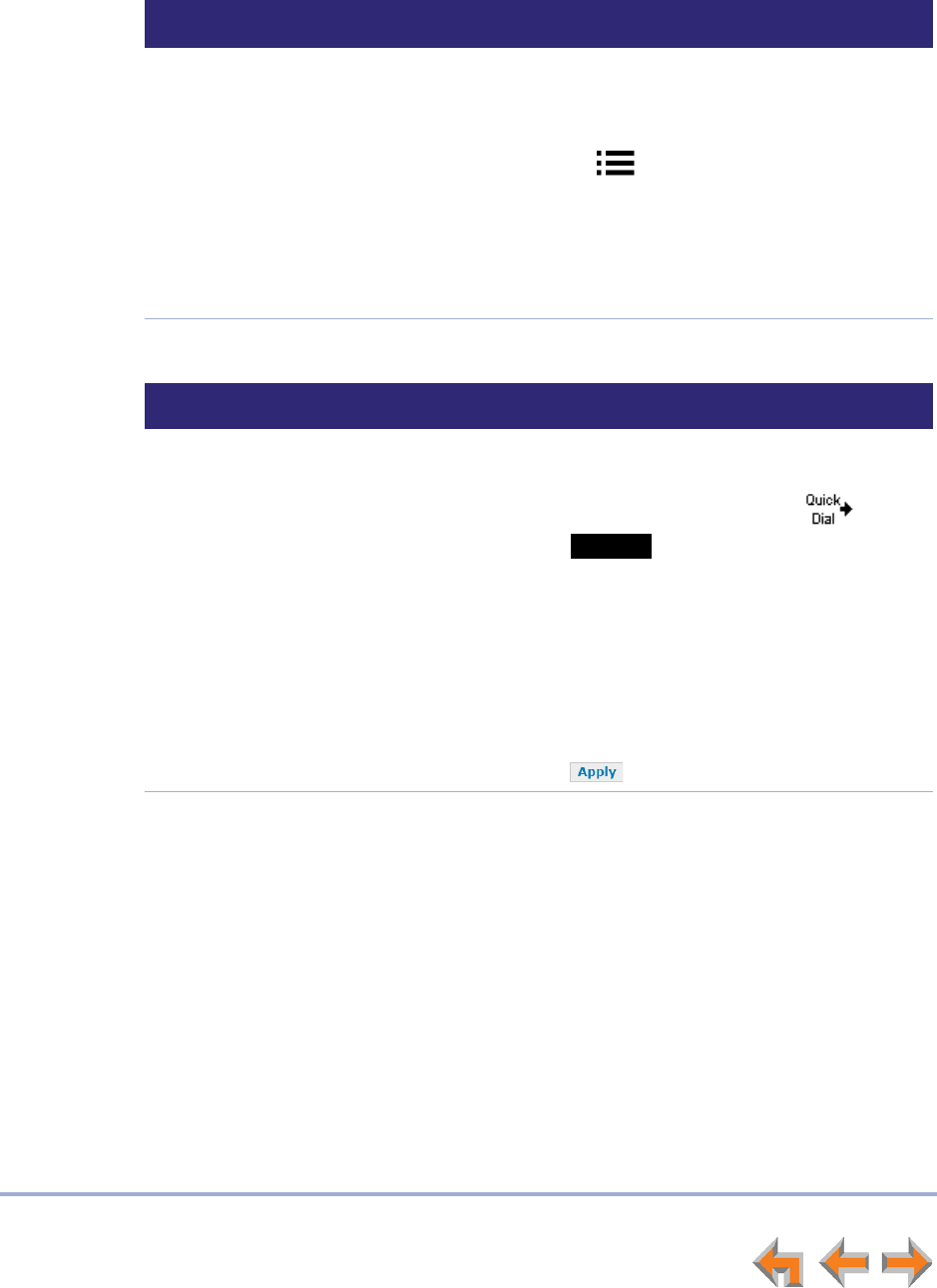
Troubleshooting 126
Syn248 SB35031 Deskset User’s Guide Back to Contents
Other Deskset Features
Other Desksets do not appear in the extension list.
You are unable to add an entry to the quick-dial list.
Probable Cause Corrective Action
The Deskset is not connected
to the same subnet as the
other Desksets.
Verify that the first two sections of the IP address
(the portion before the second “dot”) match the
IP addresses of the other Desksets or that the
subnets are set up to communicate with each
other. Press (MENU) –> 4 at a Deskset to
find the IP address.
Consult your system administrator. If the other
Desksets have been assigned static IP addresses,
you may have to assign your Deskset a static IP
address to match the other Desksets.
Probable Cause Corrective Action
All six quick-dial entries have
been used.
Edit quick-dial entries on the Deskset to write
over an existing entry:
a. Press the button to the right of .
b. Press to add or edit a quick-dial
entry.
Edit quick-dial entries on the WebUI to write over
an existing entry:
a. Log in to the WebUI and click
Quick Dial Keys.
b. Edit the quick-dial entries.
c. Click .
Edit List
Draft
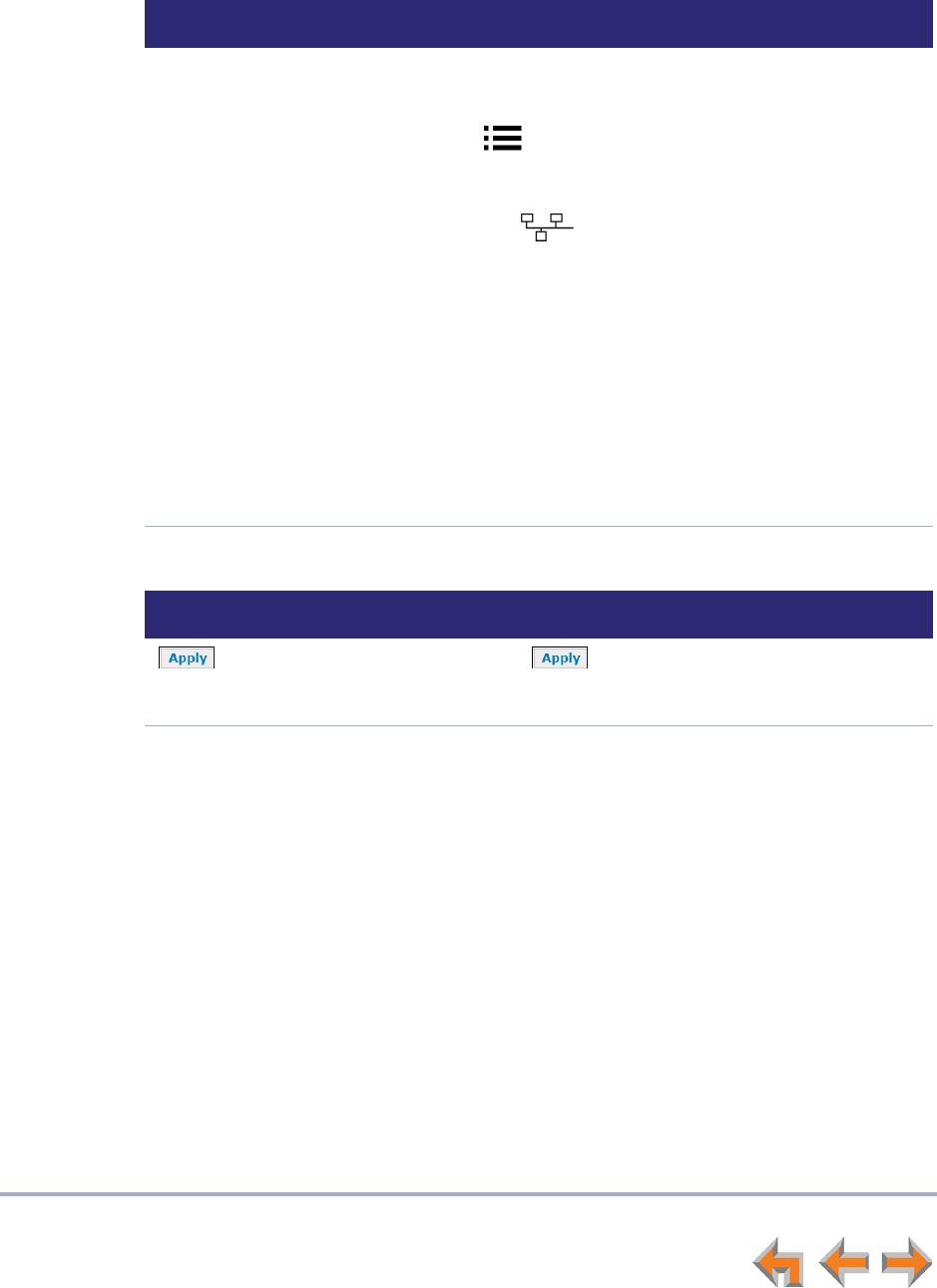
Troubleshooting 127
Syn248 SB35031 Deskset User’s Guide Back to Contents
WebUI
Unable to access the WebUI Log-in page from my computer.
Changes made in the WebUI are not saved.
Probable Cause Corrective Action
The computer is not
connected to the same
subnet (network) as the
Deskset, and the subnets are
not set up to communicate.
Verify the IP address. You must correctly enter
the IP address of your Deskset into your Internet
browser’s address bar. At the Deskset, press
(MENU) –> 4 to see the IP address
displayed in the third line of the information.
Ensure that there is a network cable attached to
the port on the Deskset and to the LAN. If
a PC at the same workstation is sharing the LAN
connection, attach a network cable to your
computer’s Ethernet port and to the PC port on
the back of the Deskset.
Confirm that your computer and your Deskset are
on the same subnet so that they can talk to each
other. Check that the first three sections of each
IP address are the same. If they are not, they may
not be connected to the same subnet. Contact
the installer; the subnets may not be set up to
communicate.
Probable Cause Corrective Action
must be clicked on
each page to confirm the
changes.
Click on each page to confirm the
changes.
Draft
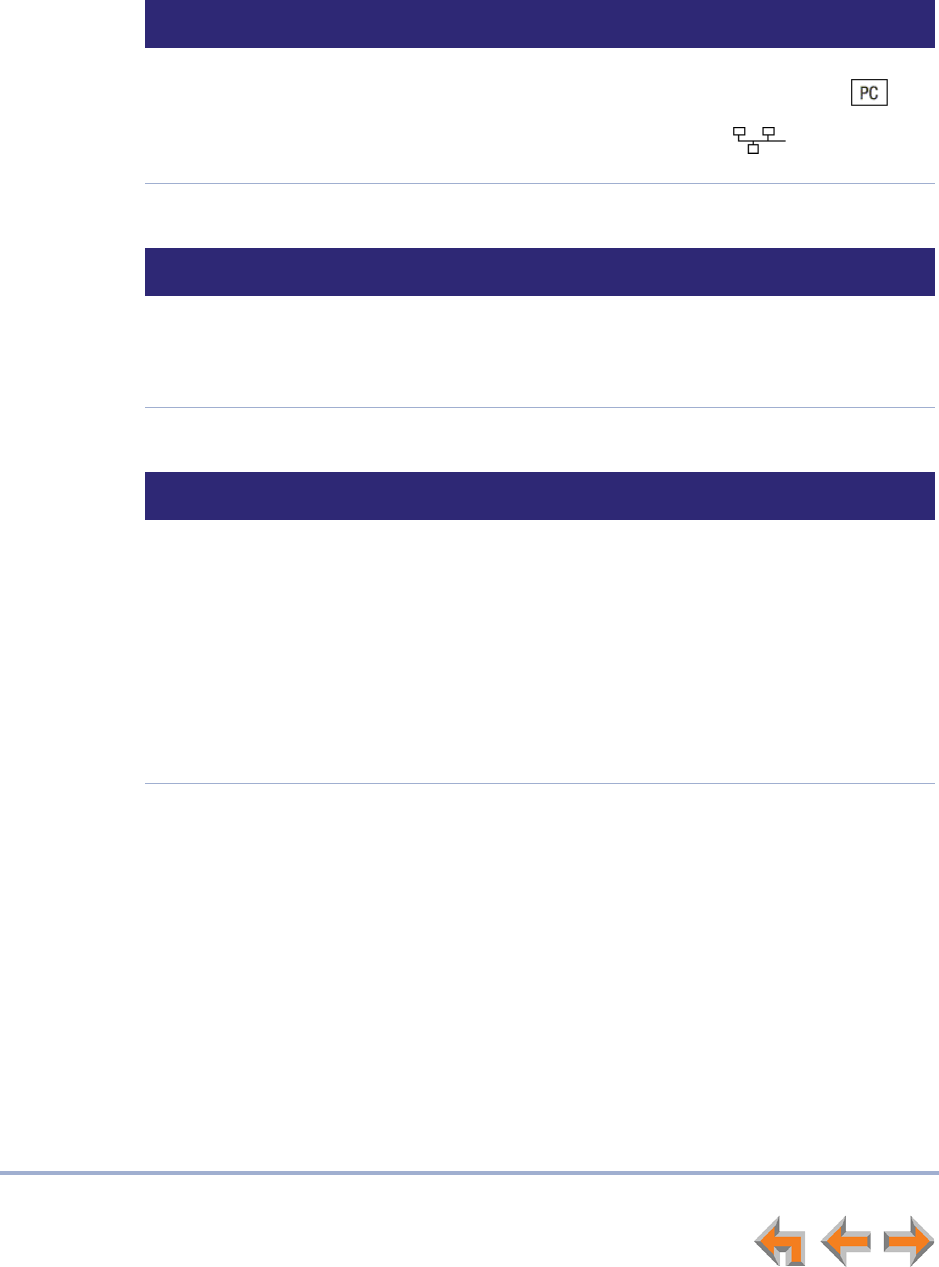
Troubleshooting 128
Syn248 SB35031 Deskset User’s Guide Back to Contents
PC/Deskset Interaction
Internet connection or access to the local network on your computer does not work after installing
the Deskset.
Your PC is slower after connecting it to the LAN through the Deskset.
Your PC, which is connected to the LAN through the Deskset, briefly loses its network connection.
Probable Cause Corrective Action
The network cables are not
installed correctly.
Check that the network cable from the computer
is plugged into the Deskset port labeled . A
second network cable should be plugged into the
port on the Deskset marked with the other
end plugged into your LAN.
Probable Cause Corrective Action
A computer connected
through the Deskset will be
limited to 100 Mbits/s.
Use separate network connections for the
Deskset and the computer so that the computer
can take advantage of the network’s greater
bandwidth.
Probable Cause Corrective Action
For PCs connected to the
LAN through Desksets,
disruption to the Deskset
operation affects the PC. For
example, when the Deskset
restarts (possibly due to a
software upgrade) the
connection to the LAN is
temporarily lost.
If the PC is connected to the LAN through the
Deskset, your system administrator should avoid
updating software or restoring Deskset settings
when you are using the workstation.
If the PC is connected to the Deskset, and if the
PC is connected to an Uninterruptible Power
Supply (UPS), plug the Deskset into a UPS.
Use separate network connections for the
Deskset and the computer.
Draft
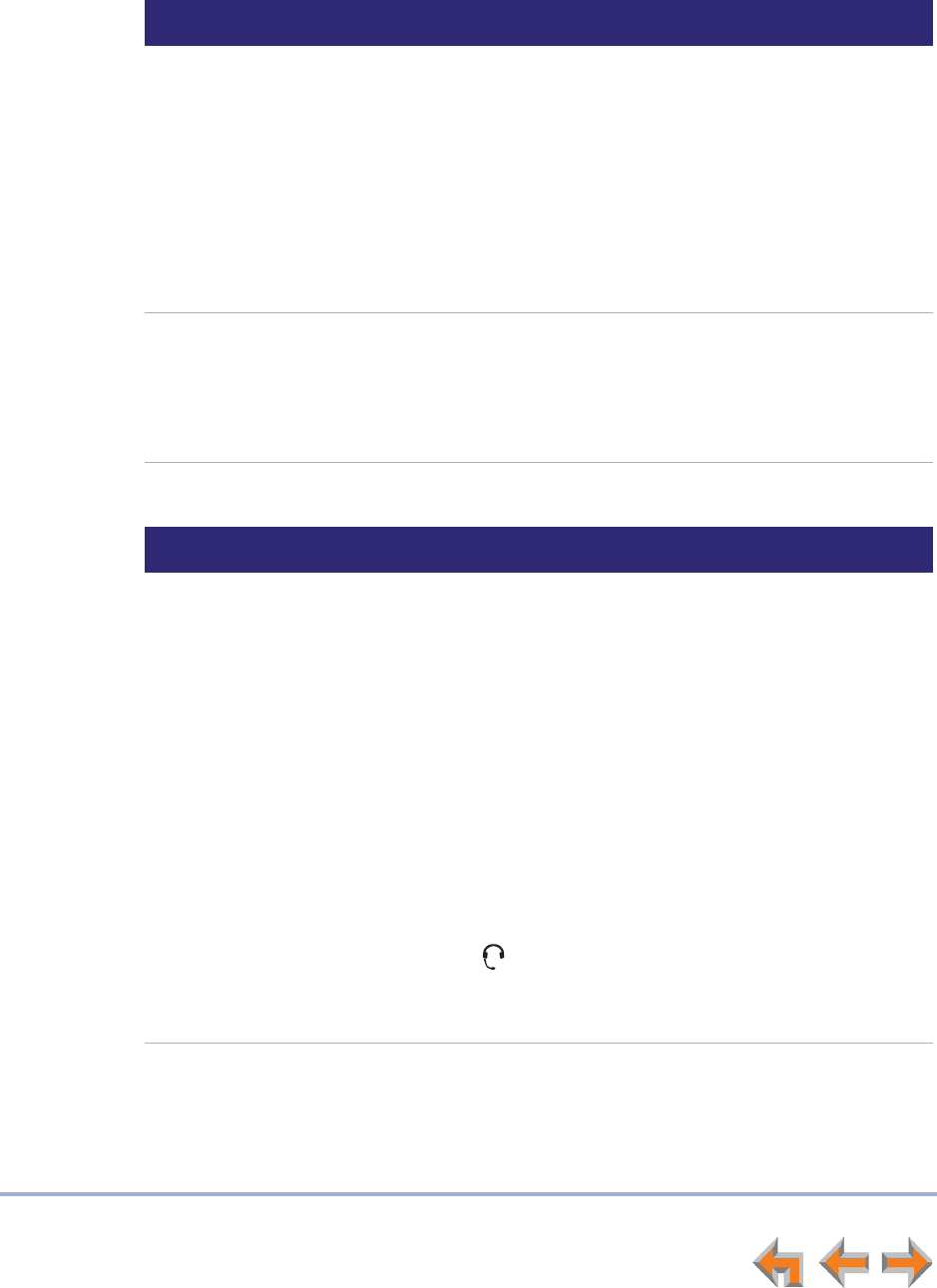
Troubleshooting 129
Syn248 SB35031 Deskset User’s Guide Back to Contents
Cordless Headset
The headset is not responding.
The headset does not work at all.
Probable Cause Corrective Action
The headset has lost
connection to the Deskset.
1. Disconnect the cordless headset battery.
2. Wait three minutes.
3. Install the battery again and place the cordless
headset into the charger.
4. Wait for the ON/OFF light on the headset to
display a blue light, indicating that the headset
was able to reestablish its connection with the
Deskset. Allow up to one minute for this to take
place.
The headset is not
registered.
1. Remove and replace the headset from its charger
base.
2. Register the headset at the Deskset. See
“Registering an Optional Cordless Headset” on
page 96.
Probable Cause Corrective Action
The headset is not getting
power from its battery.
Verify that the battery is installed and charged
correctly.
Place the headset into the accessory charger.
Ensure the charger is securely plugged into an
outlet not controlled by a wall switch. The
headset LED will light to indicate that the headset
is charging.
If the battery is completely depleted, it can take
up to 10 minutes to charge the battery enough
for the headset to work even briefly. In this case,
the ON/OFF LED will remain off and you will not
be able to use the device. After 10 minutes of
charging, remove the headset from the charger
and press ON/OFF on the headset or
(HEADSET) on the Deskset to turn on the
headset.
Replace the headset battery.
Draft
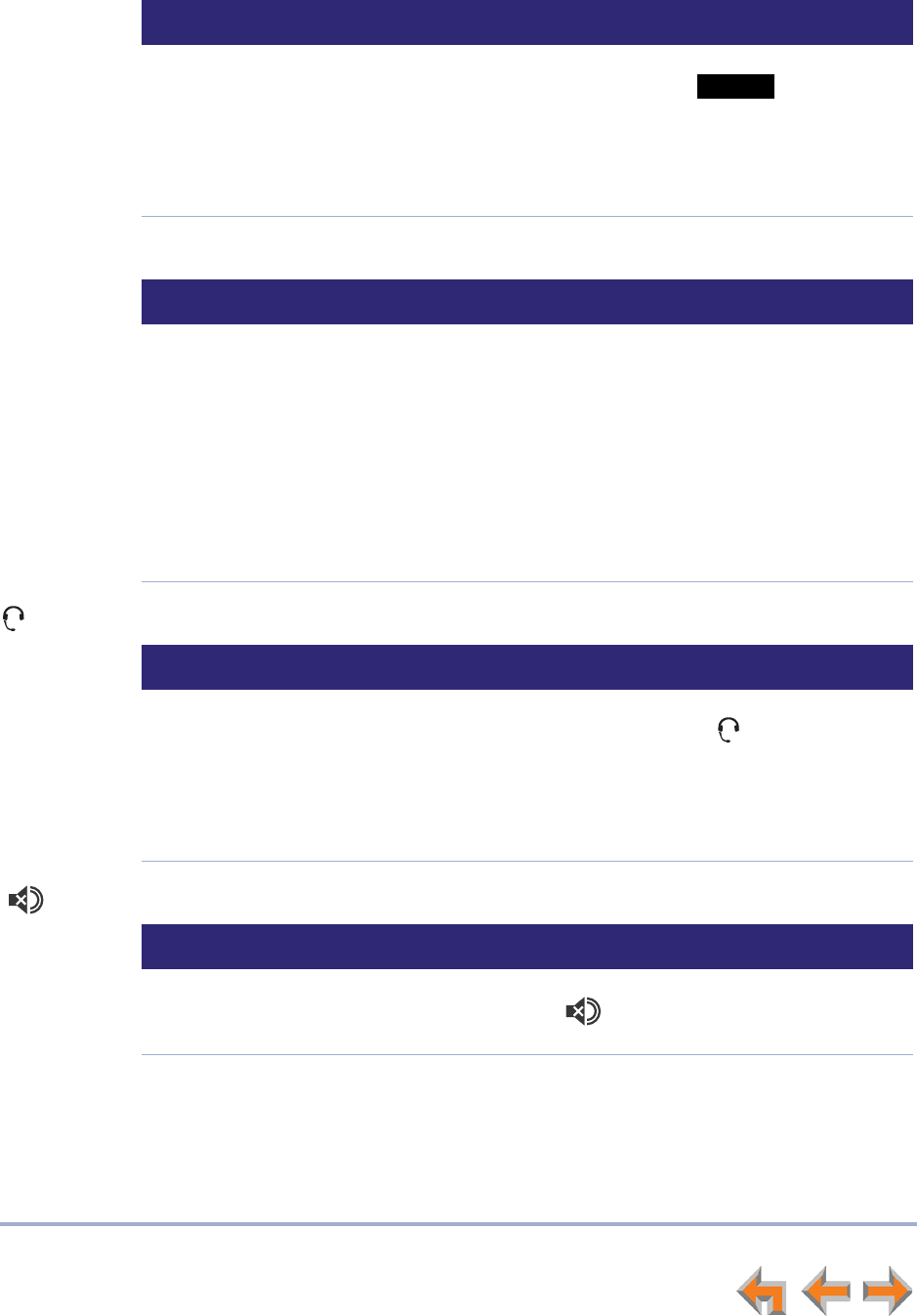
Troubleshooting 130
Syn248 SB35031 Deskset User’s Guide Back to Contents
The headset registration is not working.
Poor audio quality. Speech is cutting out.
(HEADSET) key on Deskset does not work.
(MUTE) key on the Deskset does not mute the headset.
Probable Cause Corrective Action
The headset and the Deskset
are not communicating with
each other.
Confirm that you have placed the headset in the
charger before you press on the
Deskset.
If registration does not start, try lifting the
headset out of the charger for a few seconds
before placing it back.
Register
Probable Cause Corrective Action
The headset is almost out of
range or is experiencing
interference.
You may be close to being out of range. Try
moving closer to the Deskset.
Other electronic products can cause interference
with your headset. Try installing the Deskset far
away from devices such as televisions,
microwaves, or other cordless devices.
If the problem persists, check audio quality on the
Deskset and/or contact your system
administrator.
Probable Cause Corrective Action
Headset is in the charger or
powered down.
Confirm that the headset is out of its charger
before you press HEADSET .
Confirm that the headset has sufficient power. If
the headset does not respond, the battery may
have no charge. Charge the battery, following the
instructions in the headset user’s manual.
Probable Cause Corrective Action
MUTE keys on Deskset and
headset operate separately.
None. Only the MUTE key on the headset mutes
calls. The (MUTE) key on the Deskset does
not work with the headset.
Draft
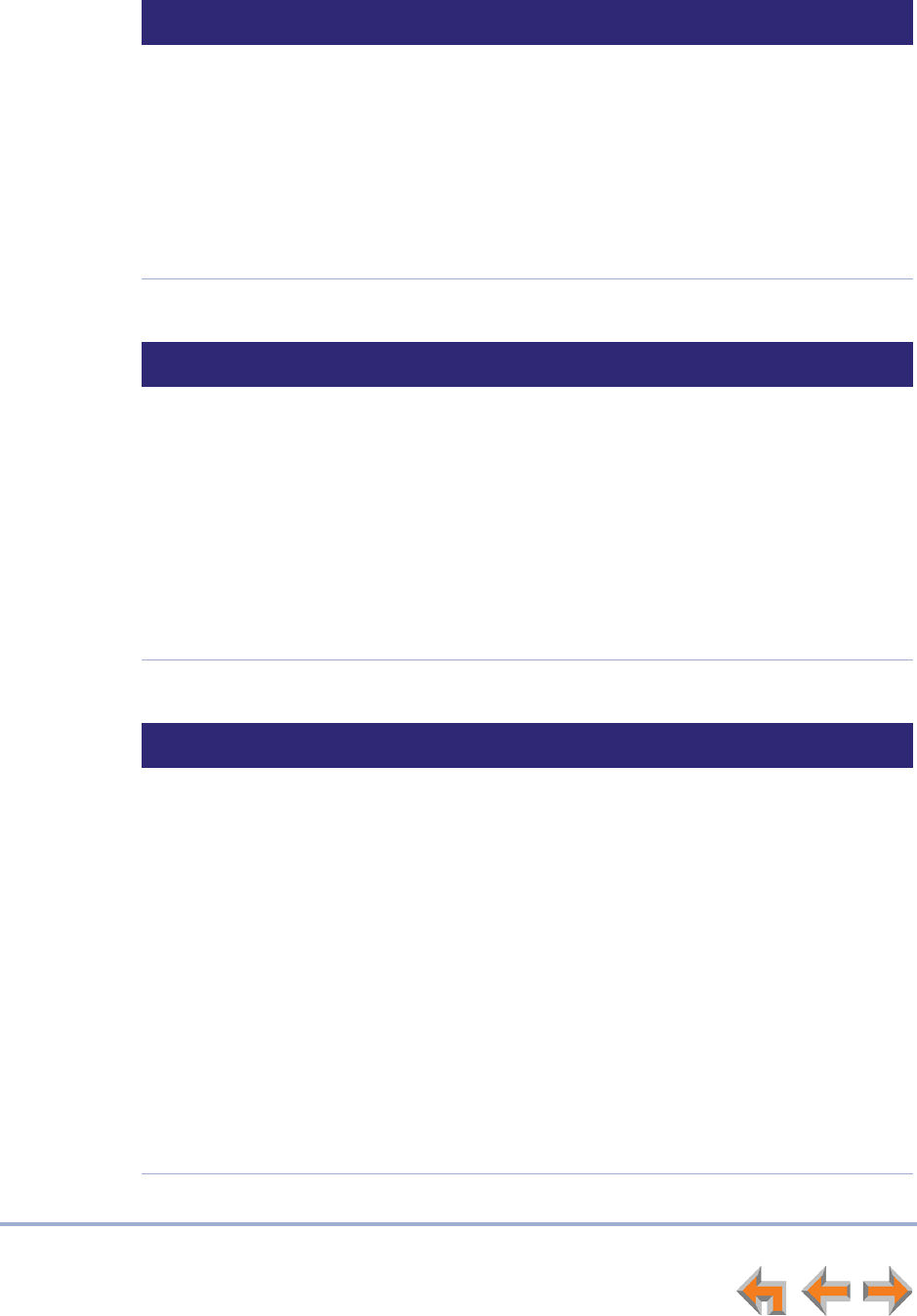
Troubleshooting 131
Syn248 SB35031 Deskset User’s Guide Back to Contents
No dial tone.
Batteries do not hold a charge.
The Deskset shows no indication that the headset is on a call.
Probable Cause Corrective Action
Headset cannot
communicate with Deskset.
Verify that the Deskset can make external calls.
For more information, see “Outgoing Calls” on
page 123
You may be out of range of the Deskset; move
closer.
At the Deskset, confirm that your headset is
registered to the Deskset. See “Registering an
Optional Cordless Headset” on page 96.
Probable Cause Corrective Action
Bad battery or bad battery
connection.
Make sure that the headset battery is installed
and securely plugged into the connector.
Charge the battery, following the instructions in
the headset user’s manual. For optimum daily
performance, return the cordless headset to the
charger when not in use.
You may need a new battery.
Your headset might be malfunctioning. Contact
the headset manufacturer.
Probable Cause Corrective Action
The headset is registered to
another Deskset. If others
are using headsets in your
vicinity, someone may have
accidentally registered your
headset to their Deskset.
If nearby people have headsets, they may have
accidentally registered your headset to one of
their Desksets.
a. Verify that a headset is registered to your
Deskset. See “Registering an Optional
Cordless Headset” on page 96.
b. If a headset is registered, it may not be yours.
Deregister your headset from the Deskset,
and ask all users in the vicinity to deregister
their headsets. See “Deregistering a Cordless
Headset” on page 97.
c. Start the registration process again, but with
one user at a time registering a headset. See
“Registering an Optional Cordless Headset”
on page 96.
Draft
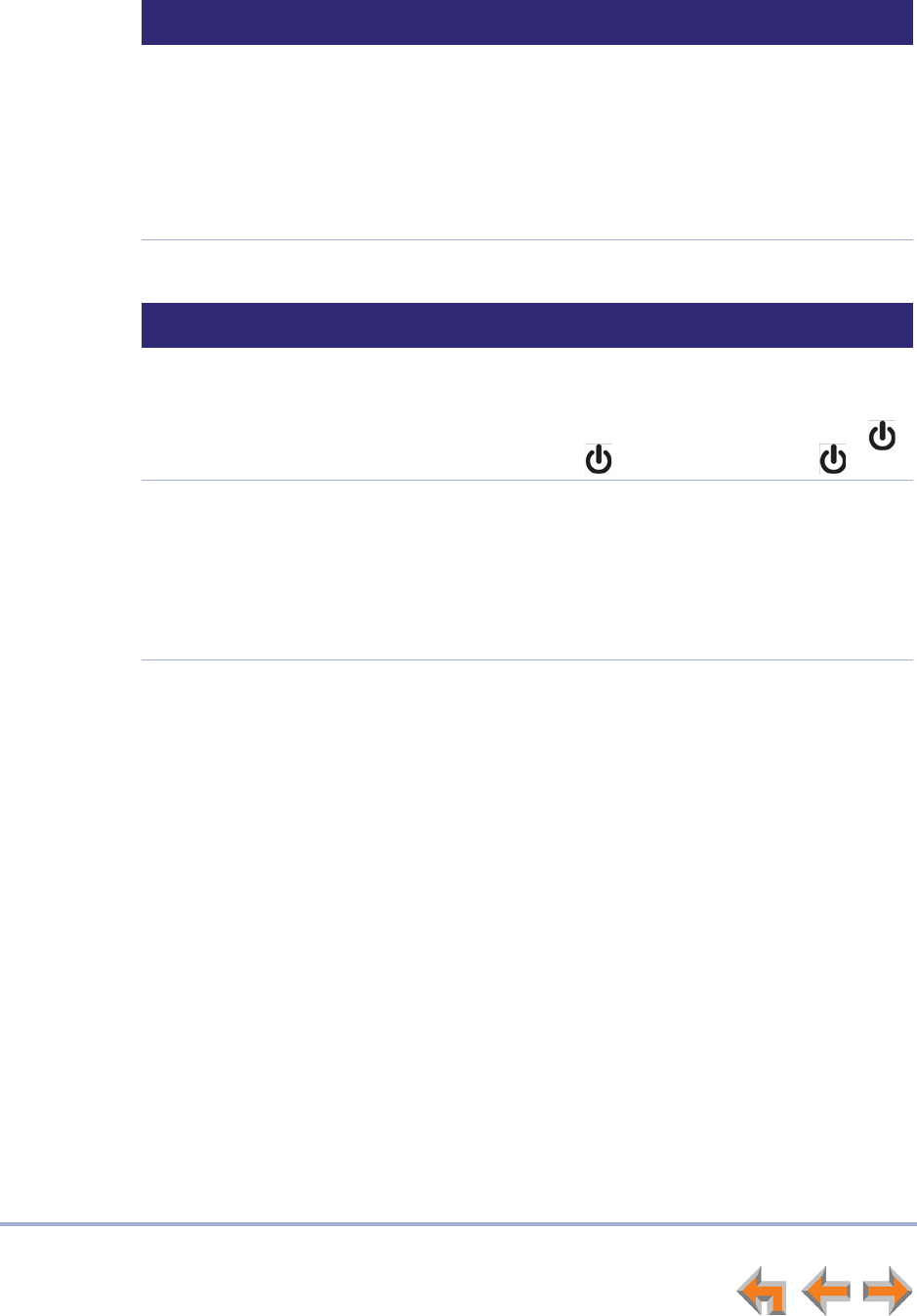
Troubleshooting 132
Syn248 SB35031 Deskset User’s Guide Back to Contents
A buzzing sound on my cordless headset.
Unable to deregister headset.
Probable Cause Corrective Action
Noise interference. Move the headset at least 12 inches (30 cm) away
from the Deskset.
Other electronic products can cause interference
with your cordless headset. Try using your
headset as far away from these types of
electronic devices as possible: television sets,
microwaves, or other cordless telephones.
Probable Cause Corrective Action
The Deskset is unavailable
(powered off, out of range, or
removed from the system).
Deregister the headset at the headset. On a
TL7600 model headset, press: VOL+ –> MUTE –>
VOL– –> MUTE –> VOL+ –> VOL– –> MUTE.
On a TL7800 model headset, press: VOL+ –>
–> VOL– –> –> VOL+ –> VOL– –> .
You cannot identify or locate
the Deskset that the headset
is registered to.
If the headset is registered to an unknown
Deskset which has AC power, you must carry the
headset out of range of the Deskset and perform
the deregistration sequence described above.
You will know when the headset is out of range
when you press ON/OFF and you hear three
beeps and no dial tone.
Draft
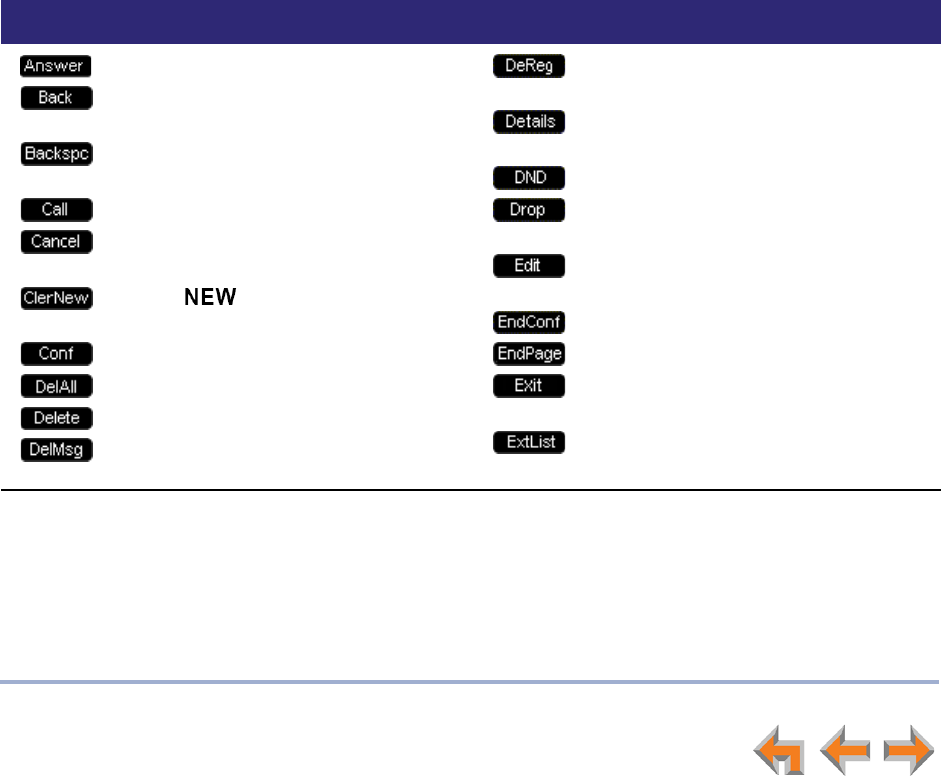
Appendixes 133
Syn248 SB35031 Deskset User’s Guide Back to Contents
A
PPENDIXES
Appendix A: Deskset Soft Keys
The Syn248 Deskset features keys below the LCD screen. The bottom of the LCD displays
the appropriate label for each key as the function of the key changes.
Table 17 provides an alphabetical list of the labels that appear above the Deskset soft
keys.
Table 17. Deskset Soft Key Functions
Function Description Function Description
Answers an incoming call.
Goes back to Idle; in HELP menus,
goes back to previous page.
Backspace the cursor when entering
data.
Dials the selected entry.
Cancels action and returns user to
previous mode.
Clears indications from all
messages.
Initiates a conference call.
Deletes multiple records.
Deletes a record.
Deletes the highlighted voicemail
message in the Message list.
Deregisters cordless headset in
registration menu.
Shows more detail for a particular
entry.
Turns Do Not Disturb on and off.
Drops a selected call during a
conference.
Allows changes to previously entered
information.
Ends conference.
Ends paging to all extensions.
Exits the current screen and returns
to the previous menu.
Goes to the Extension list.
Draft
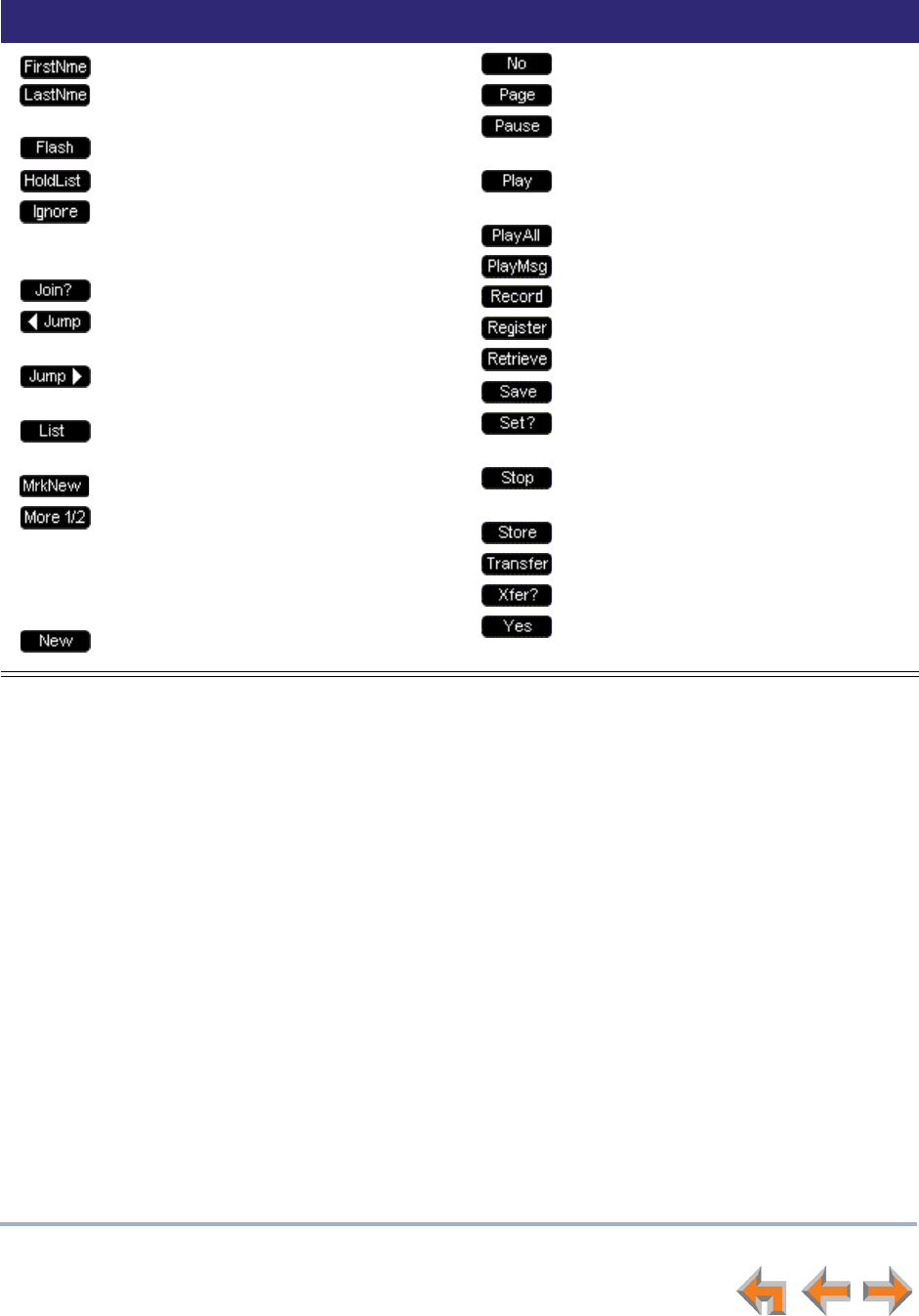
Appendixes 134
Syn248 SB35031 Deskset User’s Guide Back to Contents
Switches between first and last name
sort in the Directory and Extension
lists.
Initiates a hook flash.
Displays the Calls On Hold list.
Silences ringer during incoming call
and either goes back to previous
screen or goes to next incoming call.
Completes conference call setup.
Jumps back eight seconds in playback
mode.
Jumps forward eight seconds in
playback mode.
Opens the sort options menu in the
Directory.
Marks an old message as new.
Moves to the next set of soft keys. If
this key appears, there are more than
four soft keys available. More 1/2
indicates page one of two. More 1/3
indicates page one of three.
Creates a new entry.
Cancels proposed action.
Initiates a page.
Pauses message playback or inserts a
two-second pause in a digit string.
Plays highlighted message from
Message list.
Plays all voicemail messages.
Plays message from Call Log review.
Starts recording.
Registers cordless headset.
Retrieves a held call.
Saves information entered.
Sets the selected option as the
default choice.
Stops recording, playback, or
listening.
Stores number in the Personal list.
Initiates transfer of a call.
Confirms transfer.
Confirms proposed action.
Table 17. Deskset Soft Key Functions (Continued)
Function Description Function Description
Draft
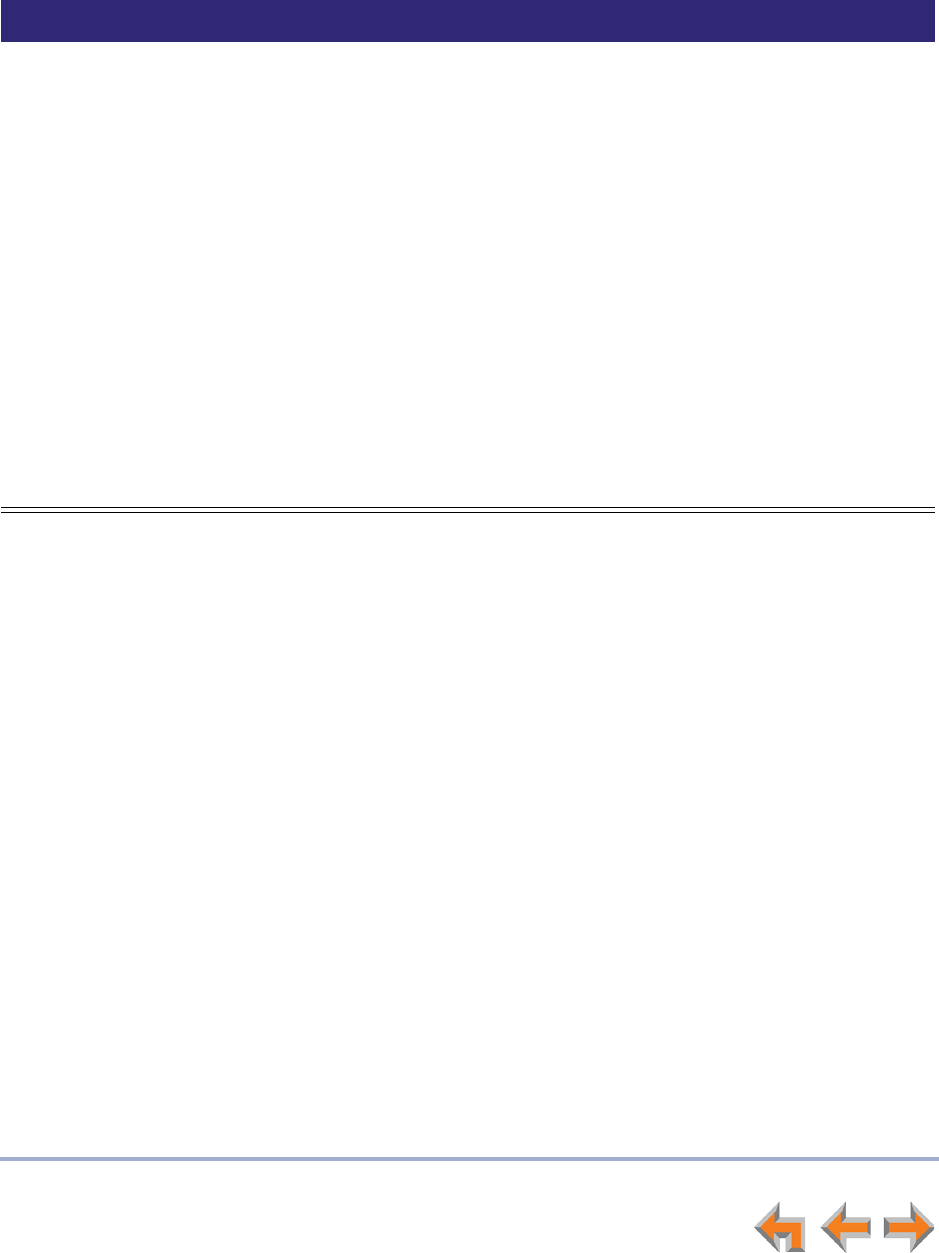
Appendixes 135
Syn248 SB35031 Deskset User’s Guide Back to Contents
Appendix B: Technical Specifications
Table 18 lists the technical specifications for the SB35031 Deskset.
Table 18. Technical Specifications
Feature Specification
Frequency Control Crystal controlled PLL synthesizer
Transmit Frequency 1921.536–1928.448 MHz
Nominal Effective Range Maximum power allowed by FCC (Federal Communications Commission)
and IC (Industry Canada). Actual operating range might vary according
to environmental conditions at the time of use.
Voice Channels 5
Size 8.2” × 8.9” × 6.5” (20.8 × 22.6 × 16.5 cm) (H × W × D)
Weight 59.96 oz. (1700 g) (including adapter)
Power Requirements 5.1 V DC @ 1700 mA (AC Adapter)
PoE Class 3
RJ-45 Ethernet Network
Jack
(10Base-T/100Base-Tx) with auto MDI/MDIX switching
LAN Cable Cat.-5 standard cable
Deskset Headset Traditional corded handset jack type with 2-conductor wiring
Draft
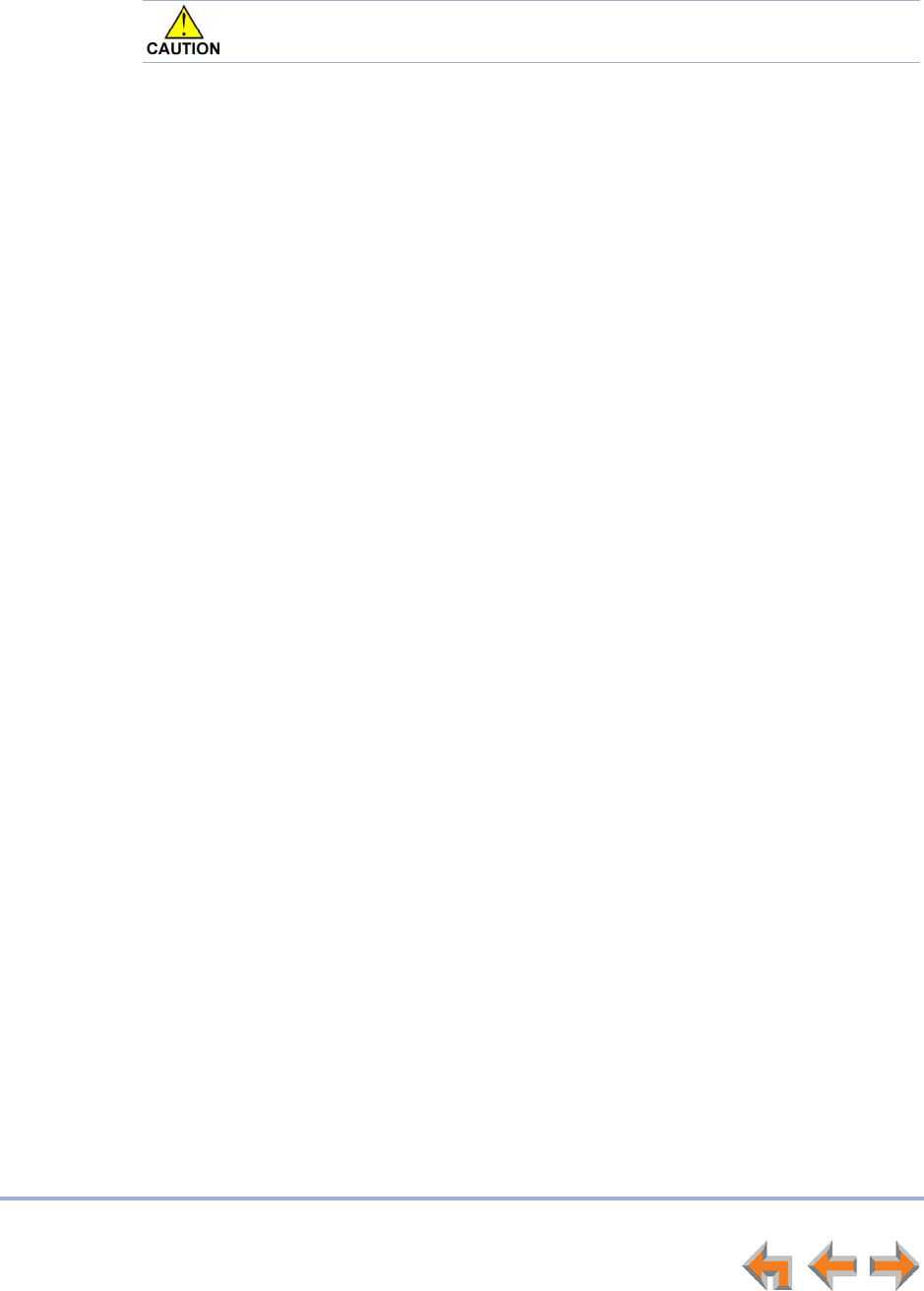
Appendixes 136
Syn248 SB35031 Deskset User’s Guide Back to Contents
Appendix C: Maintenance
Avoid Rough Treatment
Handle the unit gently. Save the original packing materials to protect your equipment if
you ever need to ship it.
Avoid Water
Your unit can be damaged if it gets wet. Do not use the equipment outdoors in the rain
or handle it with wet hands. Do not install the equipment near a sink, bathtub, or shower.
Electrical Storms
Electrical storms can sometimes cause power surges harmful to electronic equipment.
For your own safety, exercise caution when using electrical appliances during storms.
Cleaning Your Unit
Your unit has a durable plastic casing that should retain its luster for many years. Clean
it only with a soft cloth slightly dampened with water or a mild soap solution. Do not use
excess water or cleaning solvents of any kind.
Your system contains sophisticated electronic parts, so it must be treated
with care.
Draft
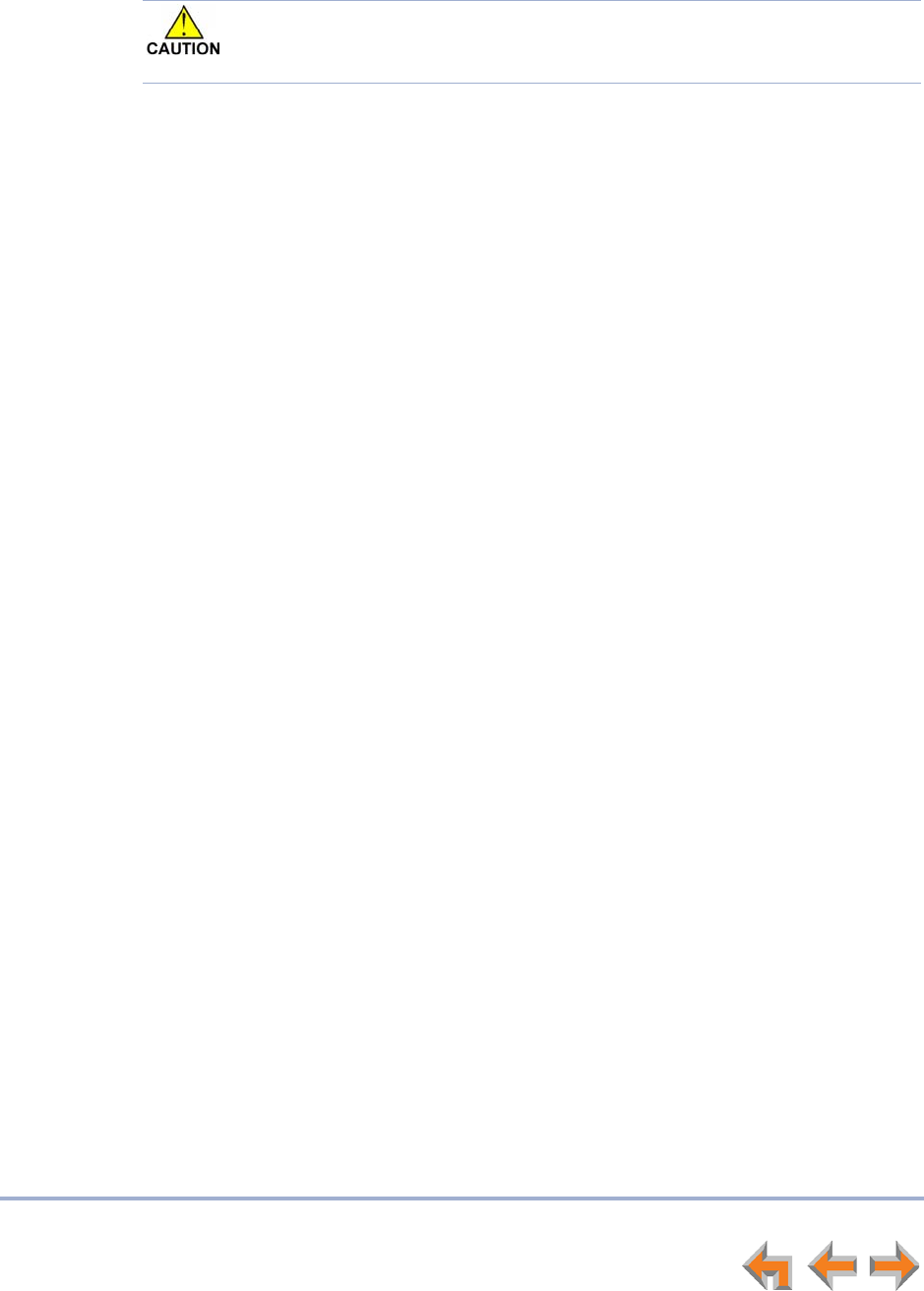
Appendixes 137
Syn248 SB35031 Deskset User’s Guide Back to Contents
Appendix D: Important Safety Instructions
When using your telephone equipment, basic safety precautions should always be
followed to reduce the risk of fire, electric shock, and injury, including the following:
Read and understand all instructions.
Follow all warnings and instructions marked on the product.
Unplug this product from the wall outlet before cleaning. Do not use aerosol or
liquid cleaners. Use a damp cloth for cleaning.
Do not use this product near water (for example, near a bathtub, kitchen sink, or
swimming pool).
Do not place this product on an unstable surface.
This product should be operated only from the type of power source indicated
on the marking label. If you are not sure of the type of power supply in your
home or office, consult your dealer or local power company.
Do not allow anything to rest on the power cord. Do not install this product
where the cord may be walked on.
Never push objects of any kind into this product through the slots in the unit
because they may touch dangerous voltage points or create a short circuit. Never
spill liquid of any kind on the product.
To reduce the risk of electric shock, do not disassemble this product; take it to
an authorized service facility. Opening or removing parts of the unit other than
specified access doors may expose you to dangerous voltages or other risks.
Incorrect reassembling can cause electric shock when the product is
subsequently used.
Do not overload wall outlets and extension cords.
The power adapter is intended to be correctly oriented in a vertical or floor
mount position. The prongs are not designed to hold the plug in place if it is
plugged into a ceiling or an under-the-table or cabinet outlet.
Unplug this product from the wall outlet and refer servicing to an authorized service
facility under the following conditions:
When the power supply cord or plug is damaged or frayed.
If liquid has been spilled on the product.
If the product has been exposed to rain or water.
If the product does not operate normally when following the operating instructions.
Adjust only those controls that are covered by the operating instructions. Improper
adjustment of other controls may result in damage and often requires extensive
work by an authorized technician to restore the product to normal operation.
If the product has been dropped and the unit has been damaged.
If the product exhibits a distinct change in performance.
This symbol alerts you to important operating or servicing instructions in this
document. Always follow basic safety precautions when using this product to
reduce the risk of injury, fire, or electric shock.
Draft

Appendixes 138
Syn248 SB35031 Deskset User’s Guide Back to Contents
Appendix E: GPL License Information
Portions of the software associated with this product are open source, and fall within the
scope of the GNU General Public License (GPL). Accordingly, those portions of code are
available to the public, consistent with the requirements of the GPL, in either source code
format or object code format, depending upon the nature of the code at issue. If you
would like to exercise your right to receive the available code, please send a cashier’s
check, payable to VTech Communications, Inc., in the amount of $15.00 (U.S.$) to:
VTech Communications, Inc.,
9590 SW Gemini Drive, Suite 120
Beaverton OR 97008
ATTN: Information Technology Group — Syn248/Syn248 GPL code request, along with a
written request for the available code. If your request does not fully comply with the
foregoing requirements, VTech reserves the right to reject your request. Further, by
requesting and receiving the available code, you release VTech, its affiliates, and its and
their officers, directors, employees, and representatives (“VTech Parties”) from any
liability or responsibility relating to such code, and you acknowledge that the VTech
Parties make no representations with respect to the origin, accuracy, usability, or
usefulness of such code, and the VTech Parties have no responsibility to you whatsoever
concerning the code, including without limitation any responsibility to provide
explanation, support, upgrade, or any communication whatsoever. Your review or use of
the available code is at your sole risk and responsibility.
Draft

Glossary 139
Syn248 SB35031 Deskset User’s Guide Back to Contents
G
LOSSARY
This glossary provides definitions that apply to the Syn248 telephone system.
active call: An established telephone call that is not on hold.
analog phone: A non-Syn248 telephone that plugs directly into a normal telephone wall
plug or into the Syn248 Gateway BYPASS port.
Auto Answer: You can set the Deskset to automatically answer Intercom calls after a
delay that you specify. Without touching the Deskset, you can speak to and be heard by
people who call you.
Auto Attendant: A system that automatically answers incoming calls and provides
instructions to callers.
BYPASS port: An RJ-11 jack on the Gateway that allows for communication during
power outages. Plug an analog telephone into this jack.
Call Forward–No Answer: Automatically forward unanswered calls to the Auto
Attendant, voicemail, an extension, or outside phone number. The system administrator
can configure a Call Forward–No Answer setting for each line connected to the Gateway,
and an Intercom Call Forward–No Answer setting for your Deskset.
Cat.-5 wiring: A twisted pair data cable commonly used in offices for computer
communication.
CO (Central Office): An office to which subscriber home and business lines are
connected. The central office has switching equipment that can switch calls locally or to
long-distance carrier phone offices.
DECT (Digital Enhanced Cordless Telecommunication): A wireless telephone
technology developed specifically for cordless telephones using frequencies between 1.8
and 1.9 Gigahertz. DECT communication is resistant to interference from other electronic
equipment, and has longer range and improved battery life.
default: The original product settings.
dial pad: The 0 through 9, *, and # keys on the Deskset.
direct dial: Allows callers to directly dial users' extension numbers after the Auto
Attendant answers.
Directory: A list of names and phone numbers.
Display Names: The names that the system administrator enters to identify each
extension number. The Auto Attendant uses these names to assist callers in forwarding
calls.
DND (Do Not Disturb): A feature that suppresses audible ringing and incoming paging
at the Deskset.
DND ON: An indicator in the top right corner of the Deskset display that appears when
you turn on the Do Not Disturb feature.
DTMF (Dual-Tone Multi-Frequency): Telephone tones commonly known as
“touch-tone”.
Draft

Glossary 140
Syn248 SB35031 Deskset User’s Guide Back to Contents
Ethernet: A type of computer networking technology that connects devices via Local
Area Networks (LANs).
Extension list: A list of names and extension numbers for the Syn248 system telephones.
extension number: The three-digit number representing each Deskset.
factory default: The original product settings.
flash memory: Reprogrammable system storage used for storing software upgrades.
FXO (Foreign Exchange Office): The Gateway telephone signaling interface between the
telephone lines and the LAN.
Gateway: A network device equipped for interfacing with another network that uses
different protocols.
greeting, preset: The voice message that plays to callers if the user has not recorded an
outgoing message.
hard key: Any physical key on the Deskset or Gateway. Examples include (MENU)
and 1 on the Deskset; and SELECT and CANCEL on the SB35010 Gateway.
hard reset: An action that restores factory default settings.
Hold announcement: A recorded message to play while calls are on hold. It can be
combined with music on hold.
hunt group: A telephone company feature that allows calls to a busy phone number to
roll over to the next available line.
icon: A small picture in the display that presents status information.
Idle: The mode of a device when it is not involved in call or call setup activity.
Intercom call, internal call: A phone call made from a Syn248 system extension to
another extension.
interference: Electrical signals close by that cause degraded audio performance for
cordless devices.
IP address (Internet Protocol address): An individual numeric identification assigned to
devices on your LAN.
key beep: When enabled, pressing a key plays a tone.
LAN (Local Area Network): A communications network that allows data devices to
communicate with each other.
LCD (Liquid Crystal Display): The screen that provides instructions and feedback.
LED (Light Emitting Diode): A small light on a device that indicates status.
live dial: Dialing after the phone is off hook.
main menu, Auto Attendant: The Auto Attendant messages and actions that are
available to callers before the callers take additional actions.
mute: Stops sending your voice to the other party during a phone call.
NTP (Network Time Protocol): An Internet standard protocol that assures time
synchronization in a computer network.
Draft
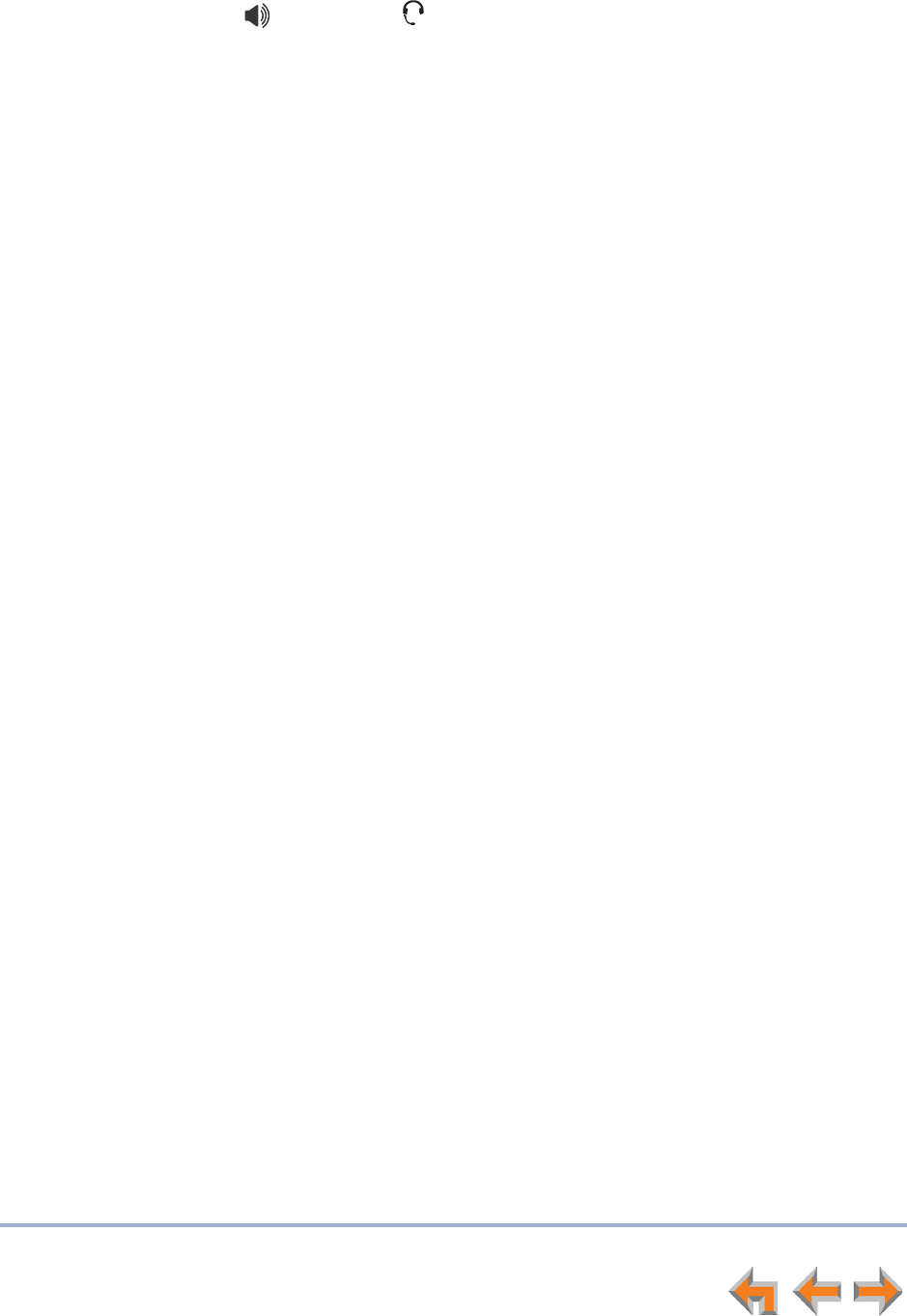
Glossary 141
Syn248 SB35031 Deskset User’s Guide Back to Contents
off hook: Indicates that you are on a phone call, have lifted the corded handset, or have
pressed the (SPEAKER) or (HEADSET) keys to answer a call or to prepare to make
a call. You are off hook from the moment that you hear a dial tone to when you hang up
a call.
on hook: Indicates that no Deskset is active.
operator: The extension that callers reach by dialing 0 (zero) when the Auto Attendant
operator feature is enabled or that system users reach at any time by dialing 0 (zero).
outside call: A phone call between a phone not a part of your Syn248 system and an
extension within your Syn248 system.
page: Broadcasts your voice to all idle extensions that do not have Do Not Disturb turned
on.
paging zone: A set of extensions that can be paged as a group.
Personal Directory: A private list of names and phone numbers available to only a single
extension.
POTS (Plain Old Telephone Service): Basic telephone operation. The ability to make and
receive phone calls.
predial: Entering digits before going off hook to make a call.
PSTN (Public Switched Telephone Network): The world’s telephone network.
Quick Dial: Provides one-touch dialing for frequently called phone numbers.
reboot: Restart a device.
Redial: Accesses the log of outgoing calls.
soft key: The Deskset features keys below the LCD screen. The bottom of the screen
displays the appropriate label for each key as the function of the key changes.
switch: A network switch links electronic devices. The switch processes and routes data
flexibly, allowing more data to be handled without error.
system administrator: A person to perform functions such as setting up and modifying
system configurations. This system administrator can be an employee or your telephone
equipment provider.
System Directory: This list of names and phone numbers is created and maintained by
the system administrator. All system users can sort and view this list.
system operator: The extension that callers reach by dialing 0 (zero) when the Auto
Attendant operator feature is enabled or that system users reach at any time by dialing
0 (zero).
VoIP (Voice over Internet Protocol): A transmission technology for delivery of voice
communications over IP networks such as the Internet or other packet-switched
networks. Other synonymous terms include IP telephony, Internet telephony, Voice Over
BroadBand (VoBB), broadband telephony, and broadband phone.
WebUI (Web User Interface): A means of interacting with a product using a computer
interface. Connection to the World Wide Web is not necessary.
Draft
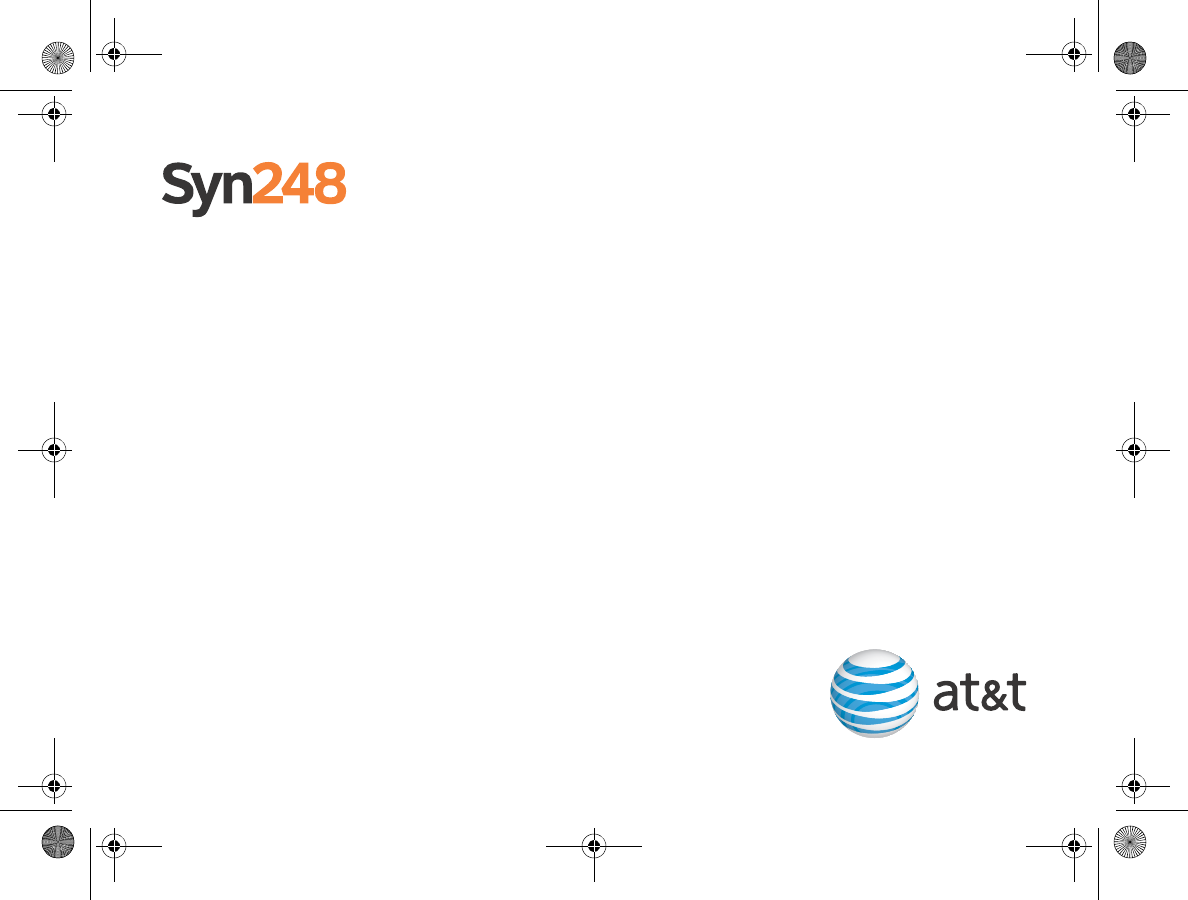
®
Important Product
Information
Safety Information and Limited Warranty
Syn248 - Safety Information i4_(SB35031).fm Page 1 Friday, August 2, 2013 10:10 AM
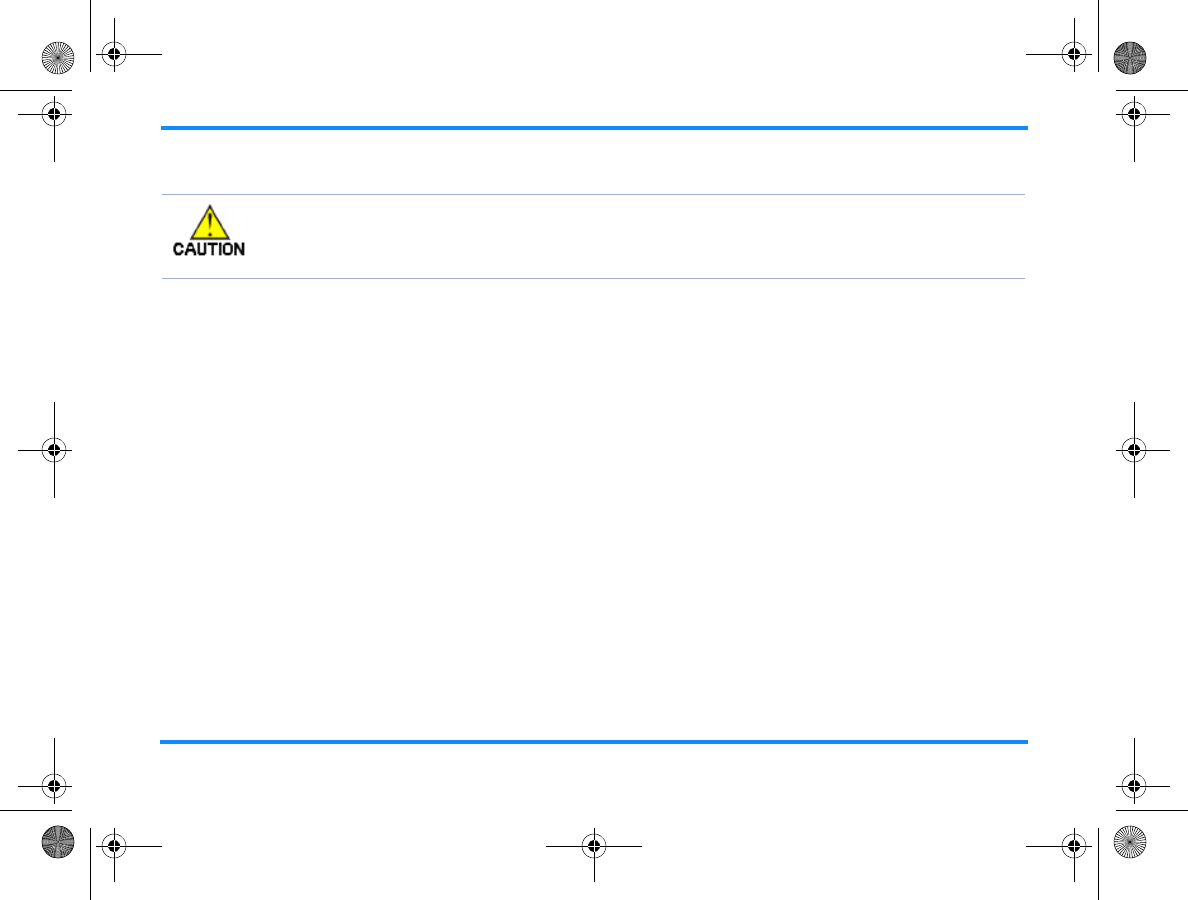
2
Important Product Information
Safety Information
READ AND UNDERSTAND ALL INSTRUCTIONS IN THE USER’S GUIDE. Observe all
markings on the product.
AVOID USING A TELEPHONE DURING A THUNDERSTORM. There may be a slight
chance of electric shock from lightning.
DO NOT USE A TELEPHONE IN THE VICINITY OF A GAS LEAK. If you suspect a gas leak,
report it immediately, but use a telephone away from the area where gas is leaking. If
this product is a cordless model, make sure the base is also away from the area.
DO NOT USE THIS PRODUCT NEAR WATER OR WHEN YOU ARE WET.
For example, do not
use it in a wet basement or shower, or next to a swimming pool, bathtub, kitchen sink, or
laundry tub. Do not use liquids or aerosol sprays for cleaning. If the product comes in contact
with any liquids, unplug any line or power cord immediately. Do not plug the product back in
until it has dried thoroughly.
INSTALL THIS PRODUCT IN A PROTECTED LOCATION. Protect all line and power cords
from damage and abrasion and place the cords where no one can trip over them.
This symbol alerts you to important operating or servicing instructions in this
document. Always follow basic safety precautions when using this product to reduce
the risk of injury, fire or electric shock.
Syn248 - Safety Information i4_(SB35031).fm Page 2 Friday, August 2, 2013 10:10 AM
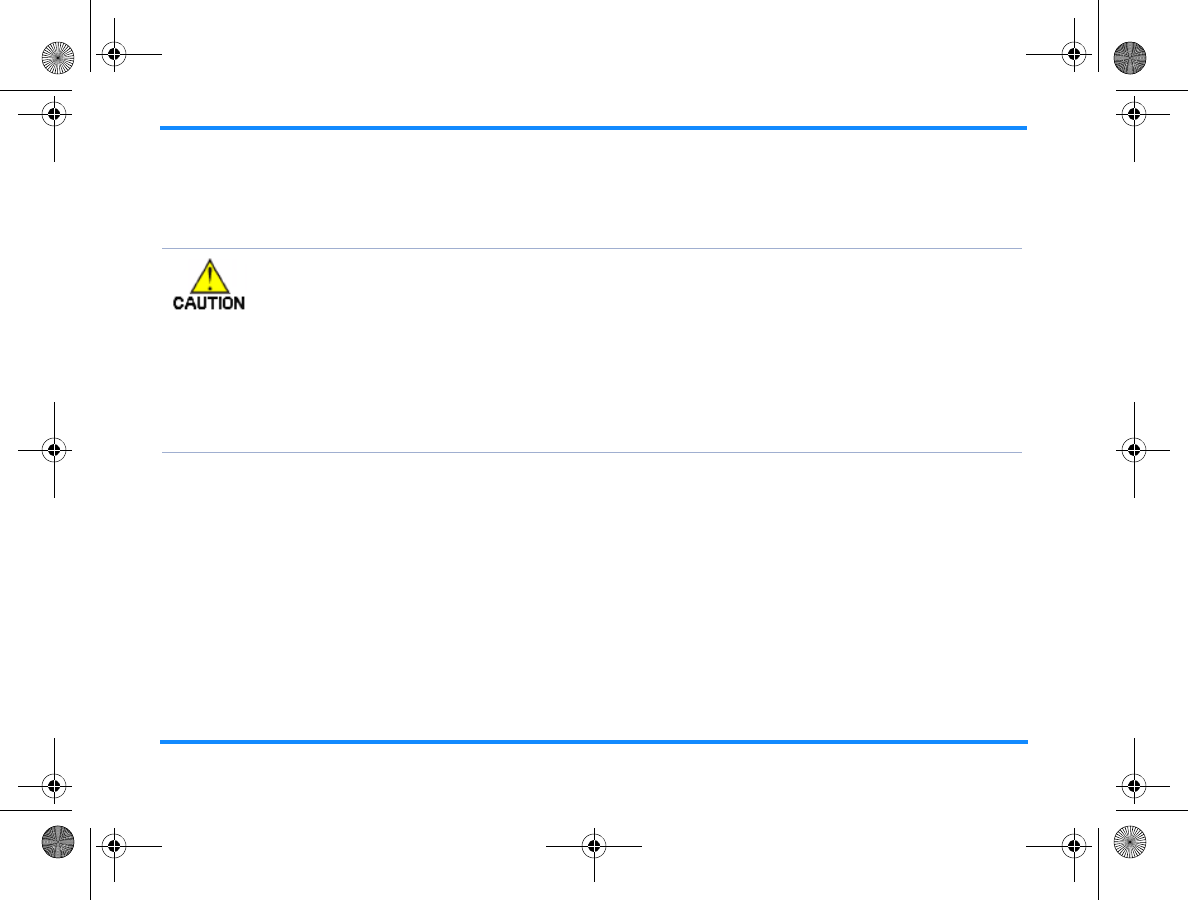
3
IF THIS PRODUCT HAS A THREE-PRONG (GROUNDING) PLUG OR A POLARIZED PLUG
with one wide prong, it may not fit in non-polarized outlets. Do not defeat the purpose
of these plugs. If they do not fit in your outlet, the outlet should be replaced by an
electrician.
IF THIS PRODUCT HAS USER-REPLACEABLE BATTERIES, REPLACE BATTERIES ONLY
AS DESCRIBED IN YOUR USER’S GUIDE. Do not burn or puncture batteries—they
contain caustic chemicals.
IF THIS PRODUCT DOES NOT OPERATE NORMALLY, READ TROUBLESHOOTING IN
THE USER’S GUIDE. If you cannot solve the problem, or if the product is damaged, refer
to "5. How do you get warranty service?" on page 15. Do not open this product except
as may be directed in your user’s guide. Opening the product or reassembling it
incorrectly may expose you to hazardous voltages or other risks.
The SB35010 Analog Gateway grounding terminal must be connected to reliable
earth ground using a separate ground wire before connecting the
telecommunication lines.
The connection to earth ground must be verified by qualified personnel.
Keep small metallic objects such as pins and staples away from the handset receiver.
Use only the power adapter provided with this product. To obtain a replacement, call
1 (888) 386-2006. In Canada, dial 1 (888) 469-2005.
Syn248 - Safety Information i4_(SB35031).fm Page 3 Friday, August 2, 2013 10:10 AM
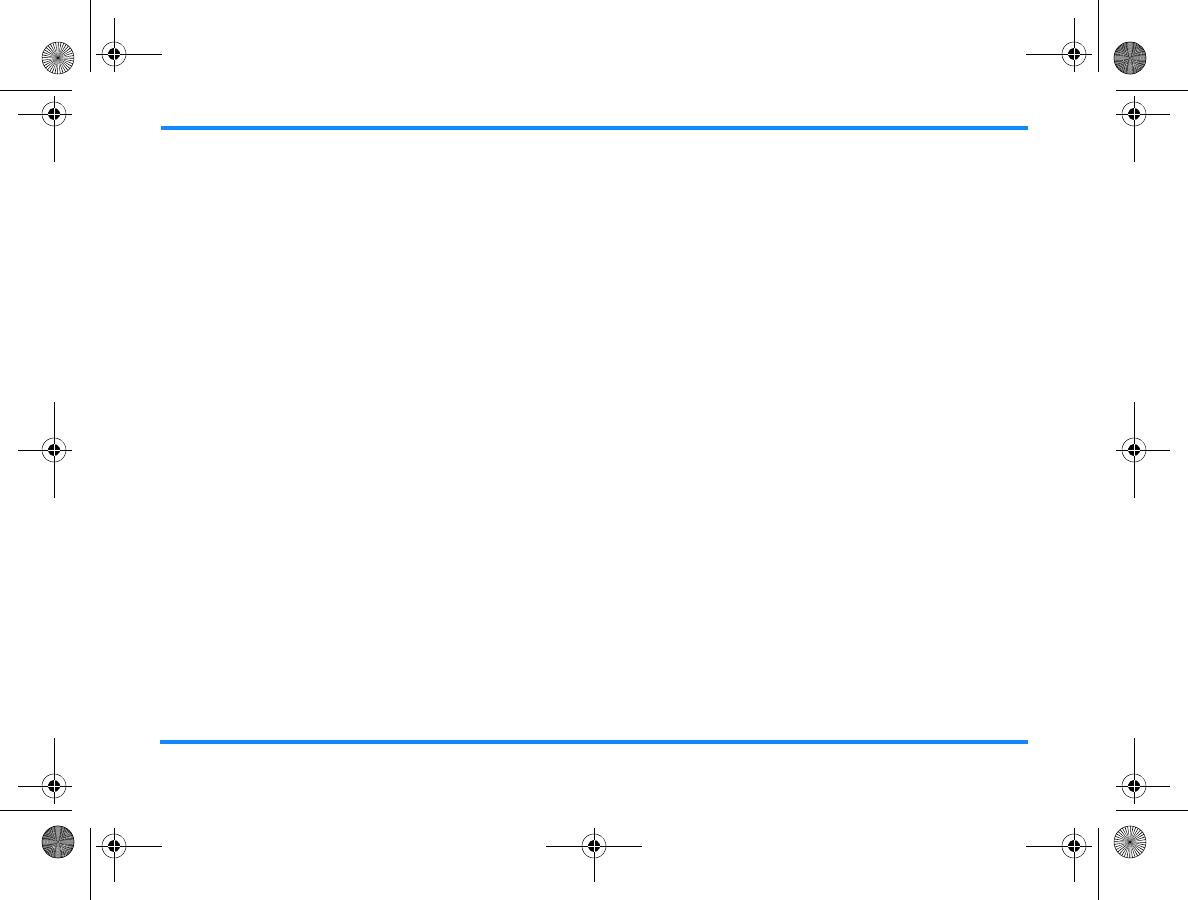
4
Especially About Corded Telephones
ELECTRICAL POWER: The telephone base must be connected to a working electrical
outlet. The electrical outlet should not be controlled by a wall switch. Calls cannot be
made from the handset if the telephone base is unplugged or if the electrical power is
interrupted.
POWER ADAPTER: The power adapter is intended to be correctly oriented in a vertical
or floor mount position. The prongs are not designed to hold the plug in place if it is
plugged into a ceiling, under-the-table or cabinet outlet.
Especially About Telephone Answering Systems
TWO-WAY RECORDING: This unit does not sound warning beeps to let the other party
know that the call is being recorded. To ensure that you are in compliance with any
federal or state regulations regarding recording a telephone call, you should start the
recording process and then inform the other party that you are recording the call.
SAVE THESE INSTRUCTIONS
Syn248 - Safety Information i4_(SB35031).fm Page 4 Friday, August 2, 2013 10:10 AM
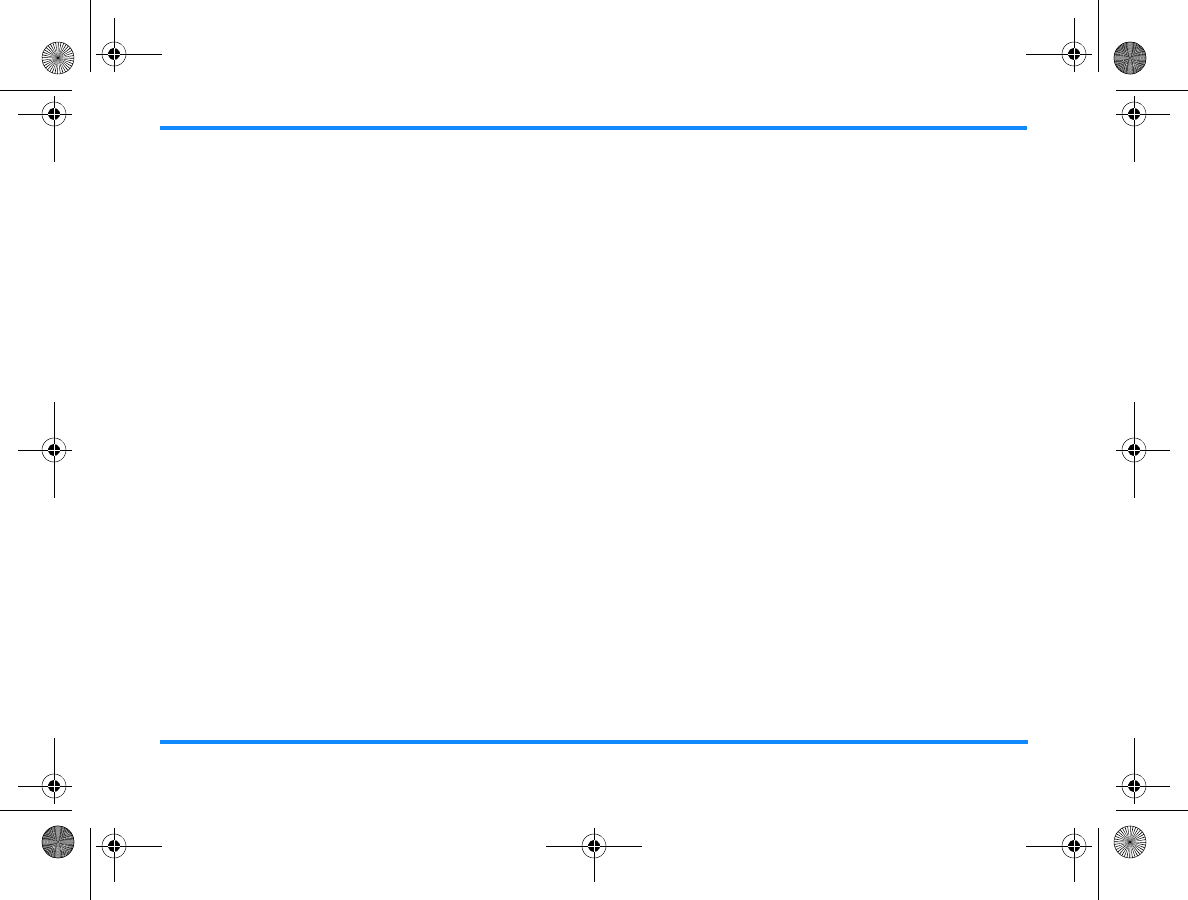
5
FCC, ACTA and IC Information
If this equipment was approved for connection to the telephone network prior to July 23, 2001,
it complies with Part 68 of the Federal Communications Commission (FCC) rules. If the equipment
was approved after that date, it complies with the Part 68 rules and with the Technical
Requirements for Connection of Equipment to the Telephone Network adopted by the
Administrative Council for Terminal Attachments (ACTA). We are required to provide you with the
following information.
1. Product identifier and REN information
The label on the back or bottom of this equipment contains, among other things, an
identifier indicating product approval and the Ringer Equivalence Number (REN). This
information must be provided to your local telephone company upon request. For
equipment approved prior to July 23, 2001, the product identifier is preceded by the
phrase “FCC Reg No.” and the REN is listed separately. For equipment approved after that
date, the product identifier is preceded by “US” and a colon (:). The Analog Gateway has
the REN encoded in the product identifier without a decimal point as the sixth and
seventh characters following the colon. For example, the product identifier
US:AAAEQ03T123XYZ would indicate a REN of 0.3.
The REN is used to determine how many devices you may connect to your telephone line
and still have them ring when you are called. In most, but not all areas, the sum of all
RENS should be five (5.0) or less. You may want to contact your local telephone company
for more information.
Syn248 - Safety Information i4_(SB35031).fm Page 5 Friday, August 2, 2013 10:10 AM
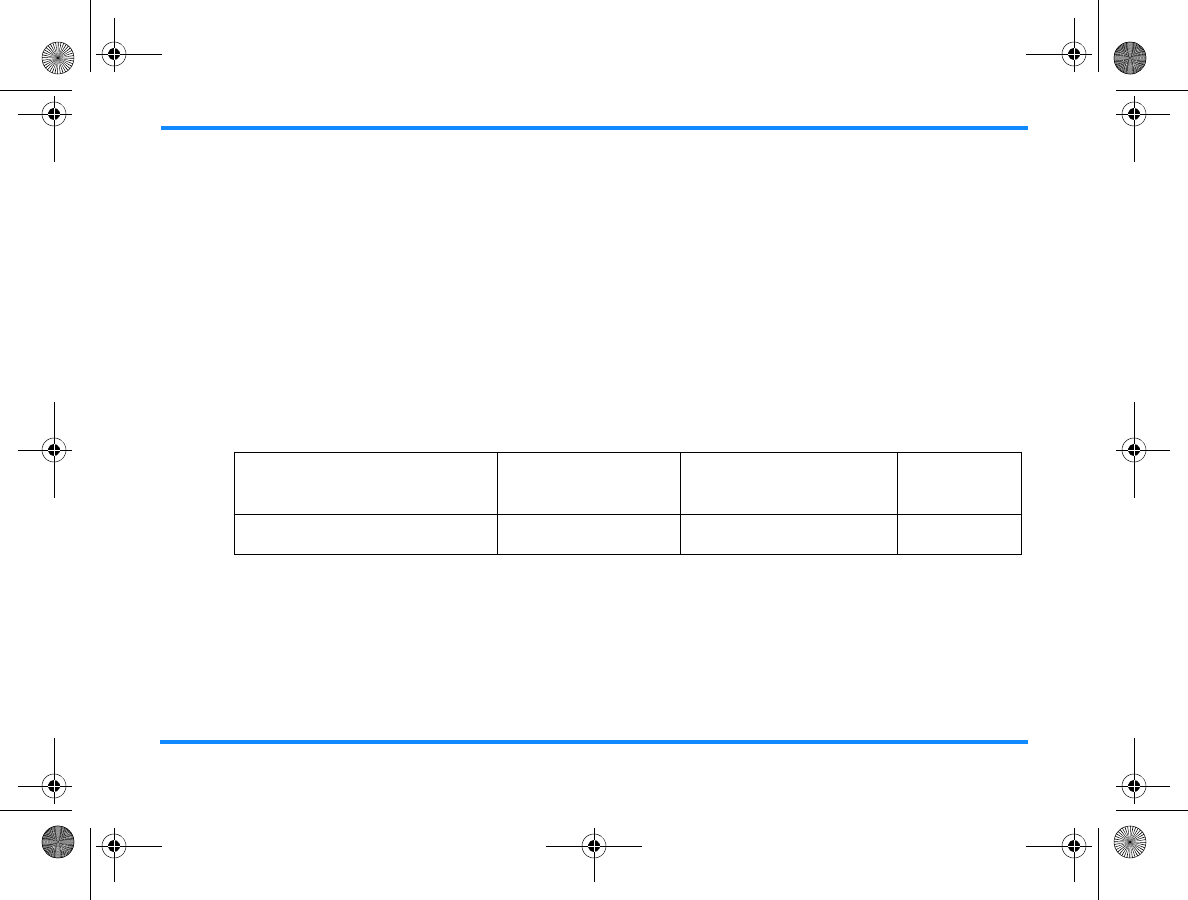
6
2. Connection and use with the nationwide telephone network
The plug and jack used to connect this equipment to the premises wiring and the
telephone network must comply with the applicable Part 68 rules and technical
requirements adopted by ACTA. A compliant telephone cord with modular plug is
provided with this product. It is designed to be connected to a compatible modular jack
that is also compliant. An RJ11 jack should normally be used for connecting to a single
line and an RJ14 jack for two lines, see the installation instructions in the user’s guide.
This equipment may not be used with coin telephone lines or with party lines. If you have
specially wired alarm dialing equipment connected to your telephone line, ensure that
the connection of this equipment does not disable your alarm equipment. If you have
questions about what will disable the alarm equipment, consult your telephone company
or qualified installer.
3. Repair instructions
If this equipment is malfunctioning, it must be unplugged from the modular jack until the
problem has been corrected. Repairs to this telephone equipment can only be made by
the manufacturer or its authorized agents. For repair procedures, follow the instructions
outlined under "5. How do you get warranty service?" on page 15.
Model Number Facility Interface
Code
Service Order Code Jack Type
SB35010 Analog Gateway N/A N/A RJ-11C
Syn248 - Safety Information i4_(SB35031).fm Page 6 Friday, August 2, 2013 10:10 AM
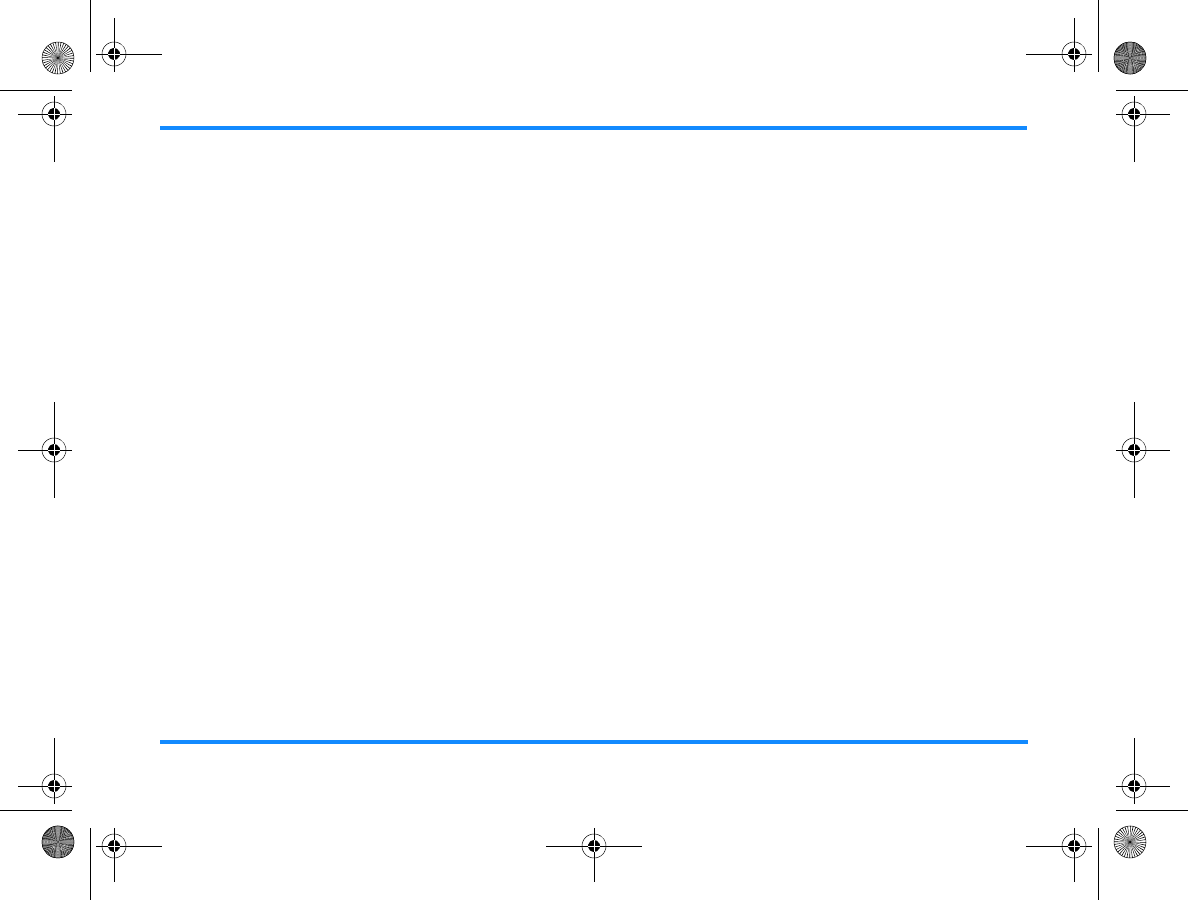
7
4. Rights of the telephone company
If this equipment is causing harm to the telephone network, the telephone company may
temporarily discontinue your telephone service. The telephone company is required to
notify you before interrupting service. If advance notice is not practical, you will be
notified as soon as possible.
You will be given the opportunity to correct the problem and the telephone company is
required to inform you of your right to file a complaint with the FCC. Your telephone
company may make changes in its facilities, equipment, operation, or procedures that
could affect the proper functioning of this product. The telephone company is required
to notify you if such changes are planned.
5. Hearing aid compatibility
If this product is equipped with a corded or cordless handset, it is hearing aid compatible.
6. Programming/testing of emergency numbers
If this product has memory dialing locations, you may choose to store police, fire
department, and emergency medical service telephone numbers in these locations. If you
do store these numbers, please keep three things in mind:
a. We recommend that you also write the telephone number on the directory card (if
applicable), so that you can still dial the emergency number manually if the
memory dialing feature does not work.
Syn248 - Safety Information i4_(SB35031).fm Page 7 Friday, August 2, 2013 10:10 AM
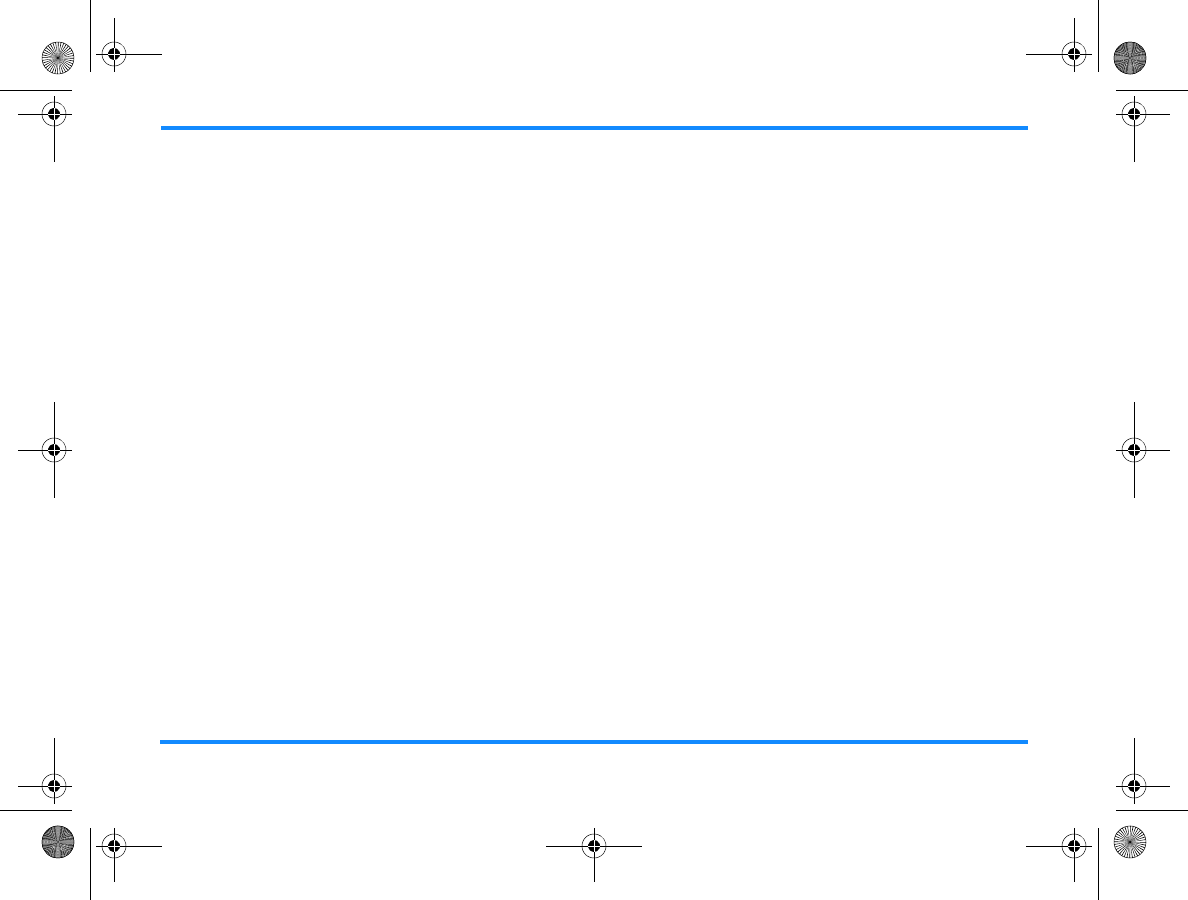
8
b. This feature is provided only as a convenience, and the manufacturer assumes no
responsibility for customer reliance upon the memory feature.
c. Testing the emergency telephone numbers you have stored is not recommended.
However, if you do make a call to an emergency number:
You must remain on the line and briefly explain the reason for the call before
hanging up.
Programming/testing of emergency numbers should be performed during
off-peak hours, such as in the early morning or late evening, when
emergency services are usually less busy.
Syn248 - Safety Information i4_(SB35031).fm Page 8 Friday, August 2, 2013 10:10 AM
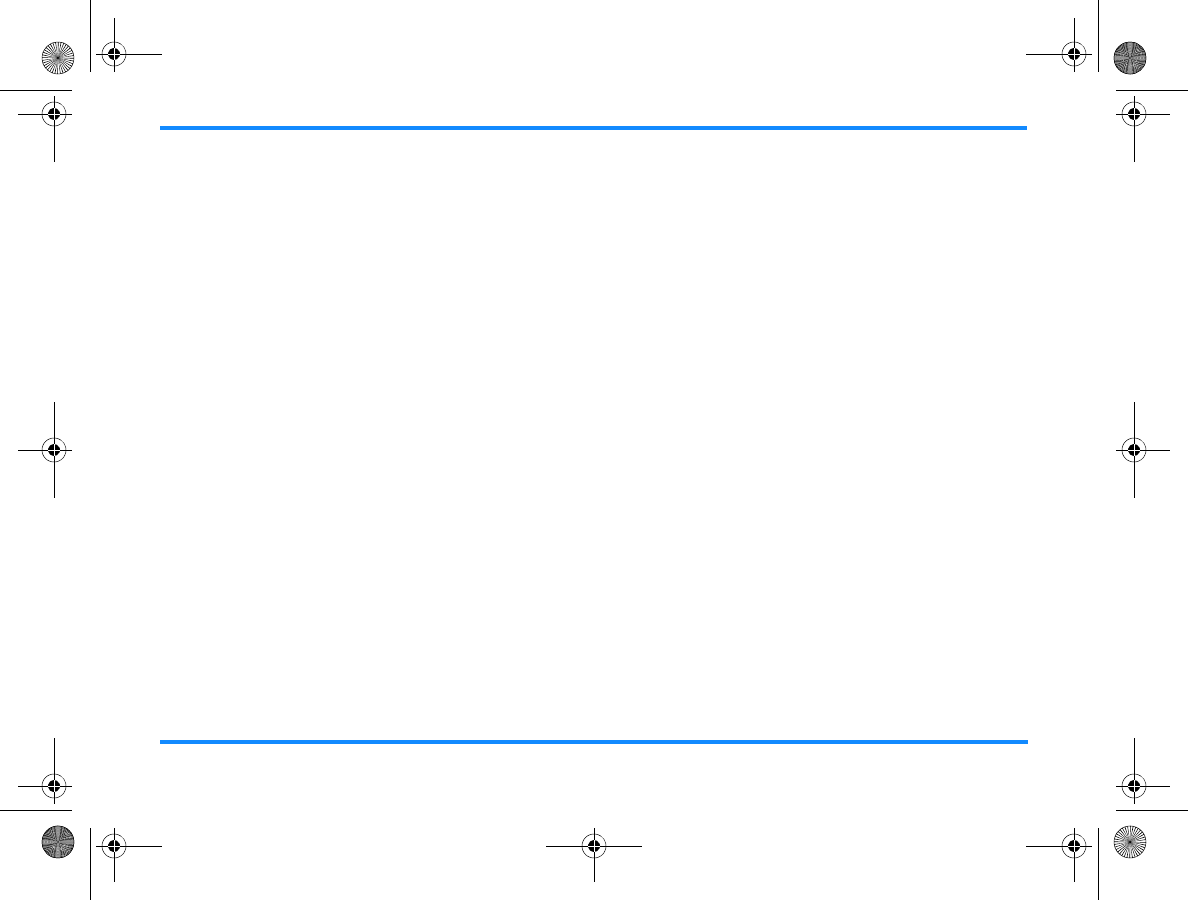
9
Part 15 of FCC Rules
Some telephone equipment generates, uses and can radiate radio frequency energy and, if not
installed and used properly, may cause interference to radio and television reception. The
SB35010 Analog Gateway has been tested and found to meet the standards for a Class B digital
device, as specified in Part 15 of the FCC rules.
These specifications are designed to provide reasonable protection against interference in a
residential installation. However, there is no guarantee that interference will not occur in a
particular installation.
If this product causes interference to radio, VCR or television reception when it is in use, you
might correct the interference with any one or all of these measures:
Where it can be done safely, reorient the receiving radio, VCR, or television antenna.
To the extent possible, relocate the radio, VCR, television, or other receiver to increase
the separation between the equipment and the receiver.
If this telephone product runs on AC power, plug your product into an AC outlet that’s
not on the same circuit as one used by your radio, VCR, or television.
Consult a dealer or an experienced radio/TV technician for help.
Modifications to this product not expressly approved by the manufacturer could void the user’s
authority to operate the equipment.
Syn248 - Safety Information i4_(SB35031).fm Page 9 Friday, August 2, 2013 10:10 AM
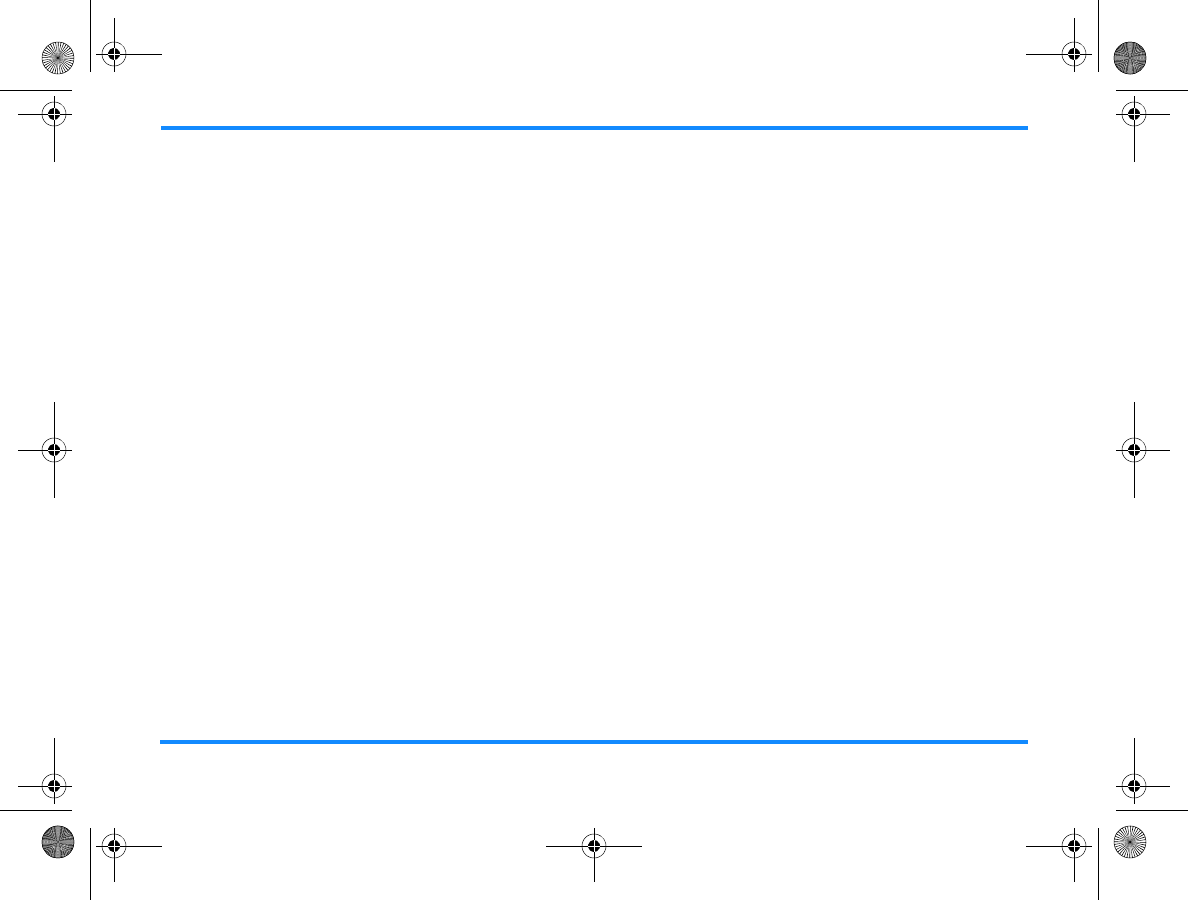
10
The SB35020 Deskset, SB35025 Deskset, and SB35031 Deskset have been tested and found to
comply with the limits for a Class A digital device, pursuant to Part 15 of the FCC rules. These
limits are designed to provide reasonable protection against harmful interference when the
equipment is operated in a commercial environment. This equipment generates, uses and can
radiate radio frequency energy and, if not installed and used in accordance with the instructions,
may cause harmful interference to radio communications. Operation of this equipment in a
residential area is likely to cause harmful interference in which case the user is required to
correct the interference at the user's expense.
This device complies with Part 15 of the FCC rules. Operation is subject to the following two
conditions: (1) This device may not cause harmful interference, and (2) this device must accept
any interference received, including interference that may cause undesired operation.
To ensure safety of users, the FCC has established criteria for the amount of radio frequency
energy that can be safely absorbed by a user or bystander according to the intended use of the
product. This product has been tested and found to comply with the FCC criteria. The Deskset
shall be installed and used such that parts of the user's body other than the hands are maintained
at a distance of approximately 20 cm (8 inches) or more. The handset may be safely held against
the user’s ear. If you choose to use a clipping device, please make sure to use only the supplied
AT&T belt clip.
Syn248 - Safety Information i4_(SB35031).fm Page 10 Friday, August 2, 2013 10:10 AM
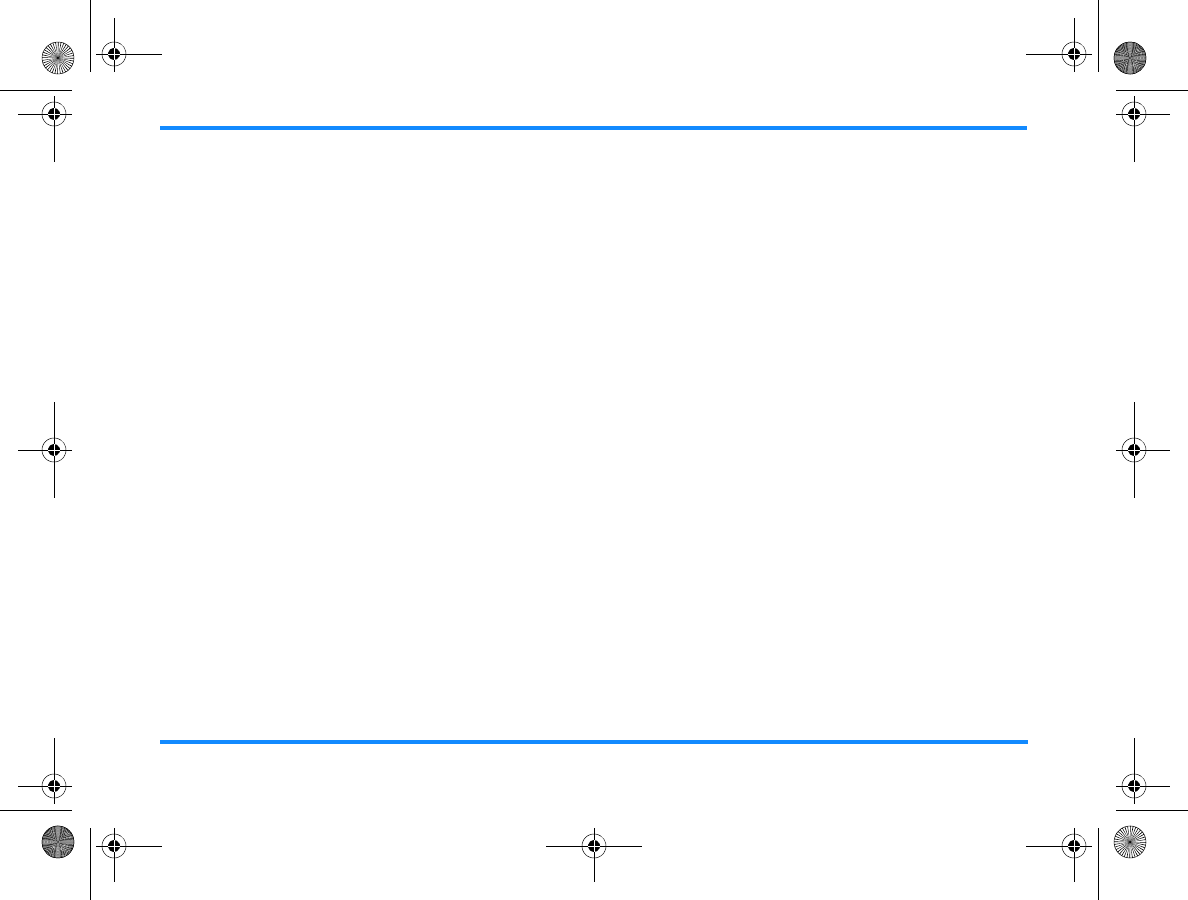
11
Industry Canada
Operation in Canada is subject to the following two conditions: (1) this device may not cause
harmful interference, and (2) this device must accept any interference, including interference that
may cause undesired operation.
Privacy of communications may not be ensured when using this telephone.
The term “IC” before the certification/registration number only signifies that the Industry Canada
technical specifications have been met.
The REN for the SB35010 Analog Gateway is 0.1. The REN is an indication of the maximum
number of devices allowed to be connected to a telephone interface. The termination on an
interface may consist of any combination of devices subject only to the requirement that the sum
of the RENs of all the devices does not exceed five.
This product meets the applicable Industry Canada technical specifications.
Ce produit est conforme aux spécifications techniques d'Industrie Canada.
SB35020 Deskset, SB35025 Deskset, and SB35031 Deskset—This Class A digital apparatus
complies with Canadian requirement: CAN ICES-3 (A)/NMB-3(A).
SB35010 Analog Gateway—This Class B digital apparatus complies with Canadian requirement:
CAN ICES-3 (B)/NMB-3(B).
Syn248 - Safety Information i4_(SB35031).fm Page 11 Friday, August 2, 2013 10:10 AM
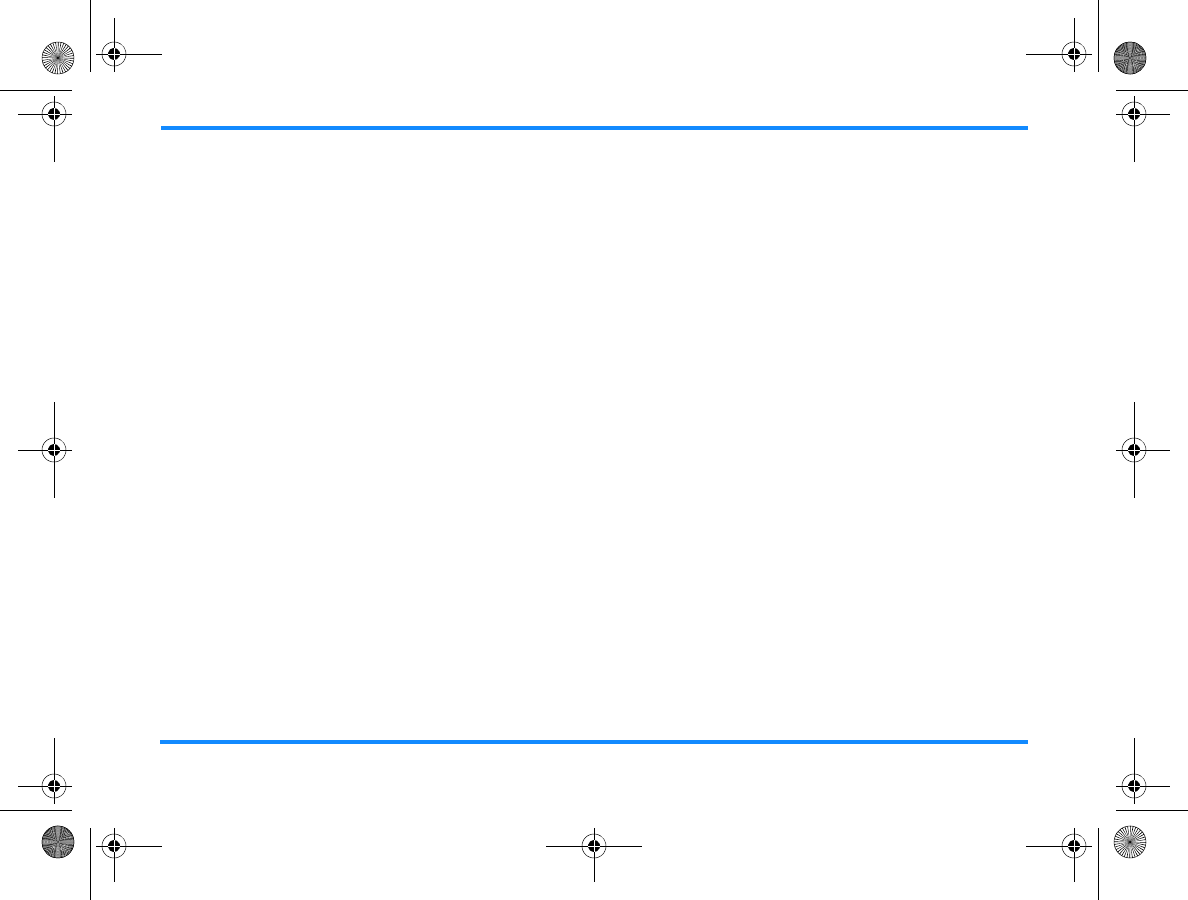
12
Limited Warranty
The AT&T brand is used under license. For customer service, repair, replacement, or warranty
service, and all questions about this product, contact the person who installed your system. If
your installer is unavailable, visit our website at www.telephones.att.com/smb or call
1 (888) 386-2006. In Canada, call 1 (888) 469-2005.
1. What does this Limited Warranty cover?
The manufacturer of this AT&T-branded product warrants to the holder of a valid proof of
purchase (“CONSUMER” or “you”) that the product and all accessories provided in the sales
package (“PRODUCT”) are free from defects in material and workmanship, pursuant to the
following terms and conditions, when installed and used normally and in accordance with the
PRODUCT operating instructions. This Limited Warranty extends only to the CONSUMER for
products purchased and used in the United States of America and Canada.
2. What will be done if the PRODUCT is not free from defects in
materials and workmanship during the Limited Warranty period
(“materially defective PRODUCT”)?
During the Limited Warranty period, the manufacturer’s authorized service representative will
repair or replace a materially defective PRODUCT at the manufacturer’s option and without
charge. If the manufacturer repairs the PRODUCT, they may use new or refurbished replacement
Syn248 - Safety Information i4_(SB35031).fm Page 12 Friday, August 2, 2013 10:10 AM
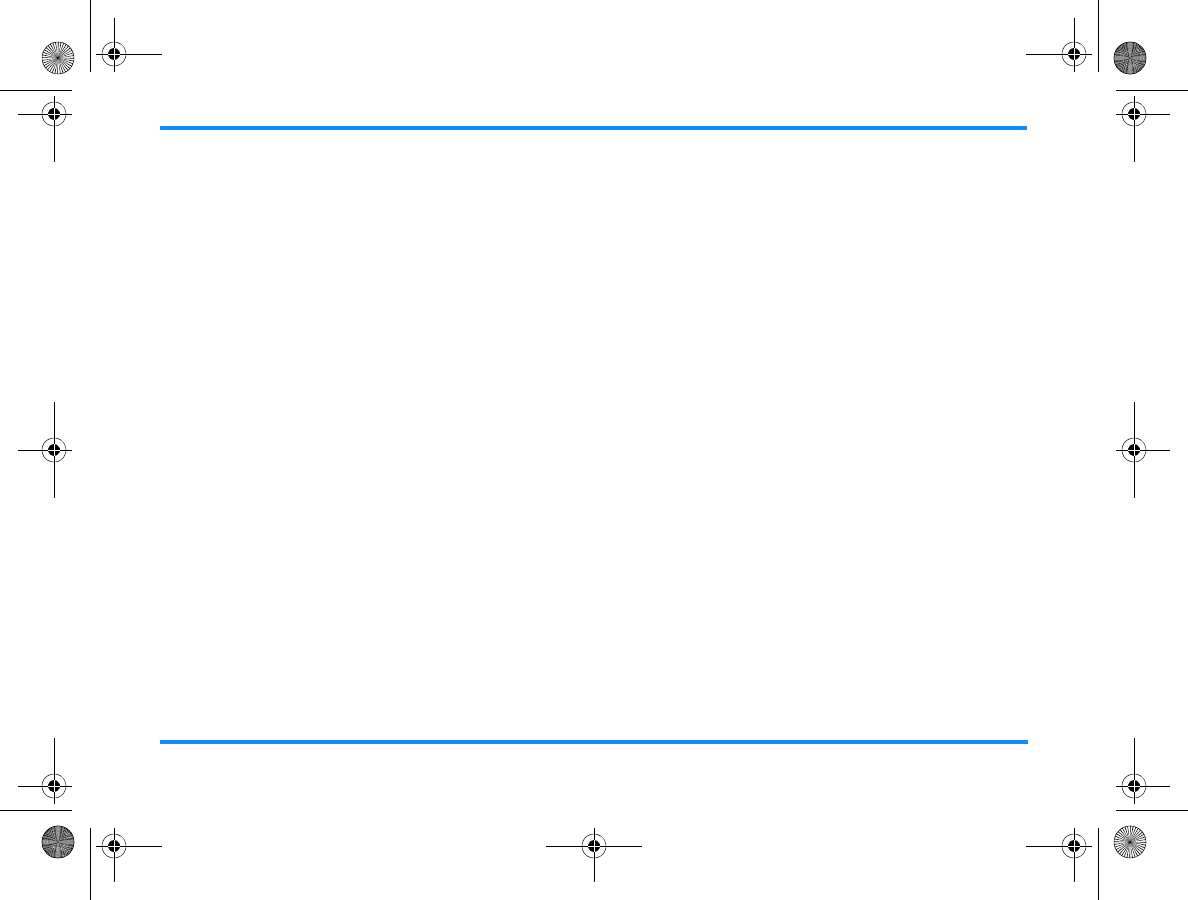
13
parts. If the manufacturer chooses to replace the PRODUCT, they may replace it with a new or
refurbished PRODUCT of the same or similar design. The manufacturer will retain the defective
parts, modules, or equipment. Repair or replacement of the PRODUCT at the manufacturer’s
option is your exclusive remedy. The manufacturer will return the repaired or replacement
products to you in working condition. You should expect the repair or replacement to take
approximately 30 days.
3. How long is the Limited Warranty period?
The Limited Warranty period for Syn248TM Products extends for TWO (2) YEARS from the date of
purchase. If the manufacturer repairs or replaces a materially defective PRODUCT under the
terms of this Limited Warranty, this Limited Warranty also applies to the repaired or replacement
PRODUCT for a period of either (a) 90 days from the date the repaired or replacement PRODUCT
is shipped to you, or (b) the time remaining on the original two-year Limited Warranty; whichever
is longer.
Syn248 - Safety Information i4_(SB35031).fm Page 13 Friday, August 2, 2013 10:10 AM
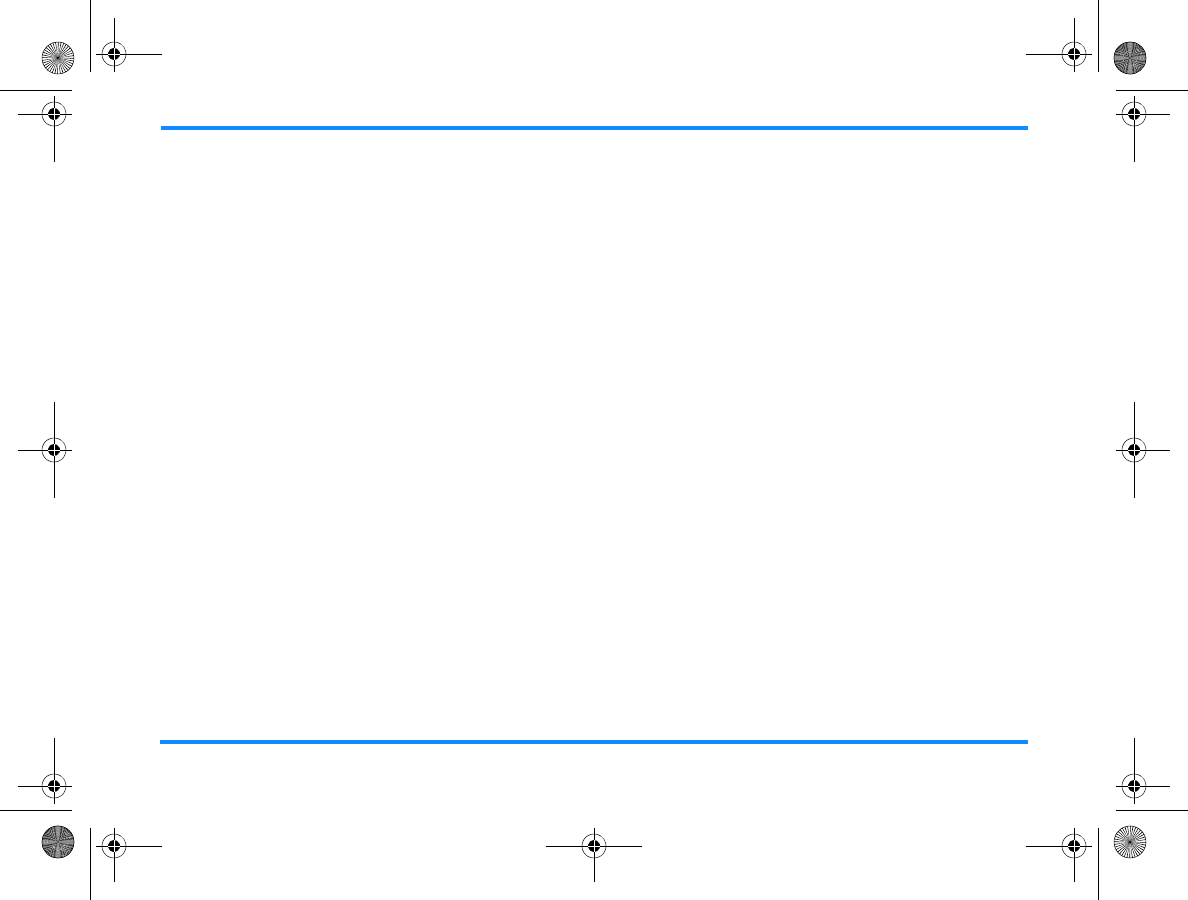
14
4. What is not covered by this Limited Warranty?
This Limited Warranty does not cover:
PRODUCT that has been subjected to misuse, accident, shipping or other physical
damage, improper installation, abnormal operation or handling, neglect, fire, water or
other liquid intrusion; or
PRODUCT that has been damaged due to repair, alteration or modification by anyone
other than an authorized service representative of the manufacturer; or
PRODUCT to the extent that the problem experienced is caused by signal conditions,
network reliability or cable or antenna systems; or
PRODUCT to the extent that the problem is caused by use with non-AT&T accessories;
PRODUCT whose warranty/quality stickers, PRODUCT serial number plates or electronic
serial numbers have been removed, altered or rendered illegible; or
PRODUCT purchased, used, serviced or shipped for repair from outside the United States
of America or Canada, or used for commercial or institutional purposes (including but not
limited to products used for rental purposes); or
PRODUCT returned without a valid proof of purchase (see "6. What must you return with
the PRODUCT to get warranty service?" on page 16); or
Charges for installation or setup, adjustment of customer controls, and installation or
repair.
Syn248 - Safety Information i4_(SB35031).fm Page 14 Friday, August 2, 2013 10:10 AM
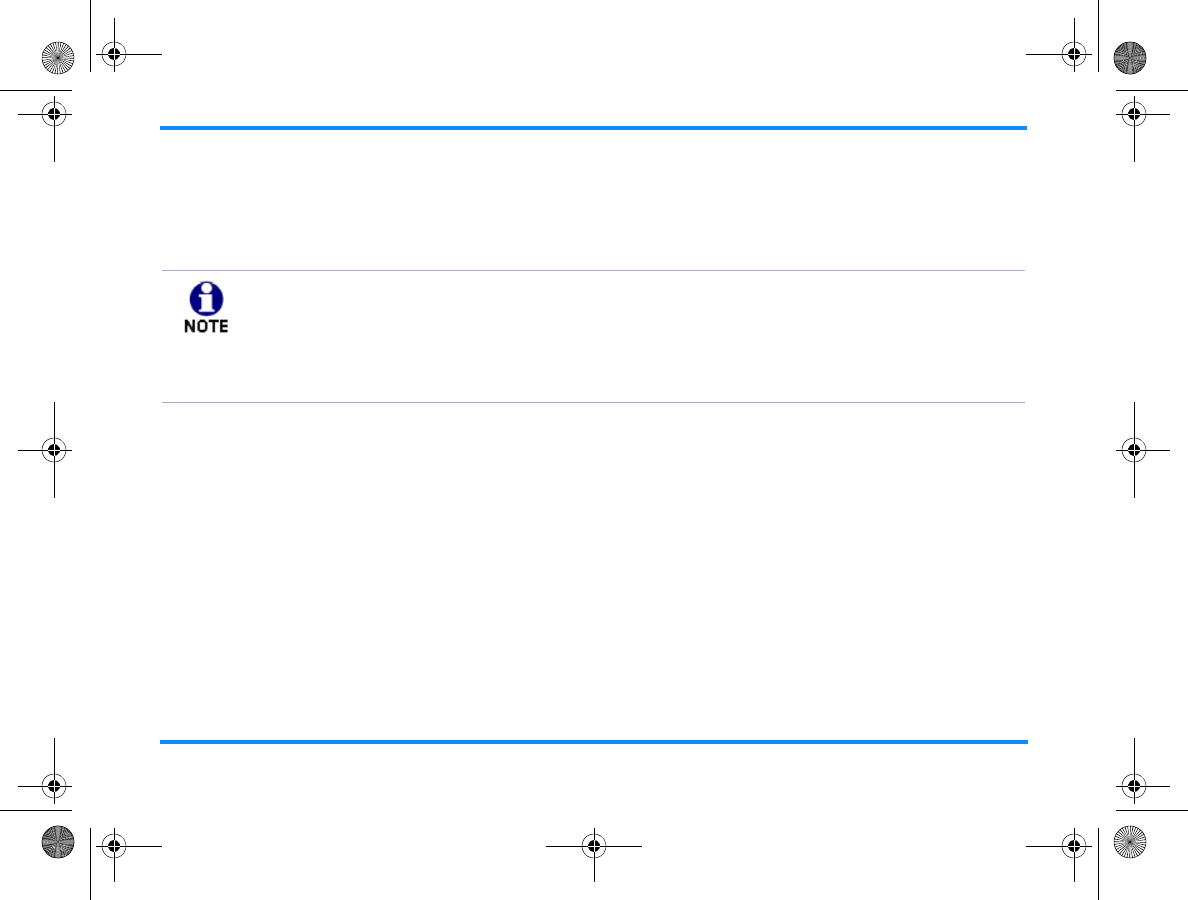
15
5. How do you get warranty service?
To obtain warranty service, contact the person who installed your system. If your installer is
unavailable, visit our website at www.telephones.att.com/smb or call 1 (888) 386-
2006. In Canada, call 1 (888) 469-2005.
The manufacturer will return repaired or replaced PRODUCT under this Limited Warranty.
Transportation, delivery or handling charges are prepaid. The manufacturer assumes no risk for
damage or loss of the PRODUCT in transit. If the PRODUCT failure is not covered by this Limited
Warranty, or proof of purchase does not meet the terms of this Limited Warranty, the
manufacturer will notify you and request that you authorize the cost of repair prior to any
further repair activity. You must pay for the cost of repair and return shipping costs for the repair
of products not covered by this Limited Warranty.
Before calling for service, please review the user’s guide. A check of the PRODUCT's
controls and features may save you a service call. Except as provided by applicable law,
you assume the risk of loss or damage during transit and transportation and are
responsible for delivery or handling charges incurred in the transport of the PRODUCT
to the service location.
Syn248 - Safety Information i4_(SB35031).fm Page 15 Friday, August 2, 2013 10:10 AM
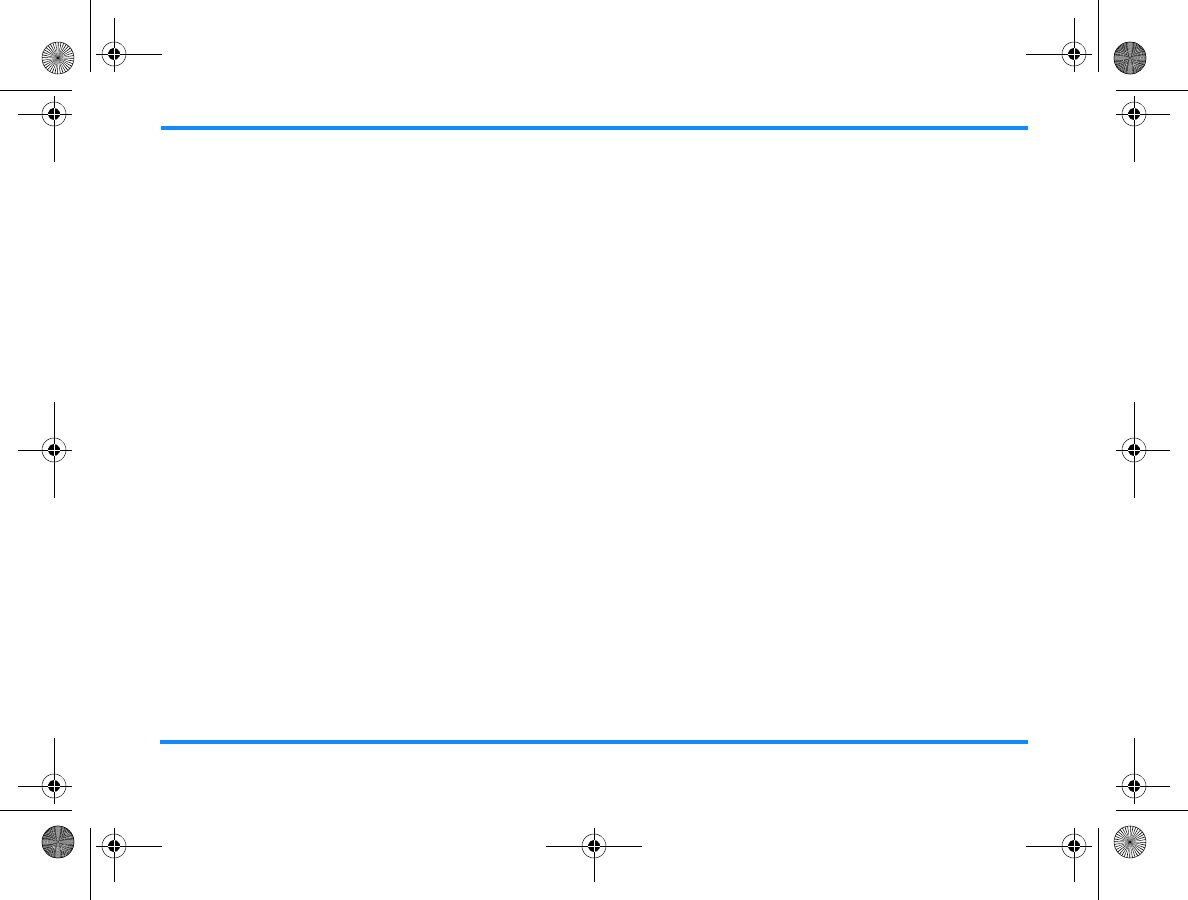
16
6. What must you return with the PRODUCT to get warranty
service?
You must:
1. Return the entire original package and contents, including the PRODUCT, to the service
location along with a description of the malfunction or difficulty; and
2. Include a “valid proof of purchase” (sales receipt) identifying the PRODUCT purchased
(PRODUCT model) and the date of purchase or receipt; and
3. Provide your name, complete and correct mailing address and telephone number.
7. Other limitations
Unless you purchase an Extended Warranty, this Limited Warranty is the complete and exclusive
agreement between you and the manufacturer of this AT&T branded PRODUCT. It supersedes all
other written or oral communications related to this PRODUCT. The Limited Warranty exclusively
describes all of the manufacturer’s responsibilities regarding the PRODUCT. There are no other
express warranties. No one is authorized to make modifications to this Limited Warranty and you
should not rely on any such modification.
State/Provincial Law Rights: This Limited Warranty gives you specific legal rights, and you may
also have other rights which vary from state to state or province to province.
Syn248 - Safety Information i4_(SB35031).fm Page 16 Friday, August 2, 2013 10:10 AM
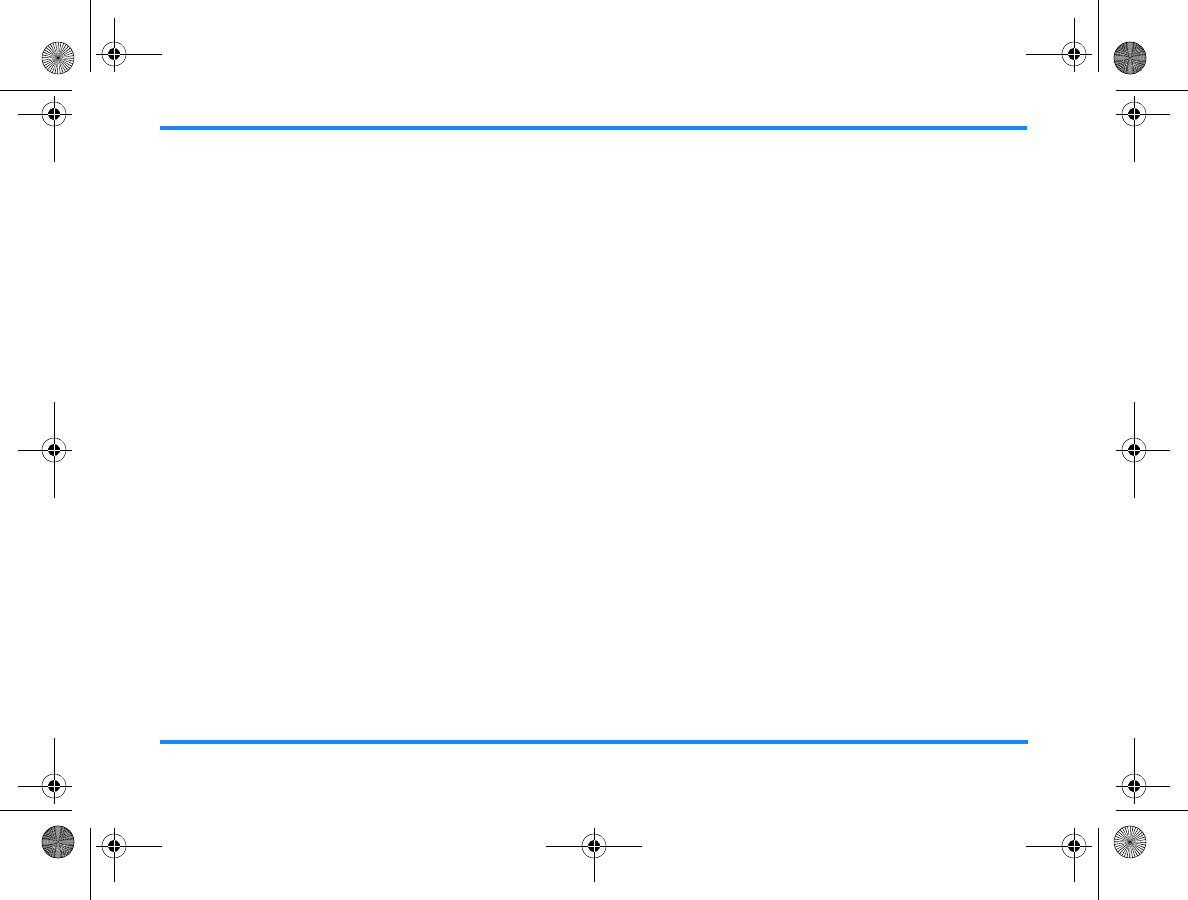
17
Limitations: Implied warranties, including those of fitness for a particular purpose and
merchantability (an unwritten warranty that the PRODUCT is fit for ordinary use), are limited to
one year from date of purchase. Some states/provinces do not allow limitations on how long an
implied warranty lasts, so the above limitation may not apply to you. In no event shall the
manufacturer be liable for any indirect, special, incidental, consequential or similar damages
(including, but not limited to lost profits or revenue, inability to use the PRODUCT or other
associated equipment, the cost of substitute equipment, and claims by third parties) resulting
from the use of this PRODUCT. Some states/provinces do not allow the exclusion or limitation of
incidental or consequential damages, so the above limitation or exclusion may not apply to you.
Please retain your original sales receipt as proof of purchase.
8. Extended Warranty
At its sole discretion, Advanced American Telephones may offer an extended warranty program,
which you may purchase for additional warranty protection.
Syn248 - Safety Information i4_(SB35031).fm Page 17 Friday, August 2, 2013 10:10 AM

Syn248 - Safety Information i4_(SB35031).fm Page 18 Friday, August 2, 2013 10:10 AM

Syn248 - Safety Information i4_(SB35031).fm Page 19 Friday, August 2, 2013 10:10 AM
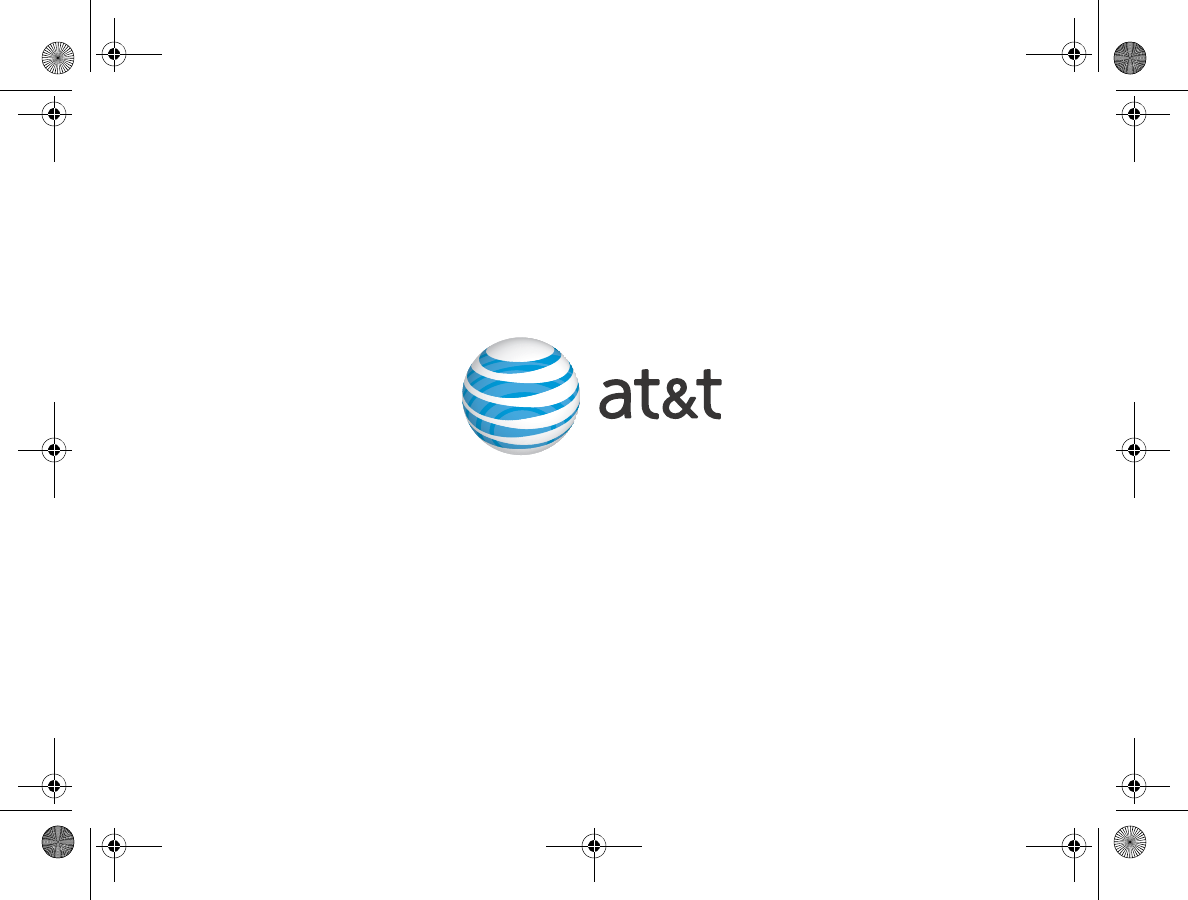
www.telephones.att.com/smb
© 2012–2013 Advanced American Telephones. All Rights Reserved.
AT&T and the AT&T logo are trademarks of AT&T Intellectual Property
licensed to Advanced American Telephones, San Antonio, TX 78219.
Syn248® is a registered trademark of Advanced American Telephones.
Printed in China Issue 4 8/13
Syn248 - Safety Information i4_(SB35031).fm Page 20 Friday, August 2, 2013 10:10 AM

